Top 100 NBA Players of 2020

Sports Illustrated is proud to offer our list of the Top 100 NBA players of 2020, an exhaustive exercise that seeks to define who will be the league's best players in the 2019-20 season.
Given the wide variety of candidates involved and the deep analytical resources available, no single, definitive criterion was used to form this list. Instead, rankings were assigned based on a fluid combination of subjective assessment and objective data. This list is an attempt to evaluate each player in a vacuum, independent of his current team context as much as possible. We’re not evaluating Kemba Walker as a Celtic, but as a concept. A player's prospects beyond the 2019-20 season do not factor into our ranking process.
Injuries and injury risks are an inevitable component of this judgment. That proved especially painful this season, as Kevin Durant,DeMarcus Cousins, and John Wall—three fixtures of the Top 100—did not make the cut specifically as a result of their long-term injuries.
Past performance (postseason included) weighed heavily in our assessment, with a skew toward the recent. Incoming rookies were not included. A predictive element also came into play with the anticipated improvement of certain younger players, as well as the possible decline of aging veterans. Salary was not taken into consideration. Otherwise, players were ordered based on their complete games. You can read more here on the limitations of this kind of ranking. To see our 25 biggest snubs from this year’s list, click here.
Please feel free to look back to SI.com’s Top 100 Players of 2019, 2018, 2017, 2016, 2015 and 2014. This is the first version of the Top 100 to be made without Ben Golliver (@BenGolliver), now of the Washington Post, who was instrumental in establishing the values of this ranking. Feel free to send him any disagreements you may have concerning a list he had nothing to do with.
(A special thanks, as always, to those resources that make this list possible: Basketball-Reference, NBA.com, ESPN.com, Cleaning the Glass, and Synergy Sports.)
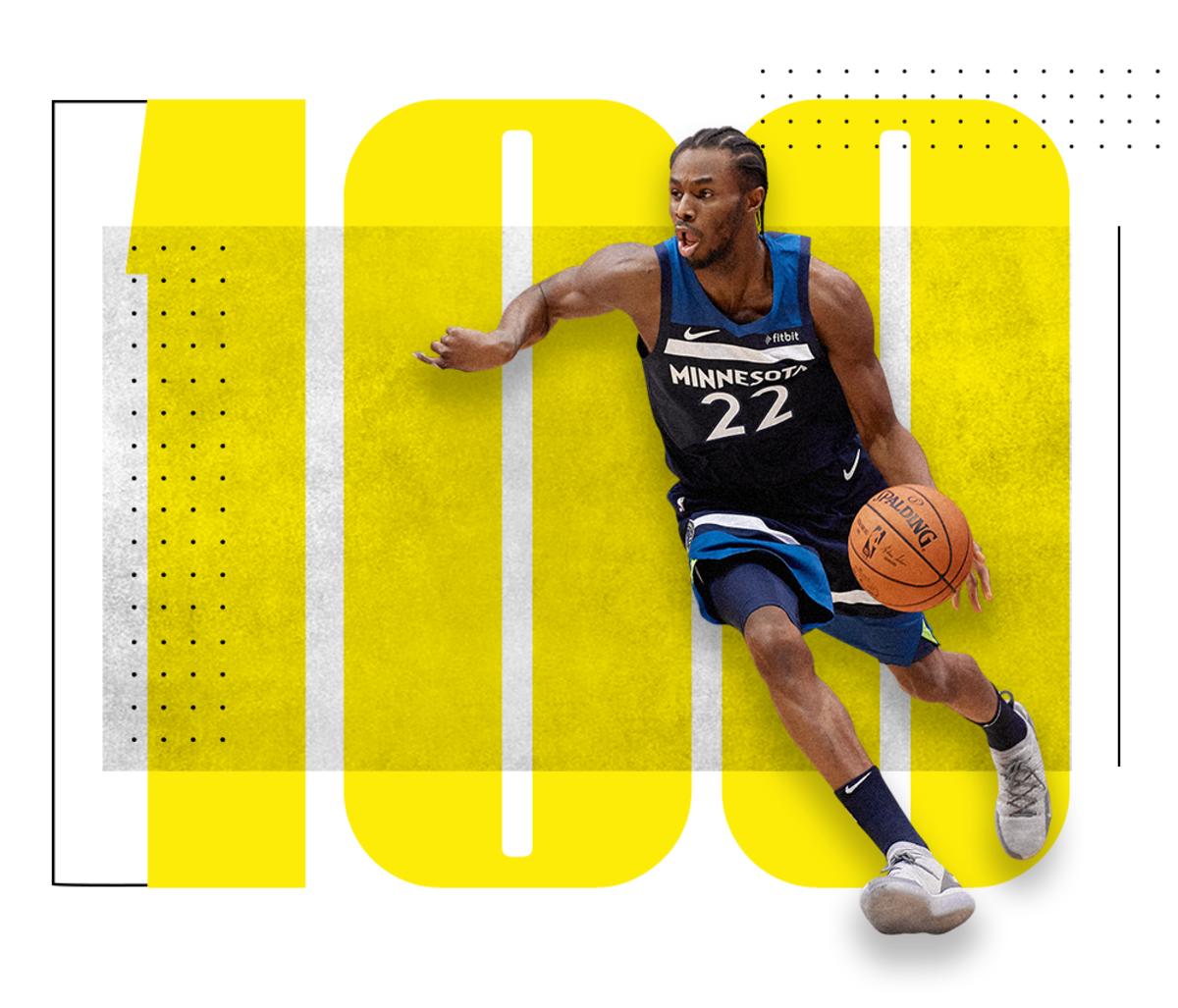
Andrew Wiggins
Minnesota Timberwolves
Andrew Wiggins scores, but to what end? One of the great sins of the box score is the way it conflates points with value. Scoring is an obvious, irrefutable good. Yet what goes unsaid in every scoring total is that the shots that made it possible could have gone to better use. This has always been part of the problem with Wiggins, who can get you 18 points per game but so often settles on his way there. Last season, there were 48 players in the NBA that averaged 18 points or more. Forty-seven of them were more efficient than Wiggins (49% true shooting), which effectively negates the point of him getting so many shots in the first place. If a player is going to rebound as infrequently, make plays as unevenly, and defend as inconsistently as Wiggins, they should be a better scorer than he is. The only thing keeping him in the Top 100 mix is the possibility for change. Even after five NBA seasons, Wiggins is just 24 years old. An upturn combined with a more mindful approach could give his career the reboot it so badly needs.
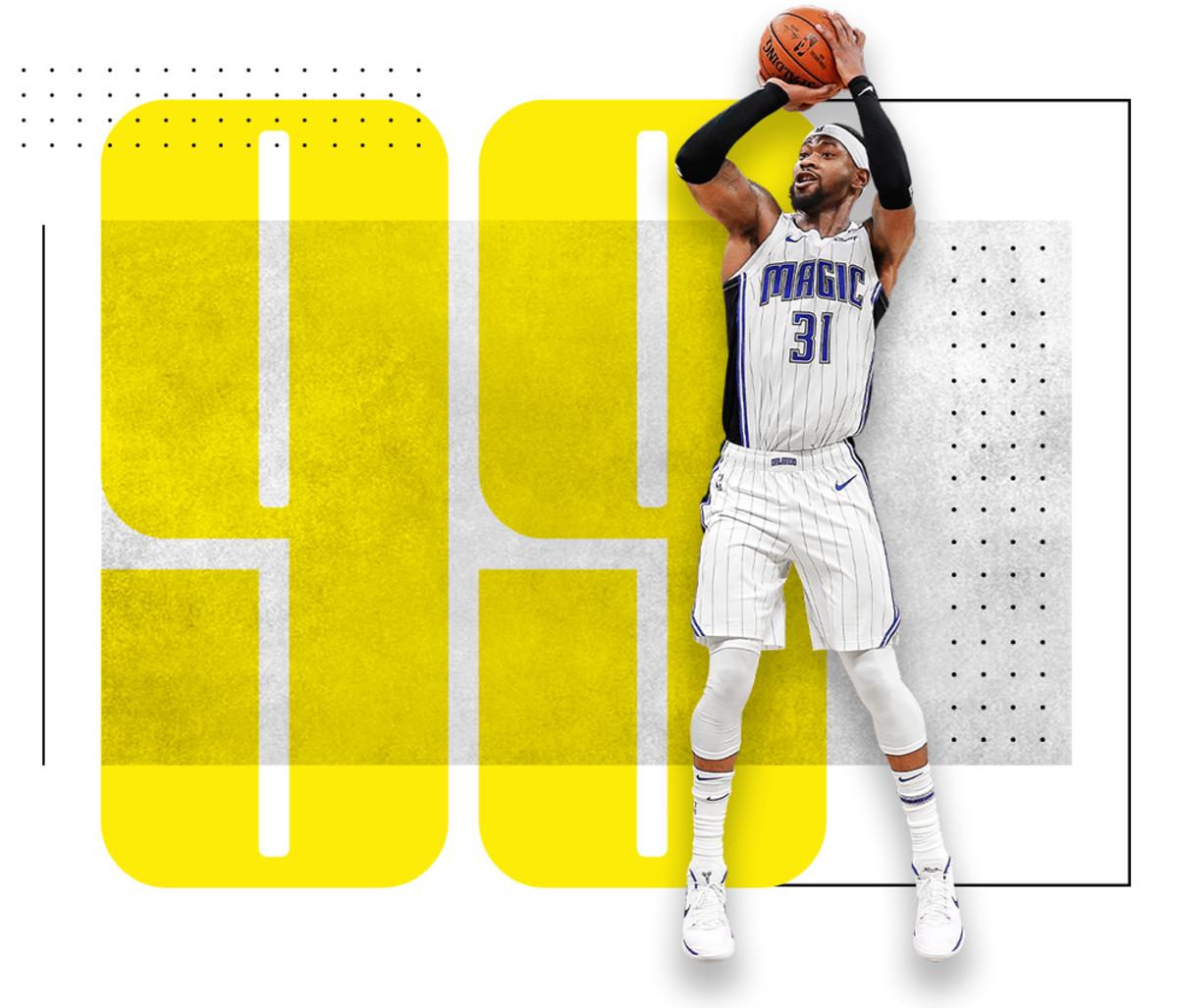
Terrence Ross
Orlando Magic
Terrence Ross has found a comfortable role as a microwave scorer for a Magic team that desperately needs him. It’s both an essential role and a protected one; by allowing Ross to come off the bench, he’s given more freedom to work and less friction to work against. The character of a team’s offense is different once a few starters step off the floor. The caliber of the opposing defense changes when working against their second- or third-best perimeter defender rather than their first. Coming in off the bench is nothing new. This level of latitude, however, is. Last season, Ross took about as many shots per minute as DeMar DeRozan or Jamal Murray, and in the process, found the best version of himself: brash but not self-destructive, dynamic but not overbearing. Ross is a creative, 6’7” wing who shot 38% from three last season and competes defensively. Every team could use a player like that, but perhaps Orlando most of all.
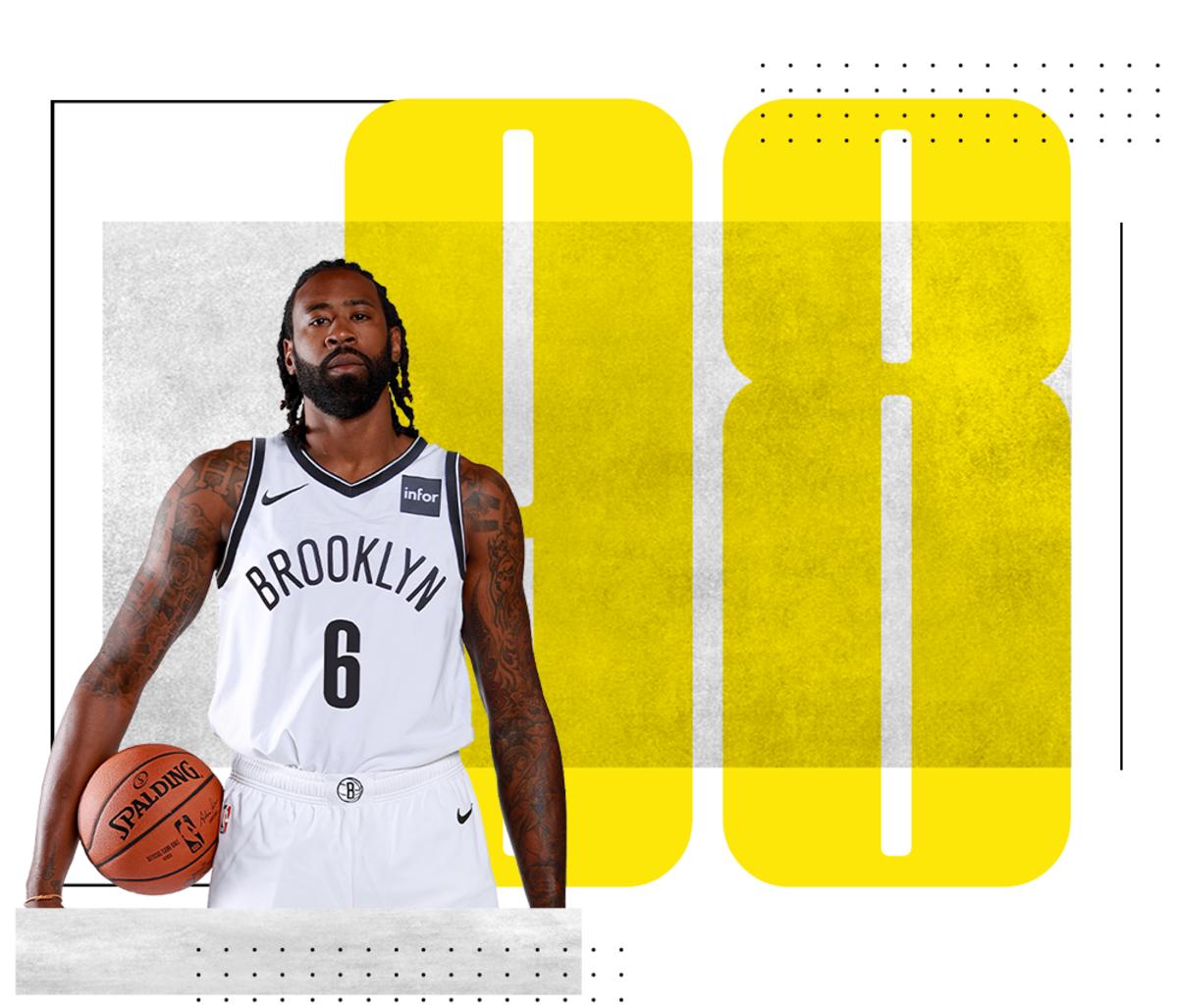
DeAndre Jordan
Brooklyn Nets
DeAndre Jordan, who was thrice selected for All-NBA honors and twice named an all-league defender, did not try very hard with the Knicks last season. He didn’t seem to care about defense so much as the appearance of defense, or rebounding so much as the tabulation of rebounds. After years of minding his role, Jordan tried his hand as a playmaker. Yet for every slick feed to a backdoor cutter, there were three that bounced into the hands of defenders or skipped out of bounds. Trying new things is healthy. Those new things just come at a cost when a center without much playmaking experience decides to channel his inner Nikola Jokić. If Jordan gets back to doing what he does best—starting with playing actual, attentive defense rather than chilling and chasing blocks—then he could outperform this ranking. Yet even if he does, he’s still a 31-year-old center reliant on athleticism in a league that’s strategically unkind to players of his kind.
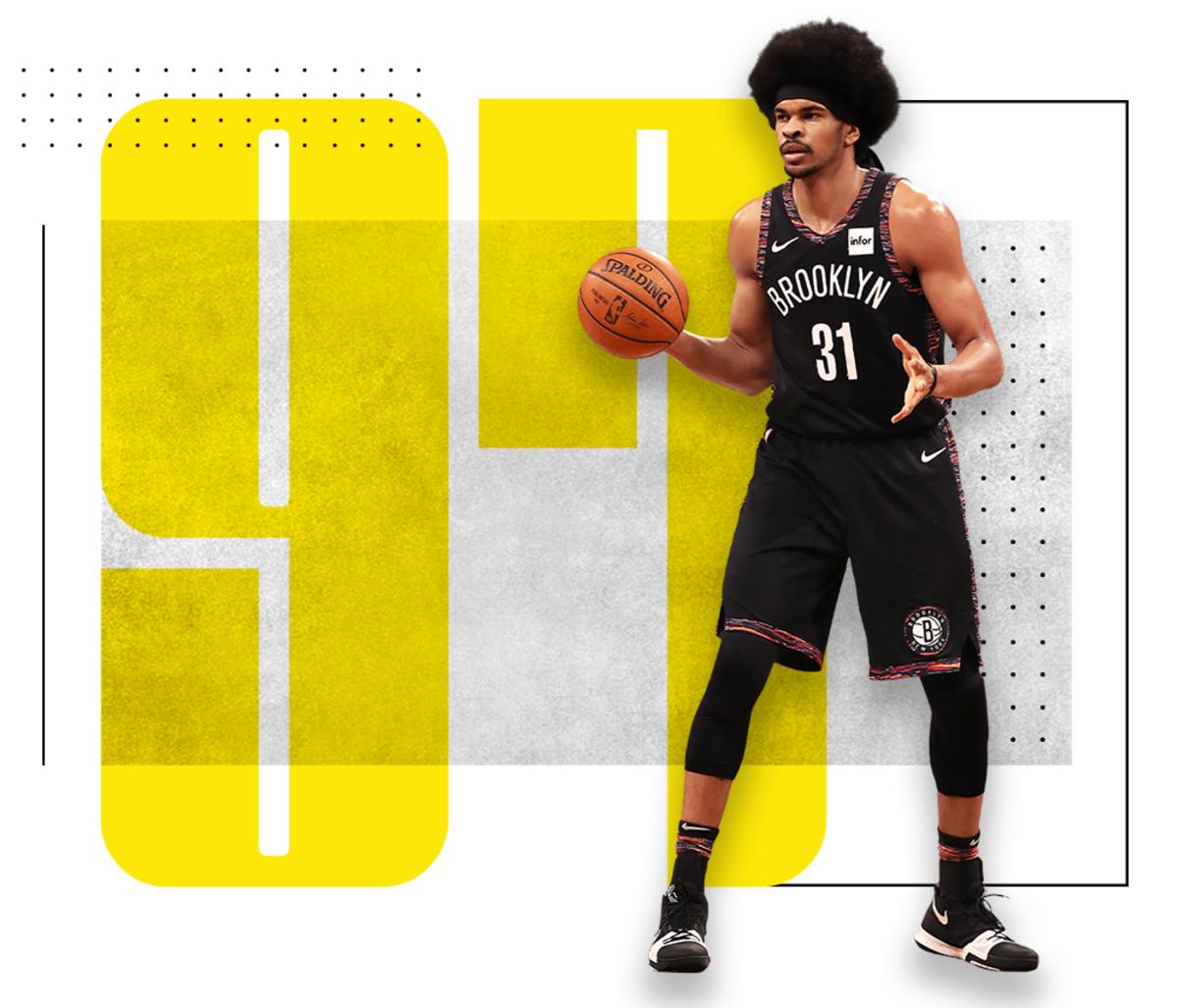
Jarrett Allen
Brooklyn Nets
There is a humility to working as a rim-running center, in knowing that the most important work you do will almost always go unnoticed. What makes Jarrett Allen special is that he keeps doing it without getting antsy and without complaint. Actual deference to the team is rarer than you might think. Most players are willing to make certain concessions so long as they’re still allowed some other freedoms. Allen lives in a more rigid box, in part because the Nets needed an interior balance for all their perimeter shooters. So he started games but sometimes didn’t finish them. He ran his lanes and found his spots regardless of whether he was getting touches. He dropped against pick-and-rolls and put his 9’2’’ standing reach in between the ball-handler and the basket. And, in the end, he averaged 15 points, 12 rebounds, and two blocks per 36 minutes as the starting center for a playoff team. There are obvious stylistic limitations to playing the way Allen does; some were on display in the Nets’ first-round loss. There are also self-evident advantages in leaning on a big, shot-swatting center to make the most of a basic script.
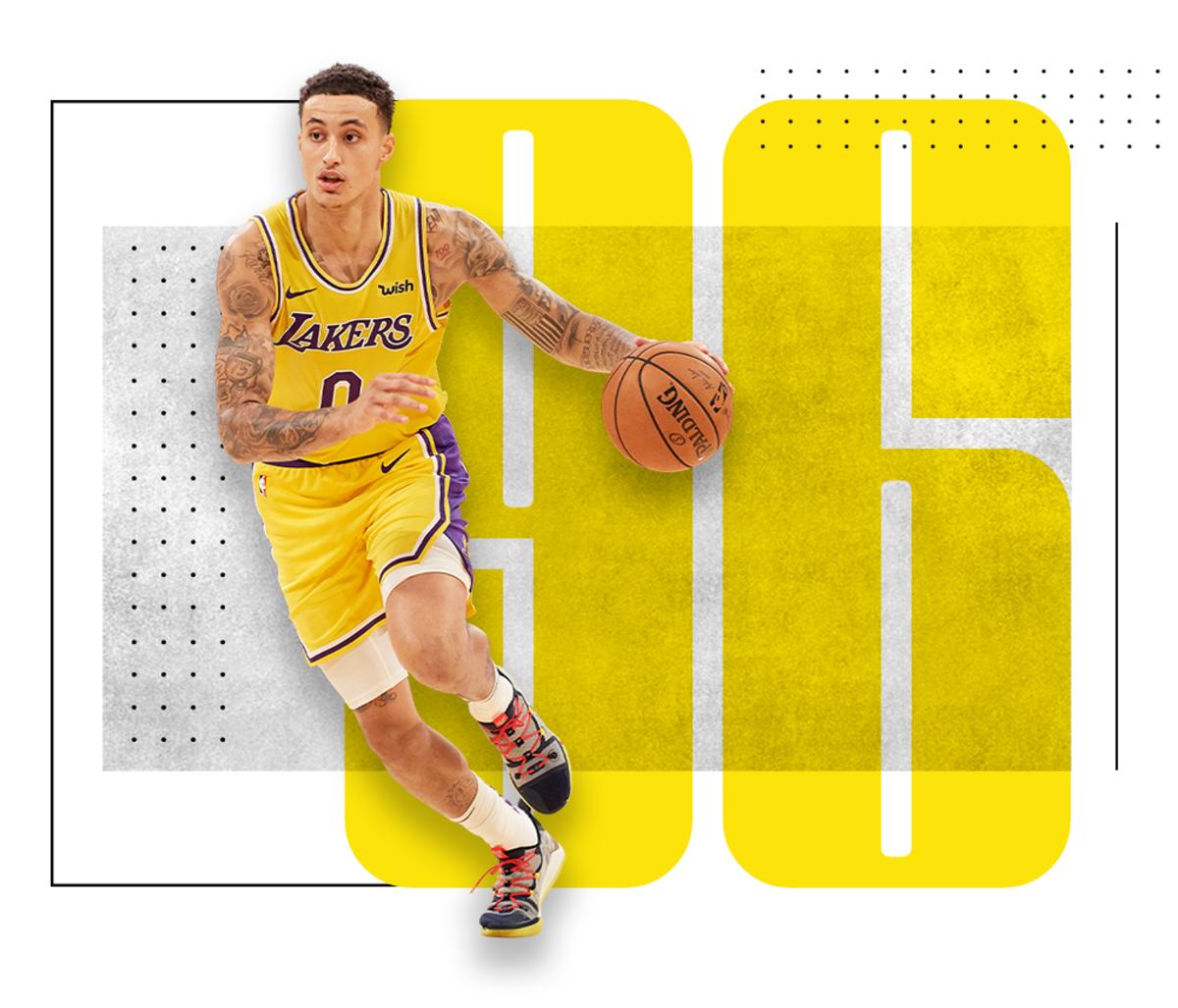
Kyle Kuzma
Los Angeles Lakers
It remains to be seen whether Kyle Kuzma, a 30% three-point shooter last season, can really stretch the floor. What’s more credible is the way he scores from the seams. There is an improvisational bent to Kuzma that lends itself to the rapidly evolving nature of an NBA game. When he sets out with a live dribble, Kuzma might have an idea of where he wants to go or what move he wants to use, but there’s no fixed course. Everything is adaptable, in part because Kuzma can get to a wide array of runners and leaners whenever needed. He’s not really a post-up player or strictly a spot-up player. He does his best work in the spaces in between by making the most of what a defense gives him, which bodes well for a season in the Lakers’ positional clutter. This is both a feature and a bug. Were Kuzma a more defined scorer, it might be easier to build systems and lineups around him. Instead, he’s best suited getting buckets in a less scripted—and thus less focal—role.
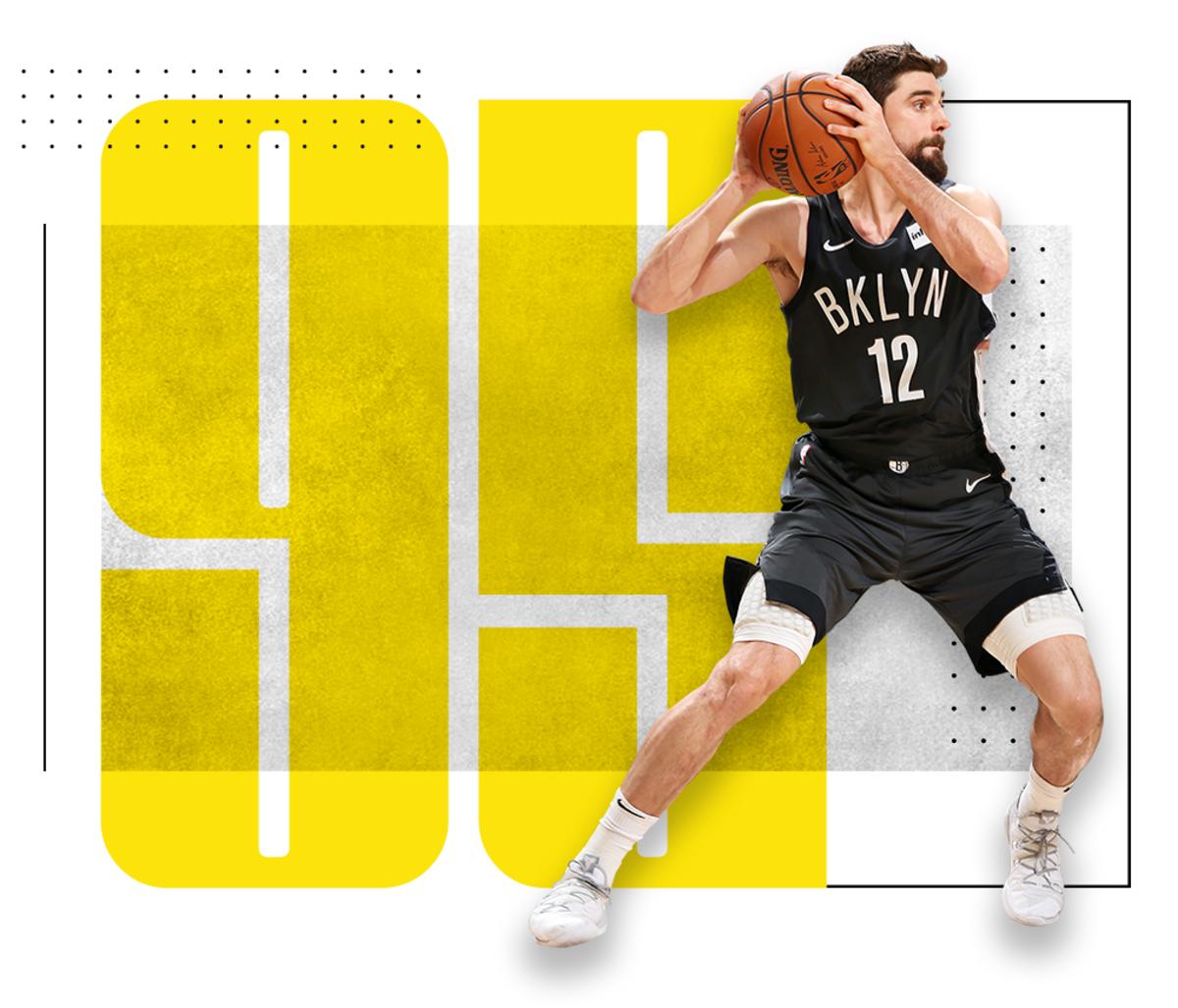
Joe Harris
Brooklyn Nets
Over the past three years, Joe Harris has emerged from the fringes of the league to make his claim as one of its best shooters—and thus an inherently valuable player. Harris is a sort of proto-Redick, only taller and more bearded. Both have led the league in three-point shooting with nearly identical percentages. Both leverage the threat of their shooting to give a possession momentum, in large part by sprinting through actions that require a defense to respond. Both are somewhat limited defensively, but reasonably responsible within a team role. Yet Harris, by virtue of being seven years younger, is still learning the nuances of all he can do on offense and what he must do to survive on defense. The difference between the two isn’t that one is a better shooter than the other. It’s that one is still learning the game and figuring out where he fits in.
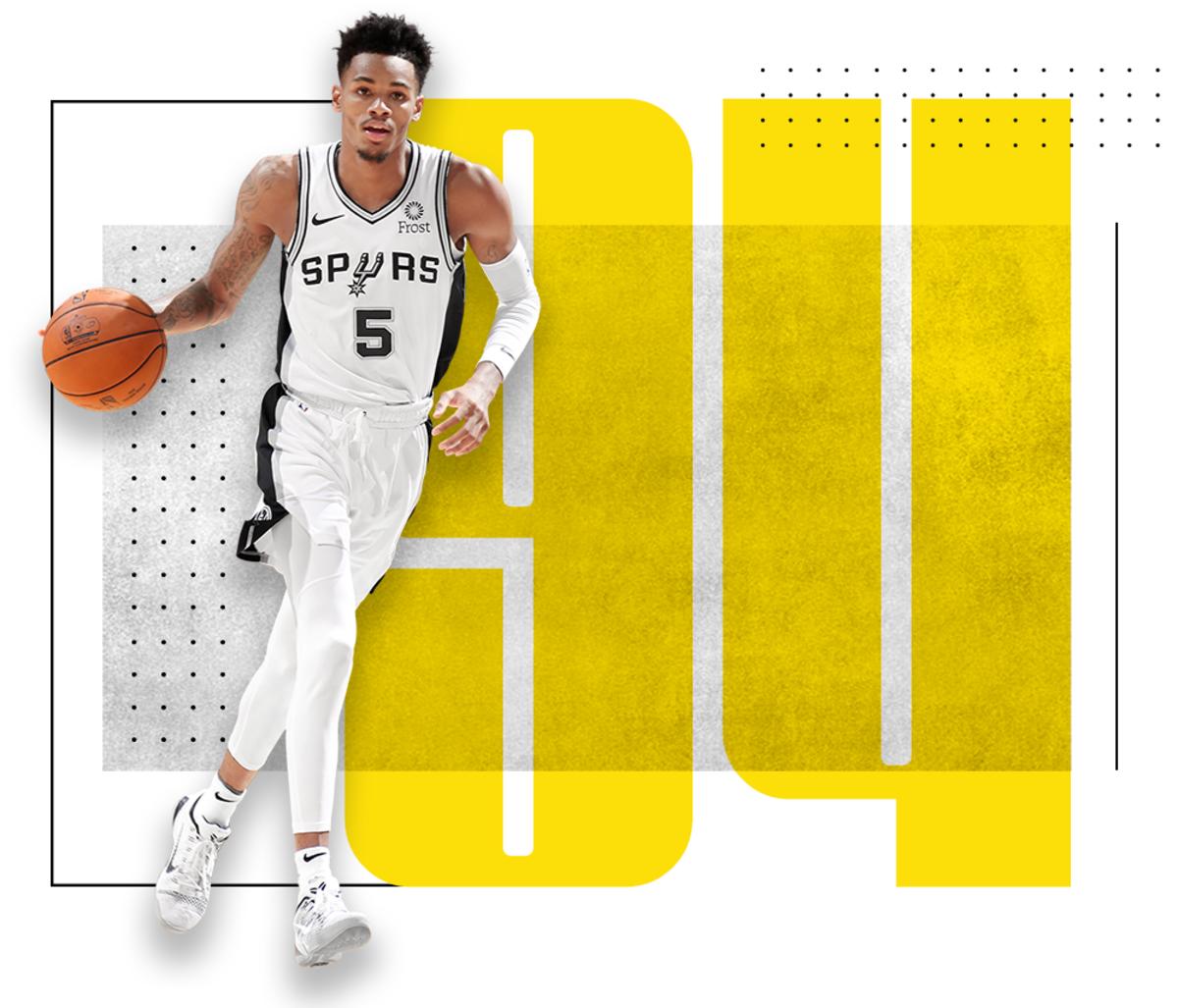
Dejounte Murray
San Antonio Spurs
A breakout candidate from the 2018-19 season finally gets his shot. Dejounte Murray didn’t play a single game for the Spurs last year due to a torn ACL, but the factors that made him a player of intrigue have held strong. Even after a lost year, Murray will start his third NBA season at just 23 years old. Already he has an All-Defense selection under his belt for the way he devoured opposing ball-handlers. Whether that’s repeatable on a surgically repaired knee remains to be seen, though the outlook is promising for a young player given a full year off to recover. At this stage, Murray’s offense is all upside, which is to say most of it is still embryonic. If his jumper comes along, Murray’s agility would be even more devastating. If he can rein in his handle, Murray should be able to get anywhere he wants to go. There’s a lot left to do, but on a timeline and trajectory that feel plausible.
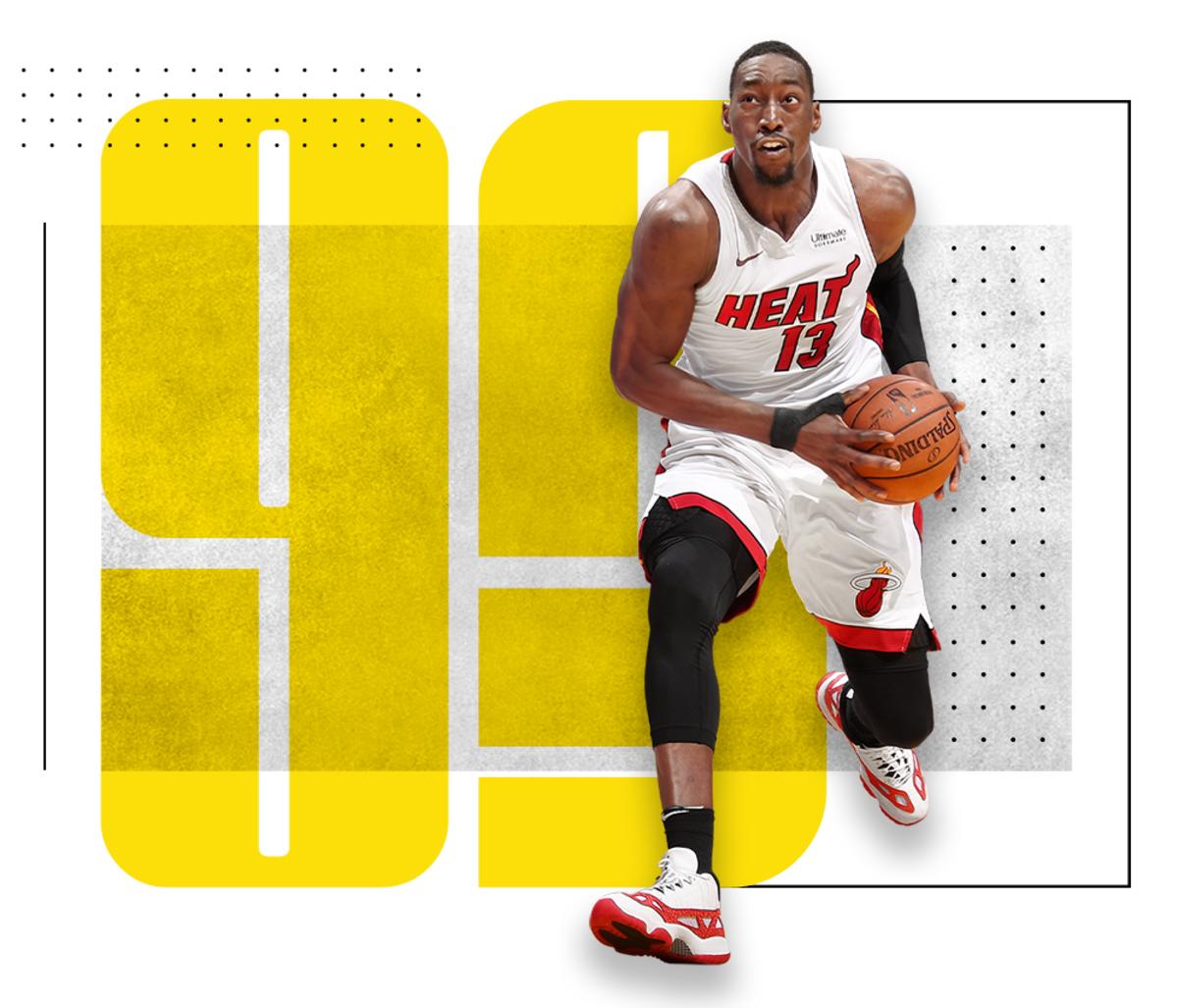
Bam Adebayo
Miami Heat
Blessed be the end-to-end centers, who speed up fast breaks rather than slow them down. Bam Adebayo is at his best when he runs and he knows it. Better yet: he styles his game accordingly, whether that means running a lane for his teammates or bringing the ball up himself. The whole thing makes for quite a show. Adebayo has more speed, bounce, and body control than a 6’10” player rightly should. All he needs is a cohesive way to bring all those attributes together on an even more frequent basis. Once he really harnesses the force of his shot-blocking, he could anchor one of the NBA’s top defenses. If Adebayo puts his ball skills to best use, he could be a key finisher and facilitator for a high-functioning offense. These things take time. In the interim, Adebayo is 22 years old and already a lot to contend with.
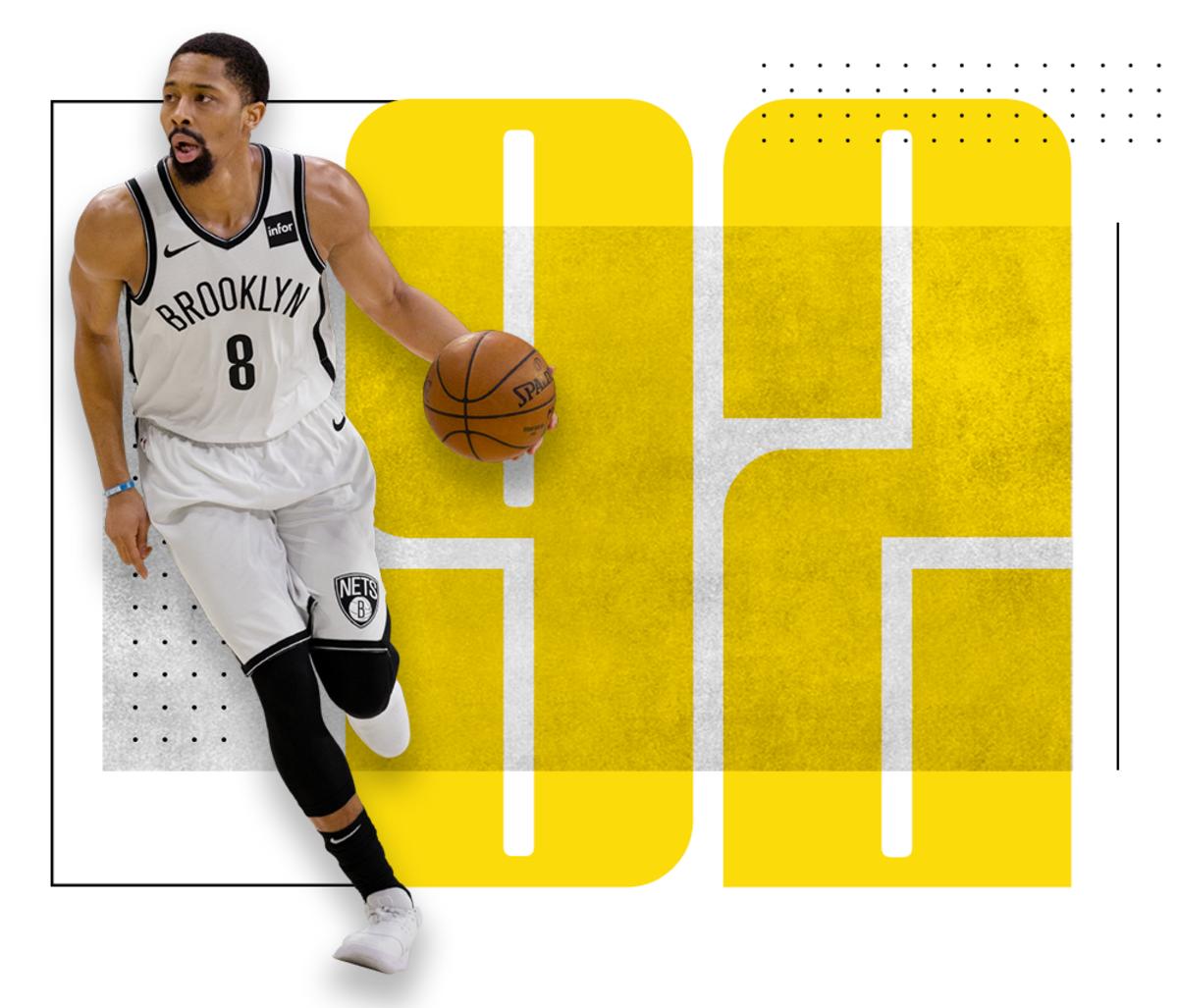
Spencer Dinwiddie
Brooklyn Nets
The catalyst behind Spencer Dinwiddie’s success is his genuinely excellent isolation game, which is loaded with quirks to keep defenders from anticipating where he’ll go next. It helps that, at 6’6”, Dinwiddie doesn’t need all that much space to fire up a jumper. A slight step back or to the side would do just fine, forcing a defender to dance with every move Dinwiddie makes. Considering how much of his work is done strictly on the perimeter, he draws an uncanny number of fouls—less an indicator of pure speed than off-the-dribble ingenuity. By skill set, Dinwiddie is probably more CJ McCollum than Damian Lillard, in that he’s better suited to punching-up an offense with scoring than running one full time. It’s not as if he can’t generate good looks for others. That work just might not come as naturally as when Dinwiddie creates for himself.
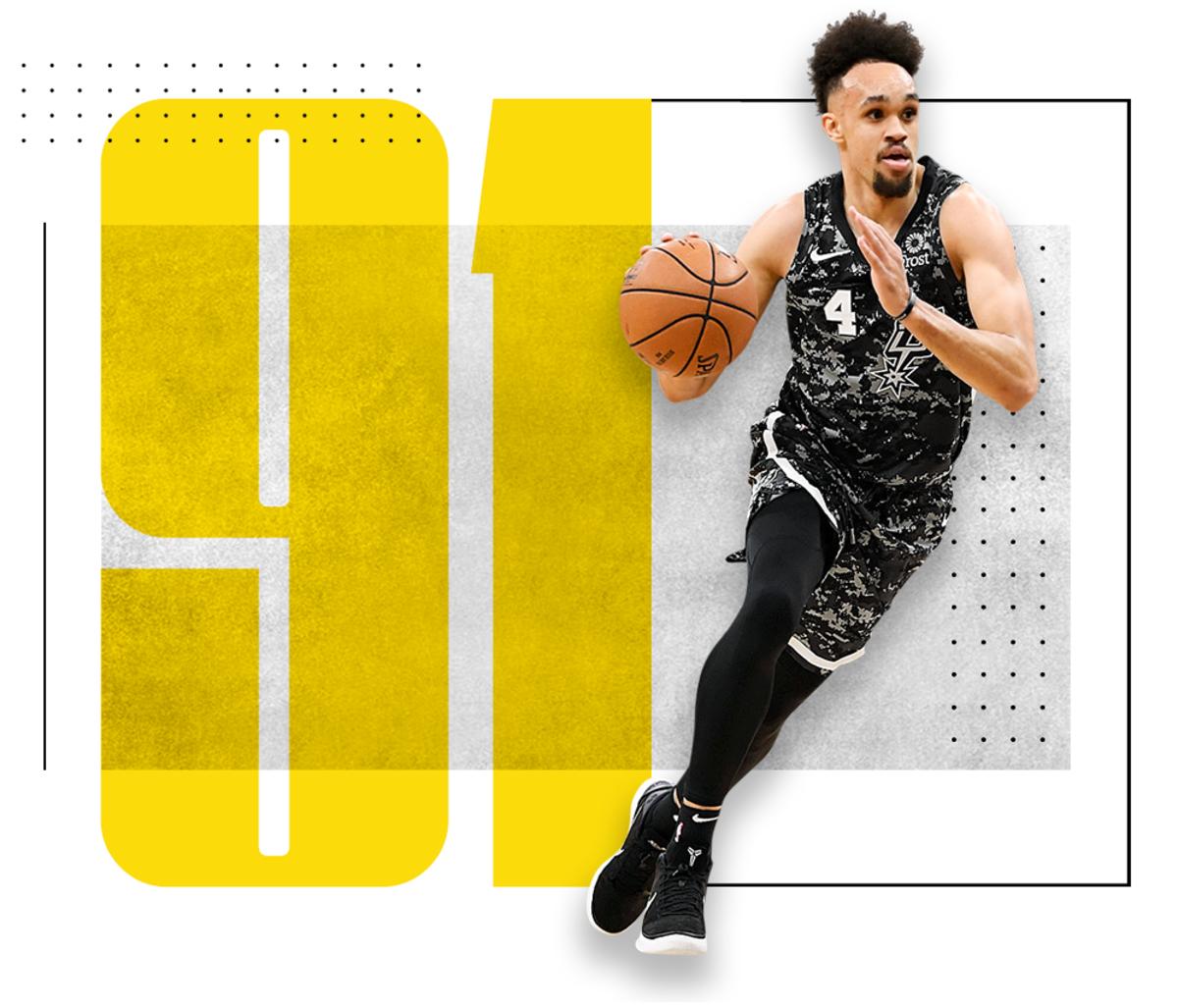
Derrick White
San Antonio Spurs
As a second-year player filling in a starting role, Derrick White scored well enough to demand that the Nuggets adjust their coverage in a playoff series. This is an expression of the most fundamental kind of basketball value. If opponents don’t take White seriously, he will exploit them. It all seems simple enough until making the adjustment forces an opponent out of their comfort zone—demanding a cross-match they’d rather not make, or pulling a perimeter defender away from some other noteworthy assignment. Yet teams like the Nuggets make those changes because staying in front of White is more challenging than it might seem. He isn’t lightning quick or exceptional as a shooter. He’s just 6’4’’ and clever—a combination that can get White into the lane and take his attempts over the top. Where White’s career takes him is difficult to predict, seeing as he’s already 25 years old. It’s possible that his development could hit an early plateau, though a stint with Gregg Popovich for Team USA this summer—a catalyst for career growth if there ever was one—can’t hurt. At worst, we’re looking at a stout-defending combo guard with enough shake to his game to keep things interesting.
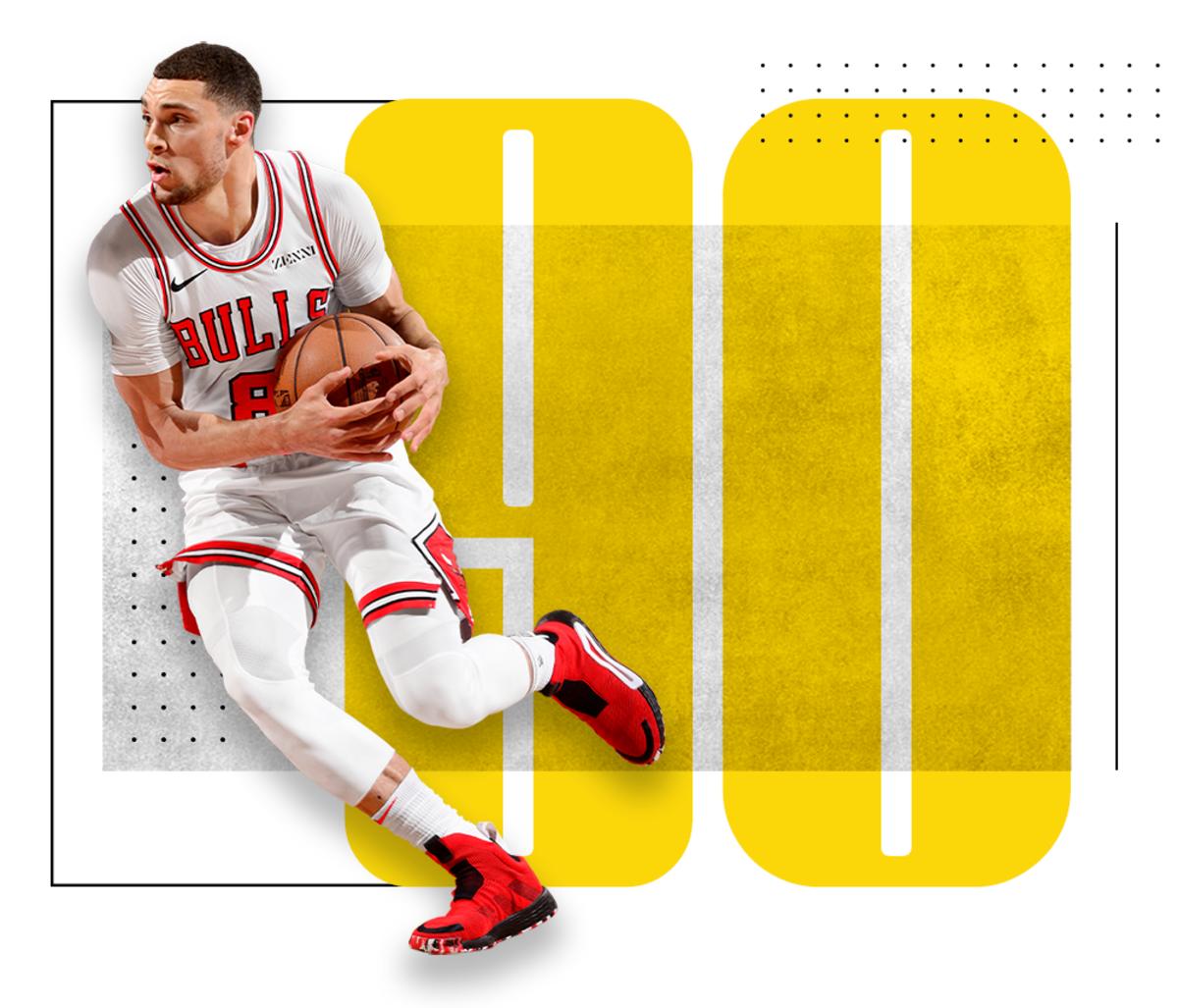
Zach LaVine
Chicago Bulls
When given the freedom to lead an offense, some young players wind up leaning into their worst impulses. Zach LaVine, to his credit, has sought to correct his. After years of settling for pull-up jumpers, one of the league’s most dazzling athletes came back from an ACL tear and made it a point to drive. LaVine took more shots at the rim than ever before. He got to the line for six free throw attempts per game—a top-20 mark that compares favorably with Jimmy Butler, DeMar DeRozan, and Kemba Walker. Even if we grant that playing for a bad team allows LaVine to play through his mistakes and pile up points (and pile them up he did, to the tune of 23.7 per game), it’s meaningful that he boosted his scoring efficiency in spite of his circumstances. LaVine isn’t perfect. But it’s so much easier to stomach his awful defense and learning-on-the-job playmaking when he’s able to both convert difficult shots and create easy ones.
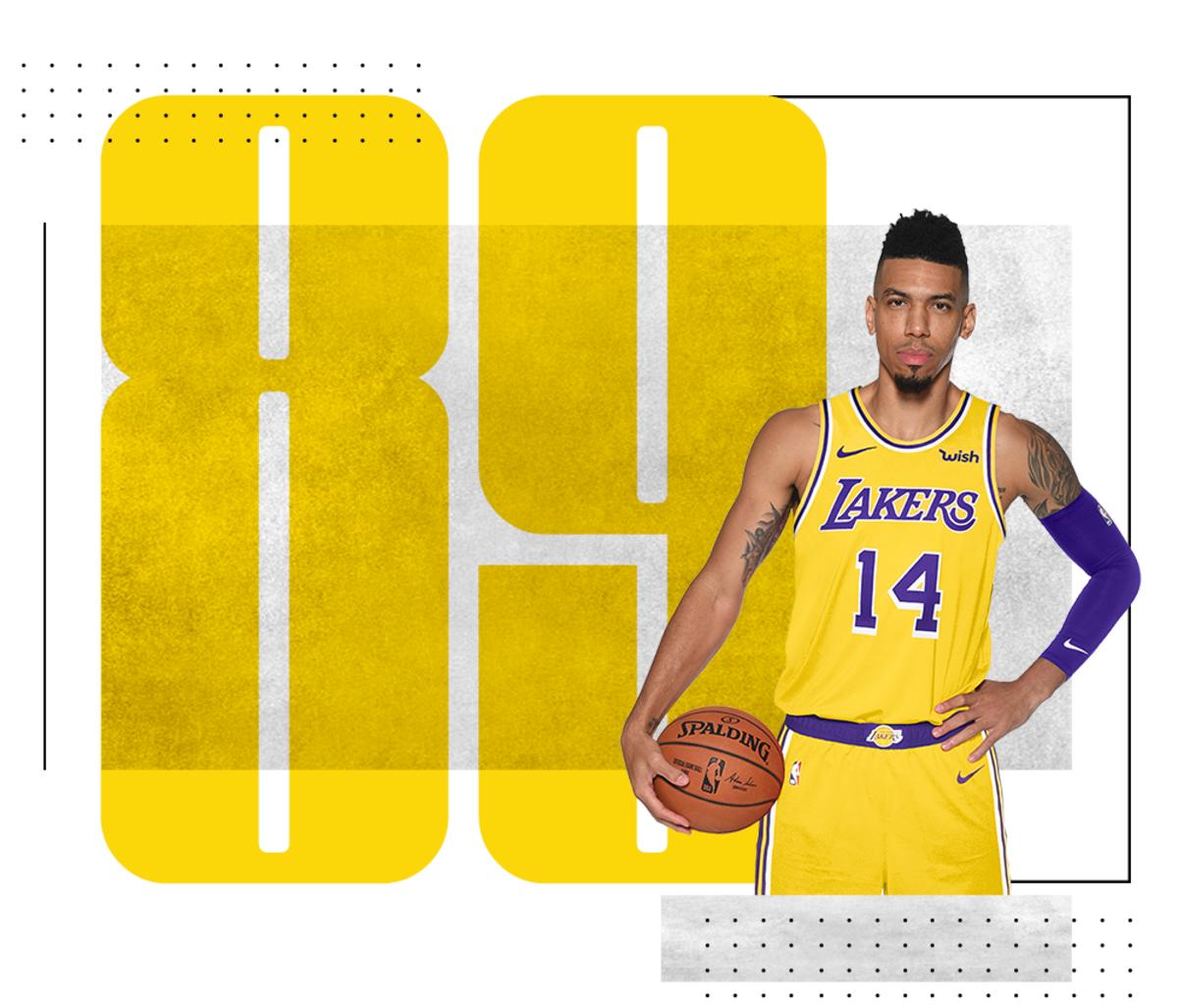
Danny Green
Los Angeles Lakers
Any player who relies on three-point shooting as much as Danny Green does (they comprise nearly 70% of his shot attempts) will trudge through some uneven play, perhaps even a poorly timed slump in the thick of the Eastern Conference finals. Those lows—in which no shot seems to fall—are painful. They’re also only a glimpse of a much larger picture, starting with an 82-game regular season and possibly extending through a deep playoff run. An acceptance that Green’s shot (and thus his primary means of contributing to an offense) might fail him at an inopportune time prevents him from ranking higher. Everything else, however, solidifies his case as one of the most impactful role players in the league. Green can blanket a star point guard or hound an All-NBA wing; he has a knack for getting stops in transition, negating some of the most efficient looks in basketball; and even when his shot isn’t falling, most opponents would rather not cheat away from a shooter of Green’s stature. The ingredients of his game are simple. But damn if they aren’t effective.
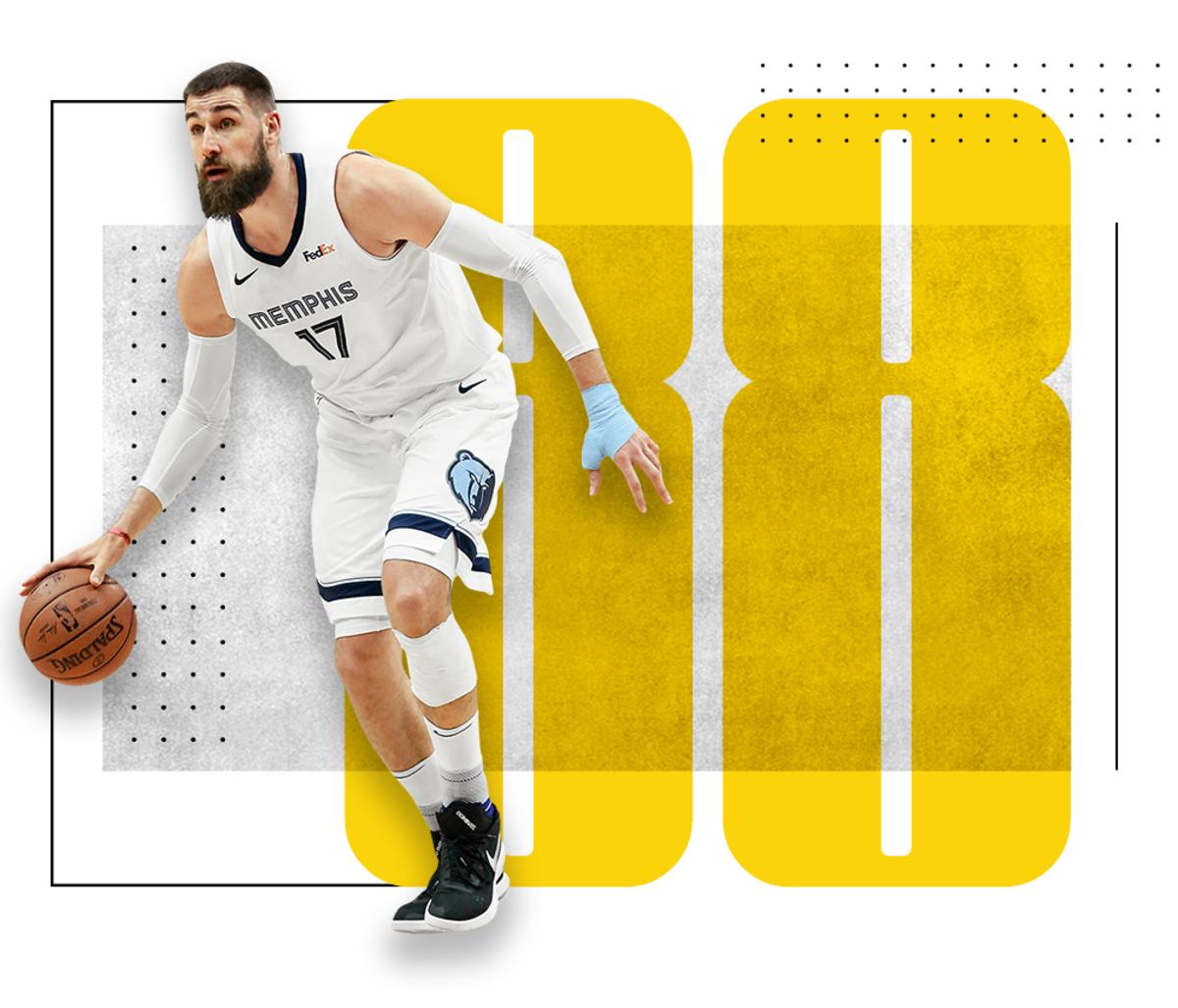
Jonas Valančiūnas
Memphis Grizzlies
Ranking a player like Jonas Valančiūnas is, at its core, an assessment of the traditional big in the modern league. There are certain contemporary accents to Valančiūnas’ skill set: the odd three, patches of rim running, and a combination of size and skill that’s conducive to switch-busting. Yet at his core, Valančiūnas is a seven-footer most comfortable with hand-to-hand combat. There is still a place for that sort of player in today’s NBA, though their mileage will vary. Young teams without much in the way of stars or infrastructure can lean on Valančiūnas to produce, just as the Grizzlies did. Yet where winning teams—like the Raptors—are concerned, there are diminishing returns to what Valančiūnas can offer beyond 20 minutes or so. Too many teams can string him out in space or force him into uncomfortable mismatches. Too many bigs can wrestle with him in the post, paring down his biggest advantage. All of this leaves Valančiūnas as something of a niche player, albeit the kind that can make room for 19.9 PPG and 10.7 RPG from the comfort of that niche.
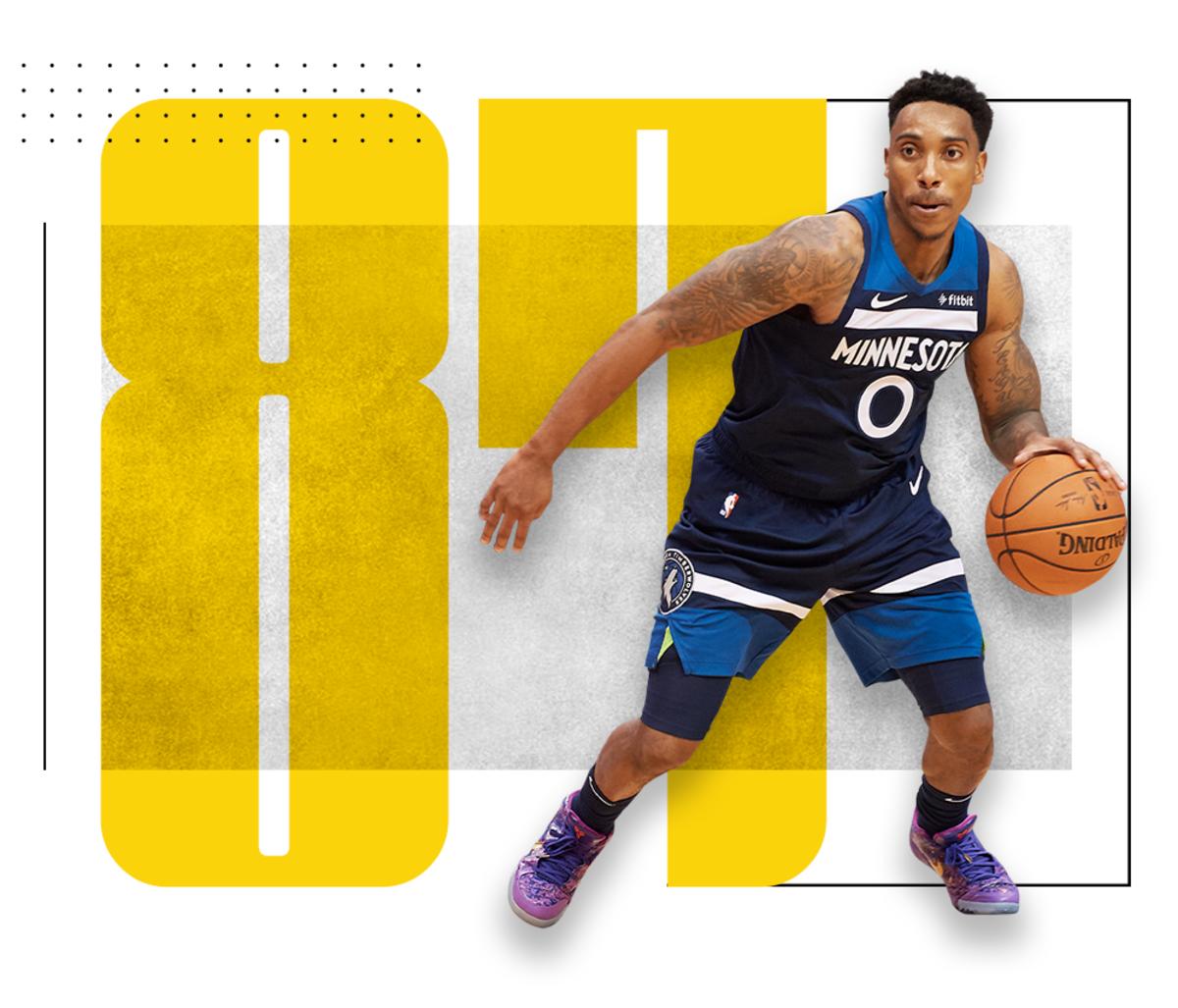
Jeff Teague
Minnesota Timberwolves
Jeff Teague’s brand is competence. There will be times where he leaves his team a bit wanting, but far more where he quietly—and reliably—keeps an offense running as it should. There are better point guards. There are also many with flaws far more egregious than any of Teague’s, and far more detrimental. The 2018-19 season was effectively a lost season for Teague: destabilized (and ended) by injury, complicated by Jimmy Butler’s forced exit, and subject to an uncharacteristic dip in shooting from most areas of the floor. Still, Teague managed a career-best 8.2 assists per game (tied for third in the league) in the relative chaos. While he was on the floor, players like Karl-Anthony Towns (+2.4% true shooting) and Robert Covington (+6%) were noticeably more efficient. The more indecisive streaks to Teague’s game will always be a bit frustrating. Yet on balance, he helps his teammates along without ever threatening to disrupt the natural order. Not every point guard needs designs for stardom. Some can just show up and quietly go to work.
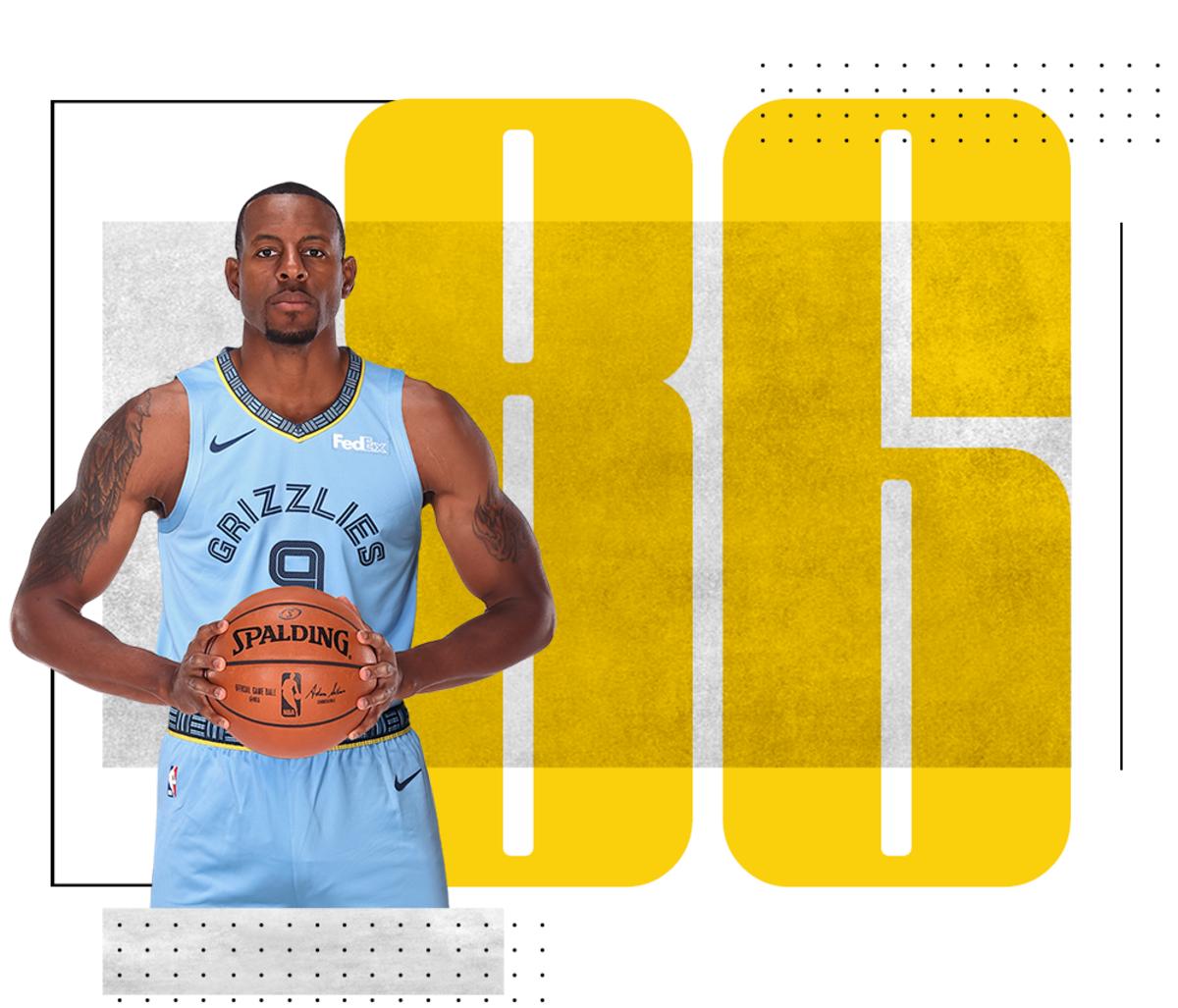
Andre Iguodala
Memphis Grizzlies
What makes Andre Iguodala a bit of a wild card on this list is that he can be such a magnificent grouch. Few in the league better understand what makes for winning basketball. Yet if Iguodala isn’t in the right locker room or even in the right mood, his cantankerousness could cause more problems than it ever did for the Warriors. We know how incredible Iguodala was for Golden State—not just in play, but intellectually and spiritually. But will he be the same kind of influence in Memphis when no game really matters? Or for a mid-level playoff team where certain teammates are pulling their own way? Iguodala can be a high-impact player in the most difficult games and series on the board. In question is whether he really wants to trudge through the rest of them, especially for a team with less certain prospects than the dynastic Warriors.
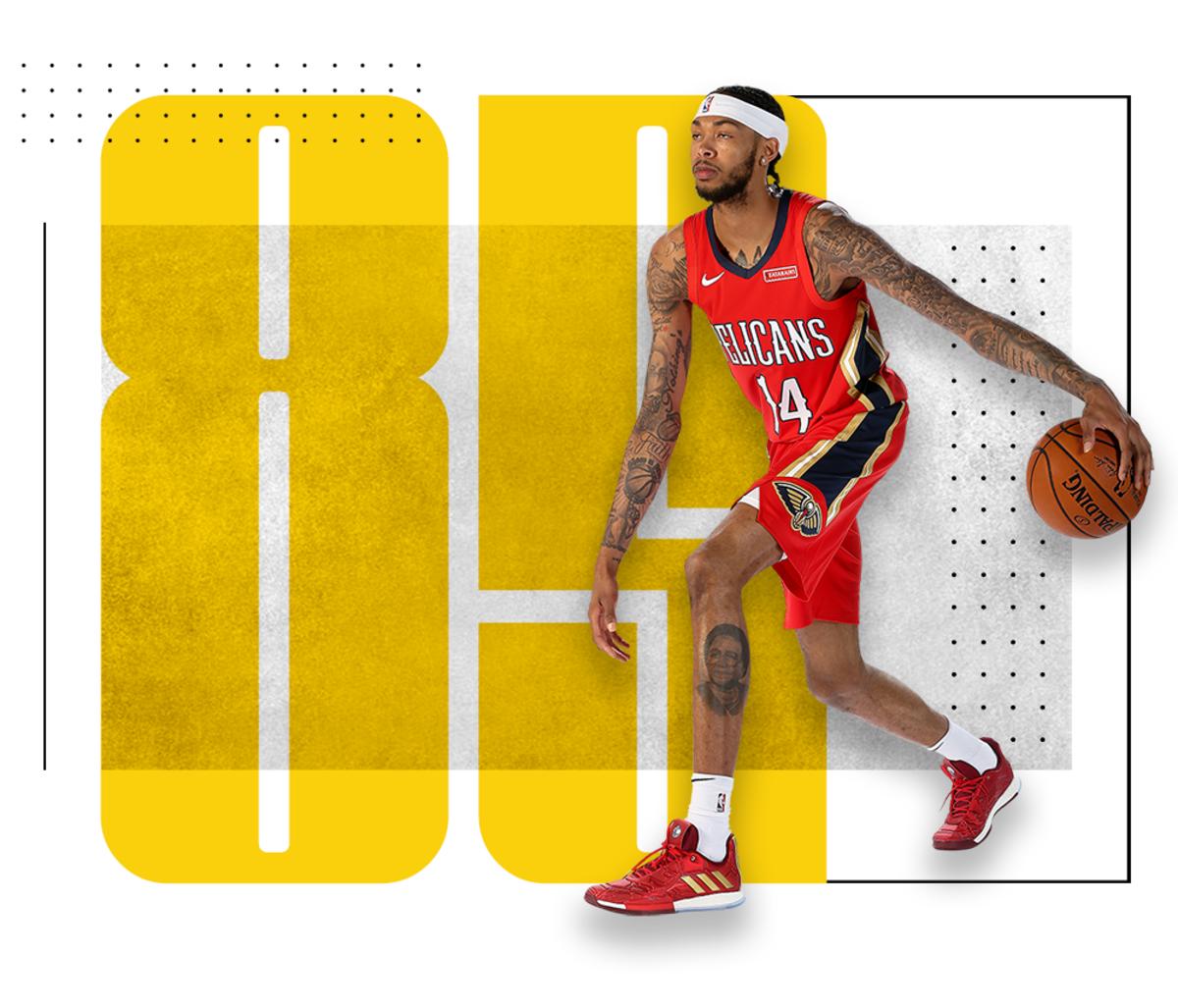
Brandon Ingram
New Orleans Pelicans
Calibrating these rankings to account for injury is difficult enough. Brandon Ingram, however, faces an even greater uncertainty after his 2018-19 season ended early due to deep venous thrombosis, a complication from blood clotting with potentially life-changing implications. There have been no official updates from either the Lakers or Pelicans as to Ingram’s status, though the fact that he was included in a trade for Anthony Davis—an event that requires he pass a physical or have it waived by his new team—could be read as a positive sign. This ranking does reflect a level of caution. At the very least, Ingram has averaged 56 games played over his last two seasons due to ailment and injury. The ramifications of that have to be considered before debating the merits of Ingram’s game.
As for the actual basketball: any player who can score when given the opportunity holds a certain baseline value. The question with Ingram is whether—given all the appeal of a smooth, 6’9” creator—he can do so in a way that carries a team to solvency. Sure, Ingram can put up points if you feature him within the offense. He averaged 18.3 points a game a night for the Lakers last season. But should a team really build its offense around a player of middling efficiency that doesn’t necessarily collapse the defense? And if you don’t put the ball in Ingram’s hands, is his ho-hum work as a shooter and cutter really conducive to high-level play? It would be entirely reasonable to find optimism in all that Ingram can do. It just seems more likely that Ingram will continue to float along, impressing on some nights and fading into the background on others.
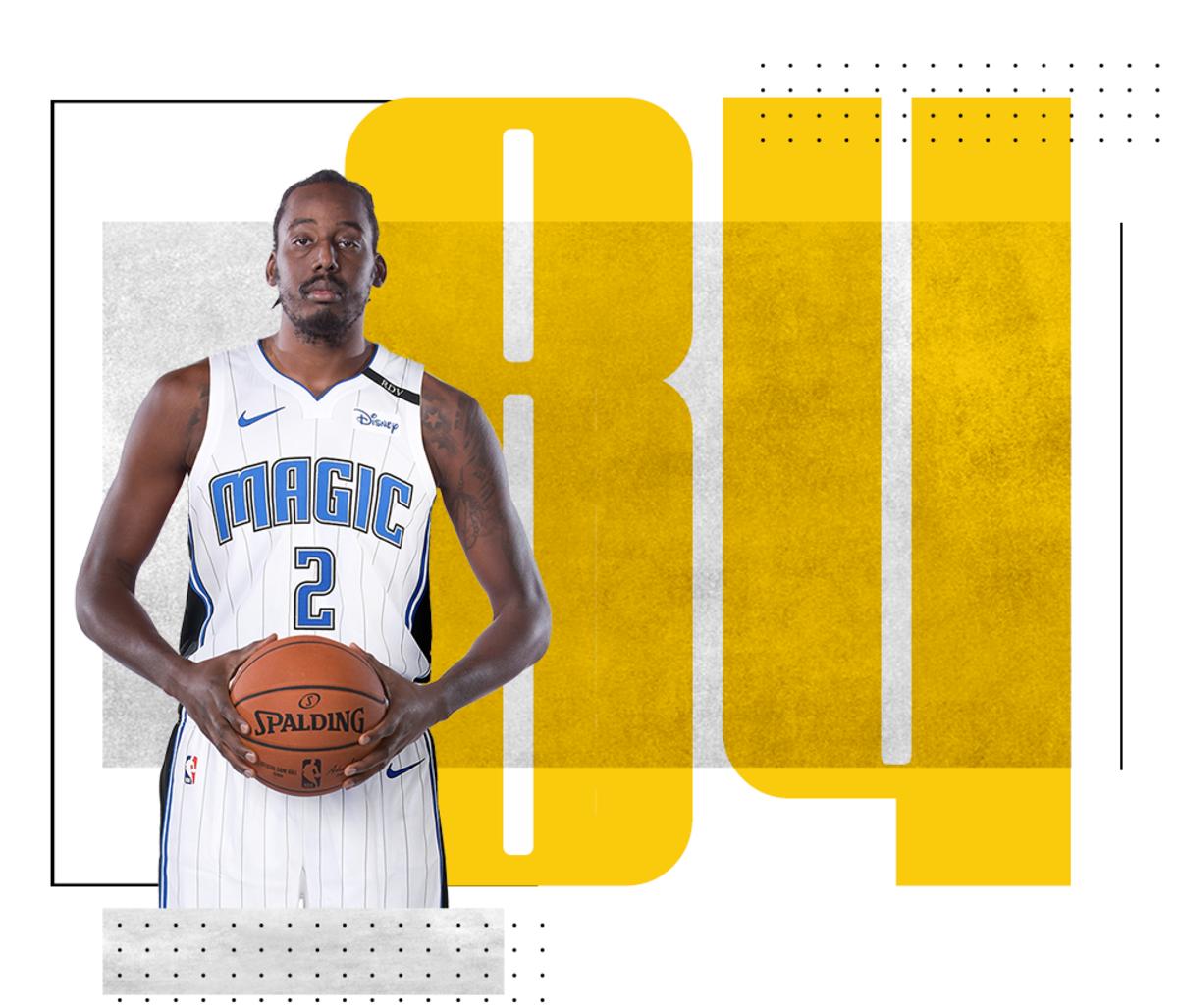
Al-Farouq Aminu
Orlando Magic
Al-Farouq Aminu is the sort of defender who would feel right at home in any system. Not only does that make him more valuable in a vacuum, but also within the context of a game or series. If there’s a need for his team to adjust defensive styles on the fly, Aminu can shift from showing to trapping to switching without issue. There is a freedom in that—particularly in a league where changing a team’s style of coverage so often requires changing the lineups involved. If anything, Aminu can sometimes feel that squeeze on the other end of the floor, where his cuts, hustle plays, and iffy long-range shooting can only offer a team so much. Spacing becomes an issue when Aminu shares the floor with other below-average shooters. So long as a team can minimize those instances, it can benefit from the better, more cohesive defense that Aminu makes possible.
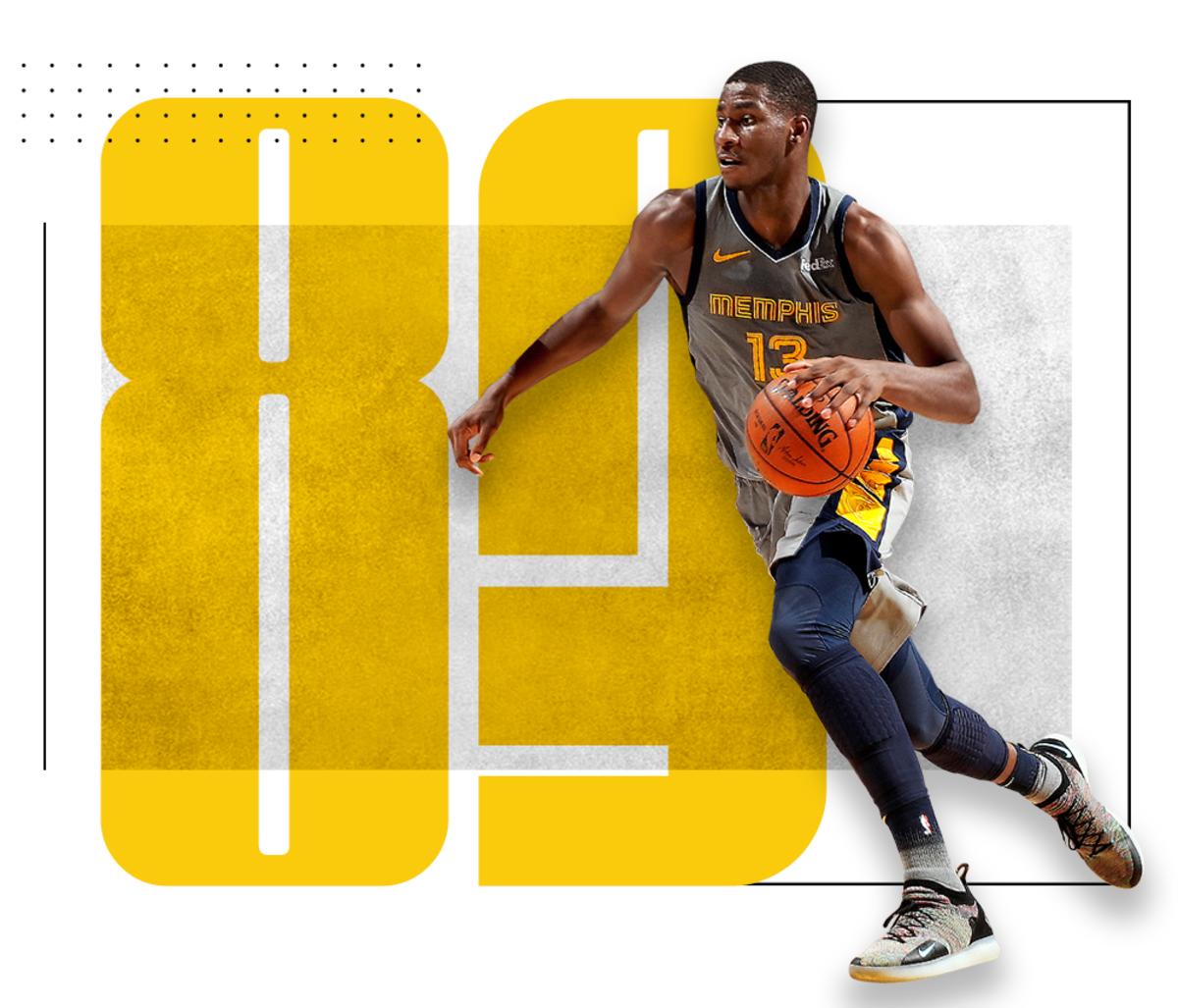
Jaren Jackson Jr.
Memphis Grizzlies
Once or twice a game, Jaren Jackson Jr. will do something on the court that is genuinely alarming for a player of his size (6’11”). Sometimes it’s a step-back three over LeBron James. On another night, he might use his length to break up what looked to be a sure thing: a layup or dunk attempted without worry that anyone was even within range. Sometimes his most notable plays don’t even seem all that spectacular. They’re still catnip for coaches, in part because Jackson’s best work exhibits a preternatural sense of timing. Jackson doesn’t even really know what he’s doing in the grand scheme of things, and still he’s able to get the jump on opponents all the same. Overplays and lapses are part of the package with any 20-year-old big. You accept them gladly with Jackson because of his fascinating potential and all it might mean.
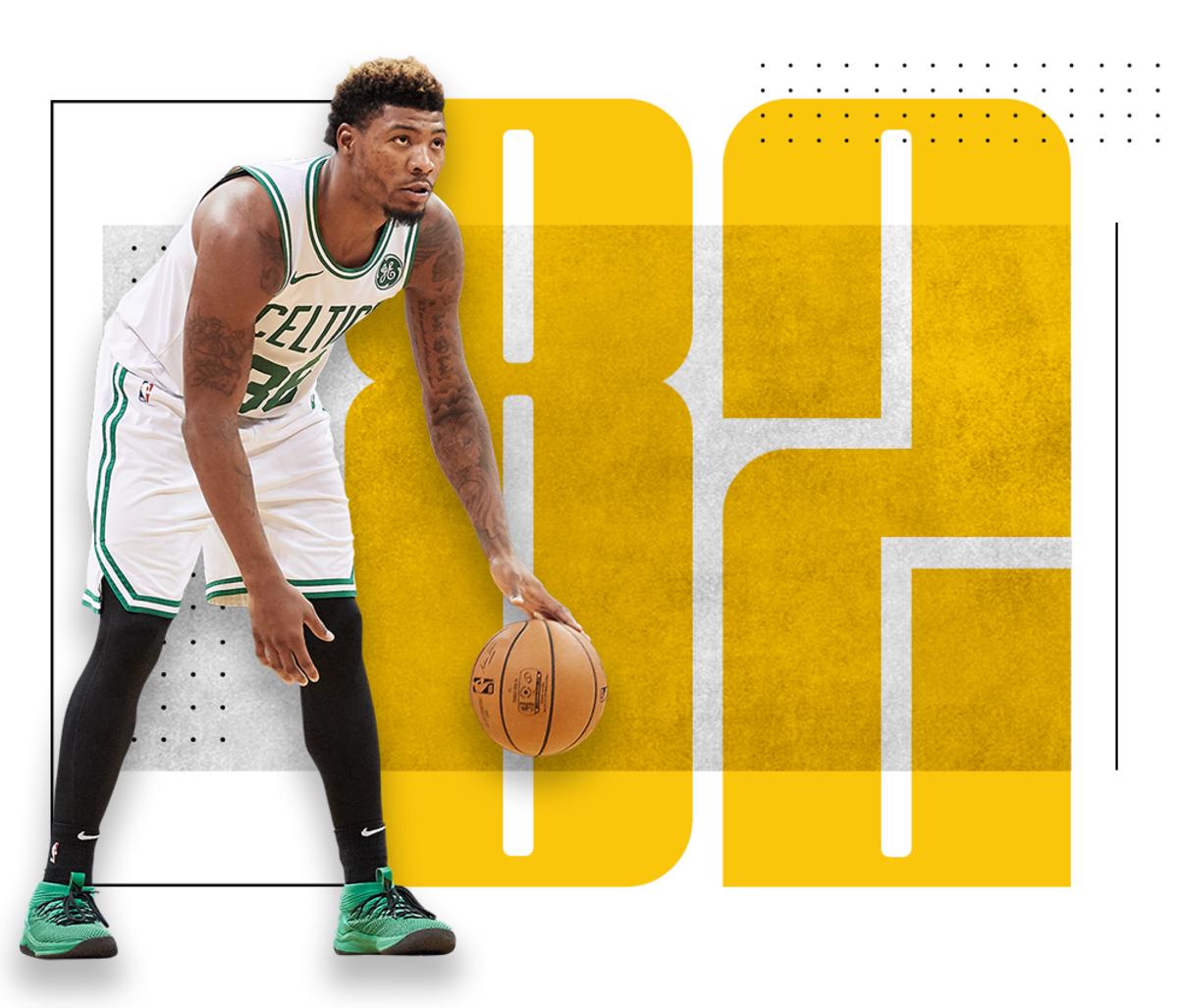
Marcus Smart
Boston Celtics
Marcus Smart makes his debut in the SI Top 100 after his most impressive season to date—and his first in which he managed to shoot better than 40% from the field. Specialists are notoriously hard to rank, for the simple reason that they can provide different teams with dramatically different value. Smart simplified that analysis by more fully rounding out his game. Not only did he shoot 36% from beyond the arc, but he did so at volume, hitting just 11 fewer threes for the season than Kevin Durant did. Smart’s attempts obviously come much easier. What’s important, though, is that his career-best shooting wasn’t some fluke of infrequency. Smart is a better shooter than he was previously, and a more stable playmaker, and a better finisher. There is still an unpredictability to Smart’s game, only it doesn’t manifest in the kinds of wild swerves that would derail possessions. All of which only serves to qualify what we already knew to be true: that Smart is one of the sport’s most suffocating defenders, capable of swinging games even before his offense gave him a chance.
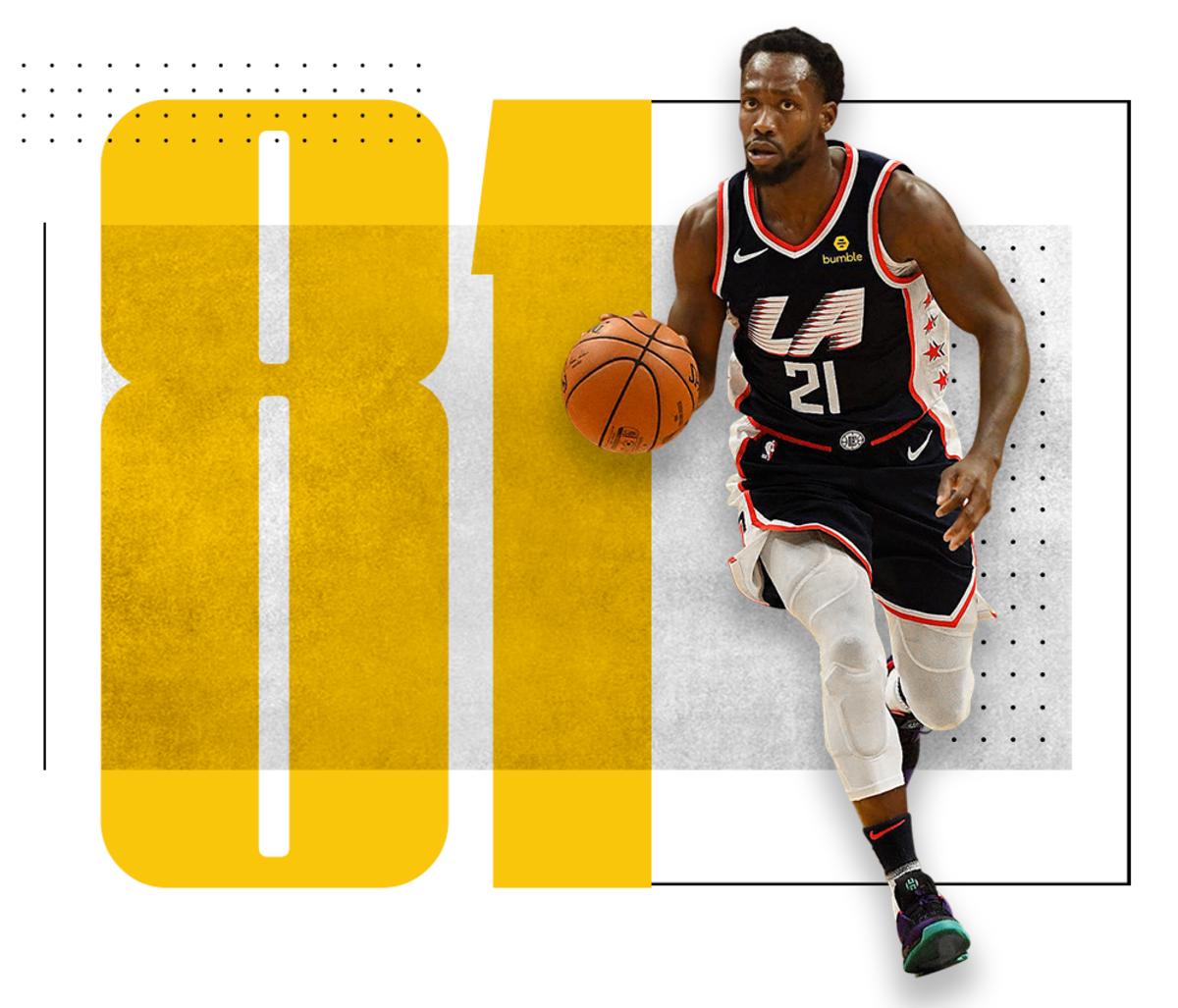
Patrick Beverley
Los Angeles Clippers
In the history of this list, we’ve tried to reward in some small way the players whom other pros enjoy playing with. Patrick Beverley gets a slight bump by the opposite logic, as the kind of defender no sane person wants to play against. There’s not a fear factor with Beverley so much as an awareness of all the trouble he’ll cause. Forget the easy looks you were hoping to find; by challenging the routine—bringing the ball upcourt, initiating the offense, etc.—Beverley can rock an entire offense off its center. On the other side of the ball, the veteran guard is a more substantive contributor than he’s given credit. Beverley is at his best when he shares custody of an offense, but not because he can’t run his own pick-and-rolls or manufacture points when needed. Some players simply understand their limitations enough to know when to step aside.
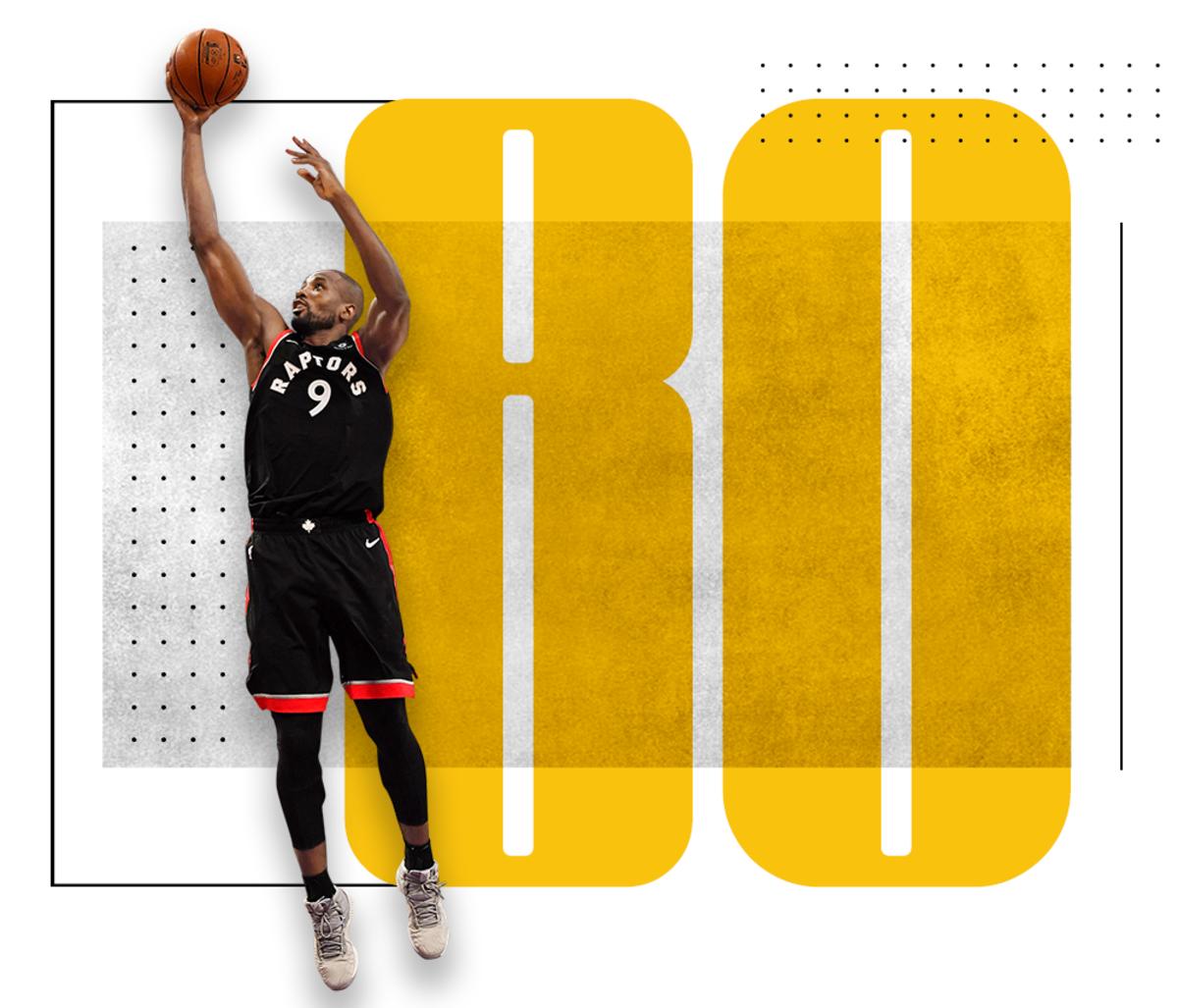
Serge Ibaka
Toronto Raptors
Last season was a mild renaissance for Serge Ibaka at age 29, who found the verve in his game after a few sleepy years for the Magic and Raptors. It’s hard to say exactly why. Ibaka played largely the same role for the same team he had previously, though with the benefit of more support—and the ease of reduced pressure. Maybe that was enough. Other bigs could relieve Ibaka on his rougher nights. Kawhi Leonard and the evolving Pascal Siakam could carry Toronto for stretches and take some of the stress out of Ibaka’s contributions. When shielded in that way, Ibaka again became a game-changing player for a championship run. He isn’t a particularly impactful scorer, a high-volume rebounder, or even the shot-blocking force he used to be. Ibaka is simply the kind of adaptive big who can be a significant net-positive in four playoff series against four distinct opponents—among them the Sixers, Bucks, and Warriors.
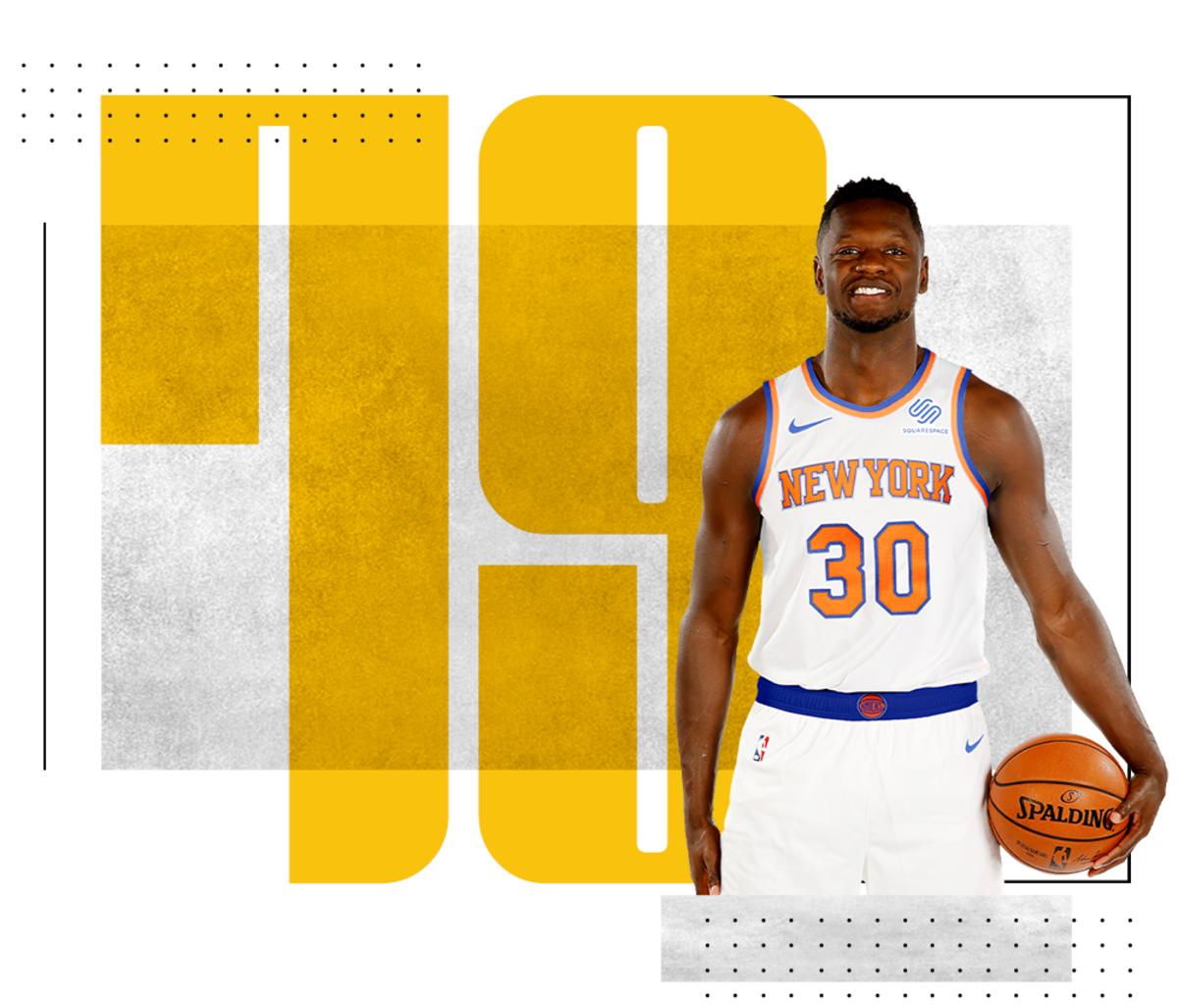
Julius Randle
New York Knicks
Ranking a player like Julius Randle is as much a basketball evaluation as a question of philosophy. Those who believe that all production is created equal could only be impressed with his stat line: 21.4 PPG, 8.7 RPG and 3.1 APG. This is the stuff of stardom. Those who would qualify those sorts of vanity stats, however, would see Randle as a more complicated figure. This ranking leans toward the latter interpretation. There isn’t that much evidence to suggest that Randle actually made the Pelicans all that much better last season—only that he managed to accumulate the kinds of base-level stats that earn a player attention and get him paid. That isn’t to say that Randle was selfish or ill-intentioned. Randle played with force and made the most of his role. Yet even production like his can only count for so much when achieved through blunt, straight-line creation and spacey defense to offset. It’s not entirely his fault, but there are reasons why Randle hasn’t yet been to the playoffs or been on a team that won more than 35 games.
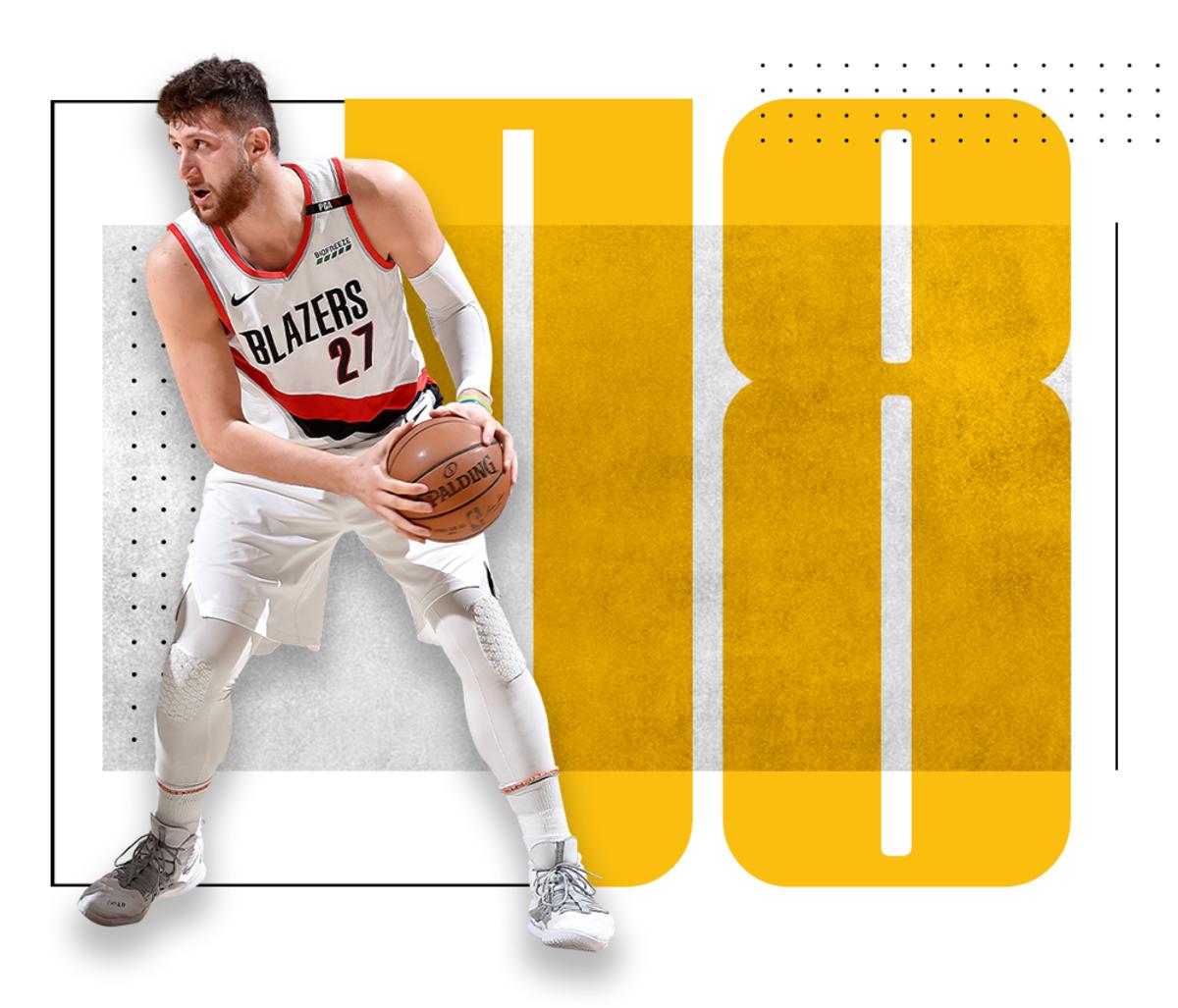
Jusuf Nurkić
Portland Trail Blazers
Last time we saw Jusuf Nurkić in uniform, he was carted off the court with a gruesome compound fracture in his left leg. The closest that Portland has come to offering a timetable for his return was through general manager Neil Olshey, who noted during a telecast of the Las Vegas Summer League that Nurkić “won’t be back until February, maybe”—a loose forewarning that the Blazers’ best option at center could miss half of the regular season. It should go without saying that a fully healthy Nurkić would rank higher than No. 78. His play last season was the surest of his career on both sides of the ball. Nurkić made stronger moves to the rim instead of relying on poorly balanced flip shots. His defense was not only attentive, but more reliable than ever. The trouble lies in reconciling that player—the one Nurkić was—with the one he’ll be when he returns and the costs of missing so much time in the interim.
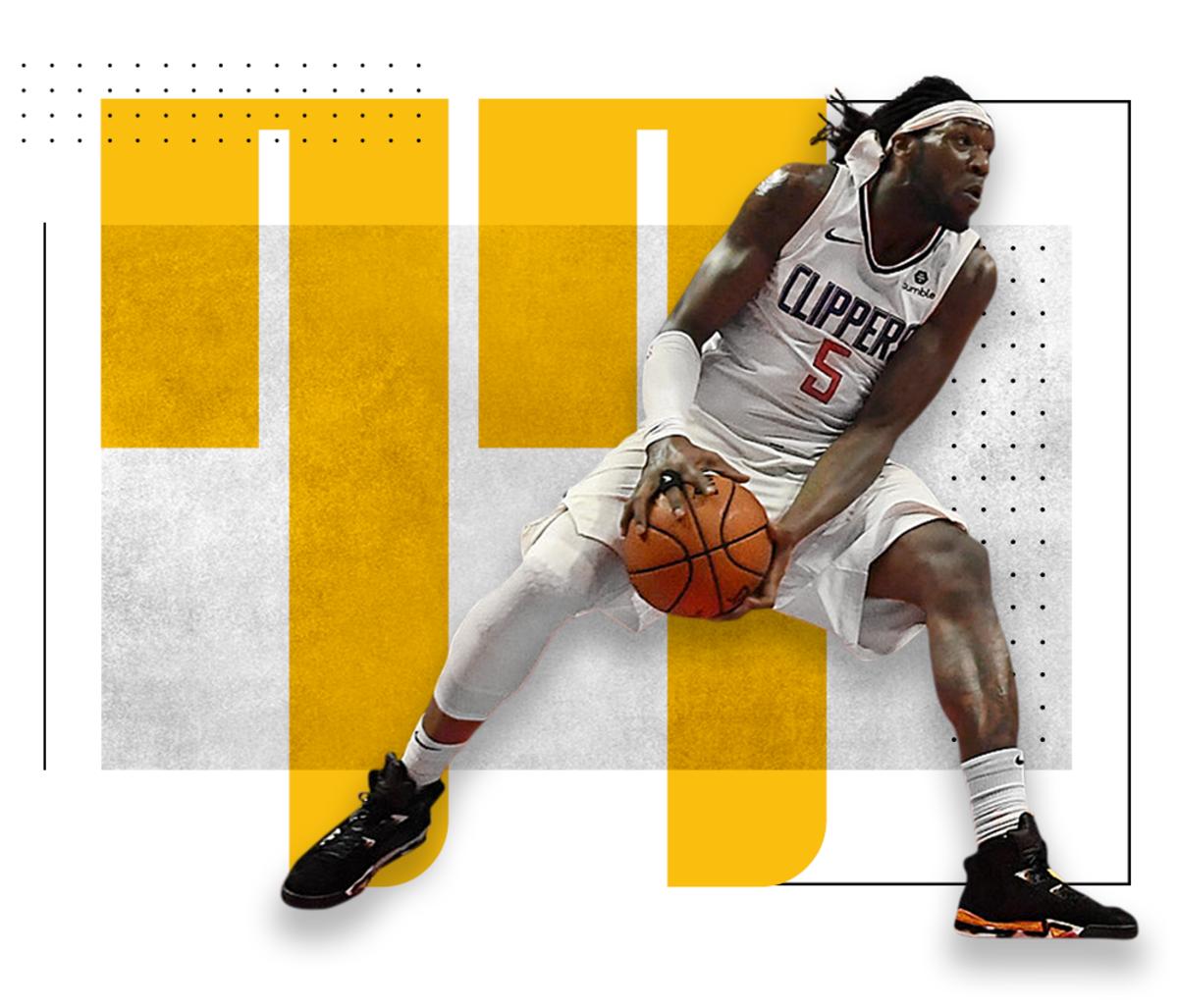
Montrezl Harrell
Los Angeles Clippers
In a first-round series against a team with two MVPs and three other All-Stars, Montrezl Harrell was often one of the best players on the floor. An impact series against the Warriors is quite an endorsement; Golden State is the kind of team that singles out its more flawed opponents, but instead it difficult to keep up with a center as kinetic as Harrell. It’s fair to wonder if we’ve already seen Harrell—a 6’8” center with great per-minute production—in his best possible role. What’s inarguable is his effectiveness in it. Harrell will come off the bench and outwork his opponents, but along the way he’ll face up to take them off the dribble or finish over the top when they try to stop him. There’s real finesse to his game, only supercharged.
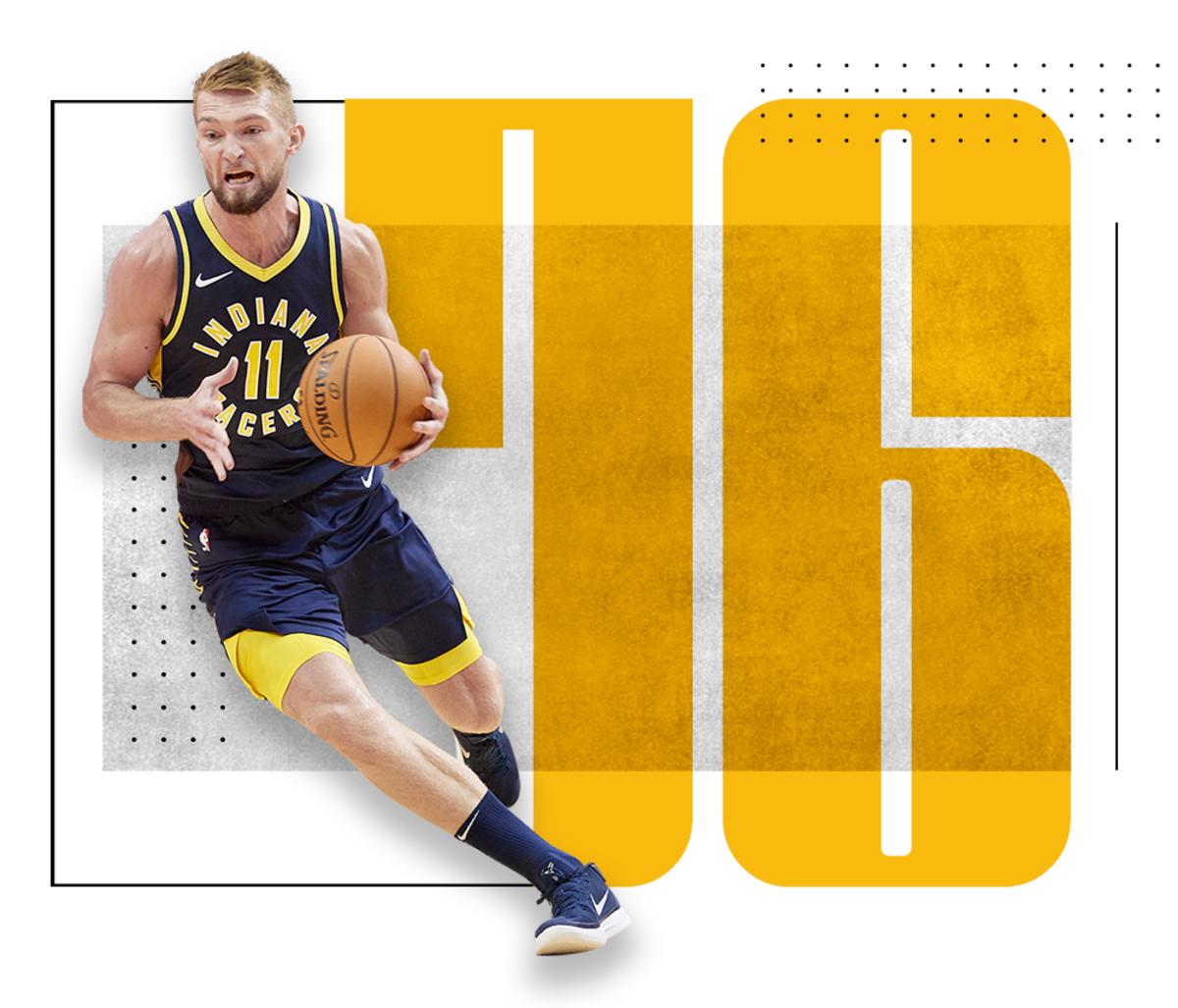
Domantas Sabonis
Indiana Pacers
In the long tradition of super subs, very few have been as productive as Domantas Sabonis was for the Pacers last season. Averaging 14.8 points (on 63% true shooting) and 9.3 rebounds in just under 25 minutes per game is some awfully quick work—the kind that could easily translate to any number of teams and systems. Certain considerations need to be taken into account with Sabonis (namely: how to support him defensively), but the accessibility of his game is a big part of its appeal. Simple action and decent spacing can give Sabonis all he needs to be effective against most opponents. The next step is outfoxing teams in the playoffs, where a defense will sit on all his favorite spots and anticipate his inevitable move back to his left hand.
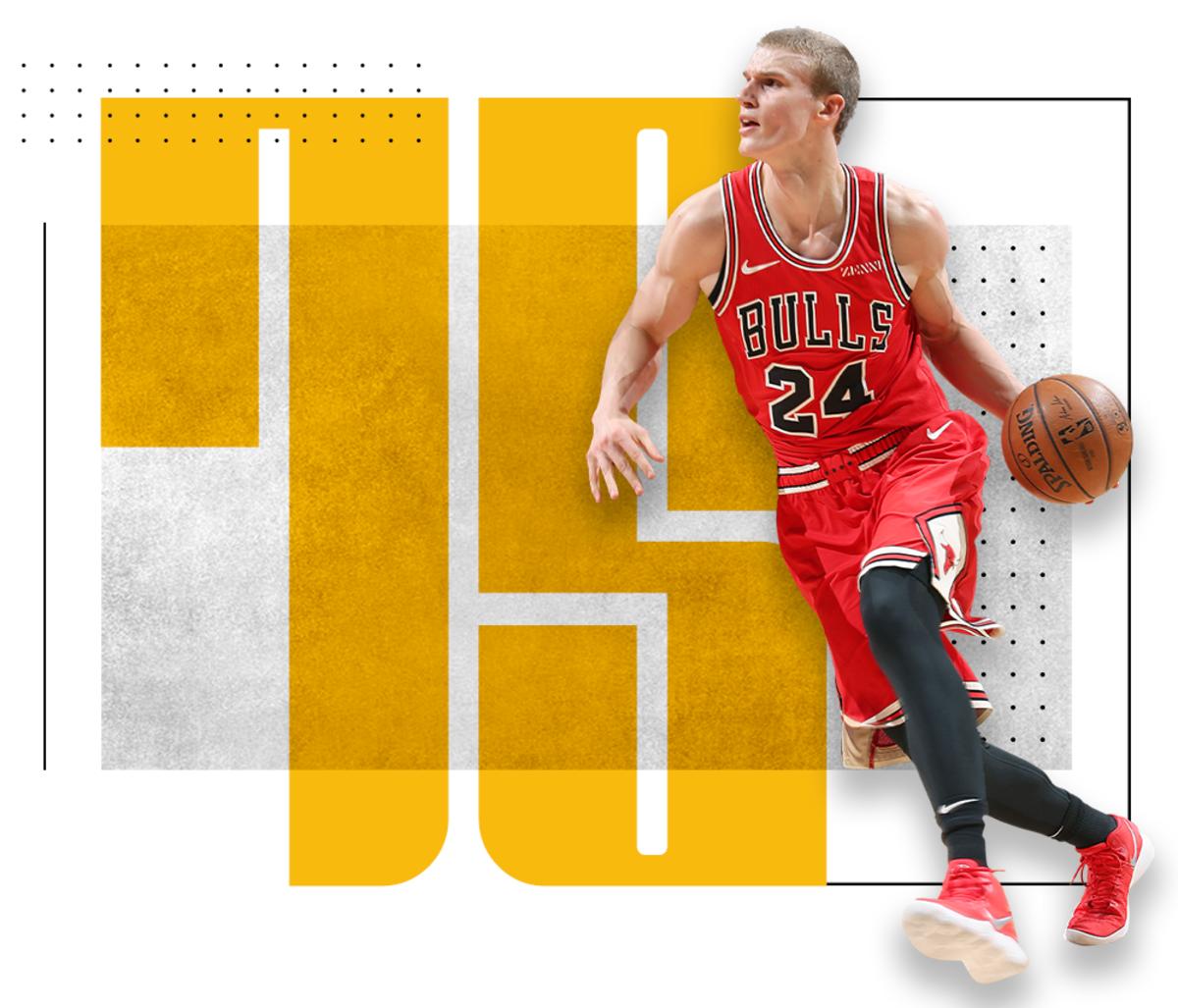
Lauri Markkanen
Chicago Bulls
The question with players like Lauri Markkanen is this: When does offensive production translate to winning production? It’s not exactly his fault that the Bulls went 22-60 last season, but it’s also not as if Chicago was anywhere close to breaking even during his minutes on the floor. Young players can be thrilling. They can be promising. Not often are they actually that conducive to winning basketball games, which is the foremost criterion in the making of this list. This ranking reflects a sort of optimism in Markkanen turning the corner this season. He’s entering his third year after showing meaningful progress, he’ll be 23 years old at season’s end, and he’s already showcased his talents to the tune of 18.7 PPG and 9.0 RPG. Markkanen has a chance to be one of the premier stretch bigs in the league. First he just needs to break even.
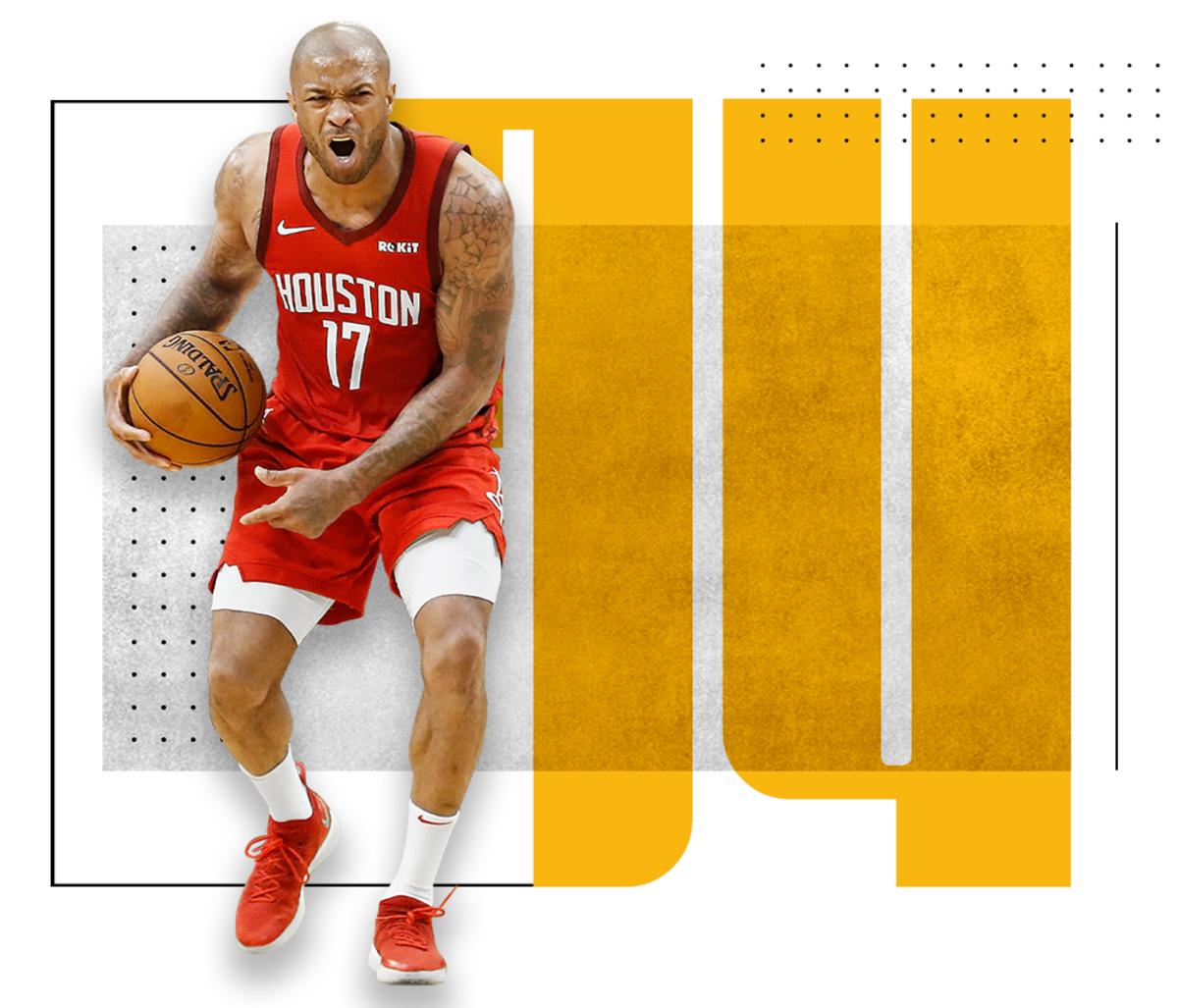
P.J. Tucker
Houston Rockets
P.J. Tucker is a tree stump of a stretch five, standing just 6’6” but effectively immovable. It’s more than just strength that sets him apart. Tucker understands perfectly how his stance can give him the leverage he needs to withstand a bruising post-up. He’s as sharp as any player in the league when it comes to anticipating an opponent’s moves and beating them to a spot. In some ways, the work of a top individual defender and a top team defender draw on different skill sets—or, at the very least, the same skills applied differently. Tucker dazzles in both respects and across positions. Any defender who could credibly guard the best forwards in the league is valuable on those merits alone. That Tucker also unlocked Houston’s most important and transformative lineups amplifies that value considerably.
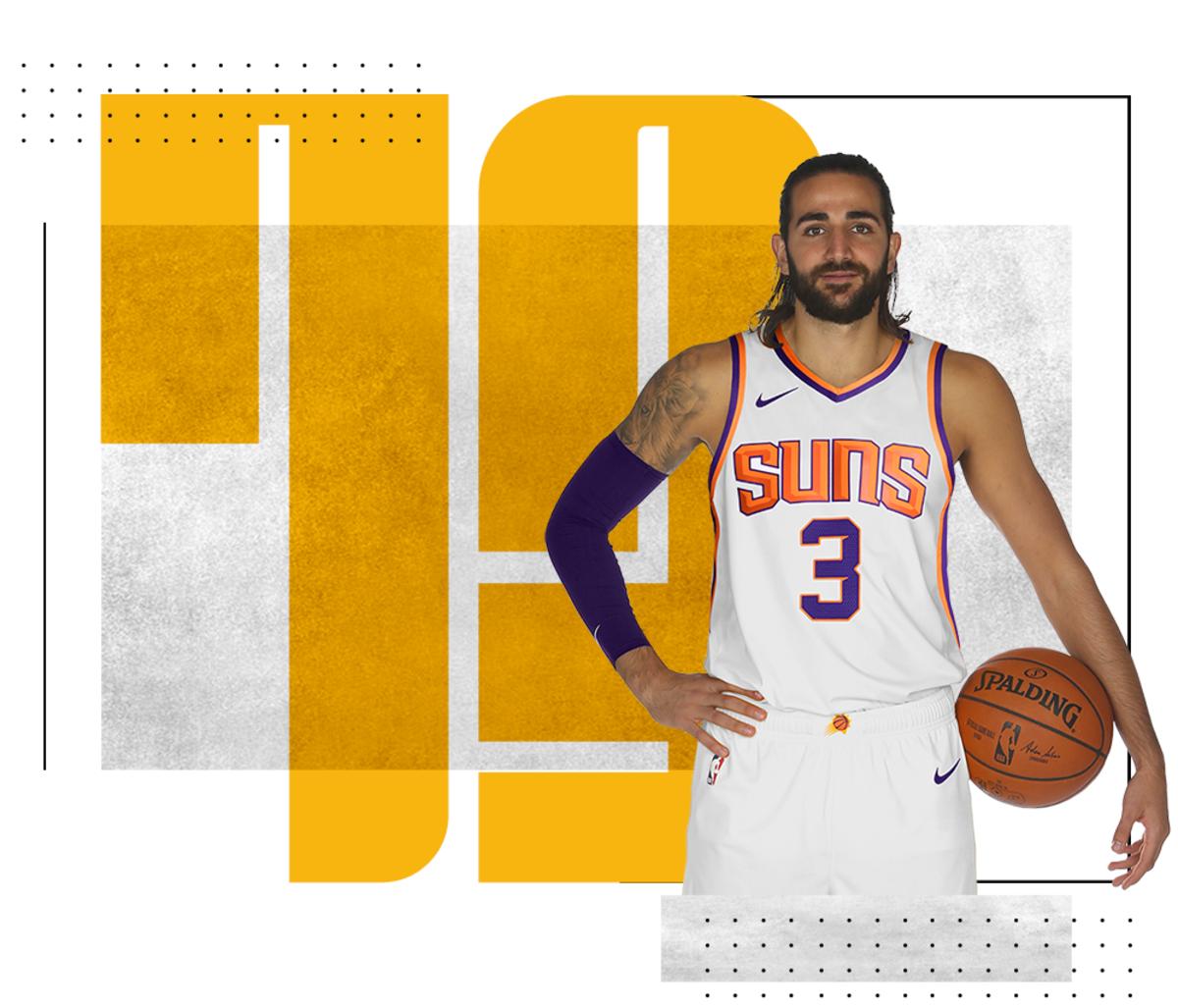
Ricky Rubio
Phoenix Suns
Ricky Rubio has played eight seasons in the NBA, and still his shot has yet to come around. That single issue forces him to play at a deficit. Whenever Rubio delivers some timely, clever pass, what goes unsaid is that they should happen even more often, if only the defense had reason to honor the threat of his scoring. Rubio shoots a passable percentage from mid-range when opponents leave him wide open and finished better around the rim last season than he ever had previously. It just isn’t enough to consistently leverage an opponent’s attention against them, forcing Rubio to work uphill to create anything at all for his teammates. There’s only so much a playmaking guard can really accomplish when he shoots just 31% from beyond the arc. That he sits at No. 73 on this list in spite of all this is a credit to everything else he has to offer. Defending at a high level, reading the floor well, and actively keeping your teammates engaged can go a long way.
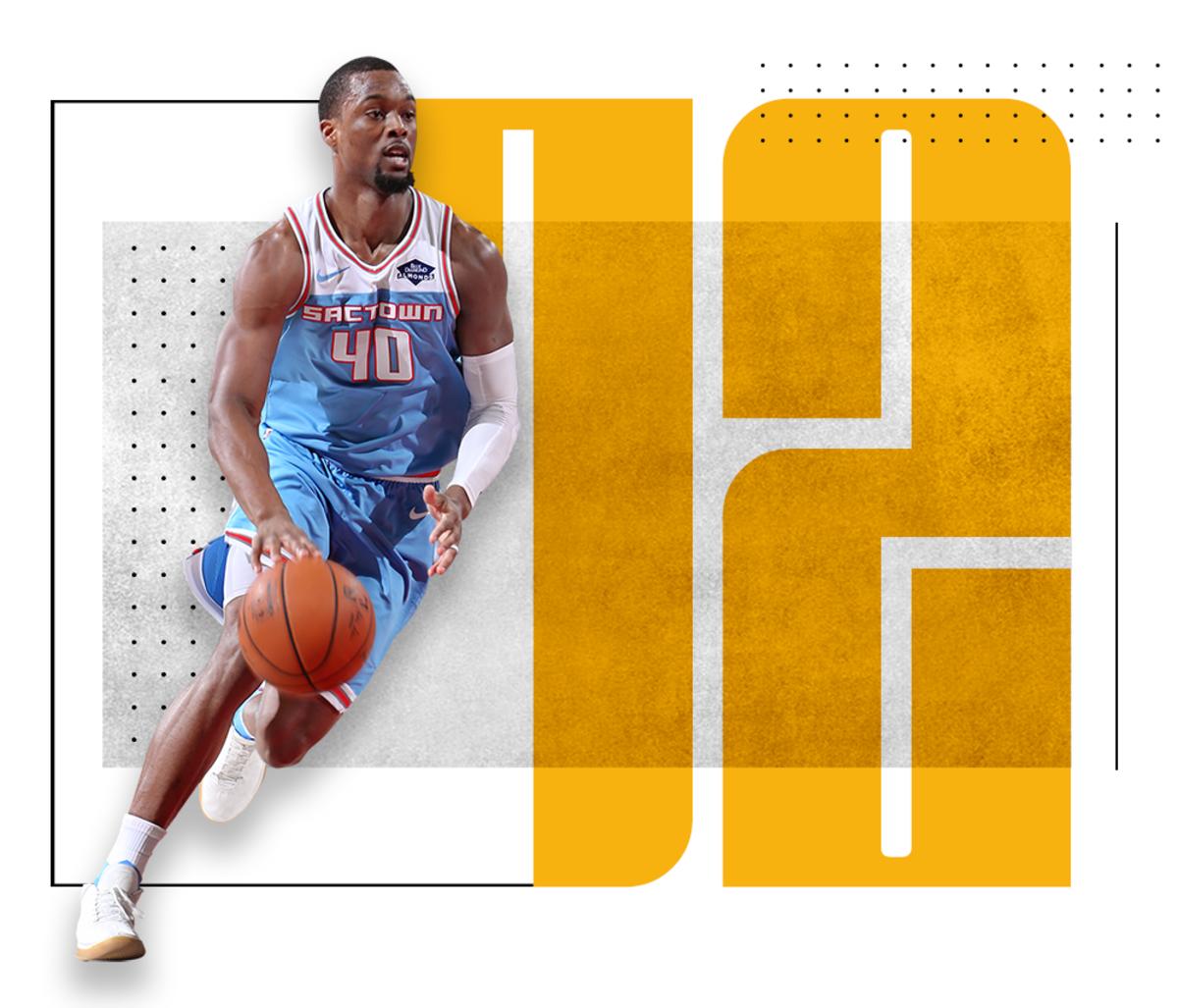
Harrison Barnes
Sacramento Kings
Harrison Barnes is reliable, professional, and unfortunately caught in the middle. Most low-usage wings are less skilled than he is, and thus marginalized accordingly. Yet most high-usage wings are more productive, more efficient, or at least more comfortable moving the ball—three qualities crucial to maintaining a healthy defense. What’s a team to do with a player like Barnes, who is overqualified as a role player but ill-suited to be a star? Attempts by Dallas and Sacramento to strike some sort of compromise have led to mixed results. It’s encouraging that Barnes is coming off the best three-point shooting season of his career (39.4% on 5.7 attempts per game) and remains a solid, multi-positional defender. The tradeoff is that Barnes defaults to stopping the ball too often, preferring to survey a situation rather than make quick, instinctive reads. Diligent players and teams can work around that sort of tendency, though there’s a natural friction when the ball-stopper in question isn’t quite a star-level creator.
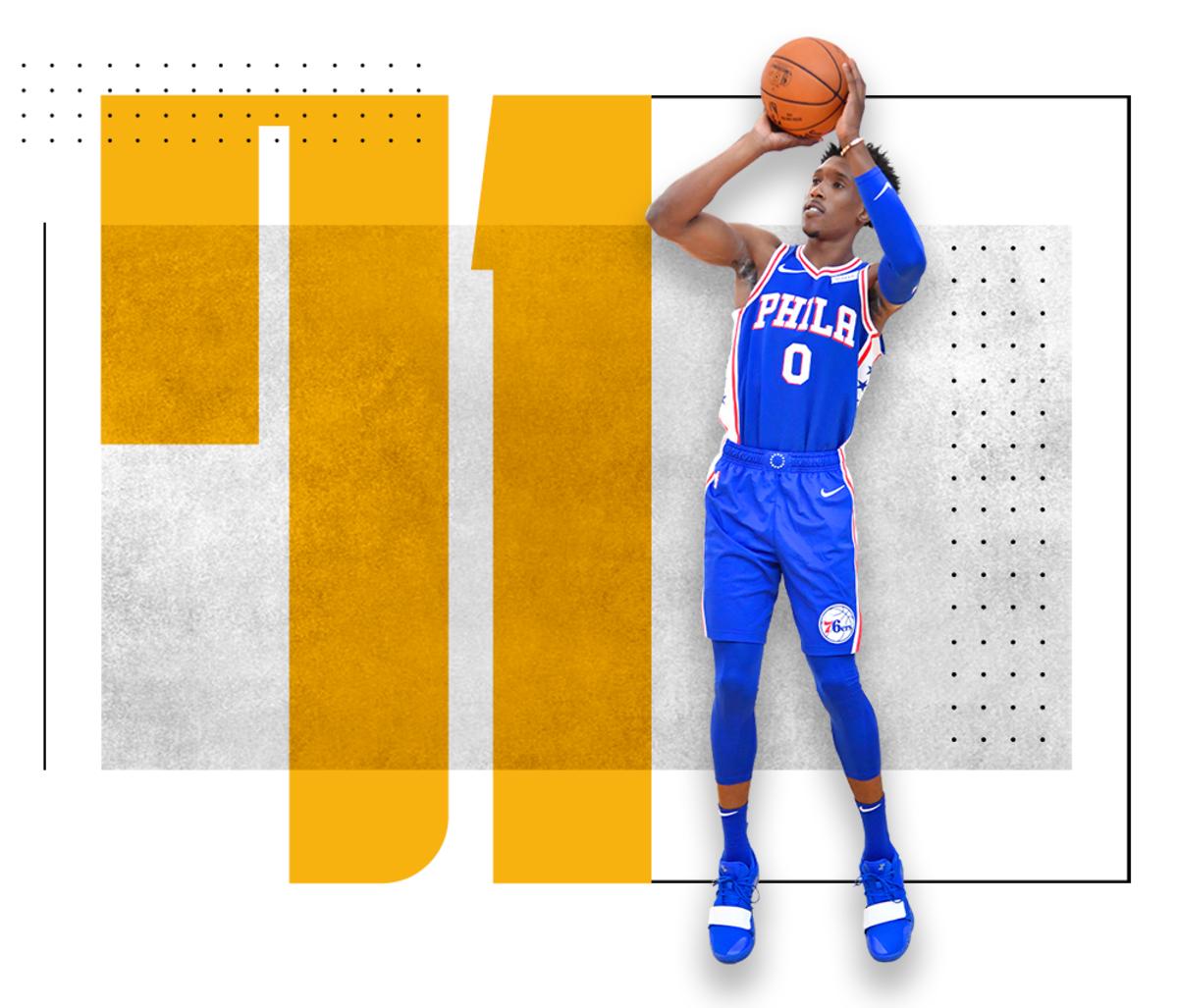
Josh Richardson
Philadelphia 76ers
The baseline for Josh Richardson begins with his All-Defense-worthy credentials, deployable across three positions. Whichever opponent handles the ball most will find Richardson embedded deep in their personal space. There isn’t often room to dribble safely, much less make an actual move. Forget making a play when it’s challenging enough to even read the floor. Miami has leaned on Richardson for years to operate as its first line of defense, and increasingly as a prominent source of offense as well. Shot creation might not come to him naturally, though it does come—in pick-and-rolls, in curls around screens, and in any scenario that gives him even the slightest edge. Richardson has some combo guard skills. He simply needs a little help creating the space to use them, and enough help on-hand to prevent their overuse.
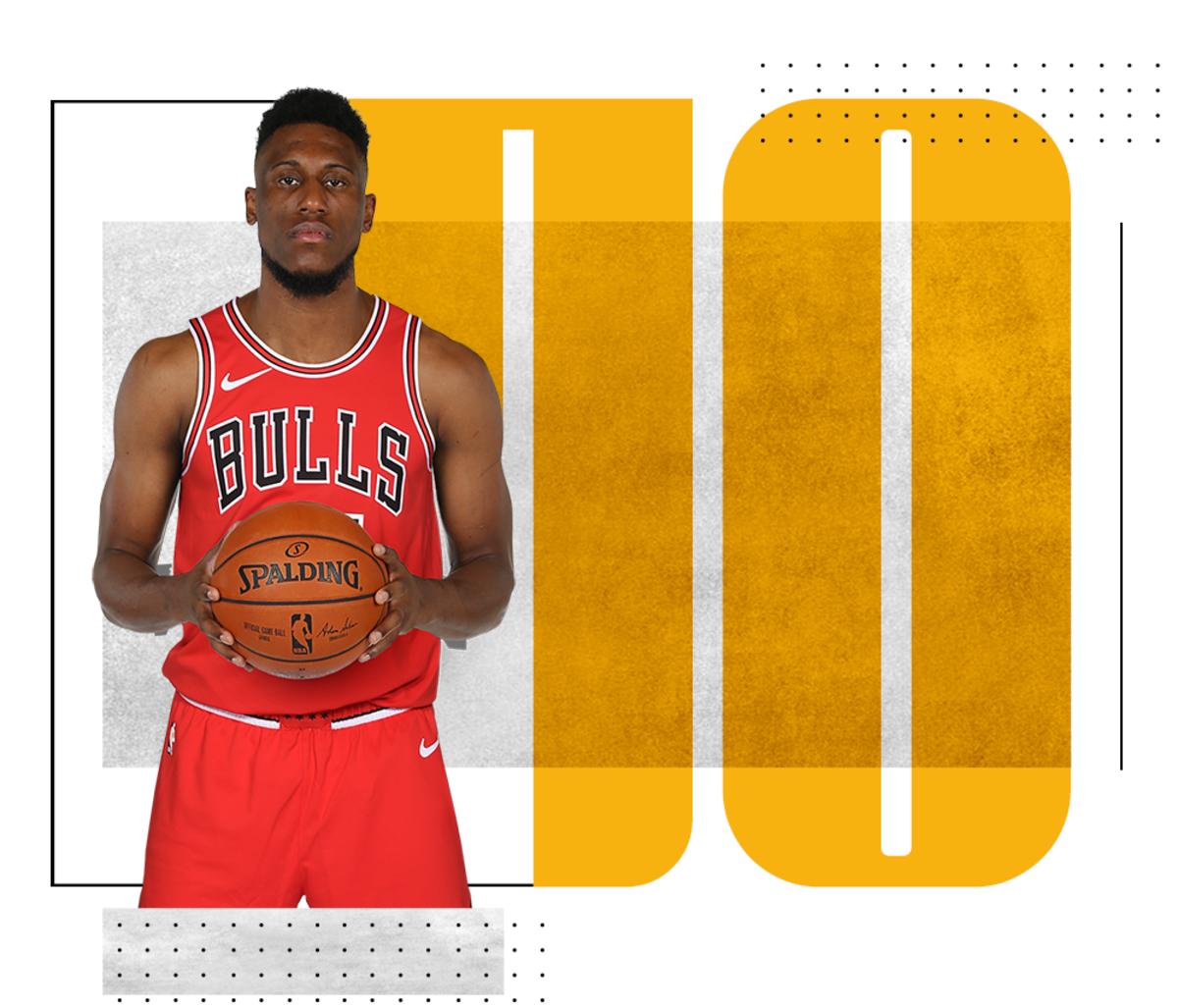
Thaddeus Young
Chicago Bulls
Thaddeus Young’s game is 100% mortar, a feat of cohesion and structure. Whatever the pieces around him, a quality team defense seems to follow. Stopping opponents is just simpler when there’s an intuitive big involved to rotate ahead of the action. Teammates on the perimeter are given license to pressure—to play even more tenaciously than they would otherwise. A coaching staff could call for any variety of coverage, secure in the knowledge that Young will execute his role and communicate with others. Young himself has some of the best hands in the business and a knack for finding his way into the thick of things. On defense, that manifests in a steal rate that’s rare among bigs. On offense, Young’s nose for the action leads him to all sorts of makeshift scoring opportunities: from shortish rolls to third-option reads to completely broken plays. It can all seem a bit random or insignificant in the moment. Yet when taken in total, it’s the kind of stuff that holds a team together.
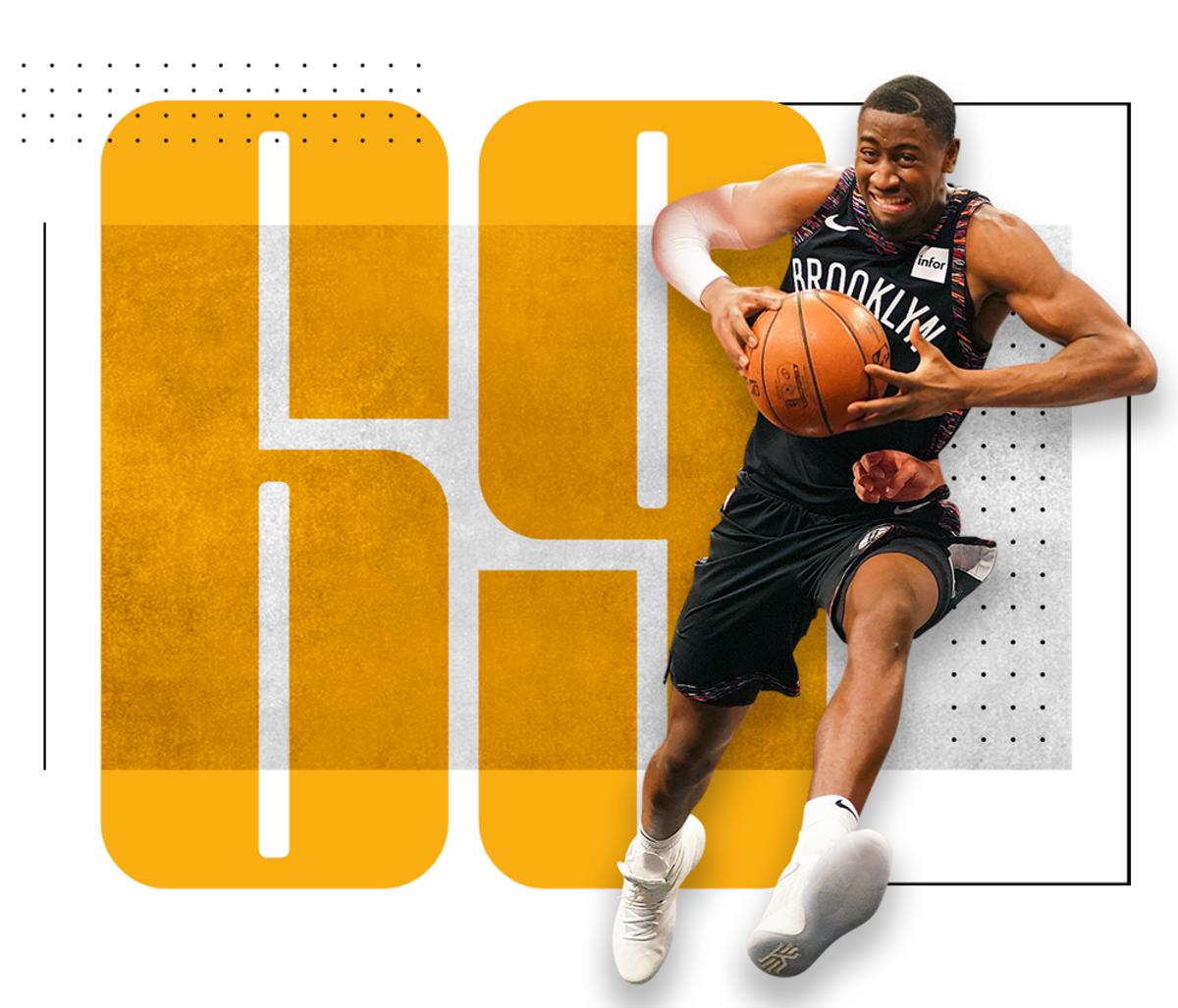
Caris LeVert
Brooklyn Nets
There has always been a spark to Caris LeVert’s game, the kind that makes a drive more than a drive and a crossover more than a crossover. Many of his moves are a preview of what’s to come. You can see the flair and imagination that might catch a high-level defense by surprise. His more unconventional moves, in the right light, might seem unguardable. Before dislocating his foot in gruesome fashion last season, LeVert averaged 18.4 points, 3.7 assists, and 4.3 rebounds in a compelling 14-game showcase. (LeVert would return to play 26 more games, though in a different role after the Nets evolved in his absence.) It’s fair to wonder whether those numbers would have held, though not to deny the talents that made them possible. For as much as LeVert can still learn about the delicate work of running a team, the capacity to do so—a rare quality—is there.
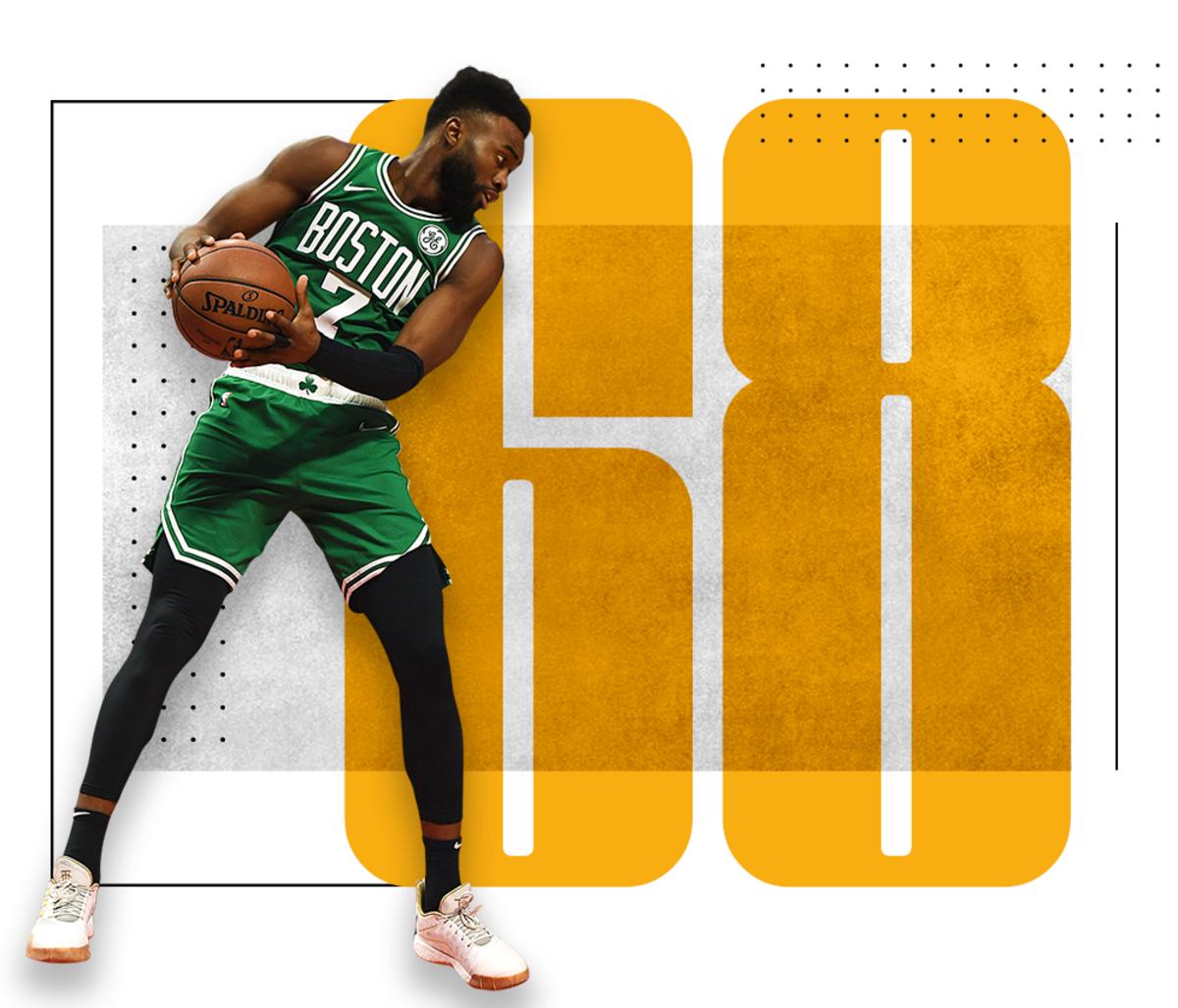
Jaylen Brown
Boston Celtics
Just when Jaylen Brown seemed ready to enter the next phase of his development, his game—and Boston’s entire season—went sideways. These things happen. Even successful careers in basketball can usually be traced in zigs and zags, bouncing off contextual factors and natural limitations. If Brown only turns out to be the uneven contributor he was last season, he would still help his team win. Added intrigue comes with his upward mobility. Any wing with Brown’s skill, bounce, and intelligence has the makings of a star, if only they could find the traction. To reach that point, Brown will need to find comfort in making quick decisions; refine his work with the ball; and harness his athleticism more fully. There’s a strong frame in place. Now it’s up to Brown to find what all it can bear.
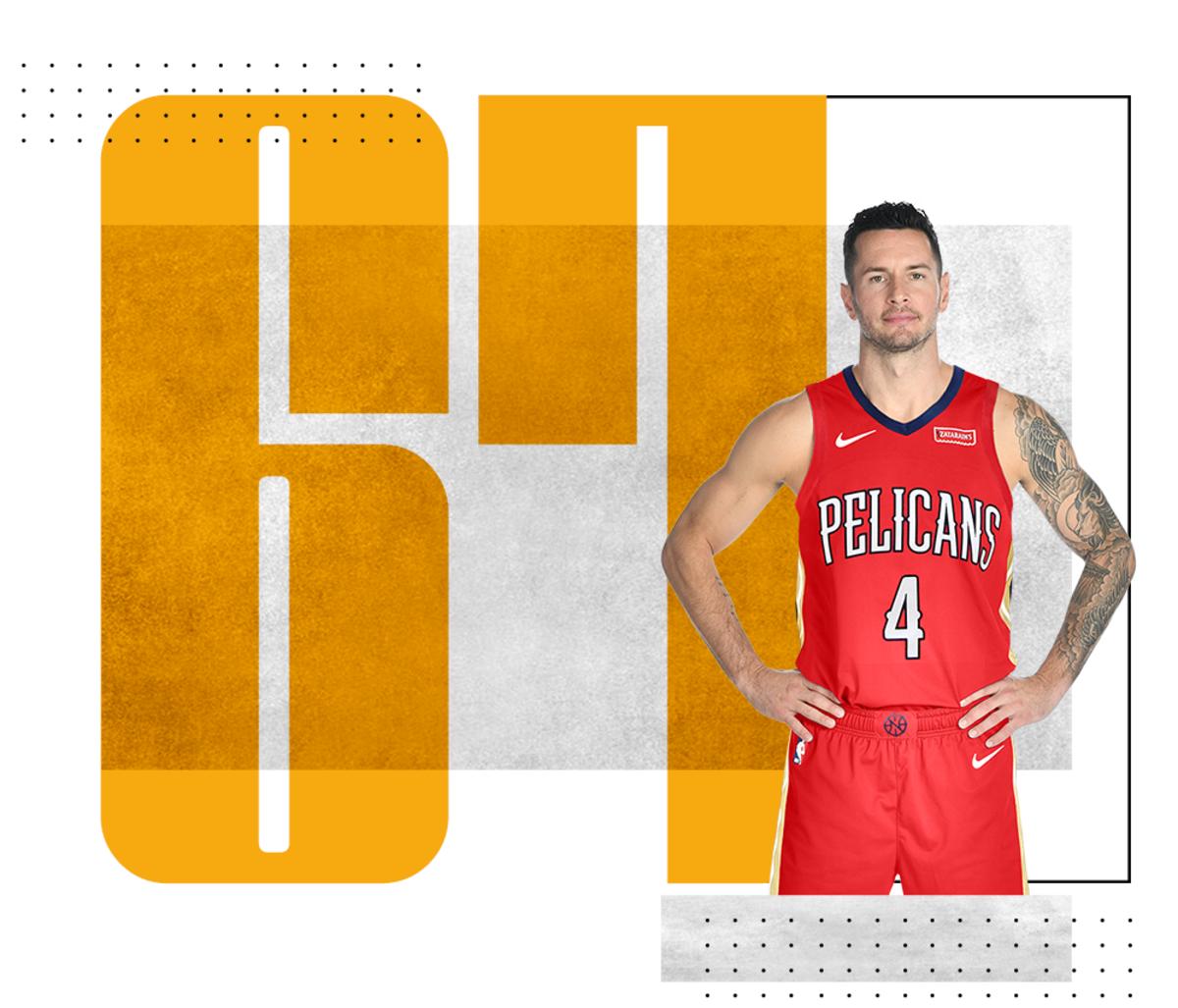
JJ Redick
New Orleans Pelicans
It’s telling that even a team as stacked as the Sixers chose to run much of its offense through JJ Redick. His movement has become a system unto itself. Having Redick dart into a hand-off from a player like Joel Embiid throws many defenders out of their senses, overriding the best-conceived game plans with a momentary sense of panic. Do you chase one of the most dangerous shooters in the league or stay home with the All-NBA center drifting toward the basket? Multiple defenders are forced to make that choice independently, and when they don’t align, Redick thrives. The chaos is a testament to his work. It’s highly unusual to see a player enjoy his career high in scoring (18.1 PPG) at 34, but well-conditioned, well-grounded shooters age slower than most. Redick’s years show most on defense, where his commitment and understanding are often challenged by simple mismatches. It’s hard to find a natural matchup for a player shorter than many wings and slower than many guards. It’s all Redick can do to try to keep up, and all his team can do to fully leverage his offense while protecting him on defense as best they can.
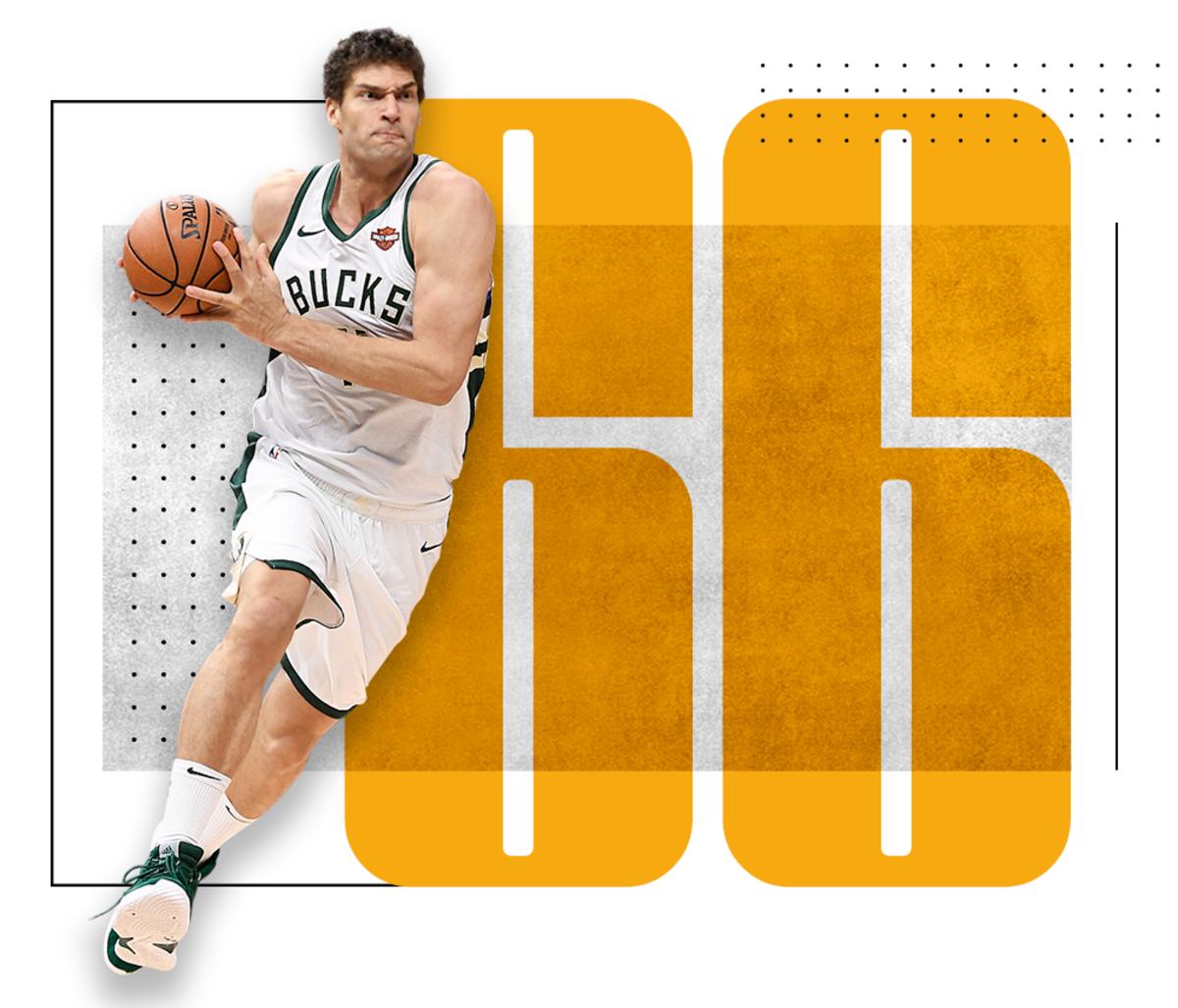
Brook Lopez
Milwaukee Bucks
The reason that so much of the NBA conversation is centered around shooting—or the lack thereof—is because no other skill has more bearing over a player’s career or a team’s prospects. Brook Lopez, who attempted more threes last season than CJ McCollum or Trae Young, stands as proof. The entire sport shifted from under Lopez’s feet, threatening to marginalize him as it had so many other centers. Instead, he refashioned himself as one of the league’s premiere stretch fives. By working above the break rather than in the corners, Lopez creates the most possible space for his teammates to operate. Then, on defense, he takes up the most possible space in the middle of the floor. It’s that capacity to stay involved that separates Lopez from so many of his contemporaries. Other shooting bigs are easily negated by smaller, more athletic defenders. Lopez, at 7’0”, will gladly bring those defenders inside to score over them. While not exactly nimble, Lopez is light enough on his feet to protect the rim. It’s a rare intersection, a player who can rank in the top three in total blocks and in the top 20 in total three-pointers made. Lopez has made it work for him.
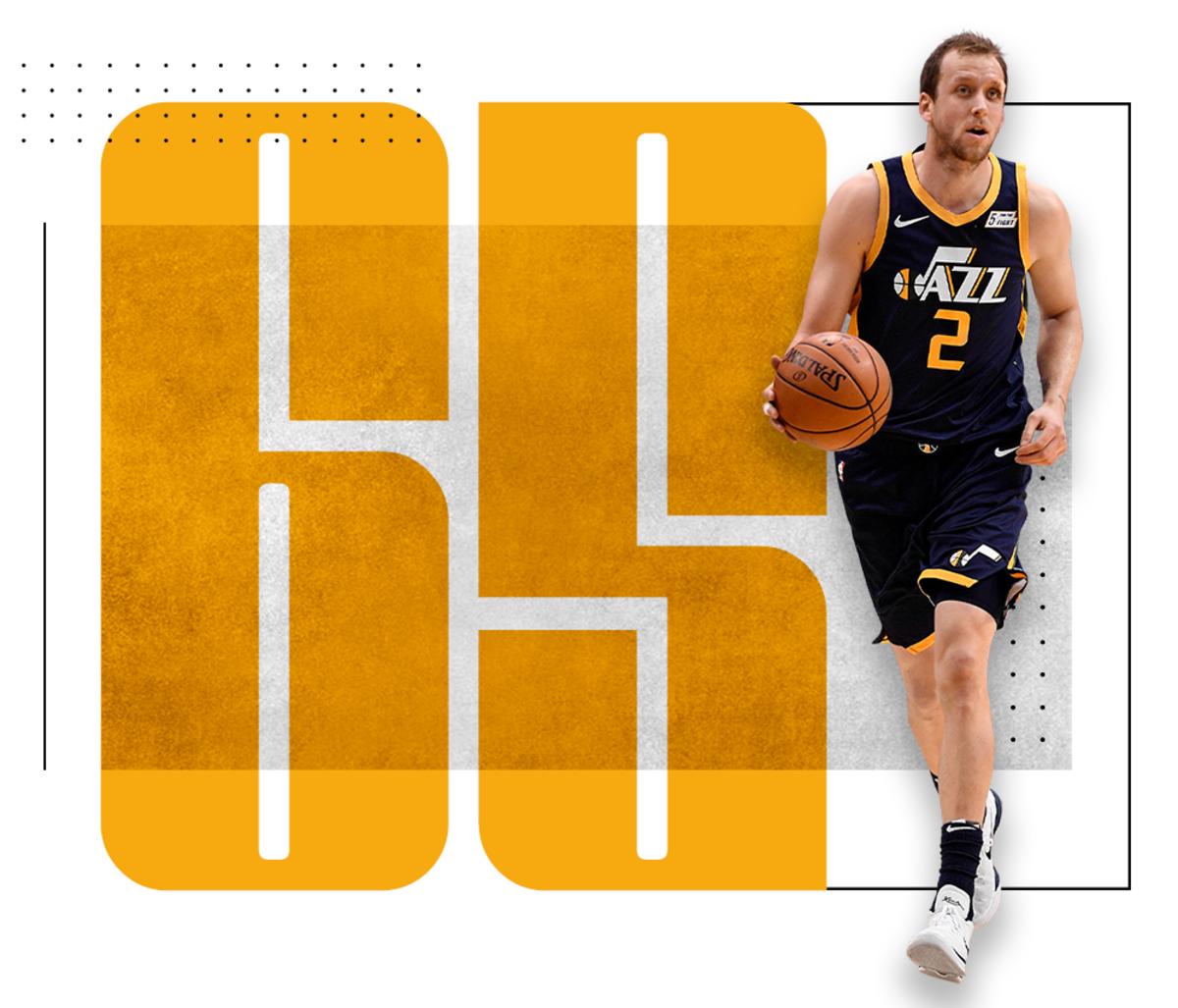
Joe Ingles
Utah Jazz
The best role players aren’t just doing a job, but defining it. Utah might not have explicitly planned for Joe Ingles to be an essential secondary creator—it just turned out that way because he was too savvy a pick-and-roll player to be waiting in the wings. So Quin Snyder turned Ingles loose over the past few seasons to find just how far his creativity would stretch. There are clear limits. In a first-round loss to the Rockets, Ingles was stifled into five of the worst games of his career. The Jazz frankly needed more than he could give; Ingles was sapped as a playmaker by defensive switches, and stuck when his three-point shot abandoned him. One of the best things about Ingles is that he knows exactly who is as a player. There is no delusion to his game. If there’s no opening, he won’t shoot. If there’s no angle, he won’t drive. That kind of restraint—born of the fact that Ingles isn’t exactly quick enough to blow past anyone—can be inhibiting at times, though it’s far more often a blessing than a curse. Let the stars be stars. Ingles will fill in where he can to make their lives simpler.
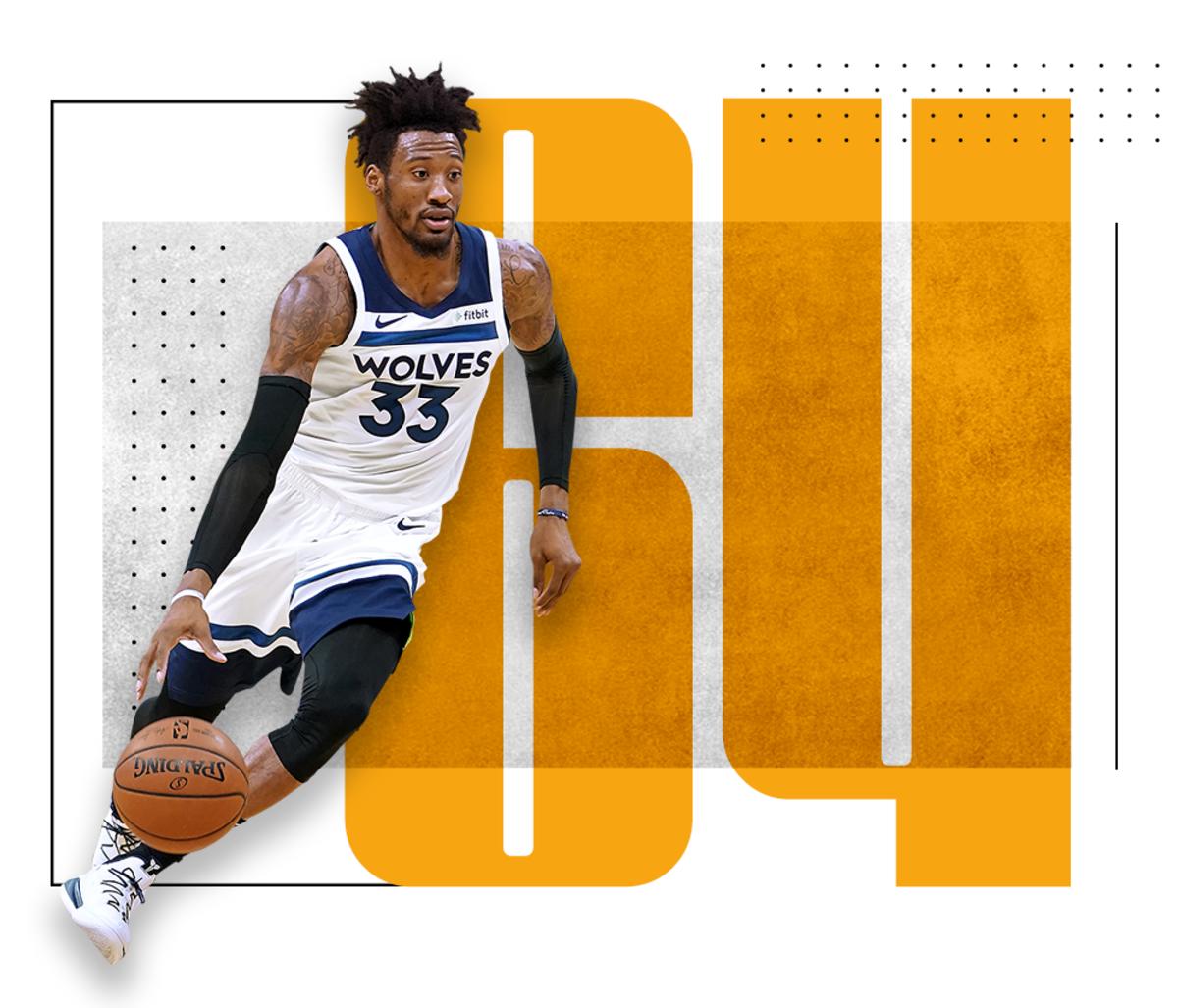
Robert Covington
Minnesota Timberwolves
There was a moment in time when Robert Covington looked like one of the best defensive players in the league. Then a knee injury derailed his season—costing him every game from January onward and ultimately requiring surgery in address. Assuming that Covington can still be most of the player he was previously, he slots in as one of the most universally helpful wing players in the league. Every team has use for a first-rate perimeter defender, in particular one with this kind of positional fluidity. Timberwolves head coach Ryan Saunders is on-record as saying that there is a “strong possibility” for Covington to start at power forward this season. What position he plays is less important than the fact that he gives you the option. Value is largely an expression of that sort of flexibility. Lean on Covington to lock down on defense and spread the floor on offense and the work of building a winning team becomes substantially easier.
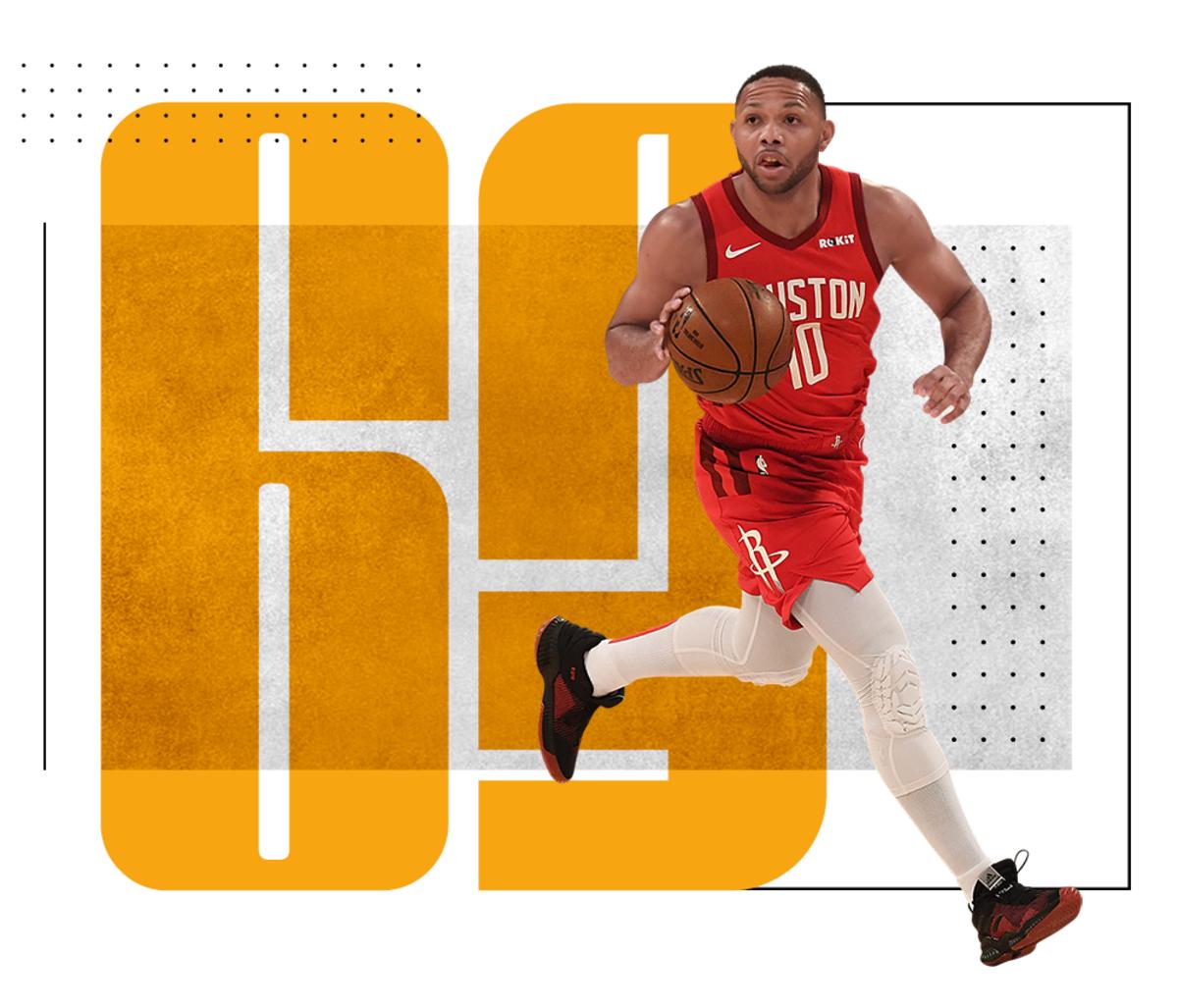
Eric Gordon
Houston Rockets
Eric Gordon doesn’t have the juice to run a team of his own. Set him up as a second or third option, however—or as a sixth man, in Houston’s case—and he can operate like a kind of star in his own right. There are complementary players who wait in the wings, passively participating in the action as it unfolds. And then there are those like Gordon, who can genuinely create for themselves. It takes self-starting scoring threats to bring an offense to balance. When the defense stretches, Gordon can quickly find its seams and pop them with a drive. If guarded by some lesser defender (as is often the case when playing alongside two stars), Gordon can work them over in isolation or out of the pick-and-roll as a variation within the offense. There are limits to how far Gordon can push his usage, but the underlying skill set is sound and reliable.
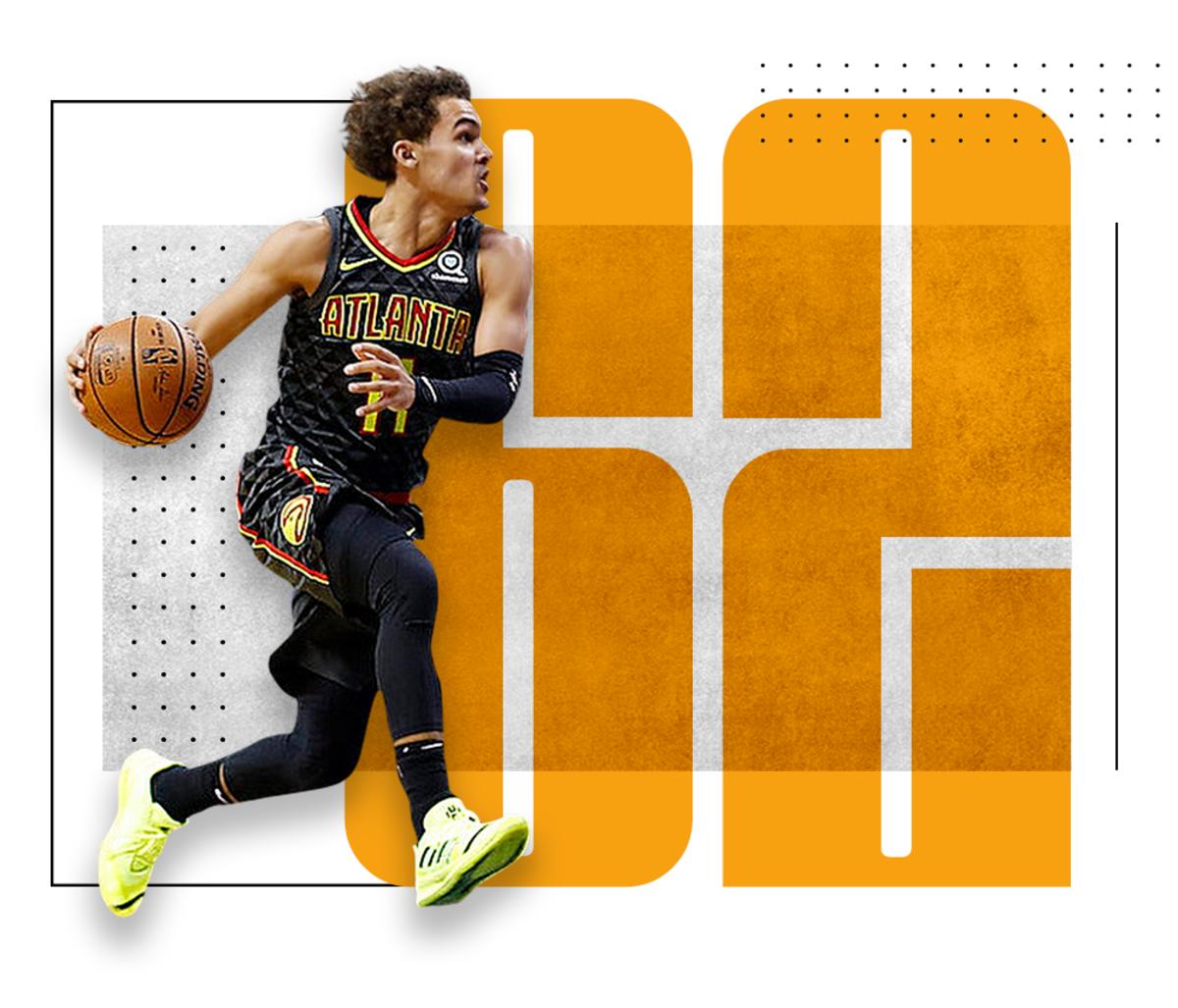
Trae Young
Atlanta Hawks
Tempting as it is to move Trae Young up this list, let’s start with a frank accounting of exactly what we saw from the rookie guard last season. Young was the lead playmaker for the 23rd-ranked offense; while running that offense, Young committed more turnovers per minute than every player in the league save for James Harden and Russell Westbrook; despite his acclaim as a shooter, Young took so many difficult threes that he shot a Mudiayan 32.4% from beyond the arc; and, in a display of lousy defense by any measure, managed to register as the worst defender in the league by defensive real plus-minus. None of this means that Young isn’t a brilliant passer or a star in the making. Rather, it’s a reminder that our collective response to high-achieving rookies—in all their thrilling novelty—can sometimes gloss over the practical realities of the sport.
Part of what makes Young so interesting as a prospect is that his game is still so far from complete. He’s learning what it means to run an offense at a professional level beyond hitting tough shots and making impressive passes. There is a subtlety to the job that can only be learned through working it—the kind that was even discernible in Young’s performance as he moved from month to month during his rookie season. Give it time. The version of Young we’ll see in action in the coming season will probably play a smarter, more polished brand of basketball by some incremental measure. He’ll also still be fun and flawed, without the clarity that comes through postseason scrutiny. Let’s not rush to make Young more than he is: a 21-year-old who sees the game through a lens of incredible ambition, with the talent to someday (or sometimes) fulfill it.
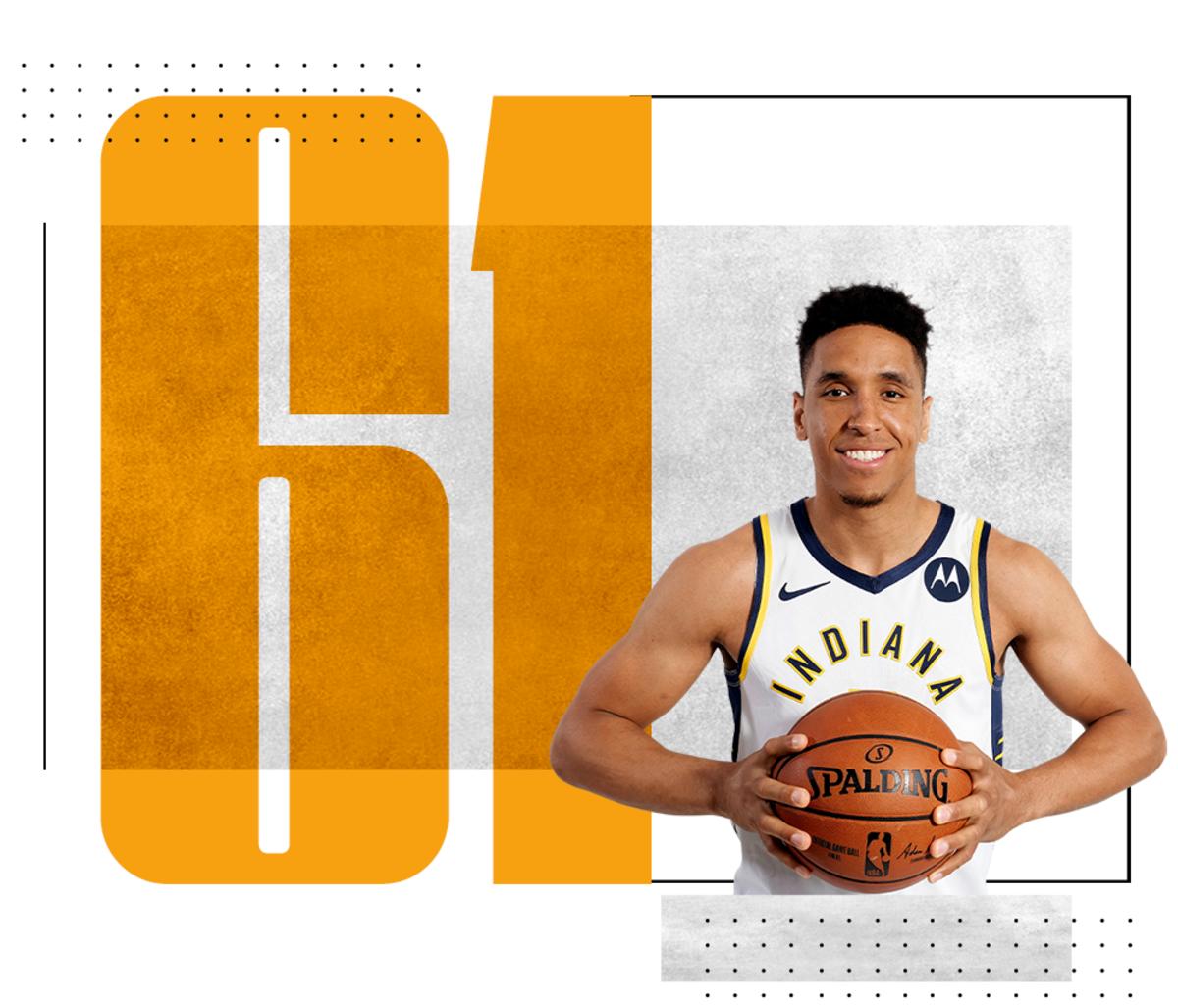
Malcolm Brogdon
Indiana Pacers
Certain players are combo guards because they lack something fundamental to playing either the one or the two. Malcolm Brogdon is a combo guard because he satisfies both positions equally, allowing him to be paired with a guard of almost any kind. If his team needs him to run an offense, he can do so proficiently. If it’s better served by playing Brogdon off the ball to spot up for threes and run secondary actions, so be it. Nothing about Brogdon’s game demands center staging. That allows a team better access to its best possible lineups, without concern for undercutting a sure-handed guard ready to fill his role. Brogdon has just enough defense (with a 6’5’’ frame), shooting (42.6% from three), and shake (Brogdon averaged an impressive 19.7 points per 36 minutes last season) to bring most any lineup together.
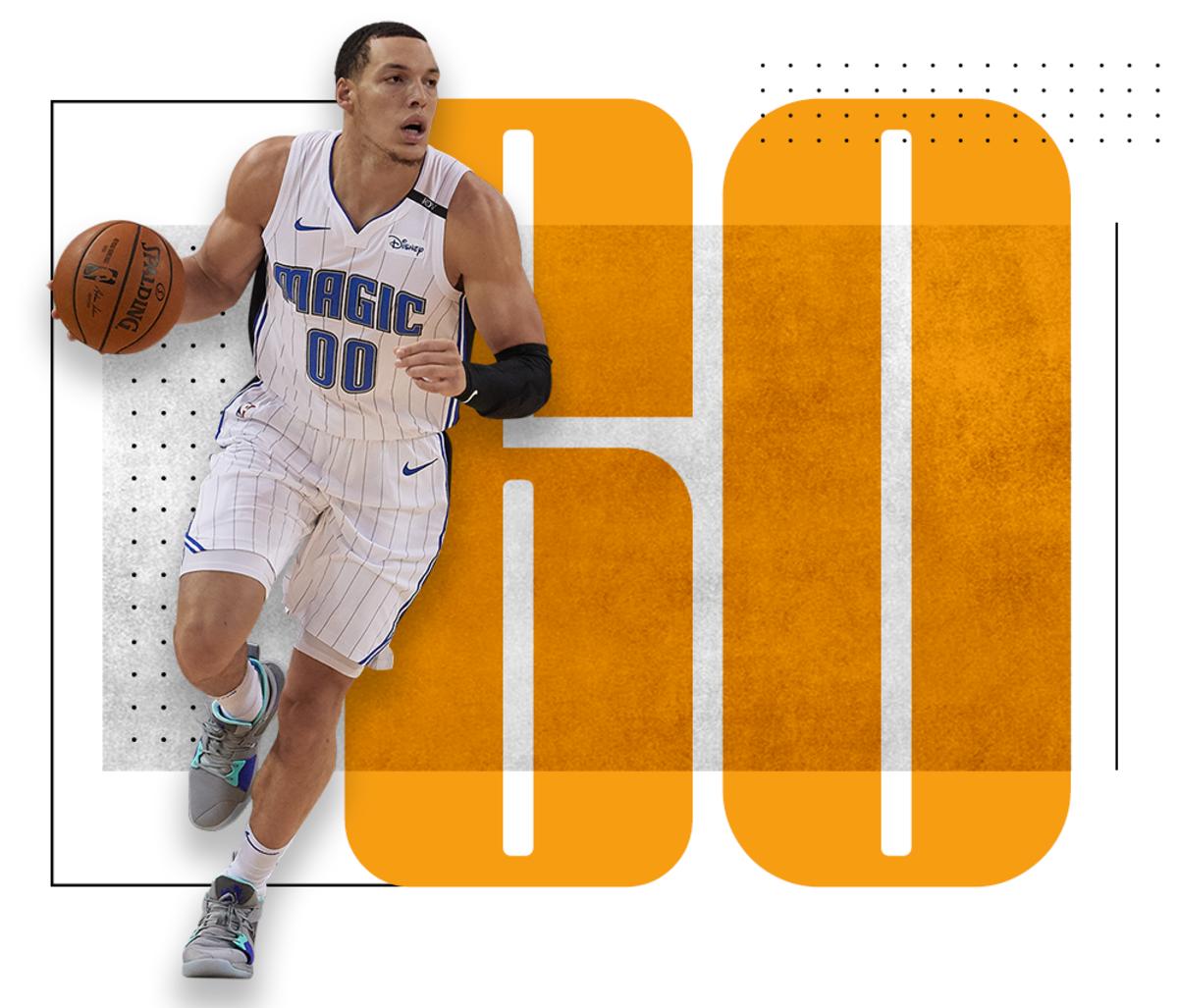
Aaron Gordon
Orlando Magic
There’s quite a difference between Aaron Gordon as a member of the Orlando Magic and Gordon in a vacuum. The former has spent the past few seasons pushing on the edges of his game, in large part because his circumstances demand it. Even a great team can only sustain so many players working in the same ranges and moving through the same spaces, much less the sort of team that relies on D.J. Augustin as its top playmaker. It’s telling that Gordon has been fairly effective even in those circumstances. Were he given more room to work, some of the awkwardness in his game would be overwritten by activity. Installing Steve Clifford as Orlando’s coach gave the offense—and Gordon—a more sensible rhythm, but only so much can be done with all the Magic’s frontcourt redundancies. It’s the prospect of what Gordon might be capable of in a completely different setting that makes him tantalizing. Could he chart a developmental course to mirror Draymond Green? Or Blake Griffin? If he played with more pace, would his game take after someone like Pascal Siakam? We’ve glimpsed just enough of Gordon’s talent to know there’s more beneath the surface, and seen enough of his gaffes to wonder if unlocking his game would really be that easy. Players like Gordon are always party—in some way or another—to their own inconsistency.
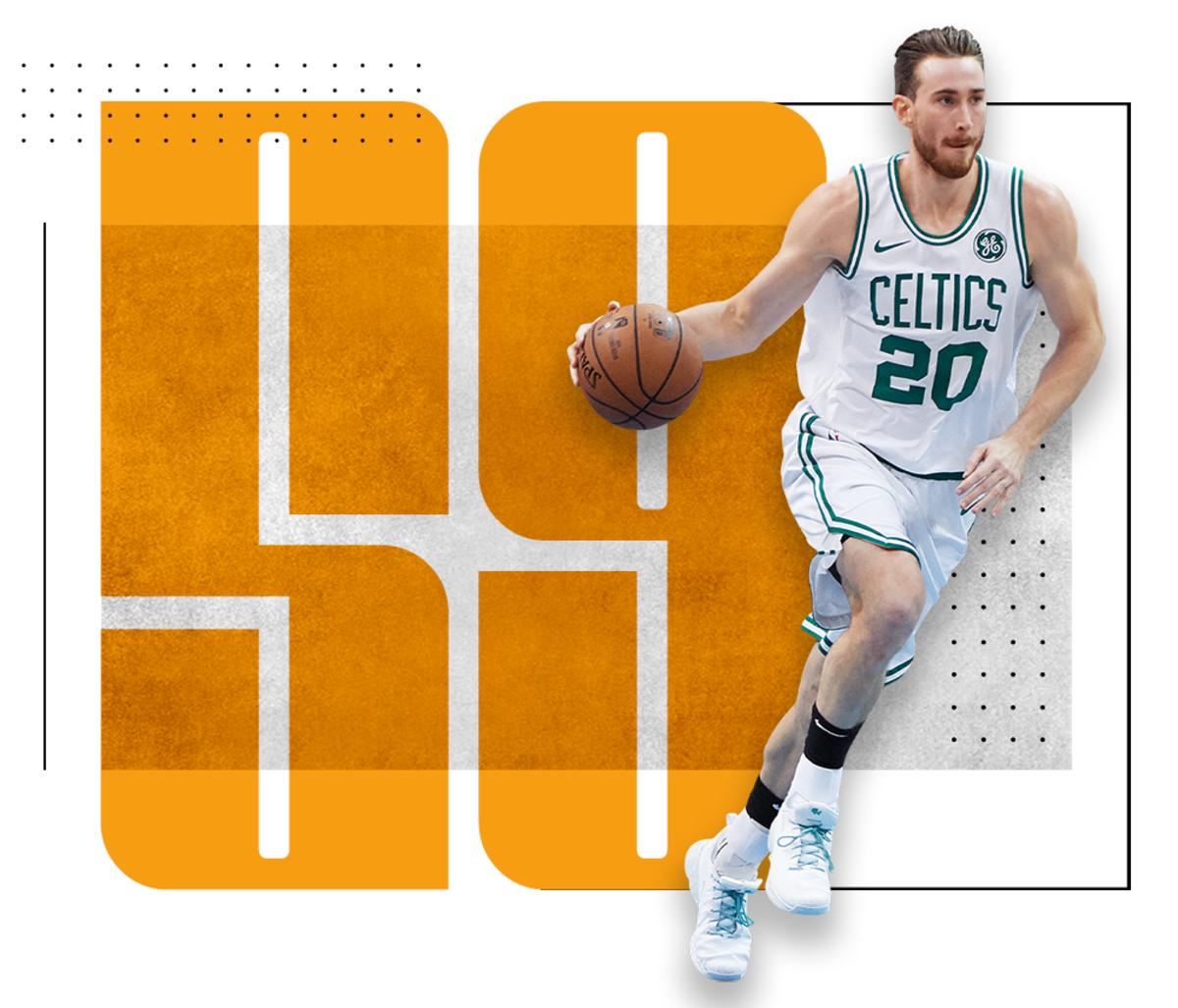
Gordon Hayward
Boston Celtics
To say that Gordon Hayward underwhelmed last season is putting it kindly. Perhaps we should have known better when the Celtics were downplaying things from the start, insisting even before the season that Hayward’s first year back from a fractured leg and dislocated ankle would be a deliberate process. It certainly was; Hayward looked himself only in flashes, after which he would recede from view. The problem wasn’t that Hayward’s contributions were quiet or subtle. They were flatly insufficient. A ranking like this one assumes that Hayward, another year removed from devastating injury, will more closely resemble his better basketball self. Any optimism must be couched. We projected too much too soon in ranking Hayward in the top 30 a year ago. Placing him at 59 reflects both the star he was in Utah and the fickle contributor he’s been since. Even if Hayward’s days as a star really are over, it seems fair to give him one more season to prove it so. Expect him to make a big move in the Top 100 of 2021, one way or another.
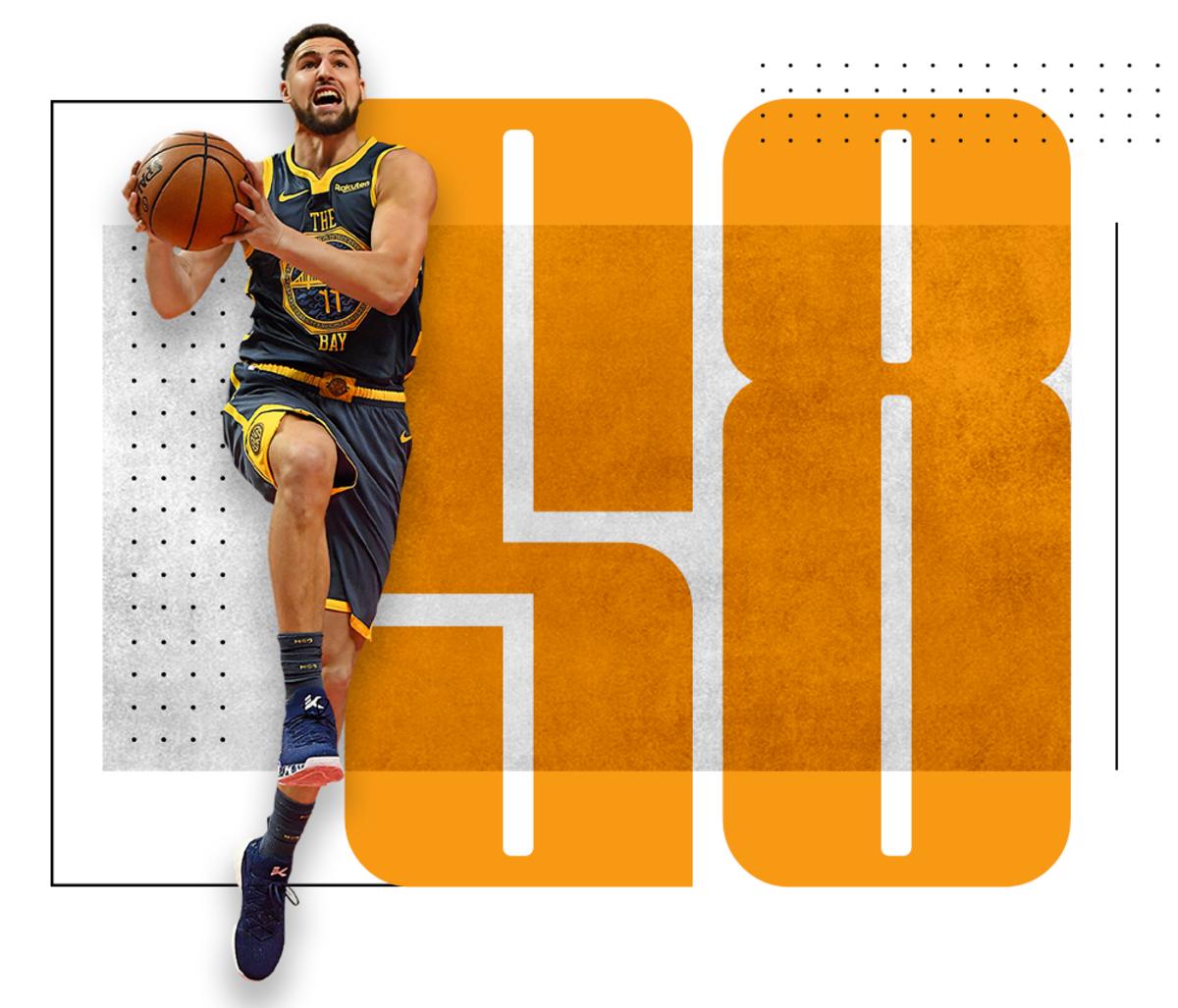
Klay Thompson
Golden State Warriors
How does one rank a talented, resilient player on his way back from a major knee injury? For as effective as Klay Thompson is, the realities of a torn ACL are overwhelming. An extended period of recovery is followed by arduous rehabilitation, then a muted return and a slow grind back to full form. Every knee responds to each of these stages in its own way. In a best-case scenario, Thompson could be back by March. Yet as Kevin Pelton noted for ESPN.com: "In the past five years, no player has come back from an ACL tear in shorter than 11 months." The 11-month timetable from Thompson’s injury would pencil in a return for mid-May, nearly a month into the playoffs. What qualifies Thompson for this ranking in spite of that is the understanding that he’ll commit himself fully to the rehab process; how quickly he’s been able to reacclimate once returning from previous injuries; and just how valuable his defense and shooting are in the games that matter most.
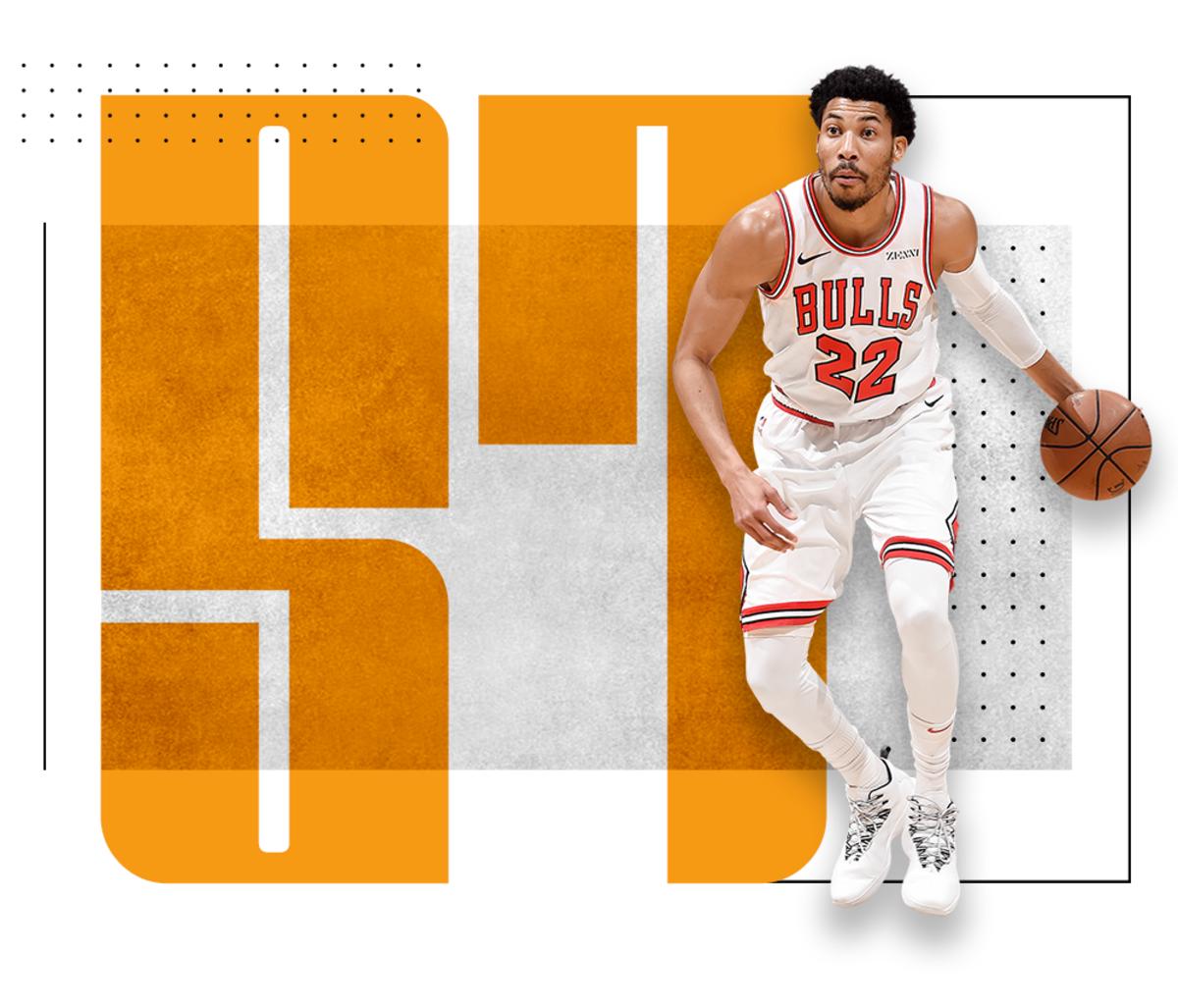
Otto Porter
Chicago Bulls
This is an interesting time for Otto Porter, who just turned 26 years old and is finally starting to show some creative flourish. What held him back wasn’t solely a lack of opportunity; there were times when the short-handed Wizards were desperate for Porter to take the next step, but watched instead as he floated along the game’s margins. The kind of force Porter showed in 15 games in Chicago could set him on a different path. At worst, Porter can be a strong defender at either forward position and a genuine spacer. There were only a dozen players 6’8” or taller last season to shoot 40% from beyond the arc. Porter, at 41% for the year and 49% with the Bulls, ranks among them. Any variance beyond that demands a willingness to press. Working his handle could help Porter get to new spots and create more often for his teammates. Making his first move more quickly might help a somewhat stiff creator get the space he needs. There’s no way for Porter to grow without first embracing the uncomfortable, embracing the world beyond the background role he knows so well.
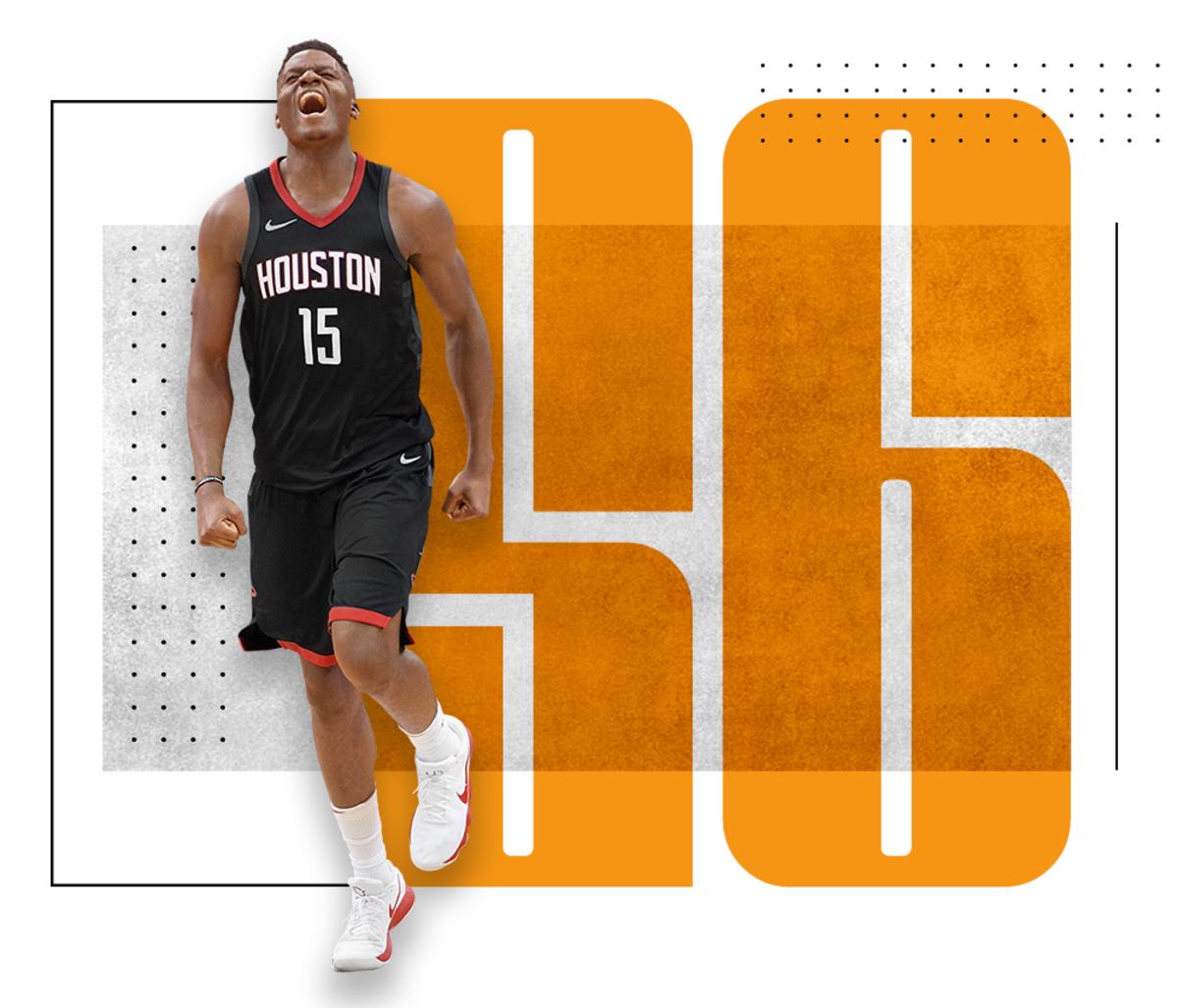
Clint Capela
Houston Rockets
The Warriors presented a fairly catastrophic playoff mismatch for Clint Capela, who was otherwise reliable and efficient last season under more typical circumstances. In fairness, he’s far from the only big to struggle with the prospect of defending Stephen Curry. Yet the fact that Capela can be played off the floor—even if in rather extreme situations—does diminish his value relative to other wings and guards. Every big in today’s game needs a way to leverage their size against smaller players. Capela is still finding his, particularly when the smaller opponents in question can deny him clean rolls to the rim. Provided the opposing team doesn’t have the best shooters in the world and one of the best small-ball bigs of his generation, Capela more closely resembles the player (16.6 PPG and 12.7 RPG) he was in the regular season. How one feels about Capela typically comes down to the needs of the moment. In the wrong series, the flaws in his game can feel devastating. Over the rest of the calendar, his rolls to the rim might be the weapon that busts an opponent’s defensive scheme—and that’s without considering his contributions as a rebounder and shot-blocker.
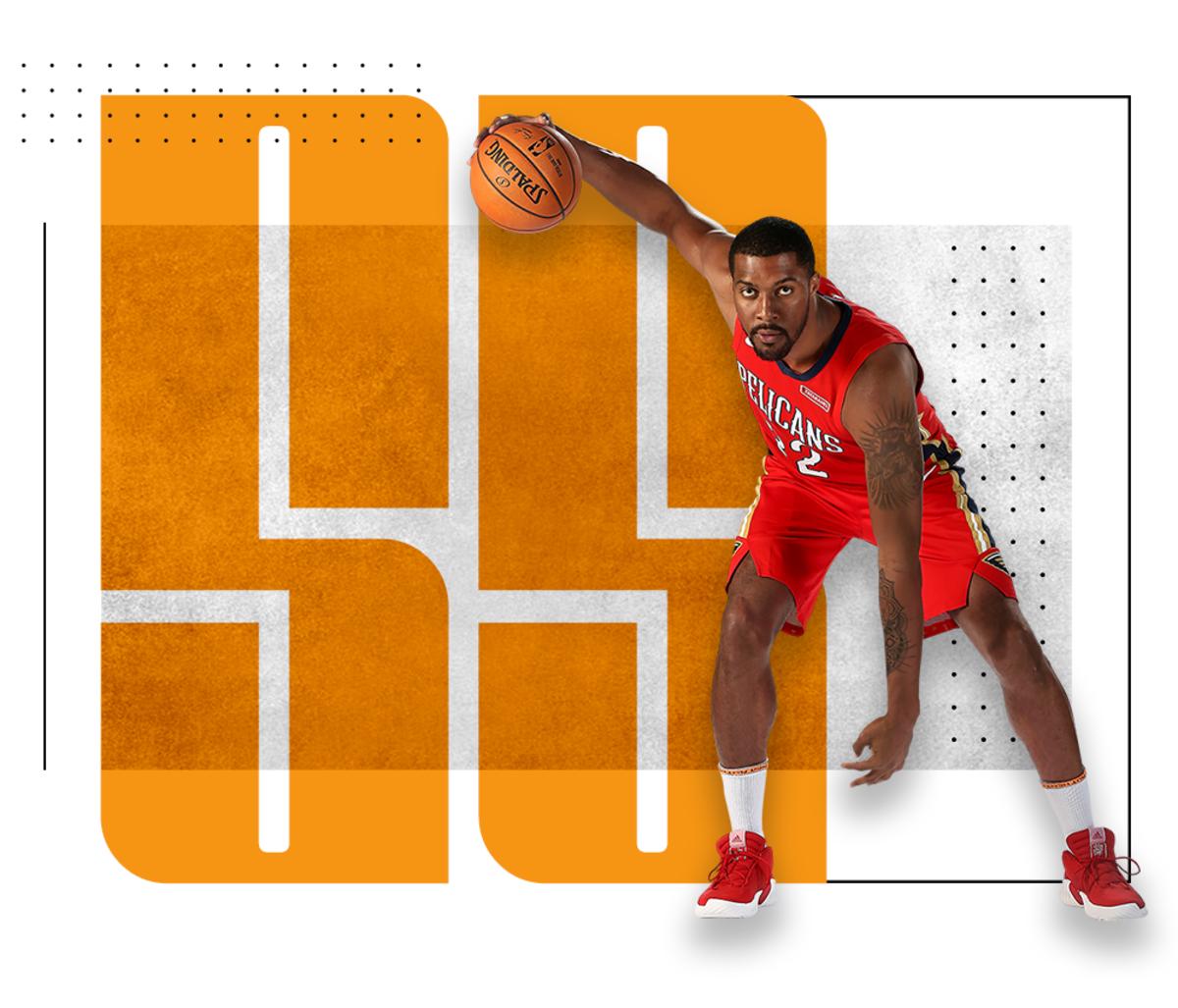
Derrick Favors
New Orleans Pelicans
Derrick Favors has played out of position for years, doing what he could for the Jazz even as the NBA evolved around him. Those in Utah would be the first to tell you that pairing Favors with Rudy Gobert was a marriage of convenience. On any other team, Favors is a full-time center—a role that allows him to play to more of his strengths without putting so much pressure on his jumper. What is it that an NBA team wants in a modern five? If it’s rim protection, Favors has shown he can suppress opponents’ percentages around the basket and ranked eighth in the league in block rate, ahead of Joel Embiid. If it’s defensive flexibility, then Favors is among the more switchable of the center set. If it’s a pick-and-roll game, consider that Favors blended rolling and popping to finish third in efficiency last season among high-usage roll men, per Synergy Sports. If you’re looking for a big who can punish switching defenses, then check out the way Favors turns a short roll into an impromptu post-up. No one would soon confuse Favors with a superstar. He’s just a big with the range of skill to give his team options and the knowledge to execute whatever he’s asked.
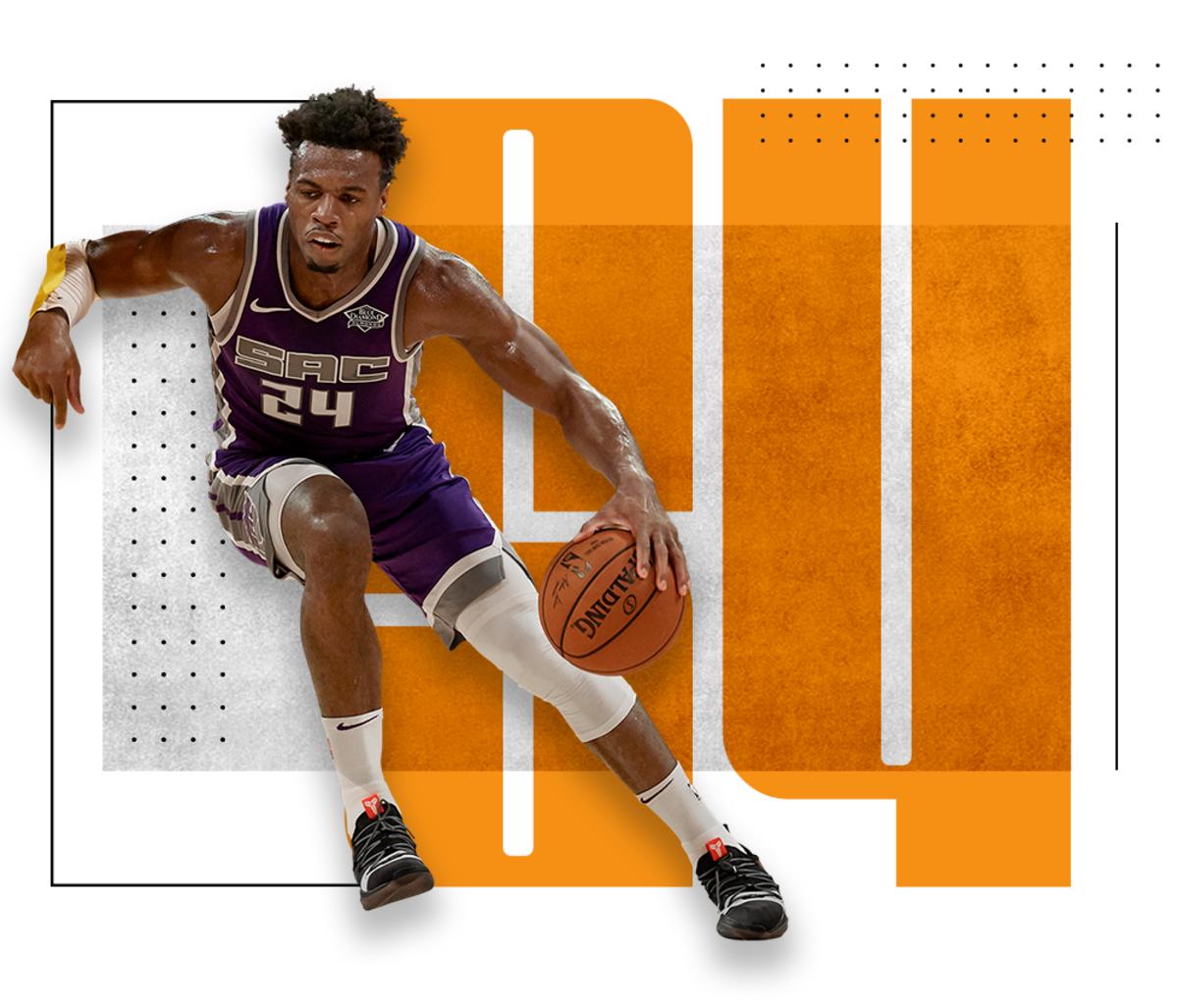
Buddy Hield
Sacramento Kings
The only other player to make as many threes as Buddy Hield did last season (278) at the same percentage (42.7%) or better is Stephen Curry. Even if we account for the fact that volume three-point shooting is a distinctly modern art form, that at the very least makes Hield a virtuoso among his peers. He stands as proof of the power in unflappability. Hield will take pull-up threes in transition, line up a shot one-on-five, or fire without regard for a closing defender. Shooting with that sort of abandon is its own sort of dynamism. Hield can put pressure on a defense just by running the floor, and does so tirelessly. Any movement risks Hield—whose form is as smooth and swift as any player in the league—punishing the defense with a quick three, effectively forcing their hand. The NBA has its share of great shooters. Becoming a 20-point scorer based on that shooting, however, requires all sorts of supplemental skills (ball-handling, footwork, intuition, timing, and balance, to name a few) that Hield has in spades. Now, about that defense …
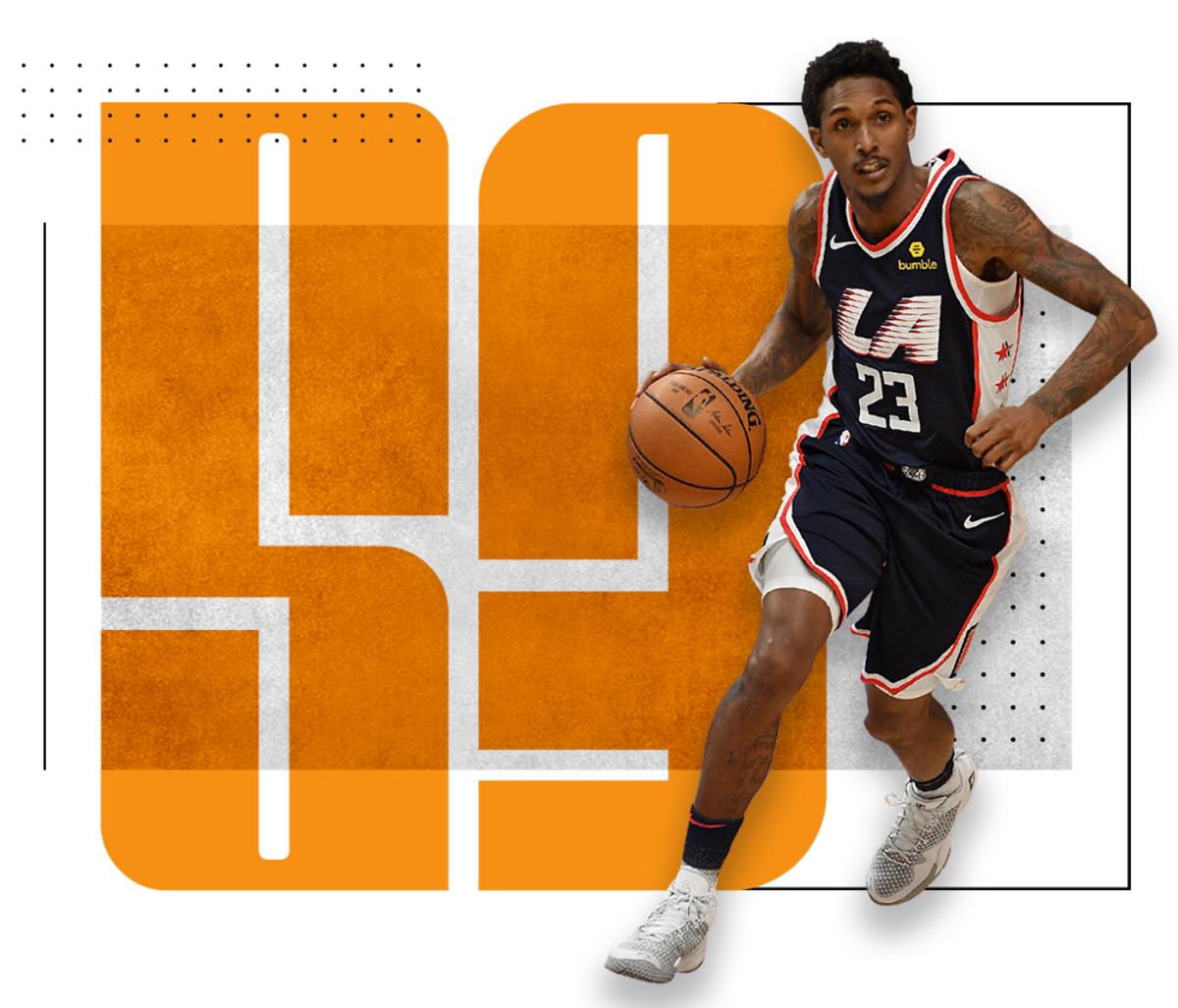
Lou Williams
Los Angeles Clippers
While other top scorers make requests behind the scenes concerning when they enter games and how long they stay in them, Lou Williams asks little of his team save for some room to cook. The man is NBA bench royalty: a genuinely awesome creator who will get his buckets anytime, anywhere, and against any opponent. There’s nothing quite like the dejection of a defense once it realizes that nothing can be done to combat one of Lou’s hot streaks. Defender after defender—each even more eager than the last—will bite on his fakes. Those that stay down will still give Williams too much room for his sidestep jumper, a marvel of creation and a precursor to James Harden’s even more extreme stepback. Williams is such a dazzling scorer that you might even be tempted to overlook the fact that he barely plays defense. Ask him about coverages and Williams will defer to his teammates in full acknowledgement that it’s not exactly his area of expertise. He’s here to score. And the reason it works is because Williams, unlike other aspirational gunners, has the firepower to change the course of a playoff series—just like he did in last year’s first-round bout with the Warriors.
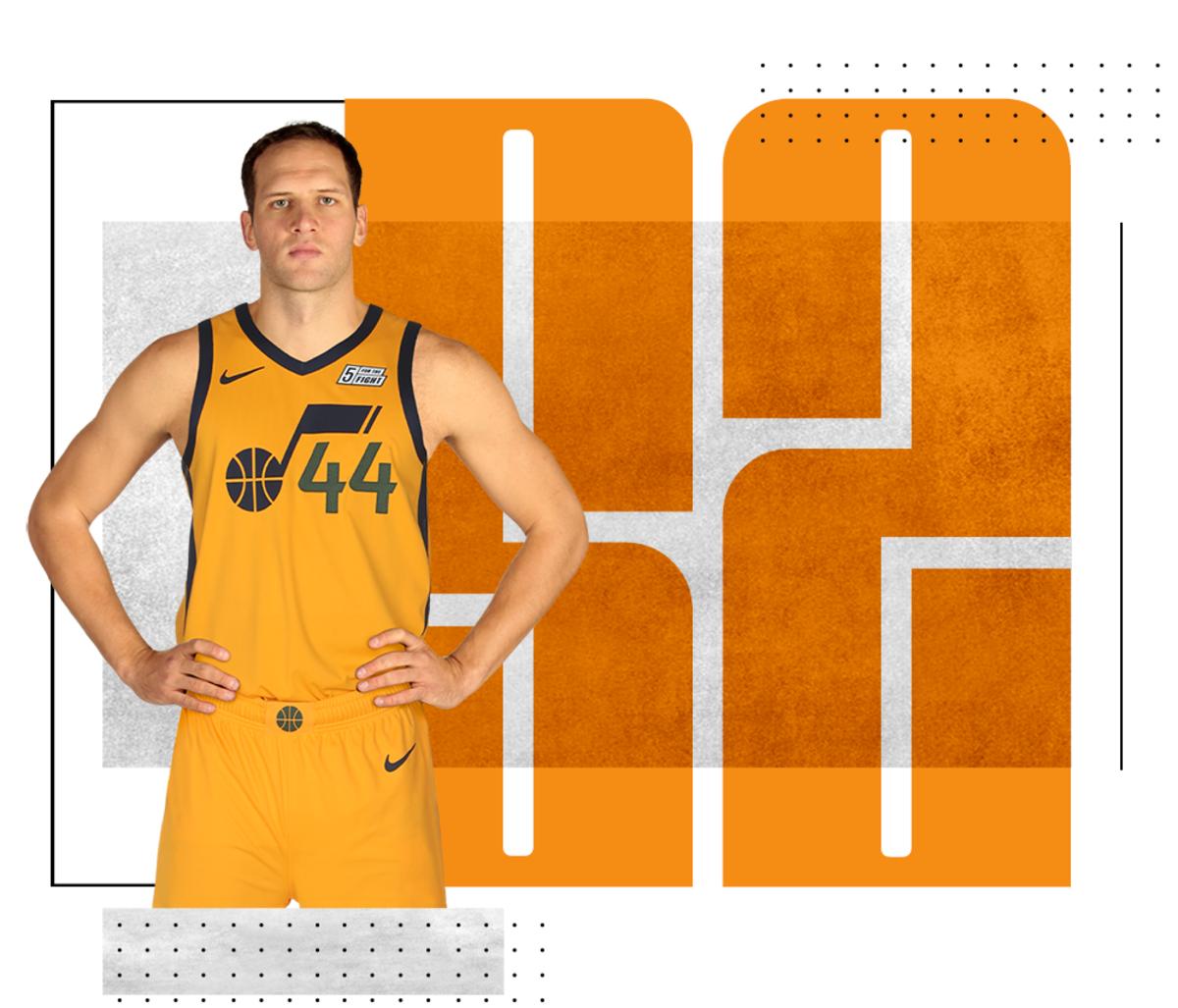
Bojan Bogdanović
Utah Jazz
We really can’t say enough about the fact that following Victor Oladipo’s season-ending injury, the Pacers yoked their offense to Bojan Bogdanović and made it to 48 wins. Their season was a collective triumph, but everything would have fallen apart had Bogdanović not been able to scale within his role. It’s easier said than done. Even some of the best perimeter shooters in the league can be limited by overplaying defenses. Bogdanović has the counters needed to work around that sort of pressure: the backdoor cuts, the step-through moves, and the handle to turn a potential three into a downhill drive. That full suite of skills allowed Bogdanović to fake his way as a first-option scorer for a time, but he’s more comfortably cast in the kind of supporting role he’ll find in Utah. In that regard, it’s nice that Bogdanović isn’t just a shooter. Indiana’s coaching staff held Bogdanović accountable on defense and brought his coverage up to their standards. The fact that Bogdanović can run a pick-and-roll gives him added appeal as a secondary creator, perfect for when another star is crowded or doubled. The same qualities that enabled Bogdanović to stretch his role for the Pacers give his game some elasticity across the board.
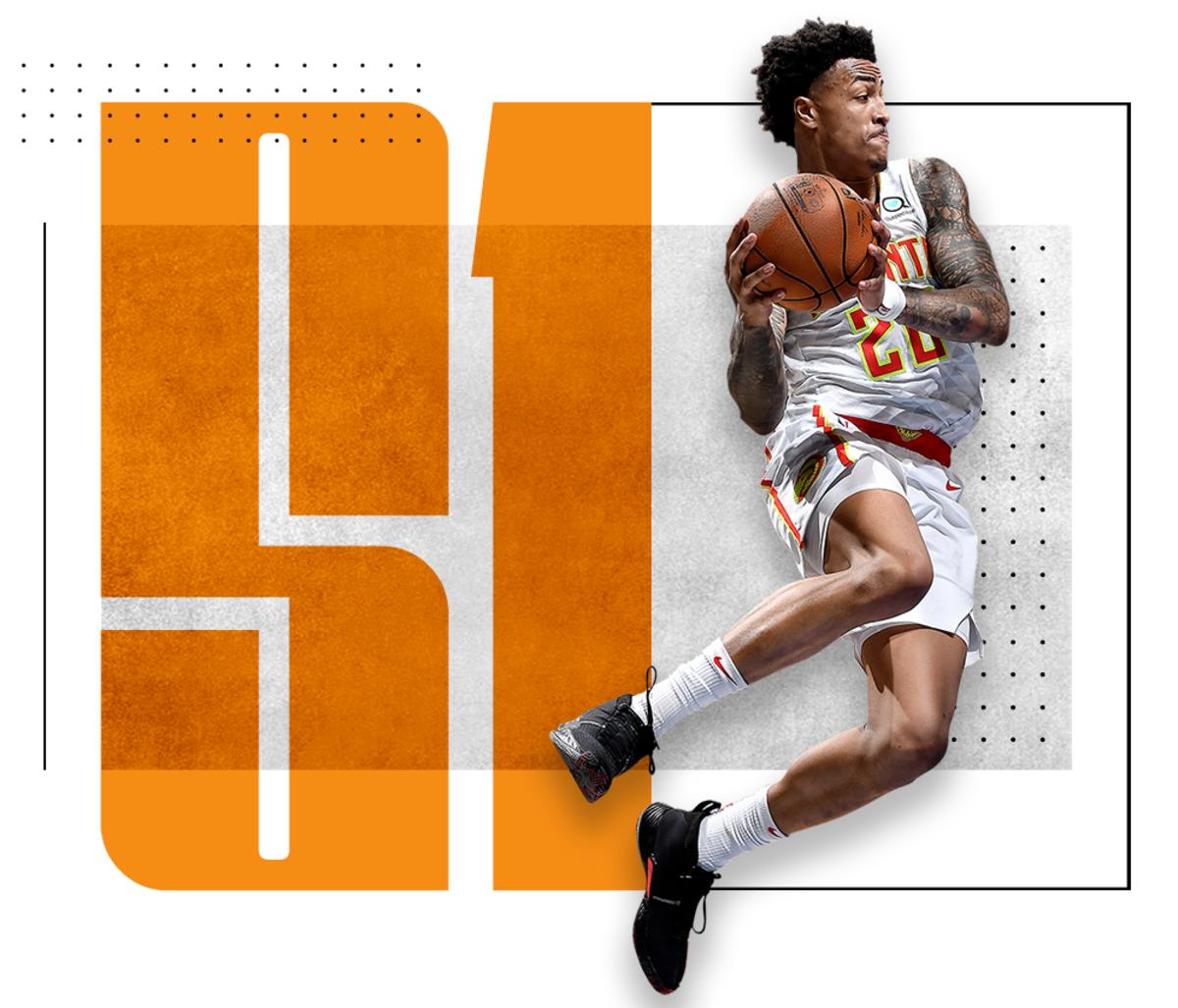
John Collins
Atlanta Hawks
This feels like the year that John Collins enters the public consciousness. There’s something in his game for everybody. Collins’ high-flying dunks give him some sugar-coated pop appeal; a blooming off-the-dribble game makes him a fascinating experiment for the die-hard crowd; and the Hawks’ upward momentum (along with Collins’ own Giannis-lite aspirations) make for some great narrative fodder. The main reason that the world should take notice is that Collins (who came within a rounding error of averaging 20 and 10) is a really good basketball player coming into his own. The reason they likely will is that he’s fun as hell to watch. If there’s any real sticking point, it’s the depth of what we can’t yet know. Evaluating any young player is difficult until we’ve seen them in a postseason setting, where the cost of every limitation is made real. It’s not yet clear what Collins’ best position might be, or what role he could play in a high-level defense. These aren’t demerits so much as caveats. Give Collins credit for thriving in the role he’s had. There’s just a different burden of proof where stardom is concerned, and that’s the category where he’ll soon find himself.
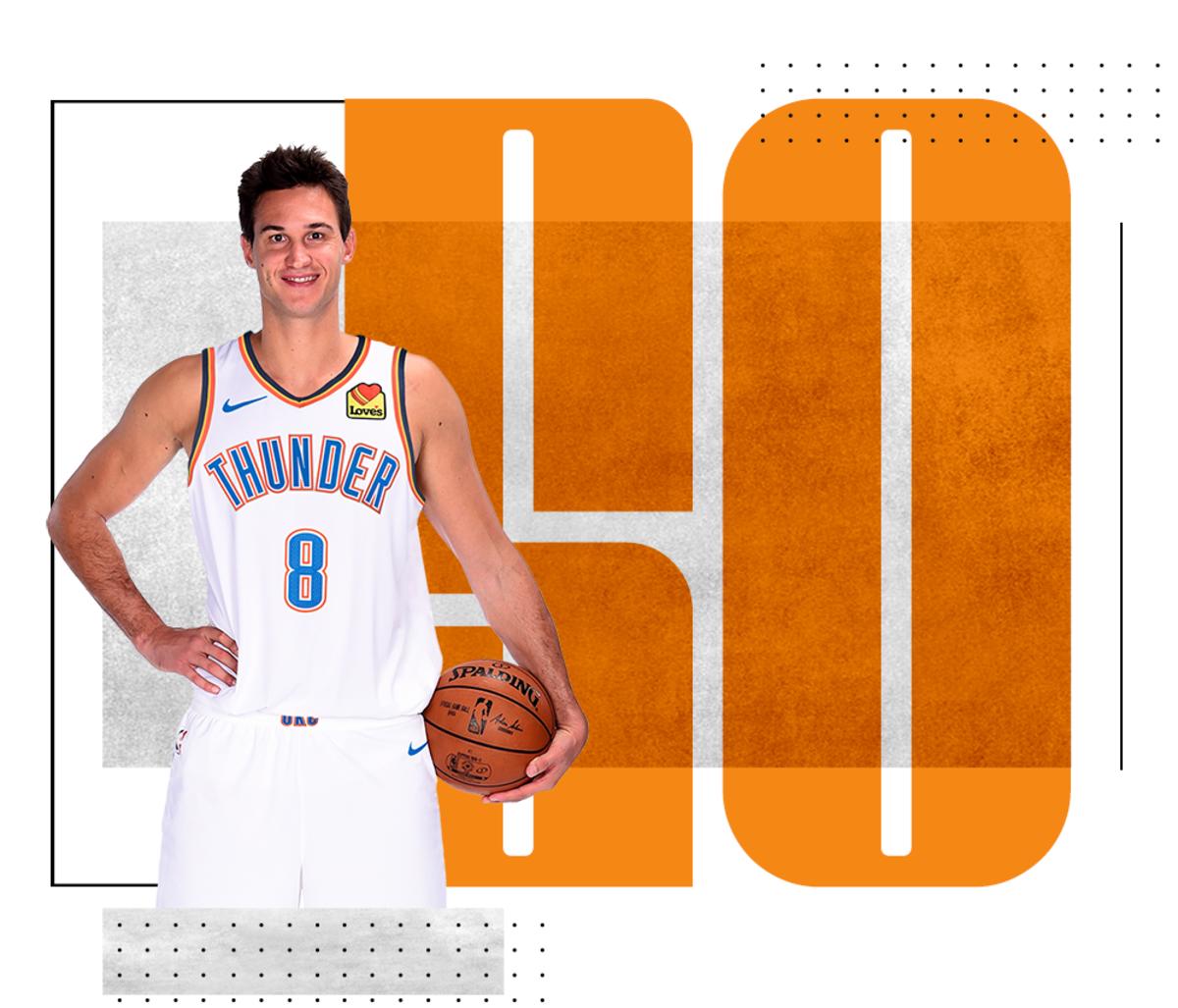
Danilo Gallinari
Oklahoma City Thunder
Danilo Gallinari is something of a wonder: a forward so amorphous as to avoid any real role or definition, and yet somehow effective in every phase of scoring. Even in understanding that Gallinari is a good shooter, it might come as a surprise that he ranked fifth (44.3%) in three-point percentage last season. You might not think of him as a productive post player or a brilliant pick-and-roll scorer, but Gallinari was both for the Clippers last year, in part because of how masterfully he creates contact. There is something conceptually challenging about a player who can get to his spots without blazing speed, a smooth handle, or some unstoppable move. Scoring in that way demands a disconnected sort of creativity—starts and stops, bumps and pivots, forever and ever, amen. Even if it’s not visually striking, there’s only so many ways to talk around the fact that among volume scorers, only Giannis Antetokounmpo and Stephen Curry were more efficient than Gallo was last season.
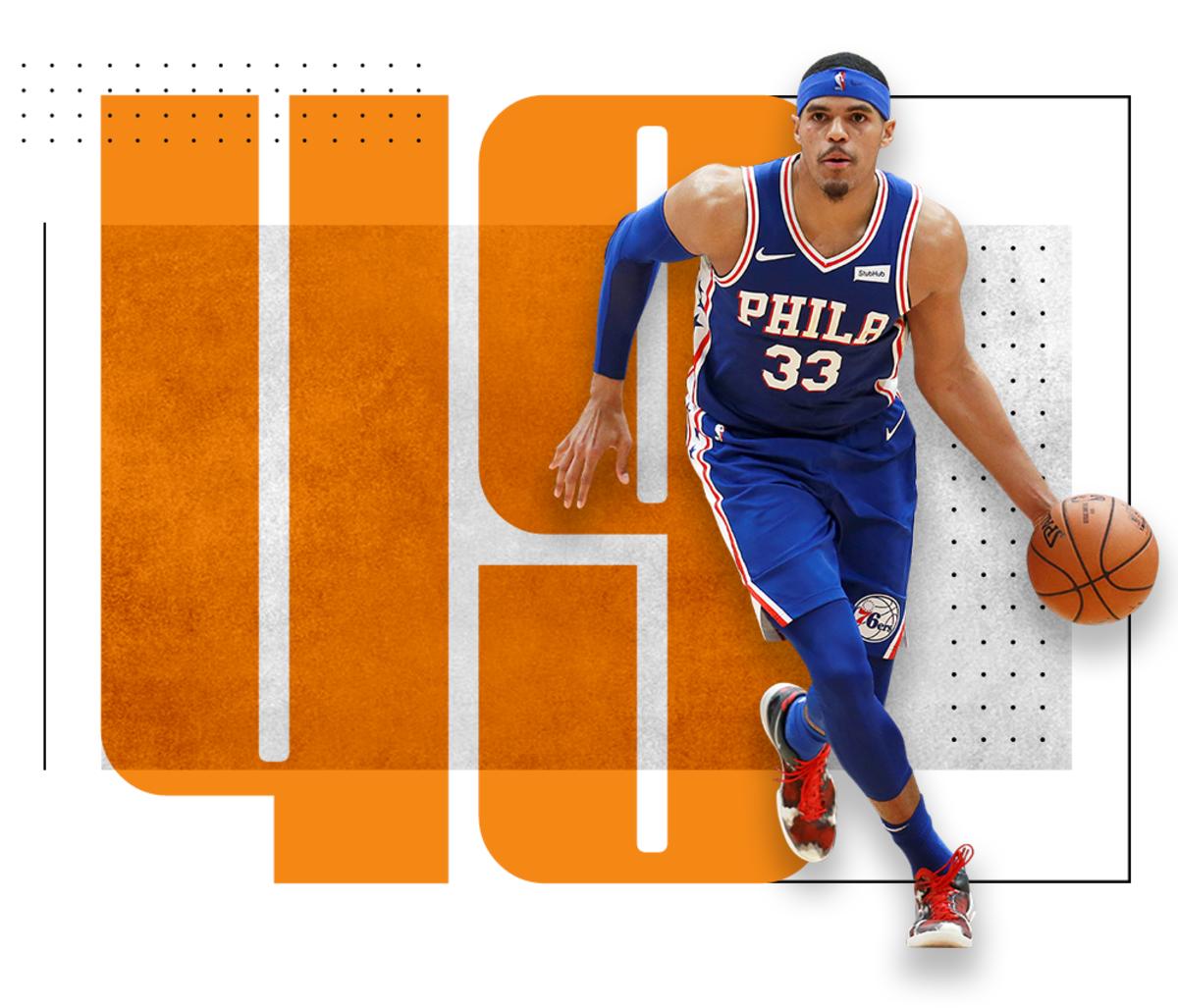
Tobias Harris
Philadelphia 76ers
It’s hard to overstate just how jarring the transition would be from co-headlining a fairly standard NBA offense with the Clippers to working as a third or fourth option for the Sixers, who rely on one of the most idiosyncratic systems in the league. Tobias Harris is perhaps at his best when initiating the pick-and-roll, a format that Philadelphia utilizes less frequently than any team in the league. Gone were the improvisational drives, the smooth pull-up jumpers, and—on the other side of the two-man game—the pick-and-pop looks that had rounded out his game in Detroit and Los Angeles. It’s not that Harris is incapable of playing the way the Sixers want to. We’re talking, after all, about a big with solid ball skills and footwork who shot 40% from three last season. But a change that dramatic has the power to throw a player out of his natural rhythm, just as it did Harris. Given enough time, Harris has the tools necessary to find his way in any system. The Sixers seem to agree, having bet $180 million on the prospect.
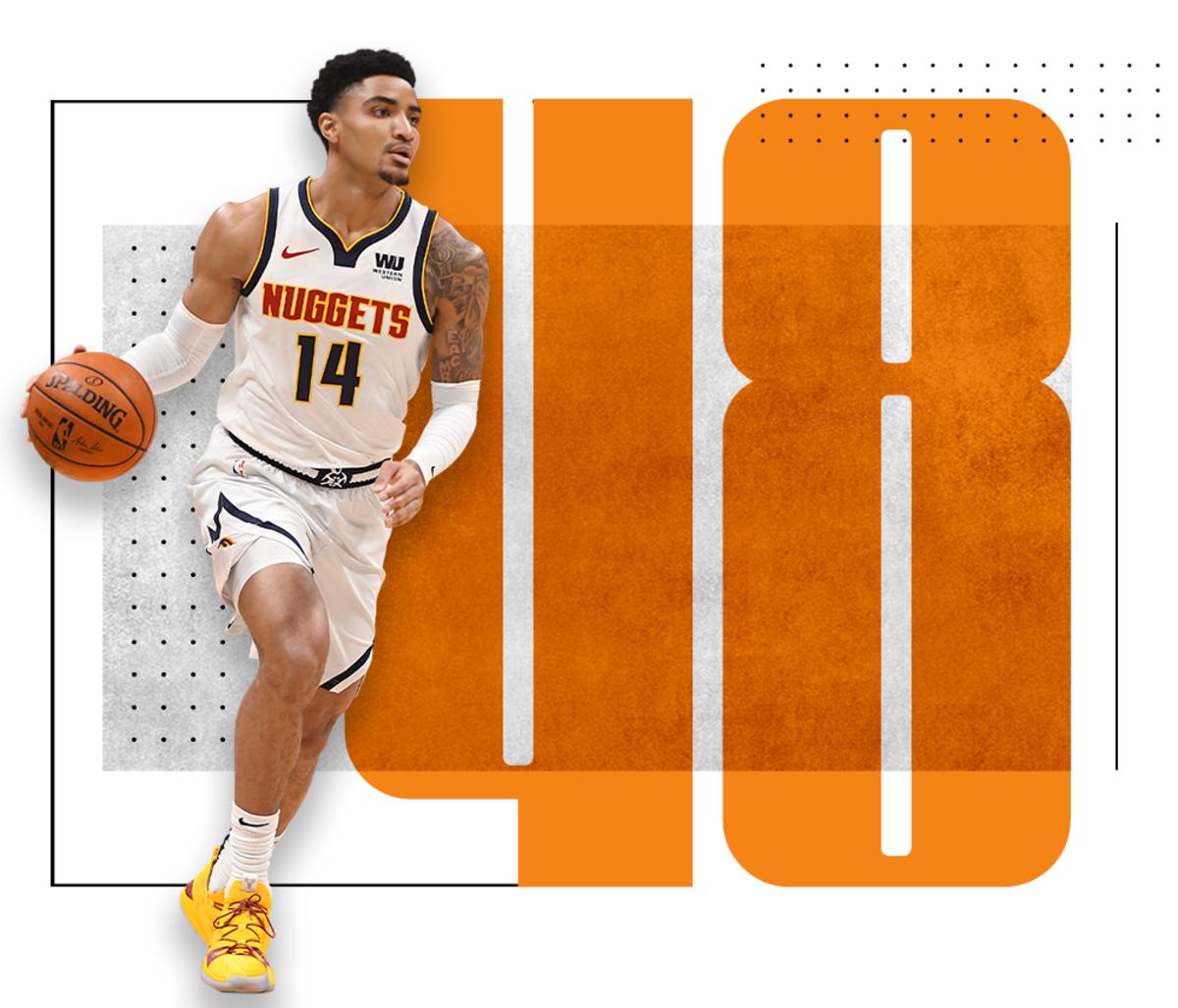
Gary Harris
Denver Nuggets
Don’t let a frustrating, injury-challenged season confuse just how good a player Gary Harris can be. In a league where even the most rudimentary two-way wings have value, those who move and cut like Harris can elevate an entire offense. Beyond that, Harris has initiative—a quality that keeps him cutting and curling and exchanging, thus requiring multiple defenders to keep tabs on his whereabouts. This is especially potent when Nikola Jokić, the man initiating Denver’s offense, would love nothing more than to lead Harris down the baseline with a perfect pass. But really, the kind of organic, off-ball movement Harris brings would add complexity to any offense. There are only so many players who can space the floor, navigate it fluidly, and work as a secondary creator. It’s a rare mix for a reason, considering that players who operate with the ball and without it tend to develop along different tracks. Harris is something of an exception—an intersectional player with both the skills and the understanding to contribute in a wide variety of ways.
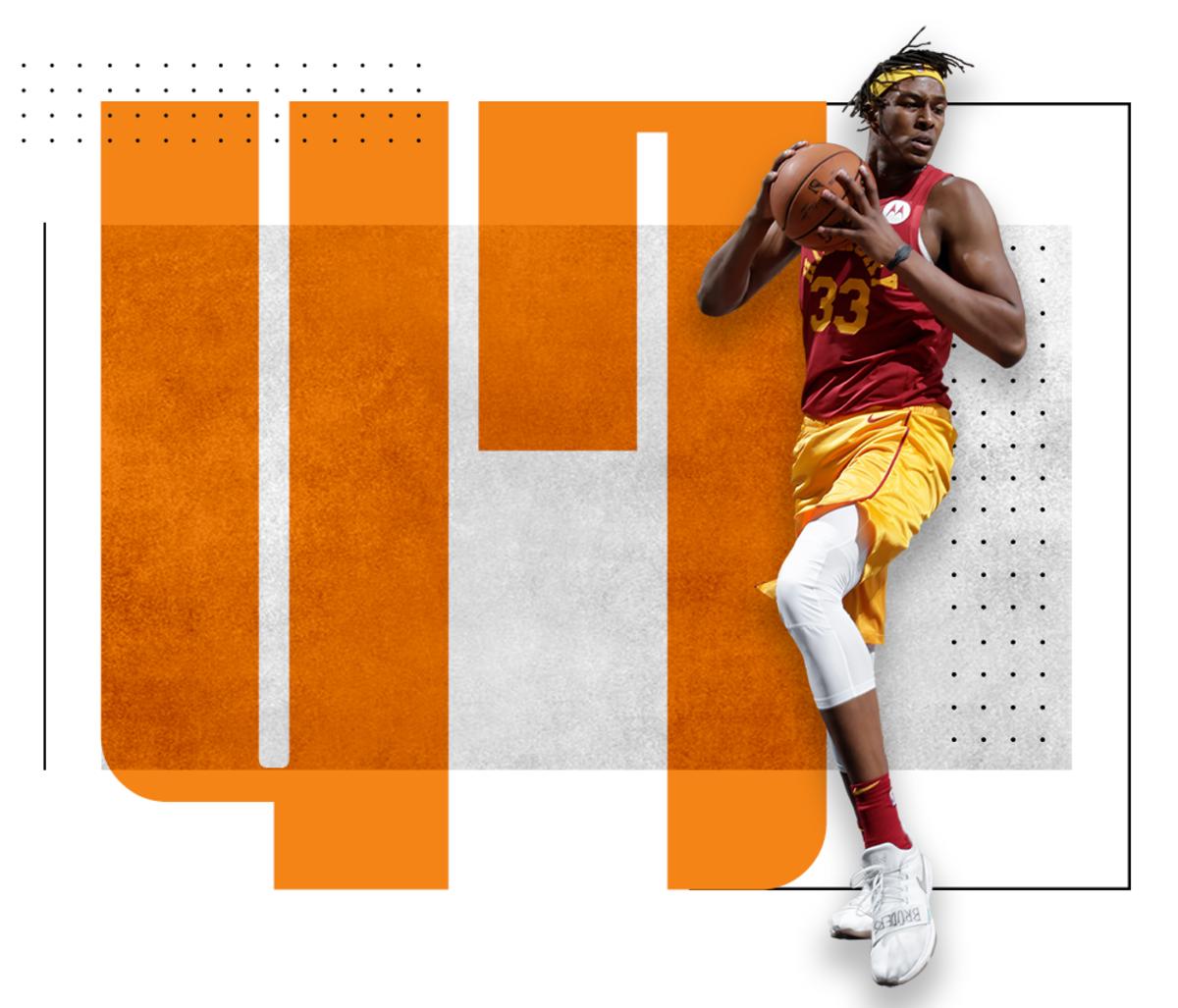
Myles Turner
Indiana Pacers
This was a pivotal year for Myles Turner, who rounded the corner from blocking shots to properly anchoring a defense. Typically when we talk about the game “slowing down” for a developing player, the idea comes in reference to offense—a point guard better reading the rotations out of a pick-and-roll, for example. Yet Turner defended last season as if all the chaos of the NBA game had been slightly pared down. It’s a beautiful thing when a young big starts to position himself with clarity. For Turner, that can be as simple as squaring up to the play early or shuffling through micro-adjustments. It might seem counter-intuitive for a 6’11” center who led the league in block rate, but a defender’s feet can be just as stifling as his reach. Turner has embraced the idea, walling off opponents before spiking their shots and narrowing a play in the process. If only Turner’s offense were progressing at the same rate. It’s meaningful that Turner hit 39% of his threes last season (up from 36% the year prior), considering how much time he spends out on the perimeter. Next he’ll need to refine the ball skills to make cleaner moves off the dribble and the footwork to punish smaller players inside.
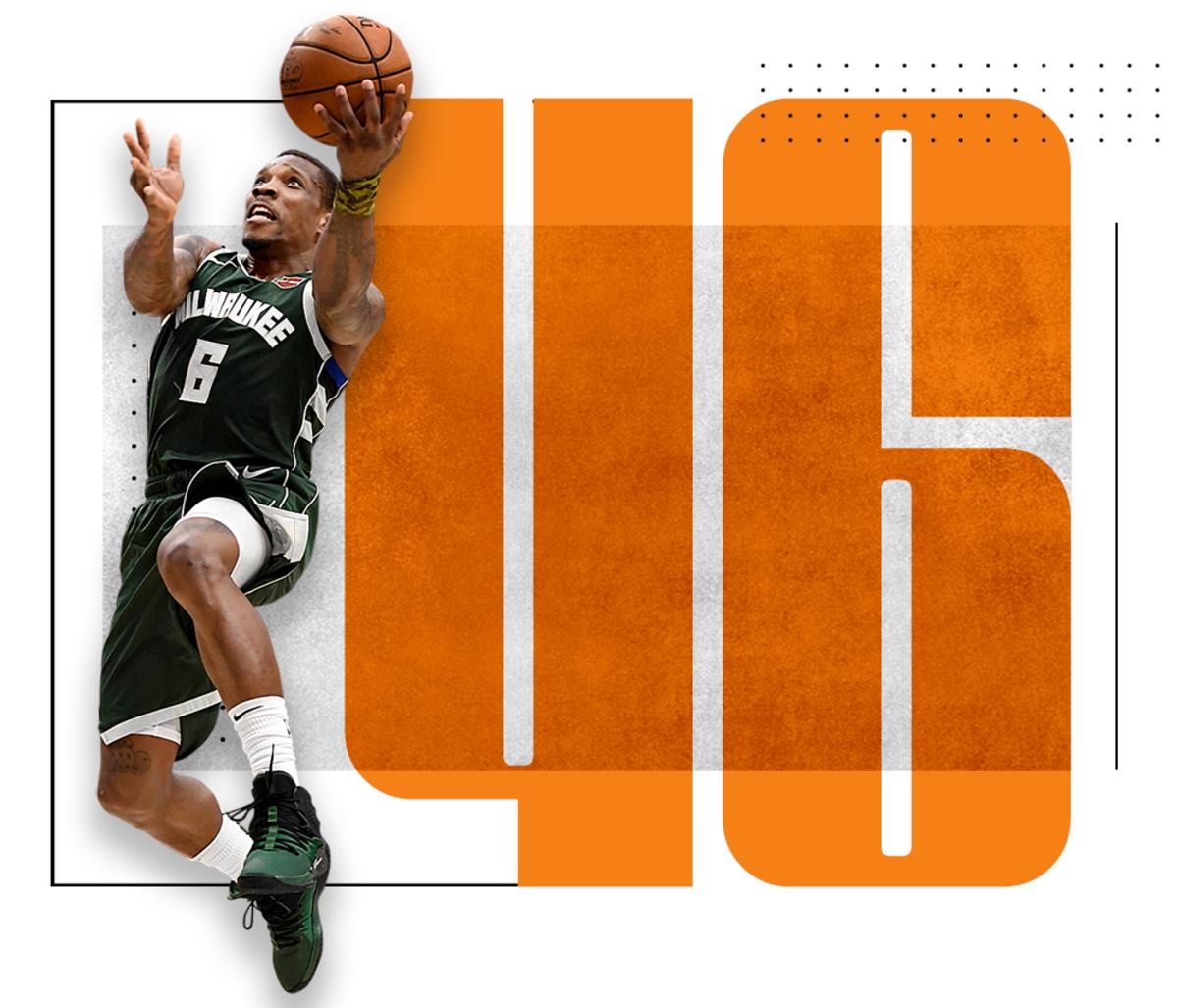
Eric Bledsoe
Milwaukee Bucks
The whiplash-inducing contrast between Eric Bledsoe’s regular season, for which he was nearly named an All-Star, and his playoff run, which was problematic enough for the Bucks to sometimes replace him with George Hill, makes it difficult to evaluate the complete player. Some aspects of Bledsoe’s game (namely his defense and physicality) translate brilliantly to postseason basketball. The reality, however, is that any guard who doesn’t even trust himself to take open shots will inevitably pose problems. In a way, the issue isn’t Bledsoe’s 24% shooting from three in the playoffs but the point at which he all but refused to shoot them. Hesitation is the great spoiler. An otherwise perfect possession can fly off the rails if a player like Bledsoe catches the ball without the willingness to use it. Nevertheless, Bledsoe has a place in this range of our ranking for the strong two-way player he is most of the time. If an all-league defender can also run an offense competently, he can certainly do some good. It’s the complementary skills that hold Bledsoe back, at times preventing him from being the point guard sidekick Giannis Antetokounmpo deserves.
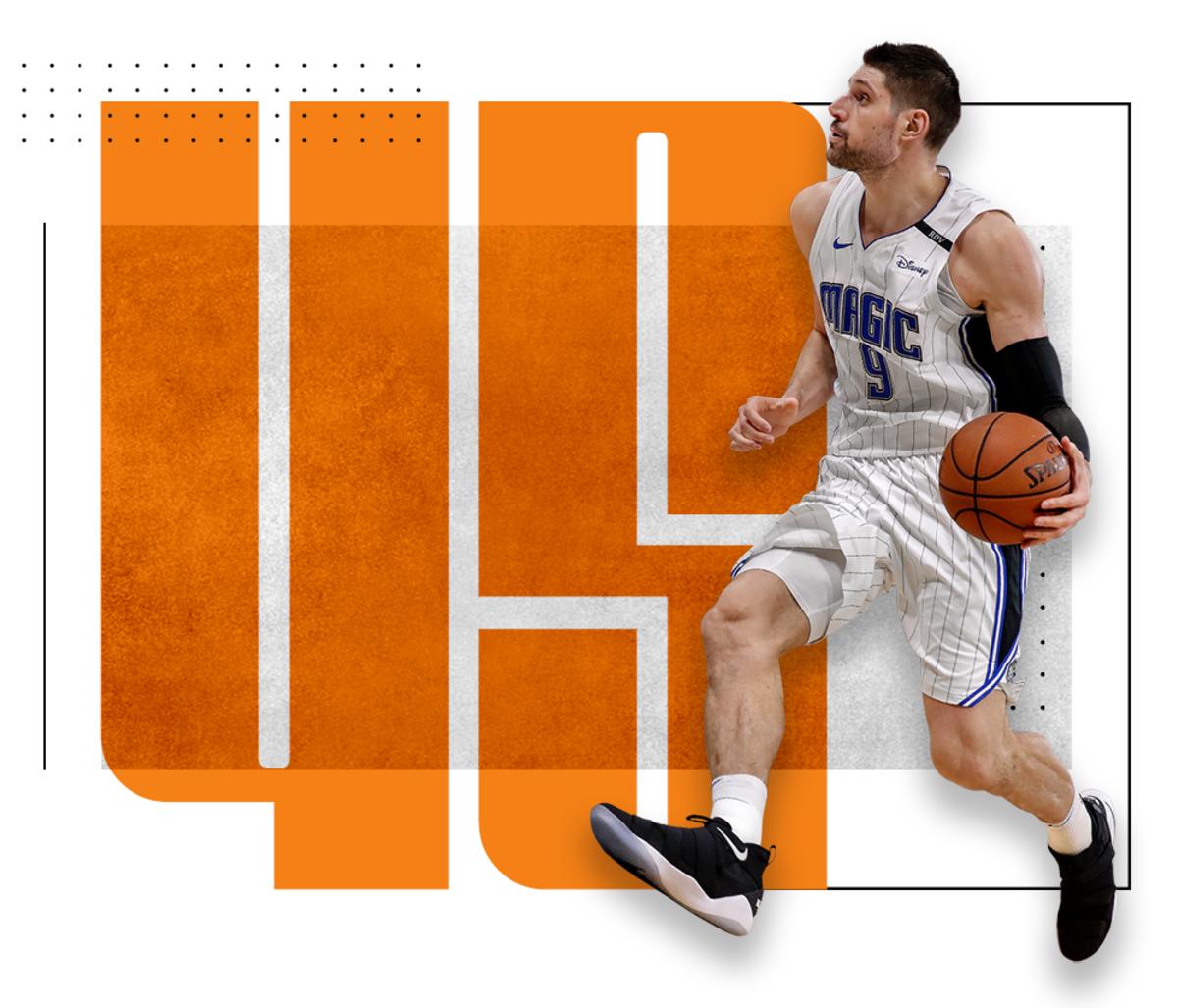
Nikola Vucevic
Orlando Magic
Let’s get the mea culpa out of the way first: We severely underrated Vucevic by ranking him at No. 90 last season, a placement that was inarguably, invariably wrong. In our defense, it seemed slightly unlikely that a 28-year-old big in his eighth NBA season would make radical improvements across the board without any sort of real transformation. The most incredible thing about the way Vucevic played last year is how little can be traced to any exterior cause. Vucevic didn’t join a new team or take on a new role. There was no creative reimagining of his game. It was as if, after a four-year plateau, Vucevic simply decided he would be better. What followed were significant career highs in points, rebounds, and assists; two-point shooting and three-point shooting; on-off impact; most every advanced stat of note; and team wins, coinciding with Vucevic’s first playoff appearance since joining the Magic in 2012. It was the kind of season that reframes the way you consider a player, and, frankly, the ways we go about making these sorts of lists. It can all change so quickly, and for little discernible reason at all.
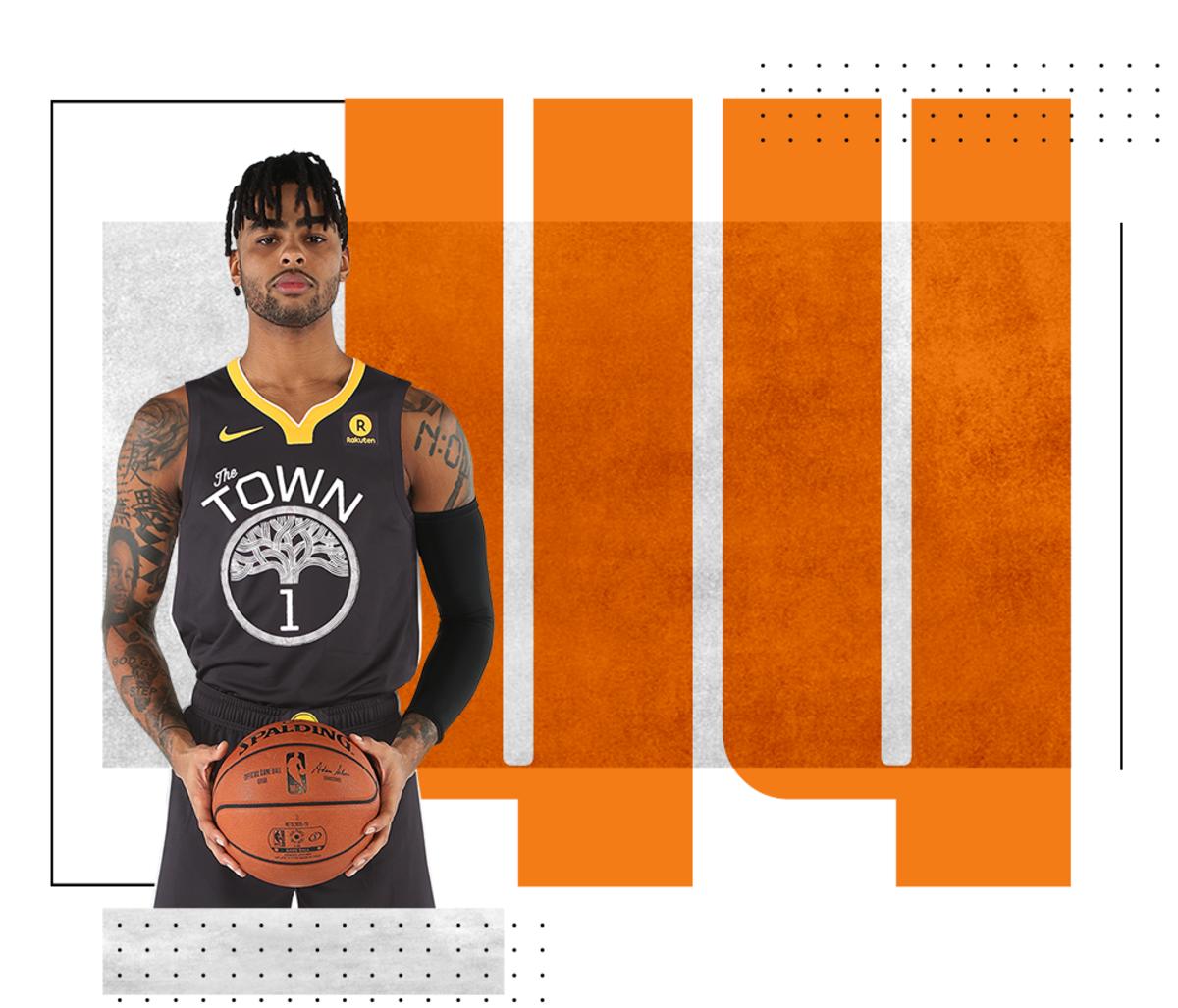
D'Angelo Russell
Golden State Warriors
The stardom of a player like D'Angelo Russell is very much in the eye of the beholder. He certainly looks like a star, given how often he works with the ball in his hands and the flair with which he breaks down a defender off the dribble. Russell certainly has the shooting profile of a star, seeing as he attempted more shots per game last season than Kyrie Irving and Kevin Durant. What challenges his case is that there isn’t much evidence to support the idea that he actually made the Nets a better offensive team last season. There is virtue in filling a role that others couldn’t, but less so when it all leads to somewhat ambiguous ends. Russell can clearly lead a team to the middle of the pack. Yet all involved are better off if Russell isn’t the best player on his team, which is exactly what a ranking in this range indicates.
It’s not insulting to think that Russell could be better protected—from defenses, from overuse, and even from himself—in a role closer to the one he’ll find with the Warriors. All of the players in the 30s and 40s are quite good. They simply need help in elevating a team to 50 wins or in advancing past the first round. Evolving beyond that would require Russell to score more efficiently than he has, defend more ably than he’s shown, and/or actually drive all the way to the rim now and again to fully compromise the defense.
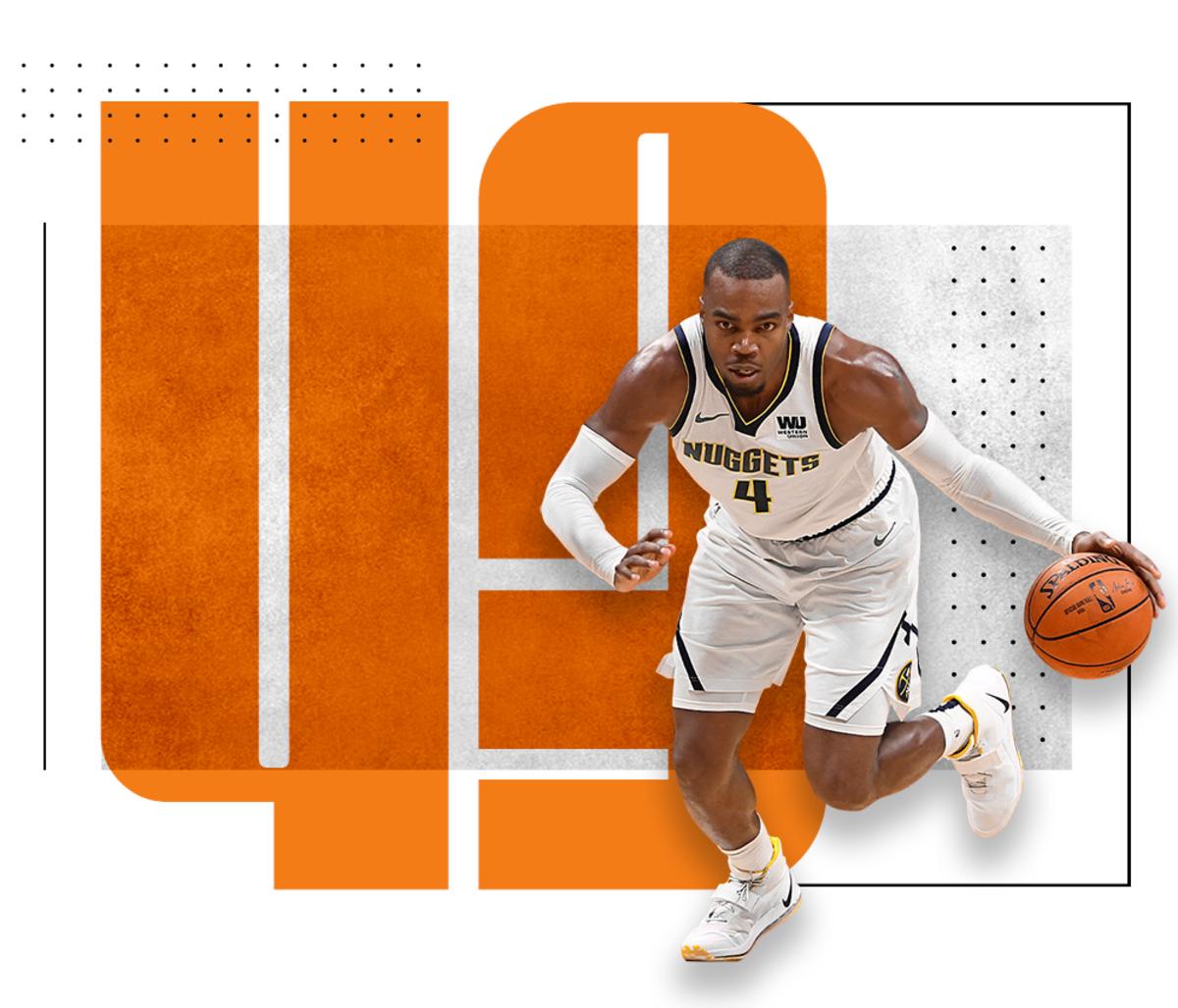
Paul Millsap
Denver Nuggets
Paul Millsap has been outpaced by younger, more exciting players, but there will always be basketball value in having an adult in the room. Although he doesn’t defend quite like he used to, Millsap still has an incredibly pronounced effect on team defense and picks up assignments his teammates can’t handle. Even though Millsap’s scoring dipped with the Nuggets last season (from 14.6 points per game to 12.6), he was unflappable when it mattered—turning up with timely drives, cuts, and rebounds when the stakes were highest. If you’re in need of a star to act as a funnel for the offense, you’d best look elsewhere. But if you’re in the market for the kind of big that makes a talented team more playoff-viable, then Millsap is the man for the job. Maybe the best thing about Millsap is that he isn’t any one thing. He isn’t exactly a stretch big, though he did hit 37% of his threes last season; it’s not entirely accurate to label him as a post player, but Millsap did score about as efficiently from the block as Karl-Anthony Towns and fellow Nugget Nikola Jokić; and though he’s no Draymond Green, Millsap does have the kind of defense-and-playmaking combo skill set that smooths out the wrinkles in execution on both ends. There’s no one frame of reference to understand what Millsap brings to a team. It’s a matter of overlaying lens upon lens to bring every feature into focus.
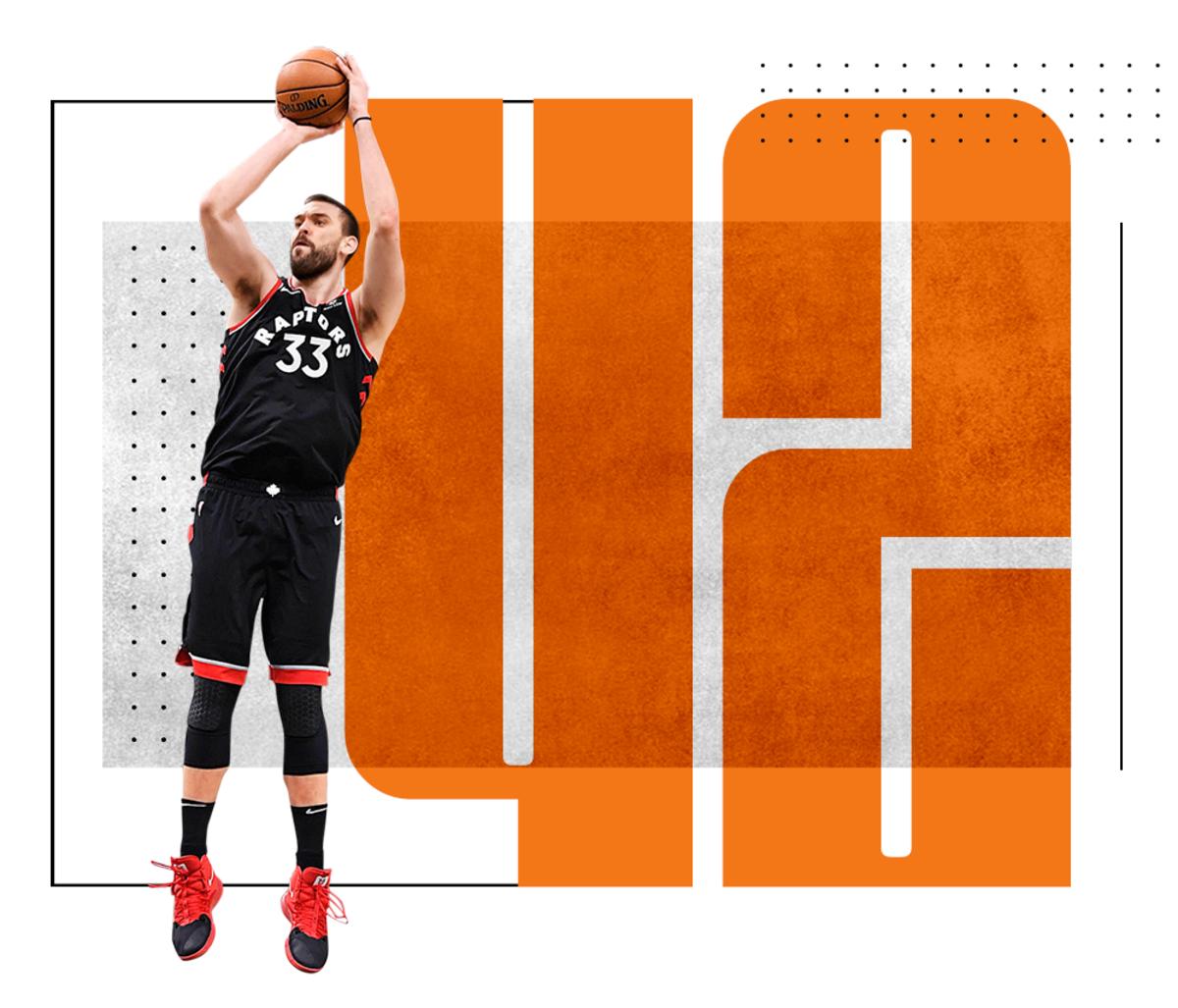
Marc Gasol
Toronto Raptors
Toronto would not have survived three demanding playoff series if not for Marc Gasol. The center position is the battleground of the postseason. Bully-ball teams use it like a cudgel, threatening any opponent that doesn’t match up accordingly with a painful rebounding margin and bucket after bucket in the paint. Small-ball teams turn that idea on its head, making the bruisers into walking liabilities as they space and run the floor. Gasol walks in both worlds. It shouldn’t be possible for the best one-on-one post defender in the league to also hang on the perimeter, yet there Gasol was, thriving in series against Joel Embiid and Stephen Curry alike.
Each of those competitive settings demands a wildly different skill set. What allows Gasol to find a bridge between them is his understanding of what comes next—be it how a drop step builds to a particular move or how to best defend a high screen based on its angle. The Raptors didn’t even rely on a base defense, per se, where Gasol was involved, instead trusting the veteran center to feel out the right coverage and communicate it accordingly. That’s the luxury of Marc Gasol. You work around the limitations of him being 34 years old. You accept the fact that he doesn’t produce like an All-Star anymore, and that he won’t even shoot as often as he should. You do all of this because Gasol is the sort of thinker who can help a great team navigate the long road to a title.
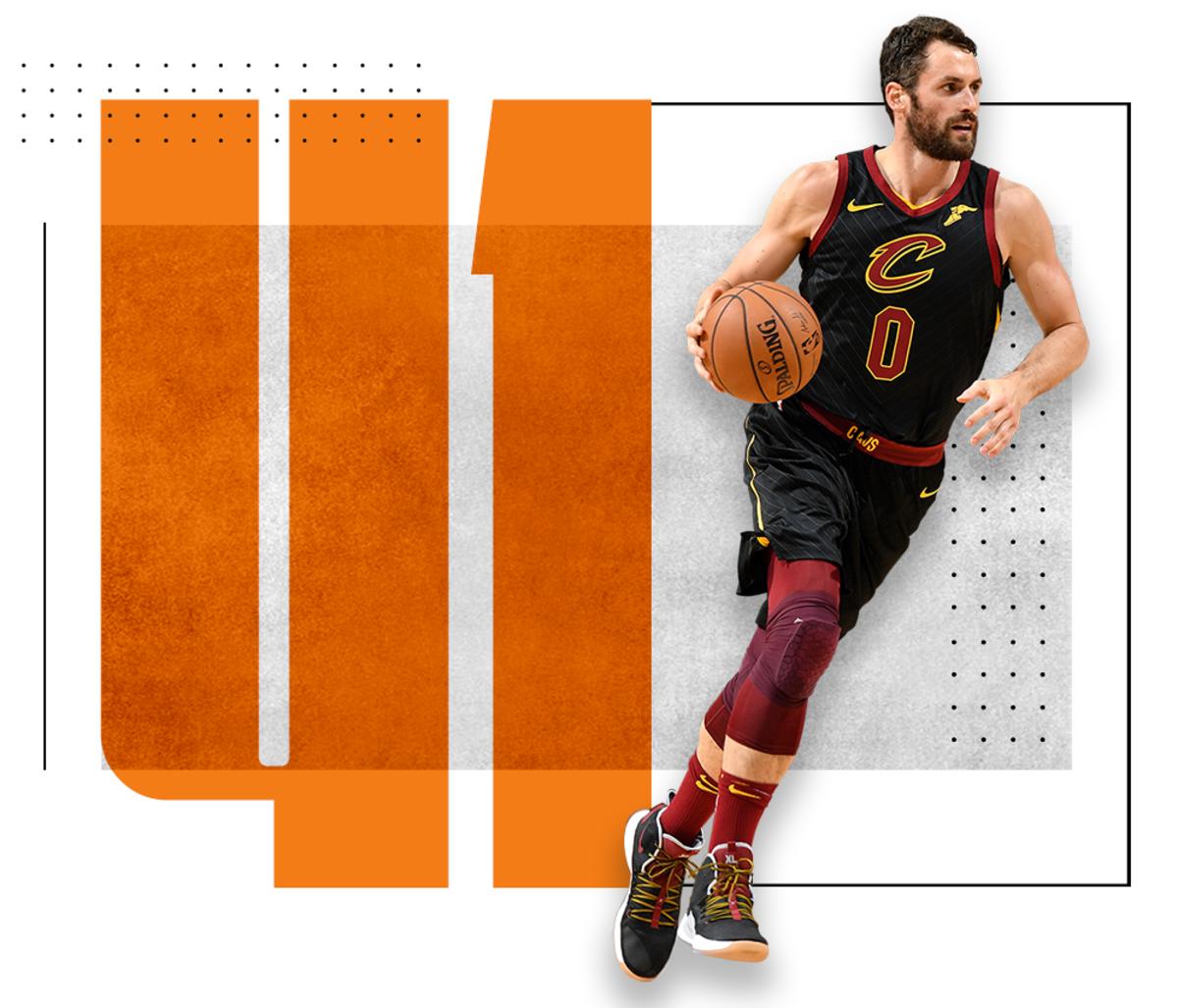
Kevin Love
Cleveland Cavaliers
The 2018-19 season was Kevin Love’s worst as a Cavalier, a confluence of injury, apathy, and a franchise reboot. Much of that was to be expected; most players, even stars, tend not to do their best work on teams going nowhere. Cleveland didn’t have much to play for, and after starting their season 2–14, there wasn’t a rush for Love (who underwent toe surgery last November) to return or to even play well. So Love took his time, as he should, played below his standard as he worked his way back, and still made the Cavs dramatically better when he was on the floor. There’s no reason to expect that Love would shoot so poorly (38.5% from the field) again—particularly if healthy and given any reason to compete. Ultimately, this is still a star forward with a lot left to offer. Love is the rare stretch four that costs a team nothing in terms of rebounding. While playing on a surgically repaired foot last season, Love still posted a rebound rate that would have ranked in the top five. Even more important: Love is more than just an endpoint shooter. Too many stretch bigs are dead in the water if an opponent actually closes on their jumper, stranded by a lack of reliable ball skills. Not so with Love, who could be a playmaking fulcrum for an offense if needed, or a spacer, or an occasional post threat. The power of his game lies in that optionality. If you have a megawatt playmaker like LeBron James on the roster, Love fills one role. If you don’t, he likely fills another that’s no less valuable.
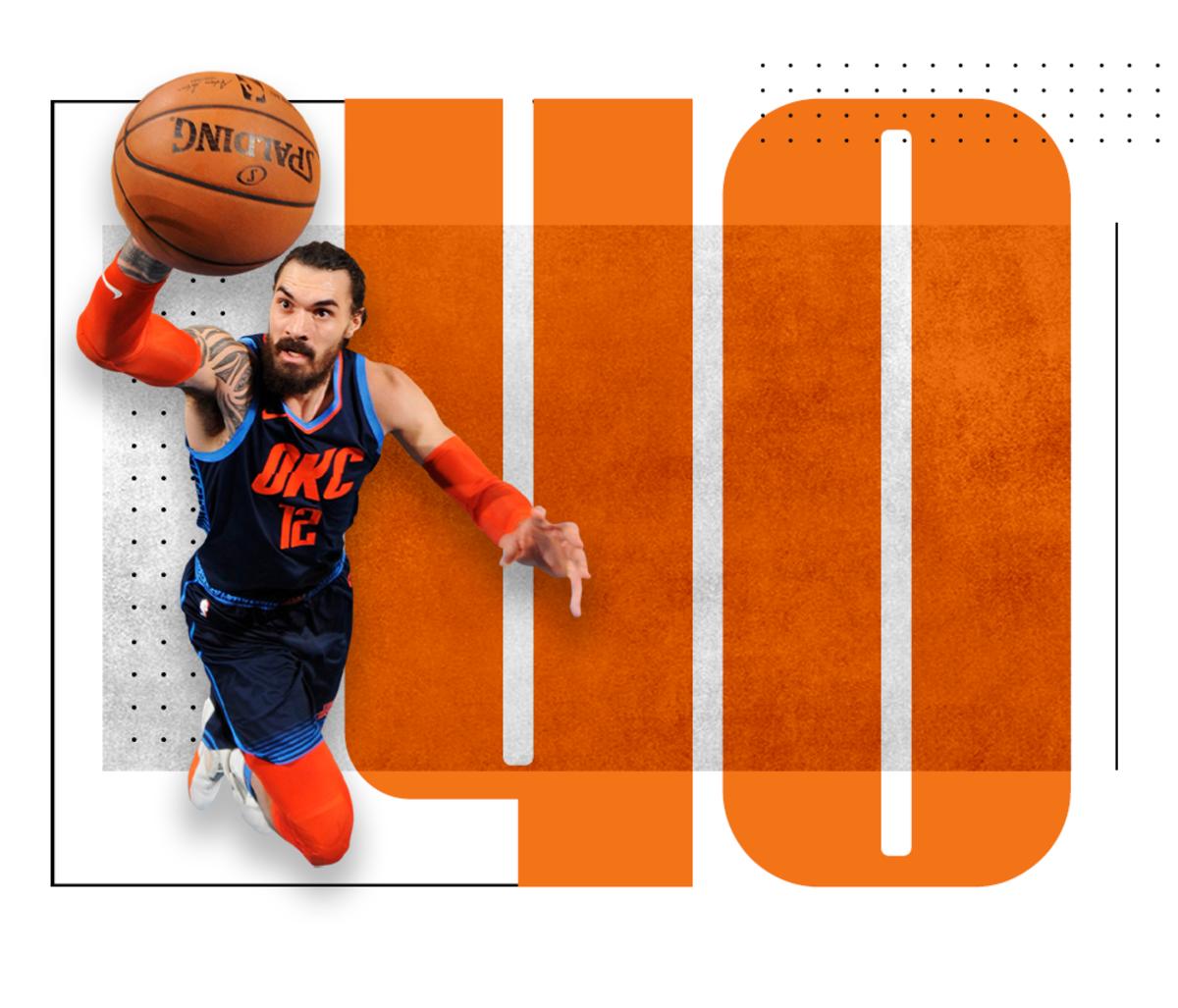
Steven Adams
Oklahoma City Thunder
To understand what makes Steven Adams a great player, you have to start by looking around him. The scoring he contributes goes beyond his 13.9 PPG, considering that Adams is near the top of the league in screen assists. Even though Adams himself has fairly pedestrian rebounding numbers, no player in the league had a more profound impact on his team’s defensive rebounding last season. (Does Russell Westbrook average a triple-double for three straight seasons without Adams clearing a runway to the glass?) Professional sports are rife with strongmen who force themselves into the middle of the action. Adams, who might be the strongest player in the NBA, uses his might to work the angles and shut opponents out. It can be trickier to recognize, but the denial of space is central to any winning effort. Controlling a game is about walling off the basket, keeping opponents off the glass, and creating space between a ball-handler and the defense. Adams makes a living—and a difference—by drawing those lines.
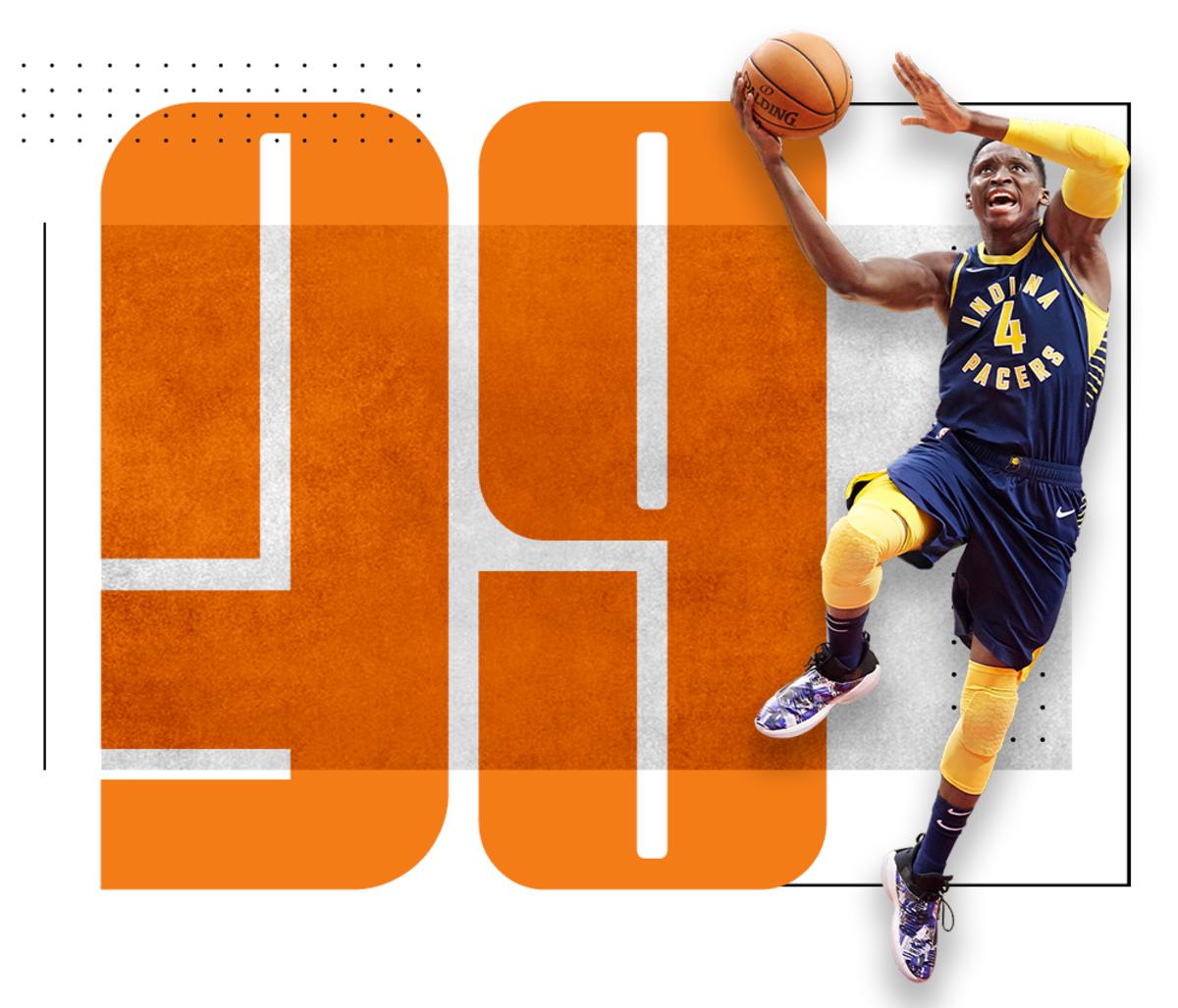
Victor Oladipo
Indiana Pacers
Accounting for injury is the most delicate and subjective part of the Top 100 process, because it demands that we assign value not just to a player’s work, but to incremental portions of their work. A fully healthy Victor Oladipo would rank in the 20s, maybe even the high teens. Yet in the last public update, Pacers president Kevin Pritchard expressed optimism that Oladipo could return in December or January. If we’re considering Oladipo in a vacuum, some teams couldn’t afford for their star guard to miss two to three months at the start of the season, particularly when we have no idea how Oladipo will play once he’s back in the fold. It was clear that Oladipo didn’t have quite the same burst last season when he attempted to play through injury. Would it be reasonable to expect similar results as he scales back up to an NBA workload? These are impossible questions, dependent entirely on the recovery of one athlete’s body from a notoriously complicated injury. What we do know is that to play his best, Oladipo needs a level of explosion he didn’t have last season. Getting it back will probably take time, and thus warrant caution.
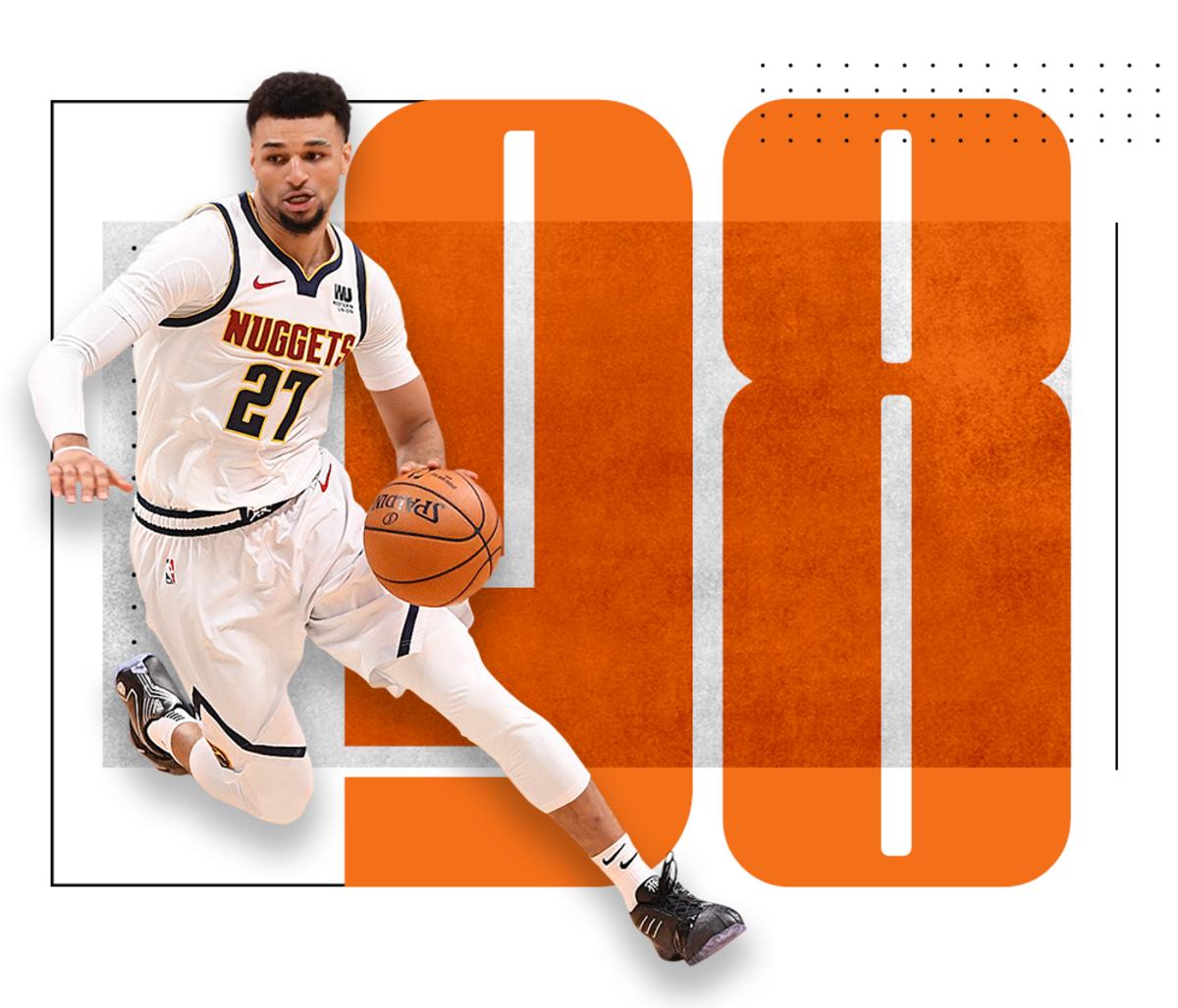
Jamal Murray
Denver Nuggets
Was there a ballsier performance in the playoffs than Jamal Murray’s? It takes real will for a 22-year-old to miss a potential game-winner in his playoff debut, brick every shot through the first three quarters of the following game, and then rattle off 21 points (on 8-of-9 shooting) in the fourth quarter to even the series. An inexperienced point guard can doom his team’s playoff hopes. Murray simply wouldn’t allow it, taking every challenge as it came and fighting two Game 7s: one to beat the veteran Spurs, the other a crunch-time loss to the Blazers. For both Murray and the Nuggets, the playoffs were exactly the sort of learning experience they needed them to be. Murray plays with a clear confidence, but would he sweat under brighter, harsher lights? Inconsistency has been a running theme for the young guard, but how would he handle a cold spell at the worst possible time? We know a lot more about Murray now than we did a year ago, starting with the fact that he’s up for the challenge.
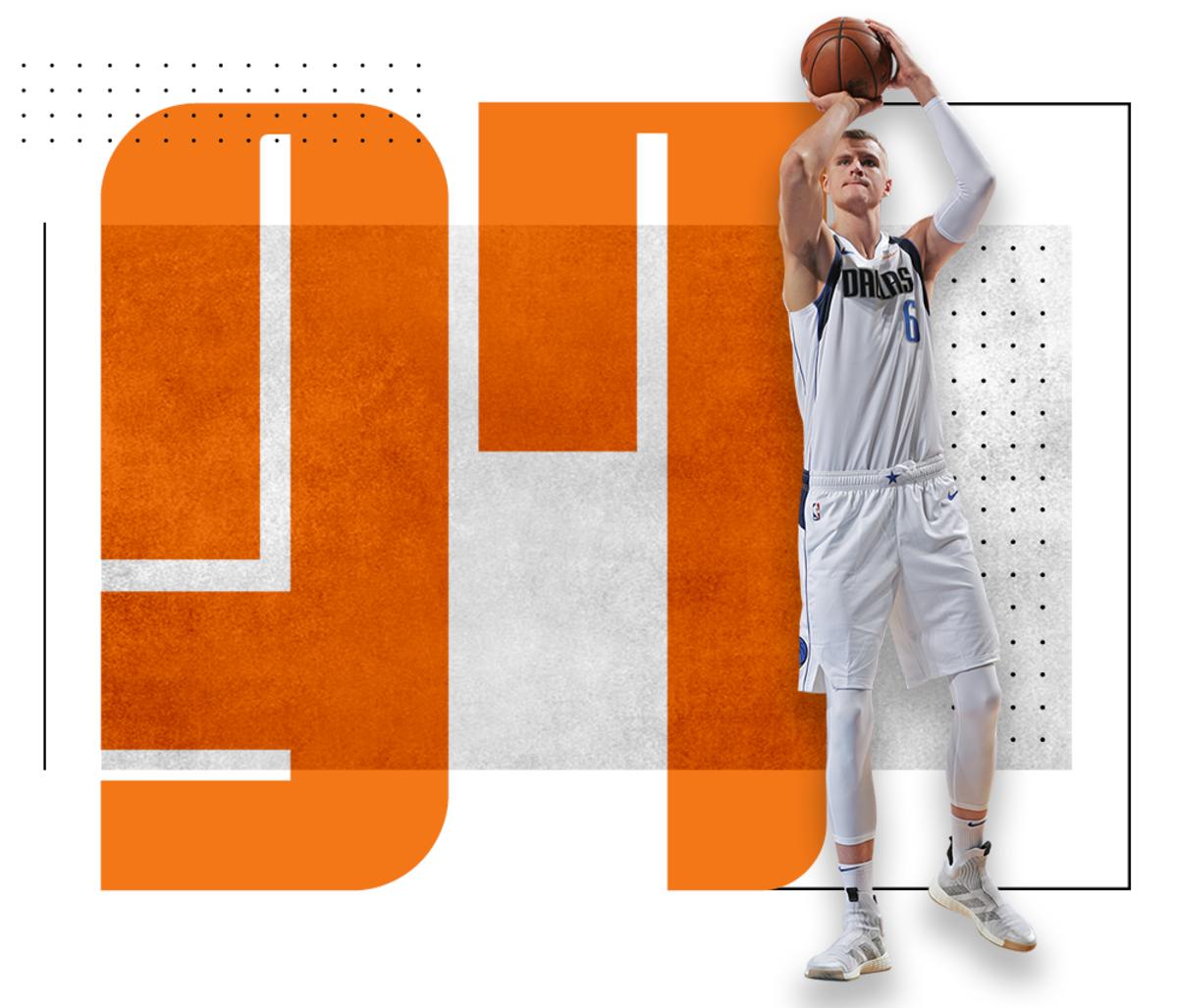
Kristaps Porzingis
Dallas Mavericks
There’s potential for Kristaps Porzingis, who by the time of the Mavericks’ season opener will have gone 624 days without playing in a regular season game, to completely blindside this ranking. Few others in this range are as purely talented as a 7’3’’ game-breaking shooter. If Porzingis is anything resembling the player he was or could be, this ranking might look ridiculous. Unfortunately, there’s also the possibility that his first season back from an ACL tear could follow a fairly conservative course. There could be proactive resting, careful minutes management, and time missed due to injury regardless. There’s also some mystery surrounding the fact that we have little idea what a post-injury version of Porzingis will be like. All of these variables could normalize by the end of the season, but there’s still too much hanging in the air to just expect it.
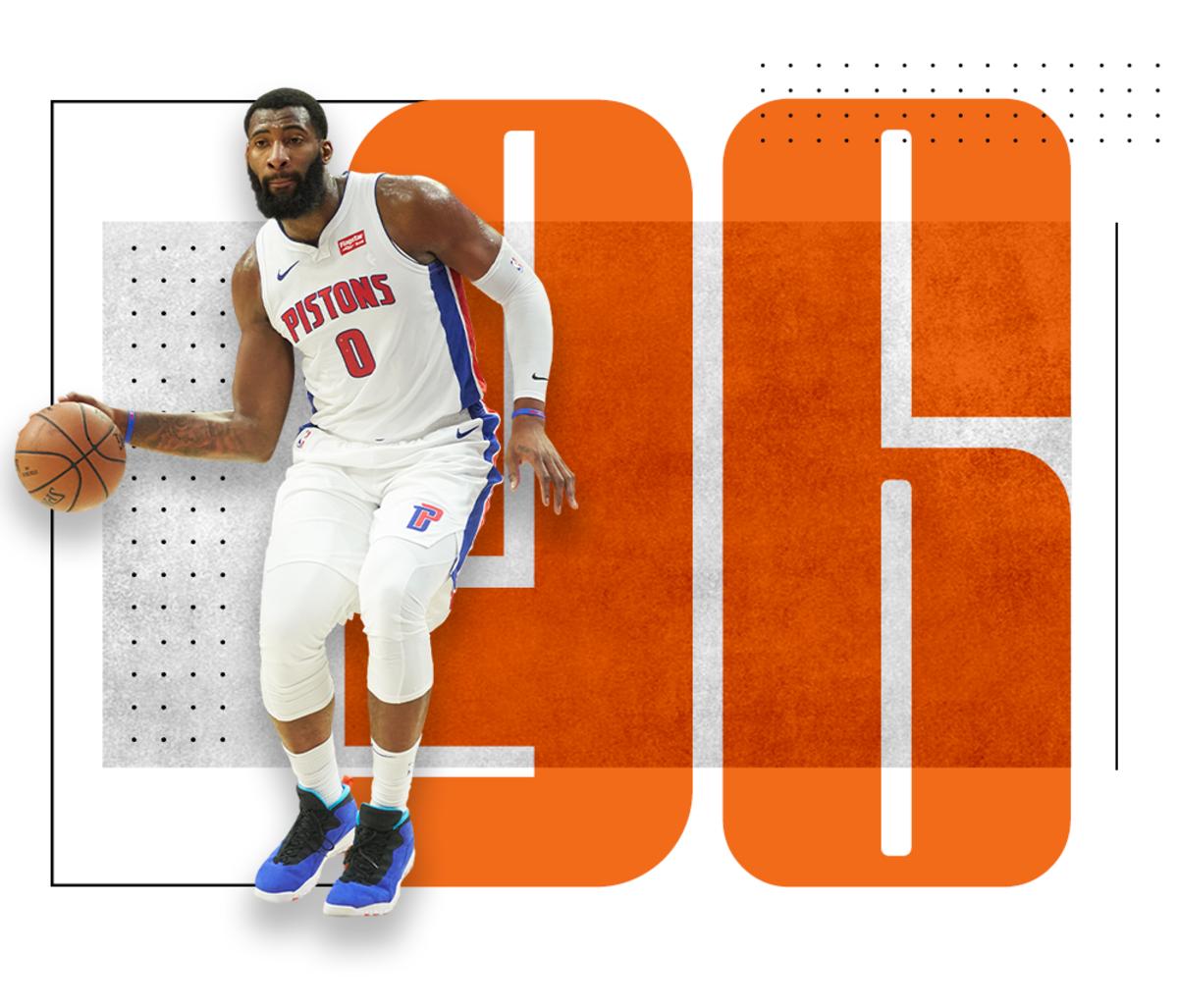
Andre Drummond
Detroit Pistons
Considering that offensive rebounding tends to fade with age, it’s a bit striking that Andre Drummond has been the best offensive rebounder in four of the past six seasons—including the last. Turns out that it’s thankless work to keep a quick, 6’11’’ center off the glass, particularly when Drummond is eager to get the easy looks that result. Those put-backs are an important part of his shot diet. It’s easy enough to get Drummond rolling toward the rim, but his effectiveness plummets if he hits any roadblock defenders along the way. Taking away Drummond’s first move is often as good as stopping him. For as imposing as he is, physically, Drummond has never been great about using his body to seal a defender or leaving his footwork open to several different moves. It’s for those reasons, among others, that Drummond had his shot blocked more often than any center in the league last season. Under the right circumstances, Drummond can be overwhelming. Yet too often, on offense and defense alike, he puts himself in a bind by not thinking ahead.
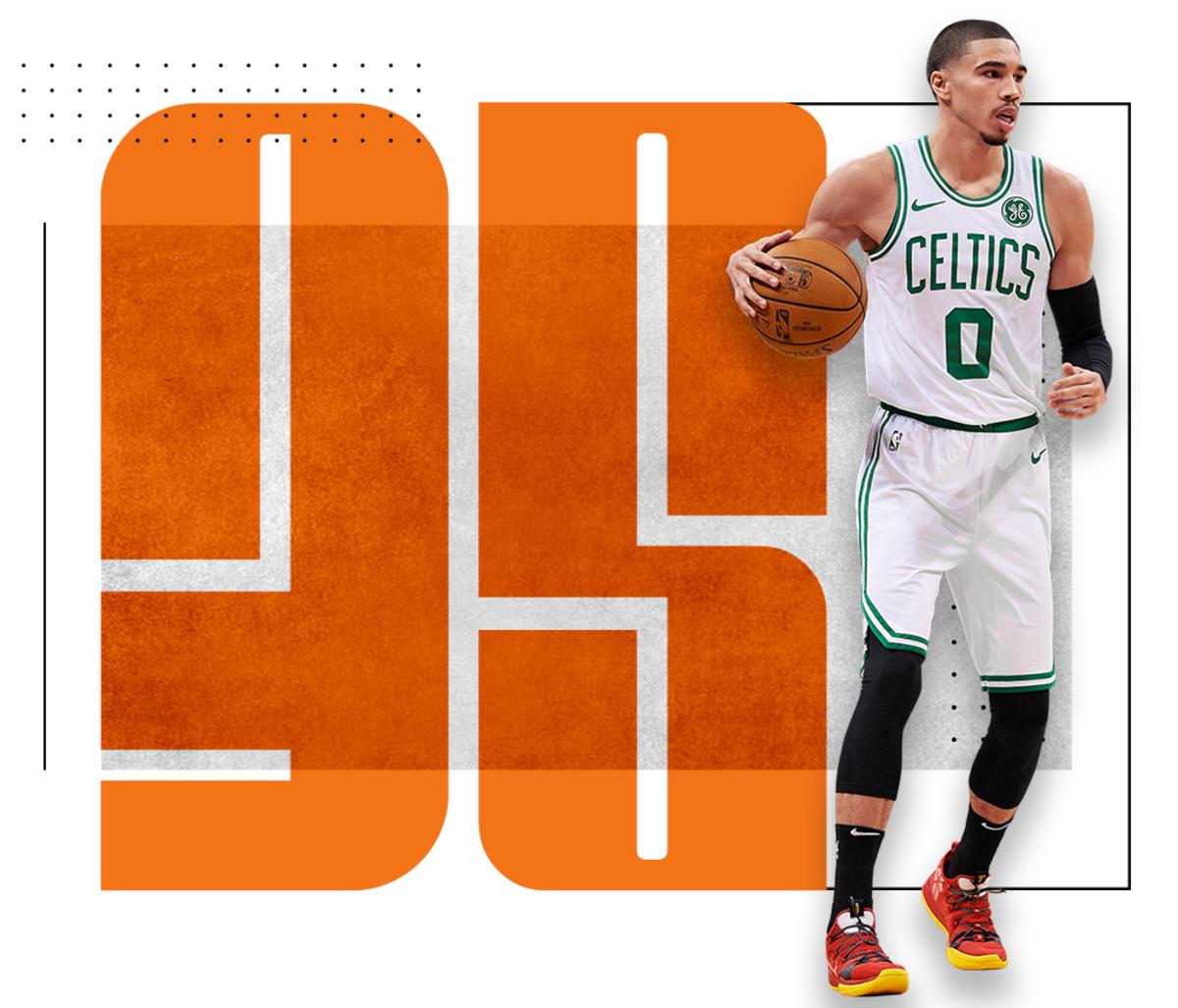
Jayson Tatum
Boston Celtics
It might be helpful to compartmentalize the version of Jayson Tatum we saw last season from the player he could be one day. That isn’t to deny the existence of the former; Tatum’s mystifying efforts to become a mid-post specialist proved to be a failure on every level. If that is the crux of his game, he will level out as a player without so much as sniffing stardom. That said, cleaning up his shot profile even slightly would go a long way. The 21-year-old has a lot of the qualities teams look for in a centerpiece prospect: three-level scoring, strong defensive fundamentals, positional fluidity—Tatum even has an NBA proof of concept with his performance in the 2018 playoffs. You can see all the pieces, if only Tatum could crystallize his game a bit. There have been too many nights where Tatum becomes just another guy: a positive contributor, but a forgettable one. Some of that was the byproduct of Boston’s ensemble last season. Some other part stems from the way Tatum has operated thus far. Once that changes, so will his status within the league.
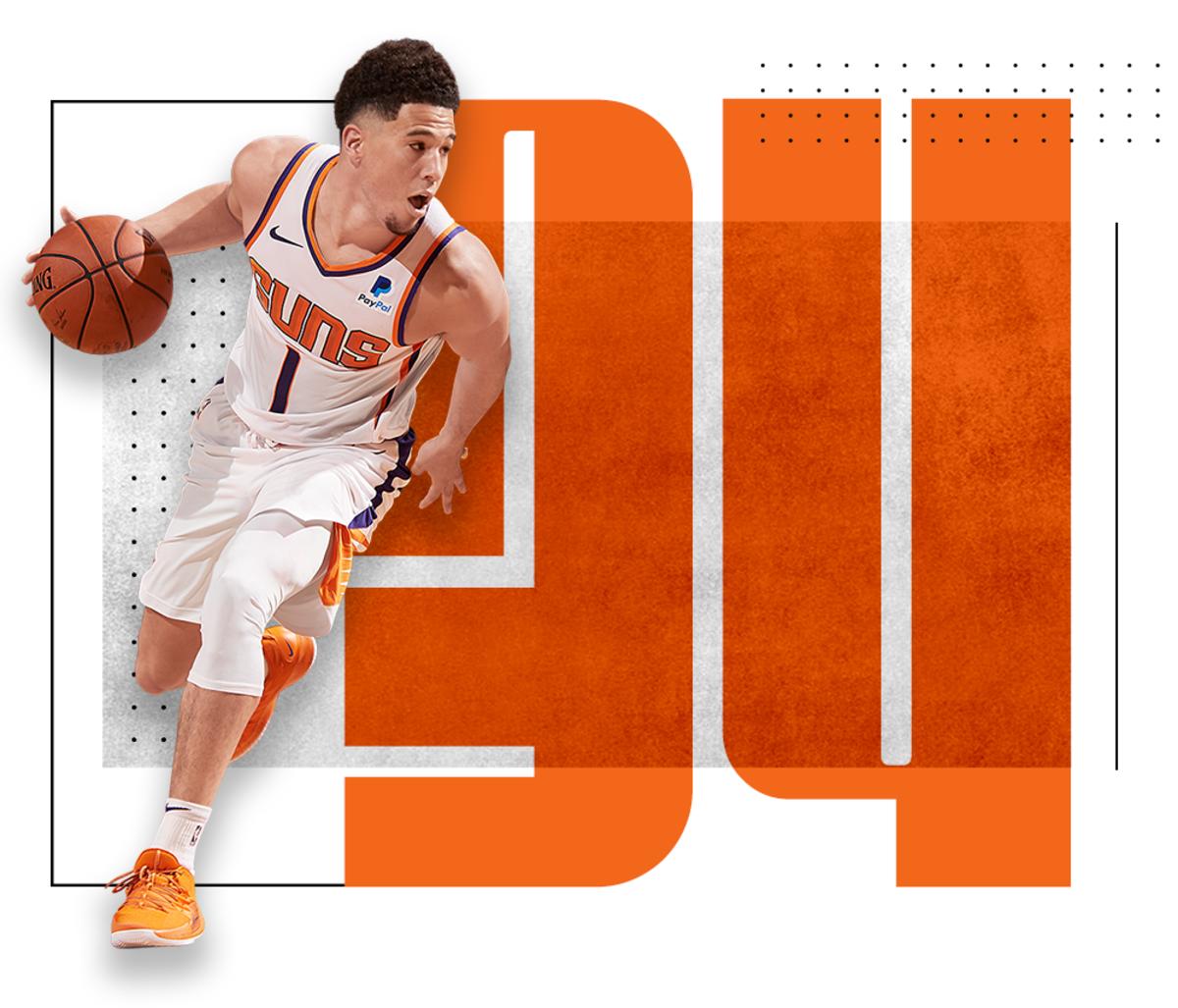
Devin Booker
Phoenix Suns
It’s possible that Devin Booker has endured more bulls--t—or goats--t?—over the last four years than anyone else in the NBA. The Phoenix Suns, organizationally, have been a weight around his neck; four head coaching changes, squandered draft picks, roster mismanagement, and chronic losing don’t exactly foster the best developmental environment. It might even help to get the man a proper point guard, as we’ll finally see this season. Given all that, we can say unequivocally that Booker is not the reason that the Suns have been a terrible basketball team. Yet he also only does so much to improve their station due to the narrow scope of his game.
Booker is a high-level scorer who doesn’t yet excel at anything else. Phoenix played Booker as a Hardenesque point guard last season as a matter of practical necessity, but what playmaking he did was largely a function of driving the entire offense. If you control the ball and make any kind of effort, you can rack up assists. You’ll also rack up turnovers, as Booker did in droves, in part because he just isn’t a star-level passer quite yet. Too many of his feeds from the pocket bounce off of knees and ankles. Too many of his lobs float wildly off-course. Booker can do some impressive things with the ball, just not those—at least with the level of consistency one would expect of a franchise cornerstone. The same is true of the vast majority of the league. As of now, Booker’s only real sin is that his game isn’t quite as complete as the NBA’s best players.
The defense is, at best, inattentive. Booker shoots well, but his long-range accuracy has been spottier than expected. It remains to be seen whether Booker can really be himself in a role off the ball alongside another high-usage star, though to this point he’s seemed less comfortable when not in control. So let’s not rush praise for Booker beyond what he’s proven to be: a promising scorer who’s taking real steps, year over year, to flesh out his game.
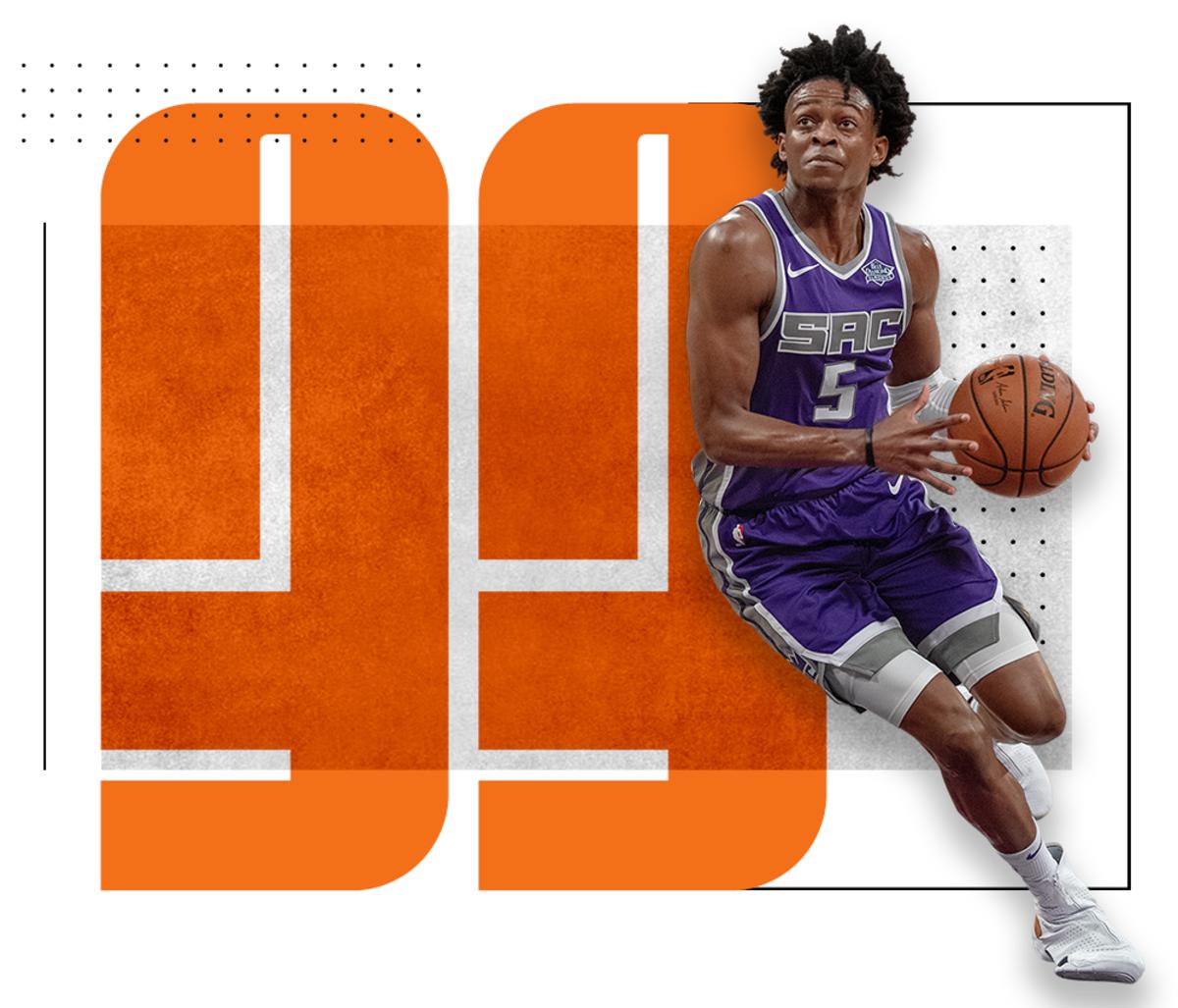
De'Aaron Fox
Sacramento Kings
These are exciting times for the Sacramento Kings, who are on the cusp of something because of the way De'Aaron Fox has come of age as a point guard. For a 21-year-old, that qualifies as being ahead of schedule. Typically it takes years of reps before a playmaker starts to grasp the interconnected, 10-man web of cause and effect that is a professional basketball game.
Fox is, apparently, precocious—as you might guess from his leap outside the Top 100 all the way to 33. Some fairly advanced maneuvers found their way into his game early in his second season, providing exciting new means for a player who was already too quick for many opponents.
The great variable is his long-range shooting. For a player flagged for a questionable jumper coming into the league and a well below-average shooter in year one, to suddenly hit threes at a 37% clip feels like it could be too good to be true. The changes in the way Fox deciphers the game feel real. The shooting bumps seems more illusory, though even some regression to the mean could leave Fox with a reliable enough shot to keep a defense honest. Follow the thread and you can imagine a defender’s despair. If they can’t go under a ball screen for Fox, they’ll have to beat him in a footrace around it. If they can’t close the gap, they’ll need that much more help—leaving Fox’s teammates that much more open. It all starts with a single matchup problem. Fox might present one from the moment he steps on the court.
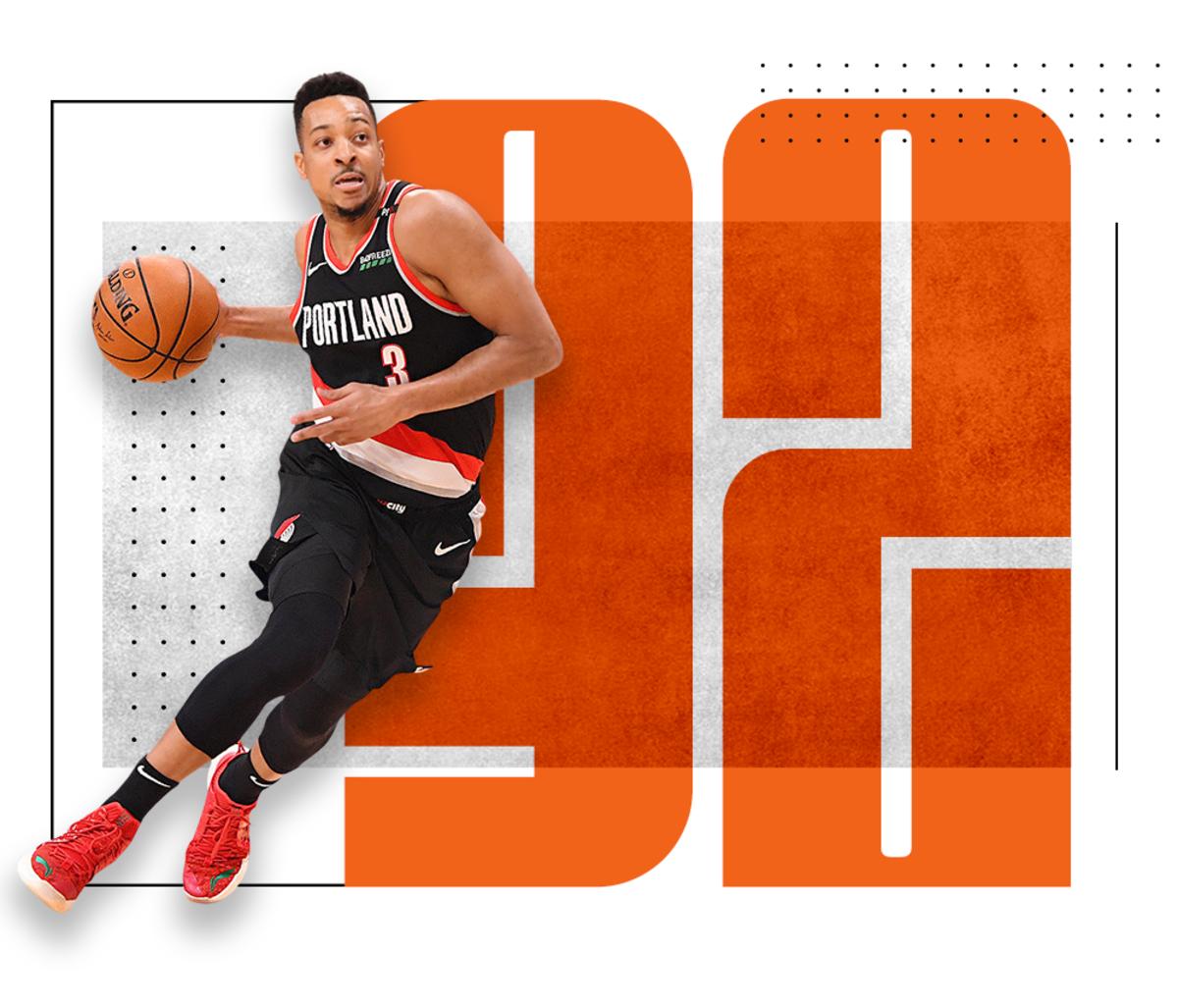
CJ McCollum
Portland Trail Blazers
The heart of CJ McCollum’s game is utterly resilient to circumstance. No matter the system, the roster, or the opponent’s coverage, there’s only so much that can stand in the way of a scorer with counters upon counters. McCollum’s guiding philosophy is to pack a deeper arsenal. You can take him out of his first move and perhaps his second, but so long as he keeps his wits about him, you’ll never take McCollum out of his zone. There’s always another shot fake to try, another step-through to make. So deep is McCollum’s repertoire that his game tape doubles as instructional video for the rest of the league. Try to stop him and you just might learn something.
Of course, even the savviest of one-on-one approaches has its limits. McCollum is a scorer first and foremost, which caps his impact next to more versatile stars. Could he create more often for others? Probably. But the work of running an offense will never come as naturally to McCollum as creating for himself, which presents certain concerns for a 6’3’’ guard. It makes sense to pair McCollum with another playmaker, most of which tend to be his size or smaller. Even if that kind of arrangement works beautifully on offense, it leaves McCollum’s team vulnerable on defense—which is already his weaker side of the ball to begin with. These are circumstantial issues. Still they demand consideration in finding McCollum the best fit possible.
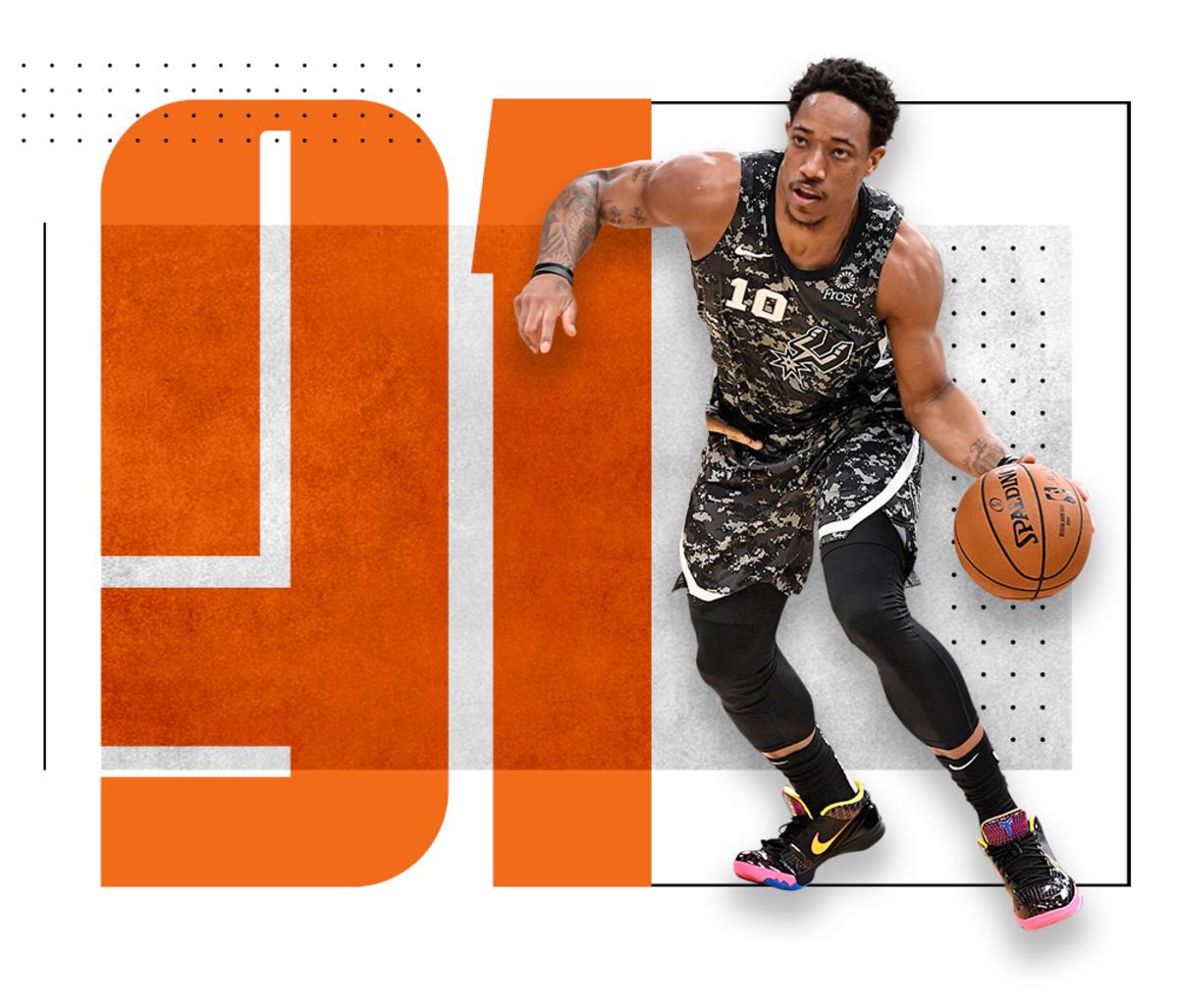
DeMar DeRozan
San Antonio Spurs
What makes DeRozan such a complicated figure is that he’s dedicated his career to the kinds of mid-range jumpers he only makes 41% of the time. These are difficult and genuinely impressive shots. They just don’t provide the best return, which puts distance between DeRozan and those who create easier, cleaner, higher-value looks. Sports are a relative enterprise. If DeRozan scores well but his opponents score more efficiently, he’ll lose. And last season, the vast majority of the league’s stars scored more efficiently than DeRozan did.
There will always be some security in building an offense around a player like DeRozan, whose skill and creativity can guarantee, at the very least, a reasonable attempt. The floor of a DeRozan-led team is relatively high. Unfortunately, the 2018-19 campaign also marked the seventh straight year that DeRozan’s team performed better when he wasn’t on the floor – a trend that throws the limitations of his approach into stark relief. The trouble is that DeRozan needs the ball to be anywhere close to effective. Cutting isn’t really part of his game. He has abandoned any pretense of shooting threes, and thus of spacing the floor. The Spurs leaned into this reality by effectively running DeRozan at point, which helped them survive the regular season but otherwise signified little.
Every player on this list is evaluated by two primary criteria. The first is whether the player would help a team become good—to win 45 games or so, perhaps even a first-round series. The second is whether the player would help a team become great—to really, truly contend for a title, and hold their own in a championship series. The former conversation has always been highly complimentary of DeRozan. The latter is somewhat less kind.
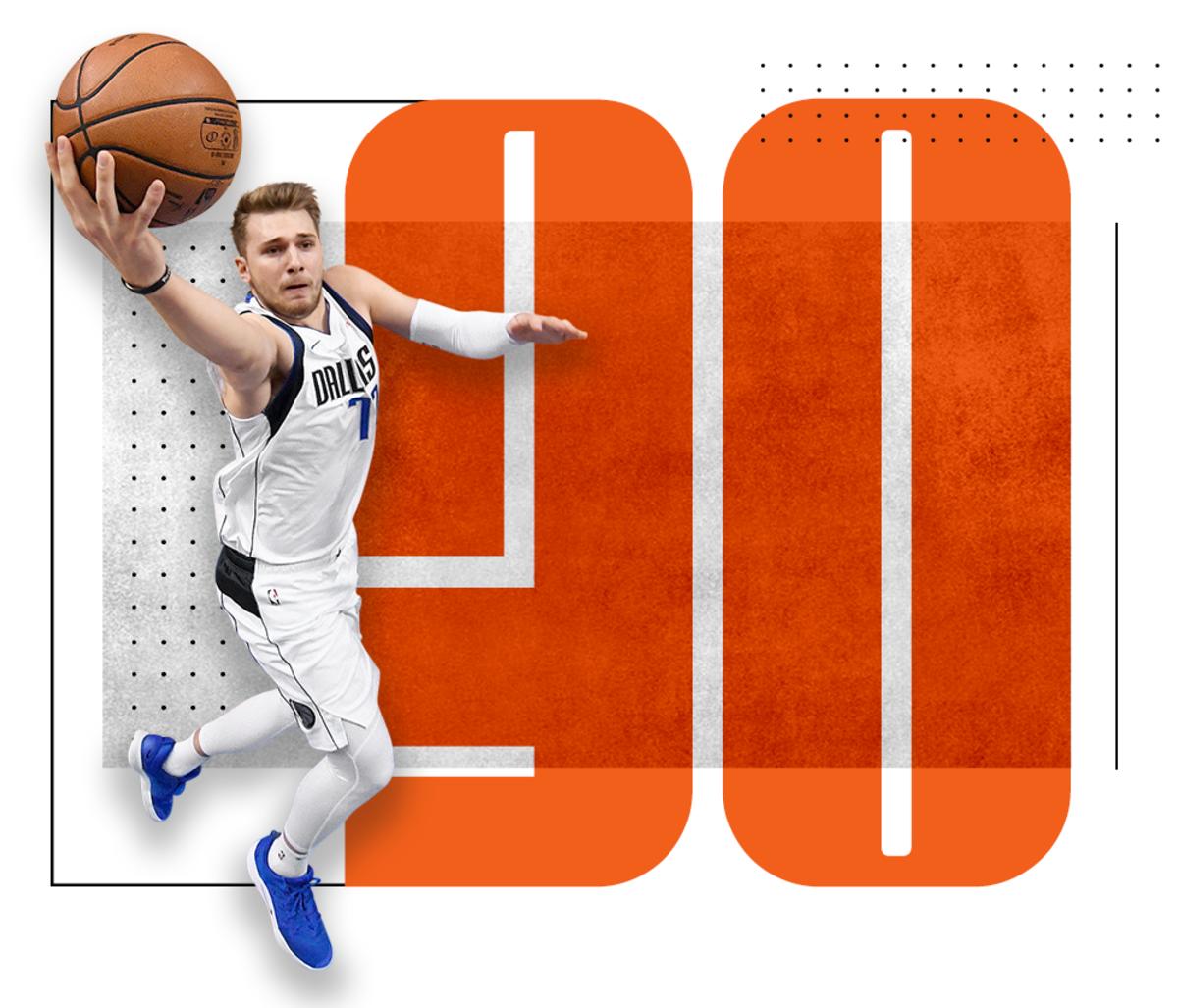
Luka Dončić
Dallas Mavericks
Luka Dončić thrived from the start—and ultimately won Rookie of the Year—because he experiences the game differently. Where others would panic, he waits, dancing with his defender as he tracks the rest of the action. We see a crossover, but Dončić sees an open teammate in the dunker spot. We see a high pick-and-roll, but Dončić sees a defender on their heels. Not many players have the luxury of playing as deliberately as the Mavericks allowed Dončić last season, which makes sense because most don’t stay quite as balanced as a possession drags on. Some of Dončić’s best passes last season came late in the clock, when opponents assumed he would clam up. Outside of catch-and-shoot scenarios, Dončić was actually most efficient after dribbling more, according to data from NBA.com. The key is the way he keeps his options open. Dončić always seems to leave himself a way out, and his team a way through.
That’s an awfully good place to start for a teenager who wasn’t even in great shape last year. Dončić posted a rookie line (21.2 PPG, 7.8 RPG, 6.0 APG) matched only by Oscar Robertson. As he works on his body and tightens up his game, Dončić should grow into an even steadier player. Maybe time will make a better defender of him, too. So much is on the table for Dončić because of the way his size (at 6’7’’) interacts with his skill set. Could Dončić be a supersized point guard? Or, given his impressive rebounding and matchup options, should you move him around the floor? Should he continue to dominate the ball to focus his development as a playmaker? Or would it be impact enough to double as one of the best facilitators in the league? Dončić has options, which means the Mavericks do, too.
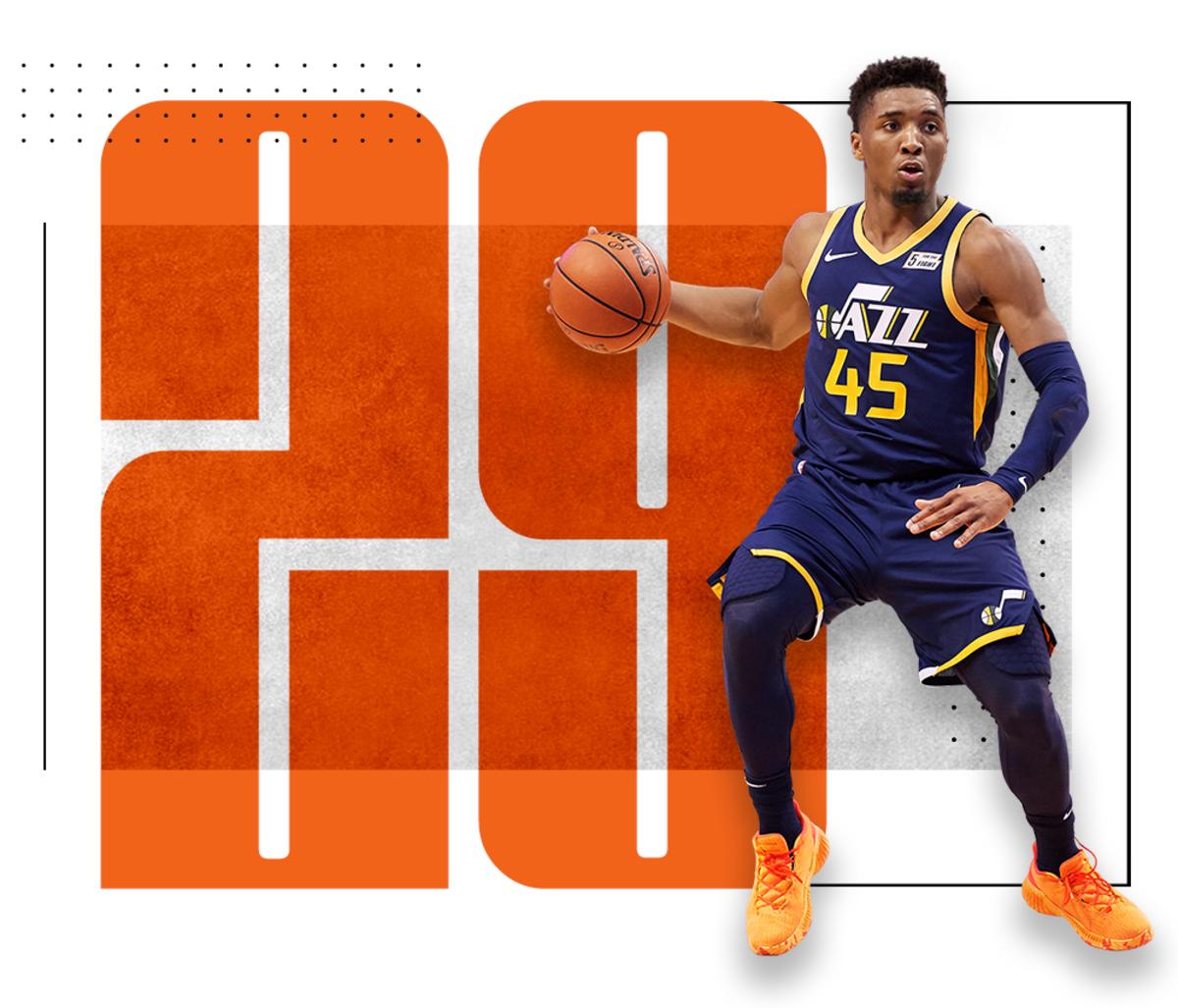
Donovan Mitchell
Utah Jazz
Donovan Mitchell’s hesitation move is a masterclass in persuasion. At the front of the defender’s mind is the knowledge that Mitchell, one of the NBA’s premier drivers, wants nothing more than to get to the basket. Yet the way Mitchell tucks behind a screen and rears back his dribble is an appeal to something more impulsive: a flicker of doubt that, if not dismissed, can take over a defender’s entire body. Veteran players who know better have been caught lunging at a shot that never came, overcommitting to one of the more erratic aspects of Mitchell’s game. To be honest, his jumper comes and goes. What makes him such a dynamic scorer, regardless, is the speed with which he punishes a defender’s mistakes. Even a slight lean in the wrong direction can strand Mitchell’s opponent before his move is ever made.
You can slow Mitchell down, but it takes a village: the right perimeter defenders, the right rim protectors, and the right peripheral coverage to make him feel like the walls are closing in. Tactical advancement is Mitchell’s next frontier. What happens when he learns to better pick his spots? How will defenses reckon with Mitchell once he’s better able to pass his way out of trouble? With Mitchell entering his third NBA season and likely learning from a third straight playoff run, we could get our answers sooner rather than later.
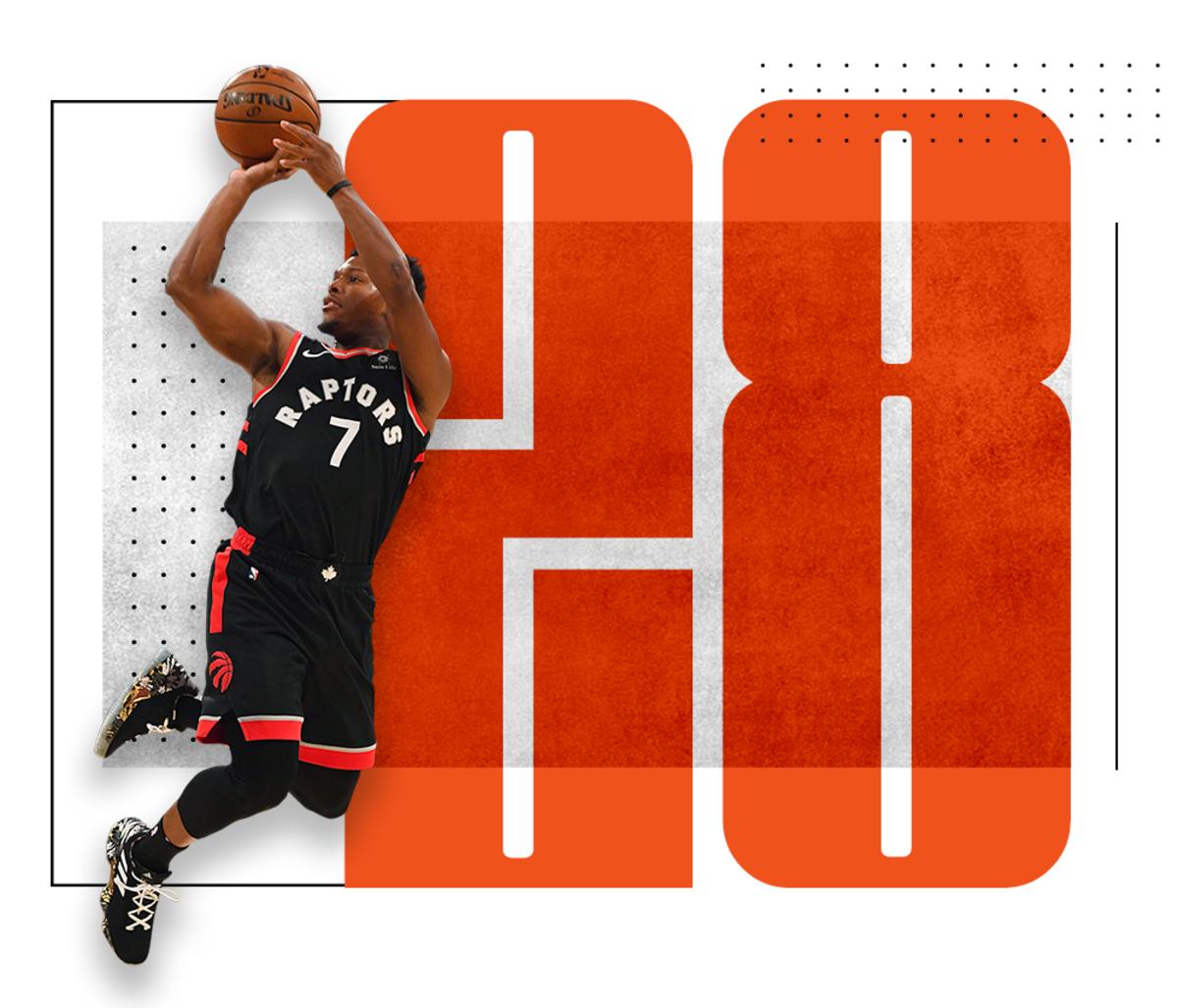
Kyle Lowry
Toronto Raptors
If you were designing the ideal point guard to play next to a superstar, his game would probably look a lot like Kyle Lowry’s. For starters, he would be able to score but not insistent upon it, striking the delicate balance that holds the attention of an opposing defense. You would want a pragmatic playmaker who reads the game without feeling the need to control it—like, say, the Raptors point guard who ranked second in the league in assists per game but 29th in time of possession. It would be best if this tailor-made guard were dynamic without the ball, given the way NBA offenses orient around their single best player. That requires not only three-point shooting (like you’d get from Lowry, a 37% long-range shooter for his career) but a sense of when and how to move. The last thing you’d want is some over-eager sidekick getting in the way, so this guard would also need Lowry’s particular combination of motor and discretion.
To fully fit the bill, they would need to be a stout individual defender who can adapt along with the team concept, and a disciple of the hustle play with natural competitive instincts. Check and check. They would have championship experience. It would help if they could hold their own in switch situations, like Lowry does, and even box out bigs here and there to bolster a team’s rebounding. Unselfishness would be non-negotiable. The guard in question would need to facilitate a transition game to build out the offense, just as Lowry does with his hit-ahead passes. You could dedicate countless resources and lean on some hideous science to try to Frankenstein together such a player. Or, you could just trade for Kyle Lowry.
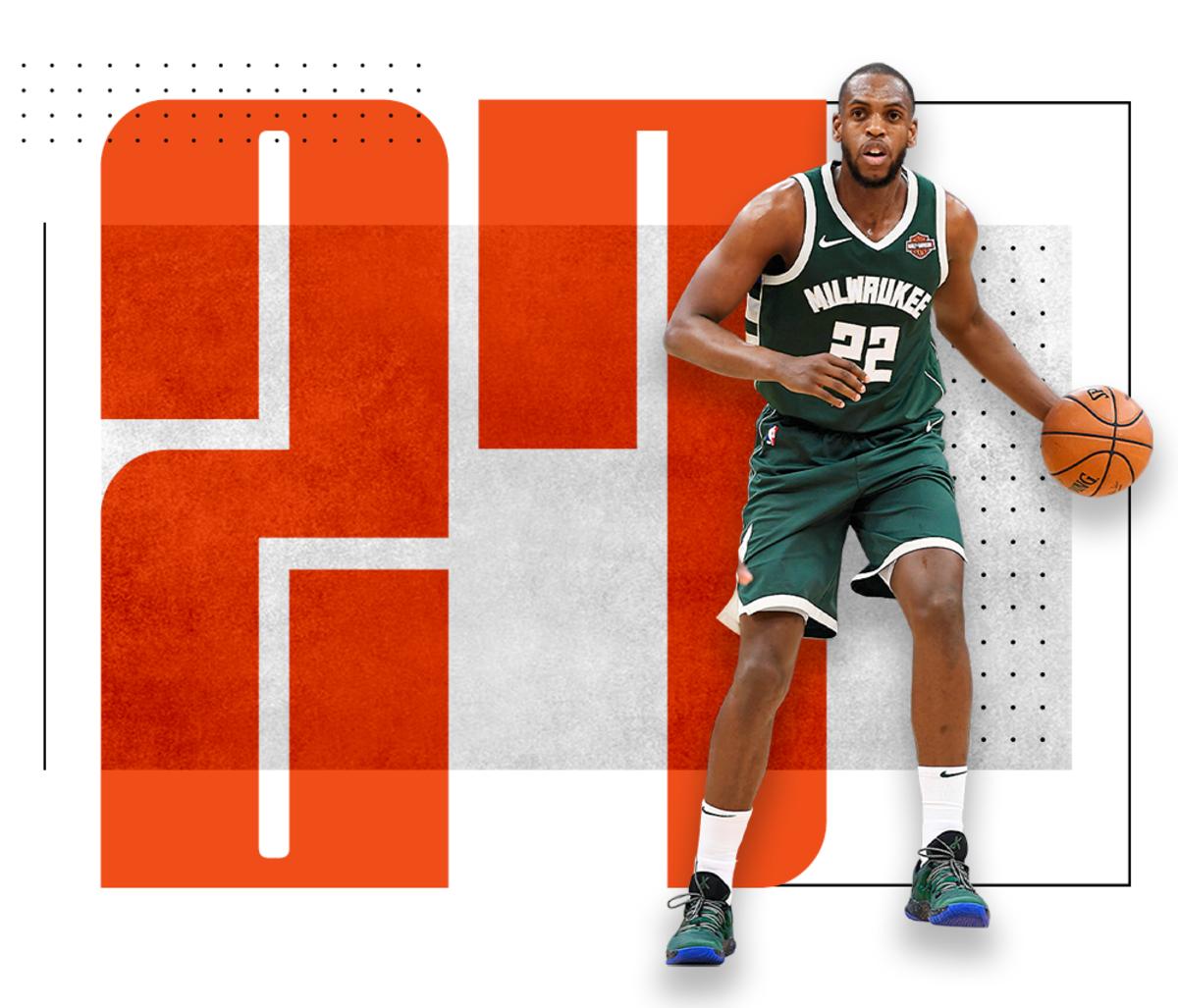
Khris Middleton
Milwaukee Bucks
Wings are where teams often find their flexibility, and few assist more in that pursuit than Khris Middleton. We saw last season what Middleton can do in a simple, streamlined role: make a career-high 179 three-pointers (on 38% shooting), give a superstar all the room he needs to work, and carry second-unit lineups in need of his shot-making. If his team needed an intermediary, Middleton could help connect the dots of the offense from the middle of the floor. The mid-range game that Mike Budenholzer tried to put to rest isn’t gone, only dormant; if it made sense within a team context for Middleton to work the post or pull up for mid-range jumpers, he certainly could. Positionally speaking, Middleton could guard a two, a three, or a four, which means he could play the two, the three, or the four. (Team USA has even toyed with trying Middleton as a small-ball five.) The optionality is the point. Middleton may not dominate any one phase of the game, but by filling gaps as needed, he allows his team to dominate.
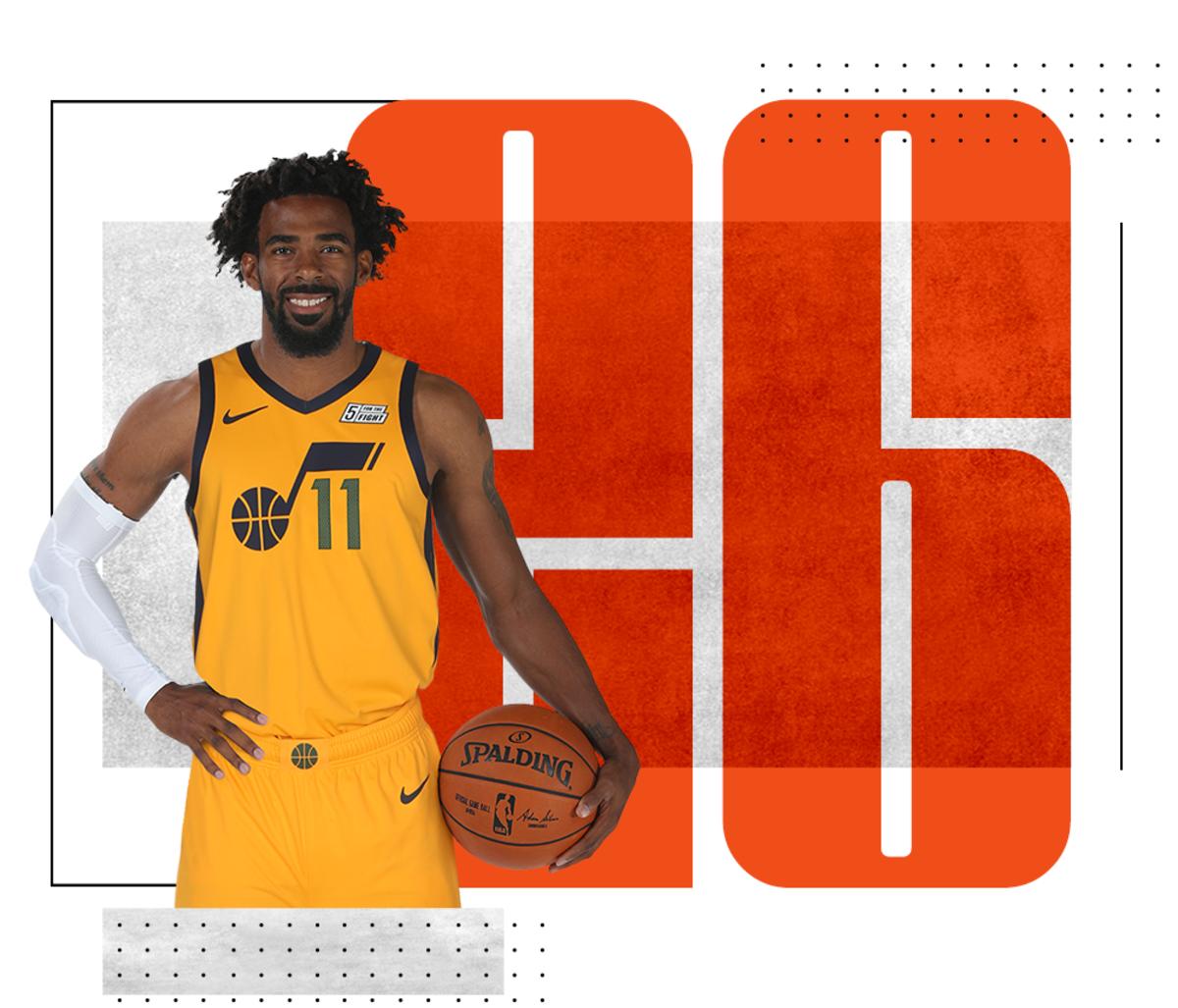
Mike Conley
Utah Jazz
You’d be forgiven if you didn’t catch much of the 33-49 Grizzlies last season, so long as you don’t let what was out of sight fall out of mind. Mike Conley is far too good for that—an All-NBA-worthy guard who actually dragged Memphis to a slight winning margin during his time on the floor last season. Necessity drove Conley to his highest scoring season to date. Under ideal circumstances, he would orchestrate a more balanced attack. Utah should give him that opportunity, and with it his first real shot at contention in a half-decade or so. It also, curiously enough, might be the first time that Conley goes to work with any real, consistent spacing. The breathing room should serve him well. Conley runs a tight ship as it is, keeping his team’s offense in rhythm and their turnovers way, way down. Leaning on Conley is a low-risk enterprise. Good offense can be as easy as letting him run dribble hand-offs or high pick-and-rolls, both of which he reads with impressive fluency. Some guards know how to work a situation to their benefit. Conley knows how to run a team, from the nuts and bolts to its beating heart.
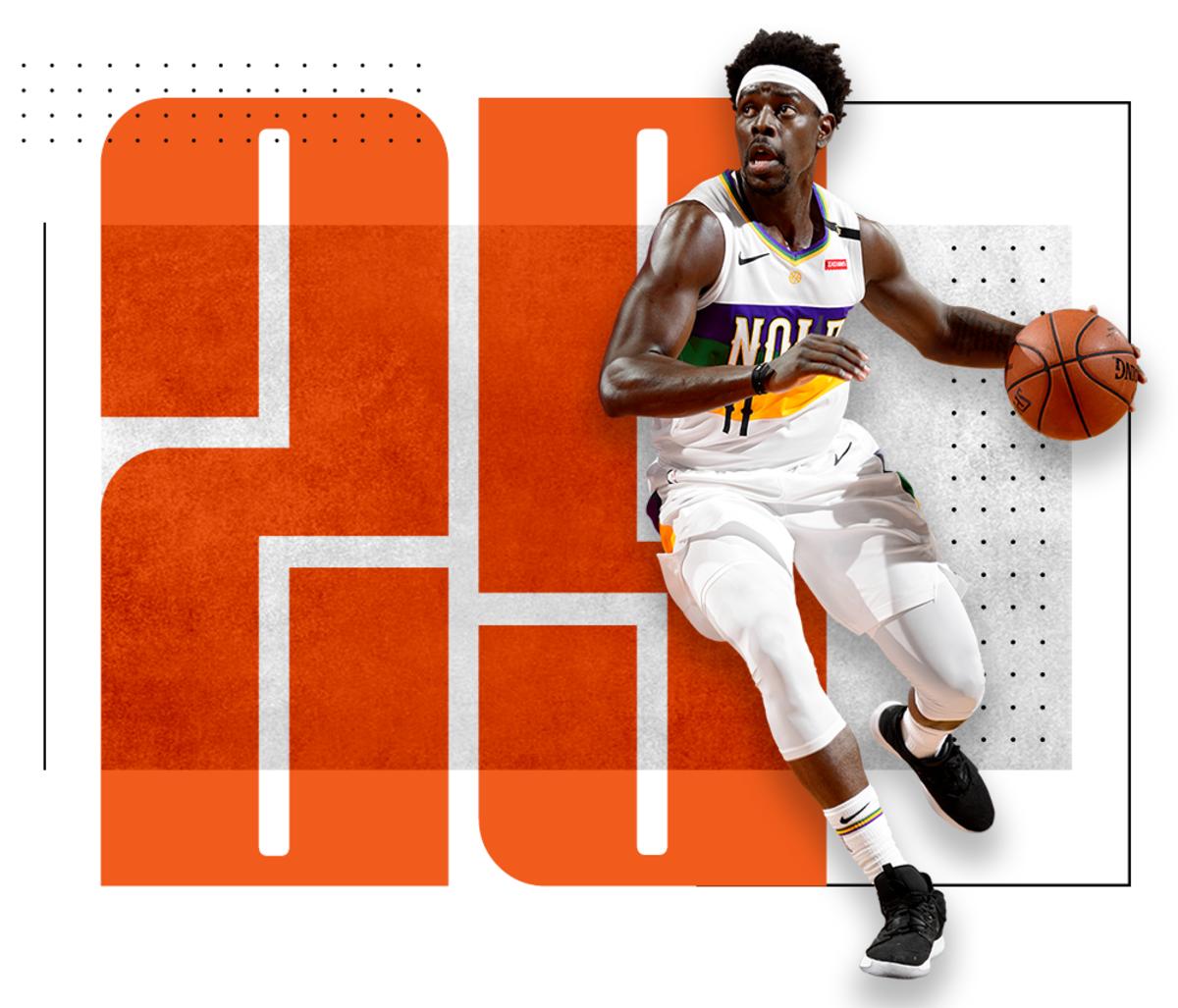
Jrue Holiday
New Orleans Pelicans
What Jrue Holiday does on defense seems like it should be impossible in the post-hand-check era. Guarding on the perimeter has become a rather delicate business; not only are defenders put at a clear disadvantage by the current rules, but they’re also forced to recalibrate their approach whenever league officials issue a new point of emphasis. Somehow, Holiday has navigated all of this while exerting control over most anyone he guards. Attempts to push past him wind up taking the ball-handler well off their intended path. It’s Holiday who guides them there, bodying them without really bumping them. It takes quick feet and great hands to be a top-flight defender, but don’t underestimate the importance of a strong frame. Holiday is a sturdy 6’4’’. If an opponent manages to escape his denials, dribble cleanly, and make their move, they still have to overcome the physical resistance of pushing through Holiday at every step. Not bad for a combo guard who quietly averaged 21 points, eight assists, and five rebounds a night. The guards behind Holiday on this list might share similar strengths, but lack his size, his poise, his versatility, or his defense. It’s the combination of those qualities that really separates him, even from a group of talented peers.
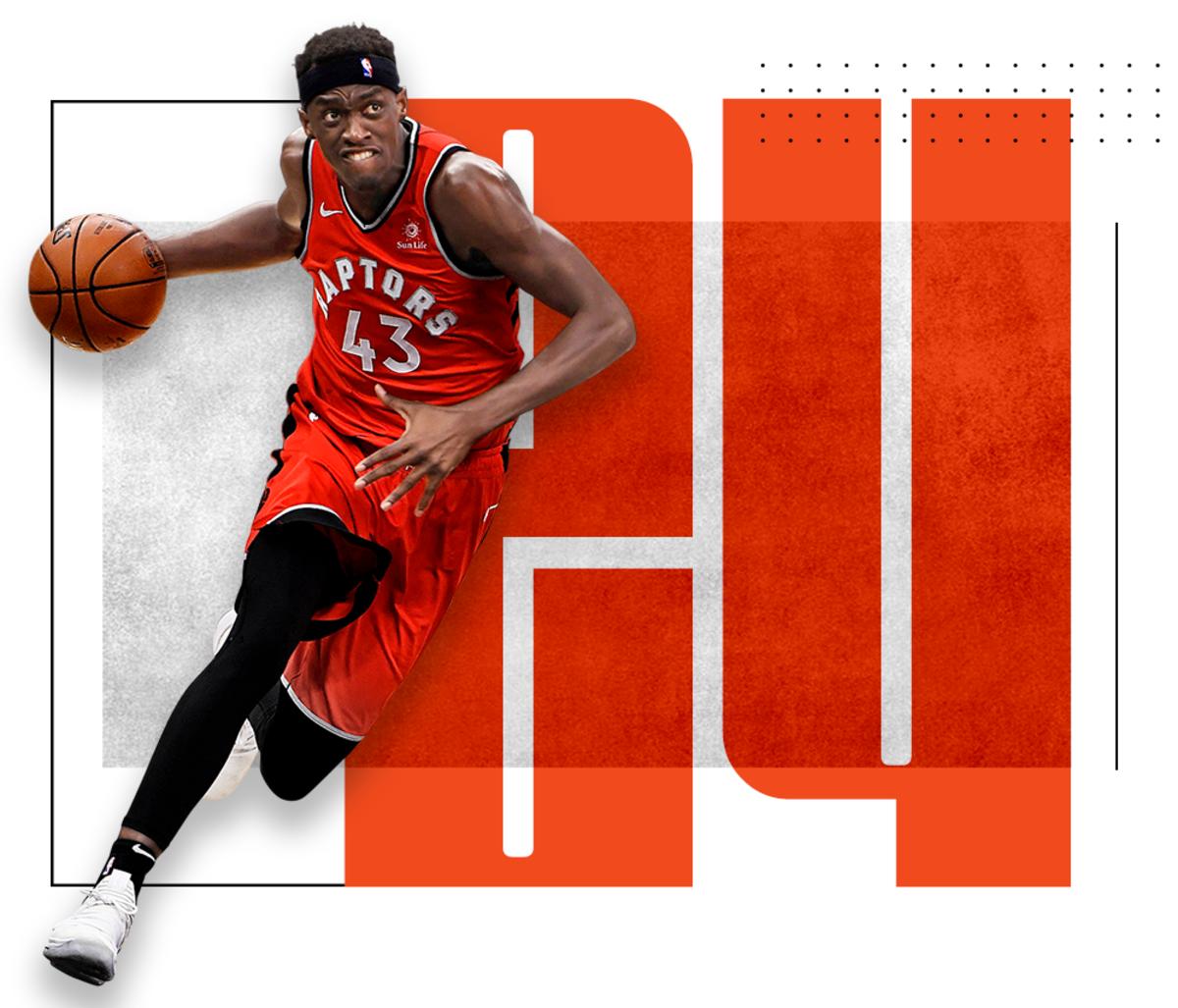
Pascal Siakam
Toronto Raptors
Playing against Pascal Siakam requires a different level of attention—a constant, dialed-in, head-on-a-swivel investment that is mentally exhausting. Tracking him seems like a full-time job. When an opponent would attempt to rotate on defense, they might move too late for fear of how Siakam might cut. If a potential offensive rebound ricochets into open space, opponents might not even be able to pursue it because chasing Siakam in transition takes a higher priority. It’s a tough lot, keeping tabs on a player who seems to be everywhere. And even if all goes perfectly, the reward is then dealing with one of the most surprising shot creators in the game. What earned Siakam the Most Improved Player award last season wasn’t his energy or his defense. It was the emergence of a viable one-on-one game from a puff of smoke. Last season, Siakam was only slightly less efficient in isolation than Kyrie Irving and LeBron James, per Synergy Sports. He was more efficient working from the post (on far lighter usage) than Joel Embiid and Nikola Jokić. If Siakam is really this damn good at attacking creating for himself—revelations which vaulted him from outside our Top 100 last year all the way to 24 this year—who’s to say what he can’t do next?
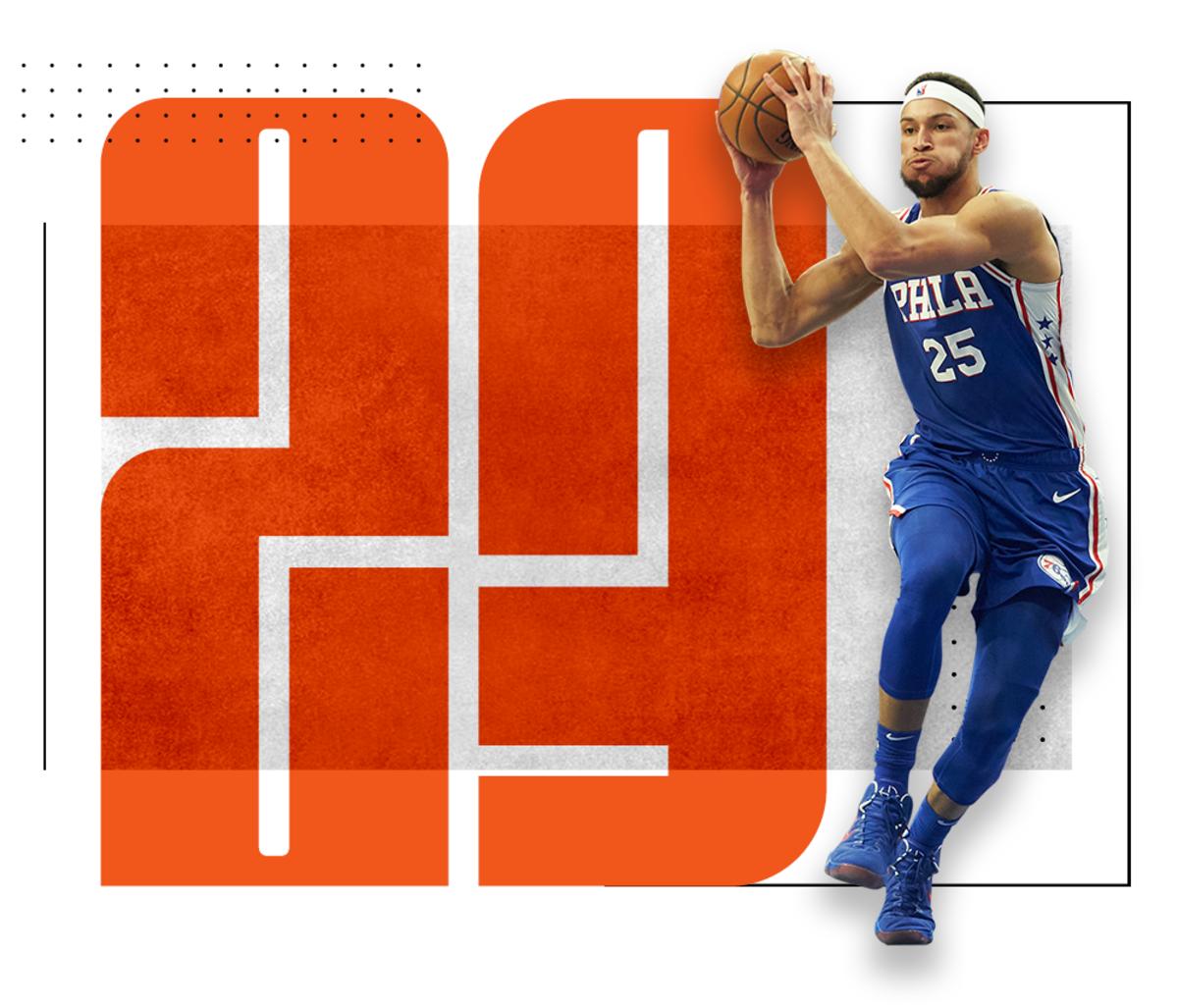
Ben Simmons
Philadelphia 76ers
Any semi-regular viewer of the NBA—or even a casual passerby through NBA Twitter—should have a fairly accurate sense of what Ben Simmons does well and what he does poorly. Where opinions differ is in how to make sense of it. Simmons is no great mystery—but he is a puzzle. Every minute that Simmons plays requires conscious tending to his biggest weakness. If he doesn’t have enough shooting around him (as has periodically been the case in Philadelphia, particularly among reserve lineups), then his efficiency sinks. If the offense needs to run through another player for a time, then a coaching staff has to think carefully about something as simple as where Simmons should stand.
There’s just nothing conventional about Simmons, nor the way his passing can change a game. By virtue of having an enormous playmaker running the offense and pushing the break, certain parts of the game will be made easy. Yet in relying on a player who has categorically refused to take jump shots, what should come easily is made far more difficult. How you view those tradeoffs depends very much on the circumstances around Simmons. If allowed room and pace, Simmons could easily be the best player on the floor. If not, he’s still a versatile defender and a challenging matchup – only with strings attached.
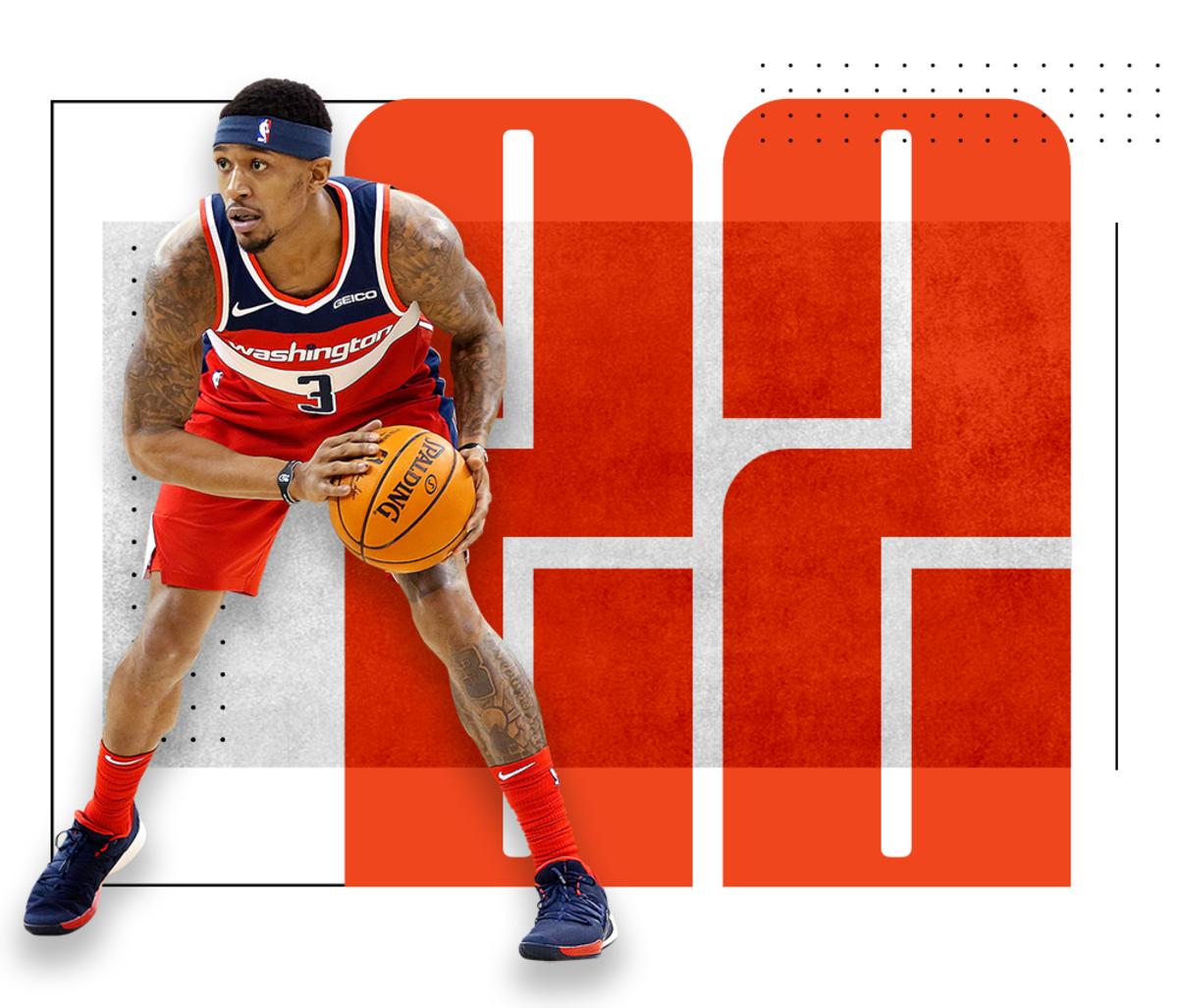
Bradley Beal
Washington Wizards
Over the course of seven years in the league, Bradley Beal has built a rich and interesting game. It all starts with his shooting, and a form that’s as smooth as they come from lift to release. From the threat of his shot comes a sprawl of complementary skills. Precise footwork creates angles where there would seem to be none. Beal uses those angles to make hard drives, propelling him all the way to the rim more often than ever. What he lacks in pure speed, he makes up for in distance. Beal led the league in mileage last season, in no small part because he also led the league in minutes. Keeping on the move is a foolproof way to add juice to an offense, but it also demands that a player put everything they’ve learned into practice without much time for consideration. A curl around staggered screens becomes a quasi-pick-and-roll, until Beal spins back around the screener to take another lane to the basket. Along the way, Beal shows off his handle, the precision of his body control, and his touch as knocks in a runner off the glass. It’s the full array. There are stars who can do even a bit more or work even more efficiently, but nothing about the way Beal operates would leave his team wanting.
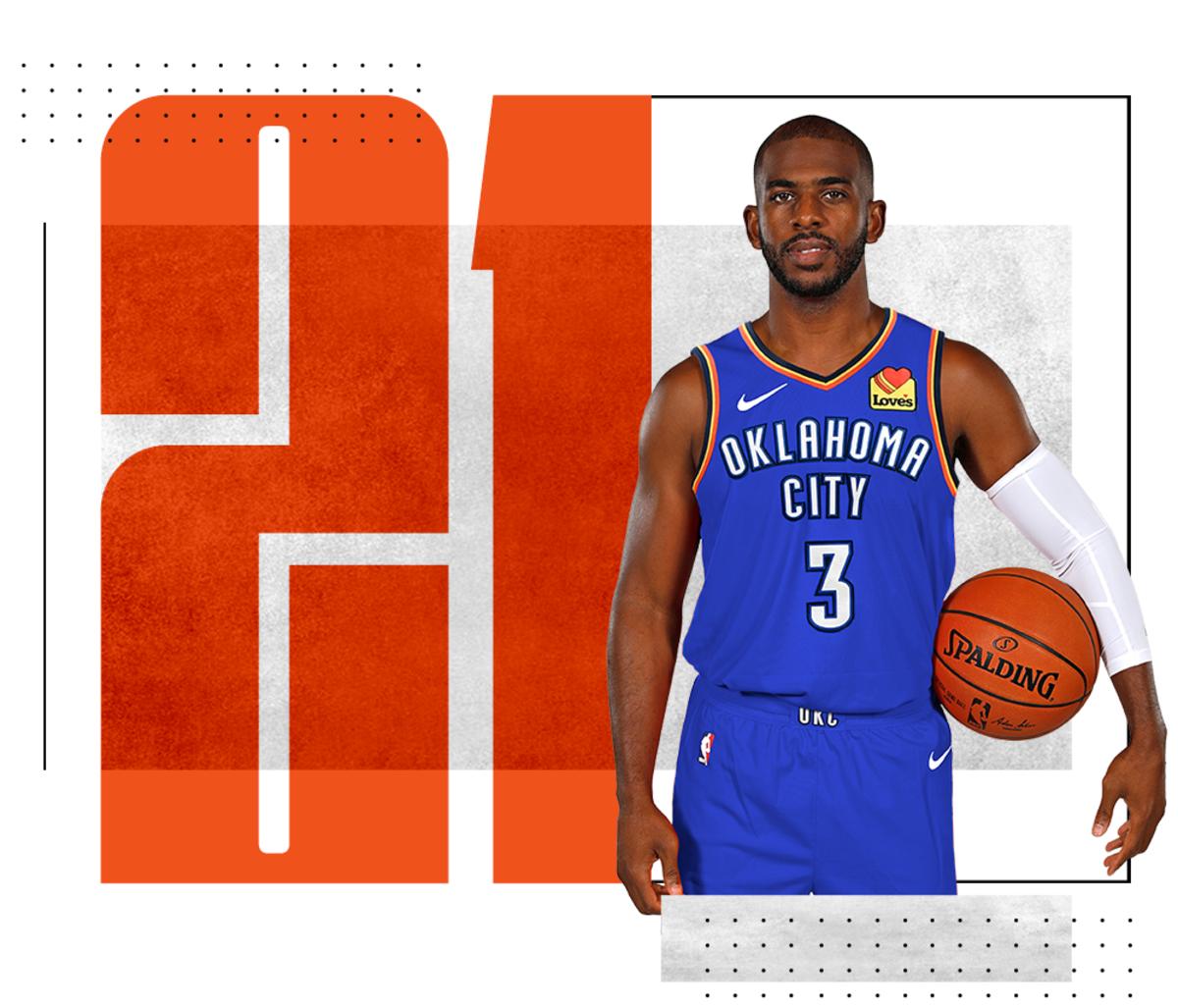
Chris Paul
Oklahoma City Thunder
A decline from superstardom doesn’t preclude Chris Paul from still being an excellent player. The conversation around the rise and fall of NBA players tends to exaggerate things; every veteran who takes a step back is clearly washed, and every young player who takes a step forward is an inevitable star. The truth is always more complicated. Paul doesn’t move quite like he used to, yet last season he still ranked third among all players in points created by assist. It takes a bit more work to create the space he needs, but Paul still scored more efficiently out of isolation last year than Damian Lillard, Paul George, or Russell Westbrook, according to Synergy Sports. Paul still averaged 17 points a game in the playoffs—low by his Hall-of-Fame standards, but perfectly respectable for an older point guard on a team driven by James Harden.
At 34 years old, Paul’s best basketball is clearly behind him. It seems inevitable that he will miss some portion of the season to injury. Yet he remains one of the game’s top minds when it comes to thinking through a matchup, and one of its most reliable administrators when it comes to putting that game plan into practice. In the heat of an unpredictable series, you want to rely on a player like Paul: endlessly resourceful and viciously competitive. Houston actually won Paul’s minutes overall during its second-round rematch—and alarming flame-out—against the Warriors. In the elimination game, Paul scored 27 points (on 11-of-19 shooting) with 11 rebounds and six assists. Paul can be a challenging coworker, and may not be quite transcendent enough these days to be as demanding as he is. Some further decline is inevitable. But if Paul’s performance in that game, and that series, and that season don’t matter, what are we even doing here?
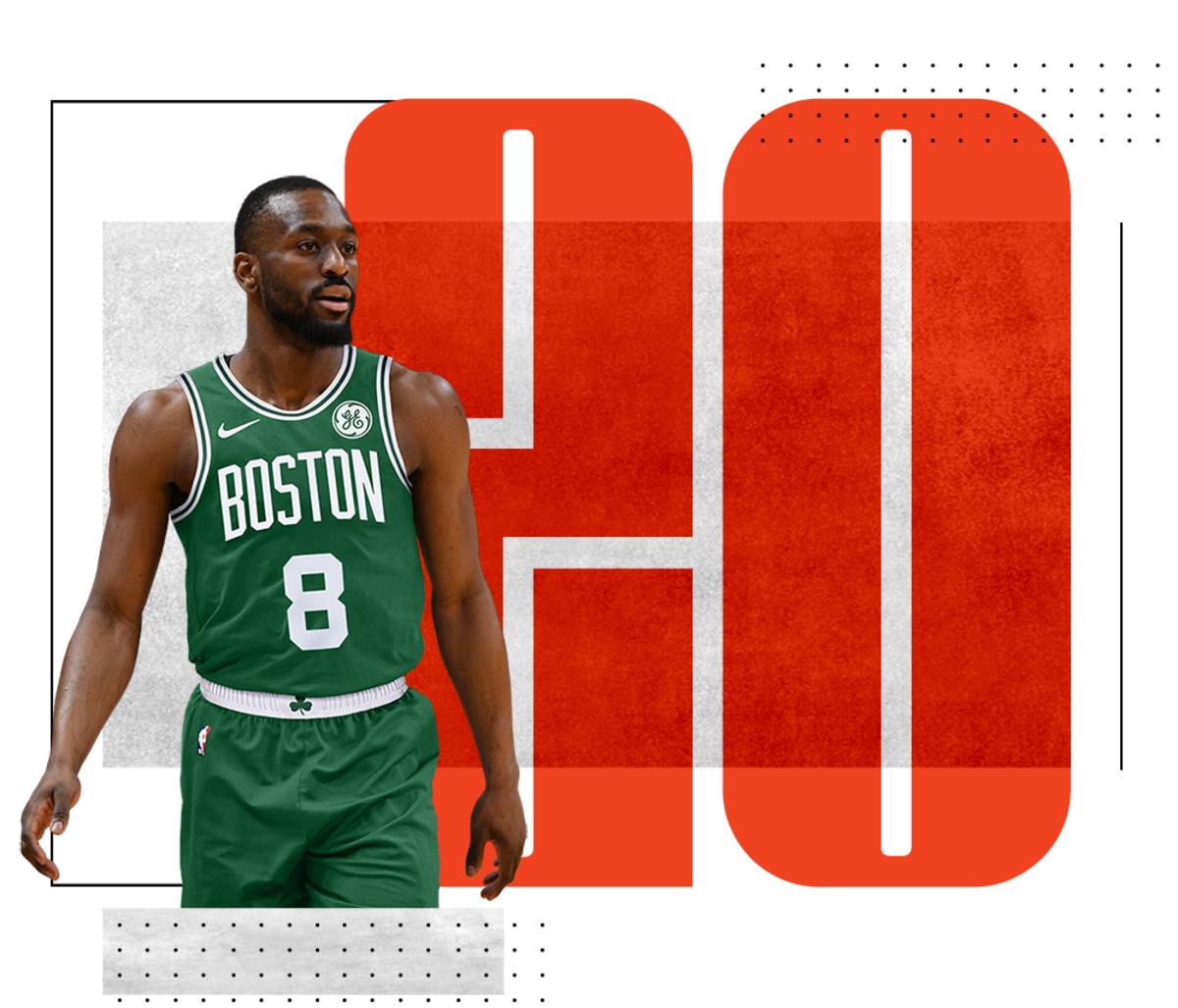
Kemba Walker
Boston Celtics
Pick-and-roll basketball is still the core of the modern NBA, and Kemba Walker is among its chief practitioners. This wasn’t always the case. Walker spent the first half of his career letting defenses off the hook by stepping into long, difficult twos. Those shots are not only inefficient, but static; defenders aren’t forced into uncomfortable situations when a ball-handler comes around a screen in predictable fashion and hoists up a tough shot, which means that the actual power of the sequence goes wasted. The point of running a pick-and-roll is not to get Walker a semi-open shot. It’s to push defenders to the point of panic.
For Walker, that could be as simple as hesitating in the space behind the screen, forcing more conservative defenses into a gut check. It could be the way he chooses to snake through a pick-and-roll rather than attempt a straight-line drive, extending his stay in the areas of the floor most sensitive to a team defense. Or it might even start earlier: before a screen is ever set, where Walker uses a subtle step to set up his defender to be creamed. Opponents have to respect the possibility that Walker might pull up for a three at any time. That makes him a risk from about 25 feet in, which has a way of making opponents antsy before Walker ever makes his move.
The only real downsides with Walker can be pegged to his size. Coaches are generally pleased with the way he goes about his work on defense, but any player this small (Walker is a listed 6’1’’, which feels somewhat generous) will give up marginal advantages over the course of the game. It’s just easier for opponents to see over—and shoot over—the top of him. Walker gets some of those points back by positioning himself well and drawing a ton of offensive fouls, but on a certain level he will always be an undersized guard in a league oriented around verticality. Walker was blocked more than any player in the league last season. There will be passes around bigger, longer defenders that he can’t quite manage. What makes Walker a star is that he just keeps coming anyway, once more unto the breach.
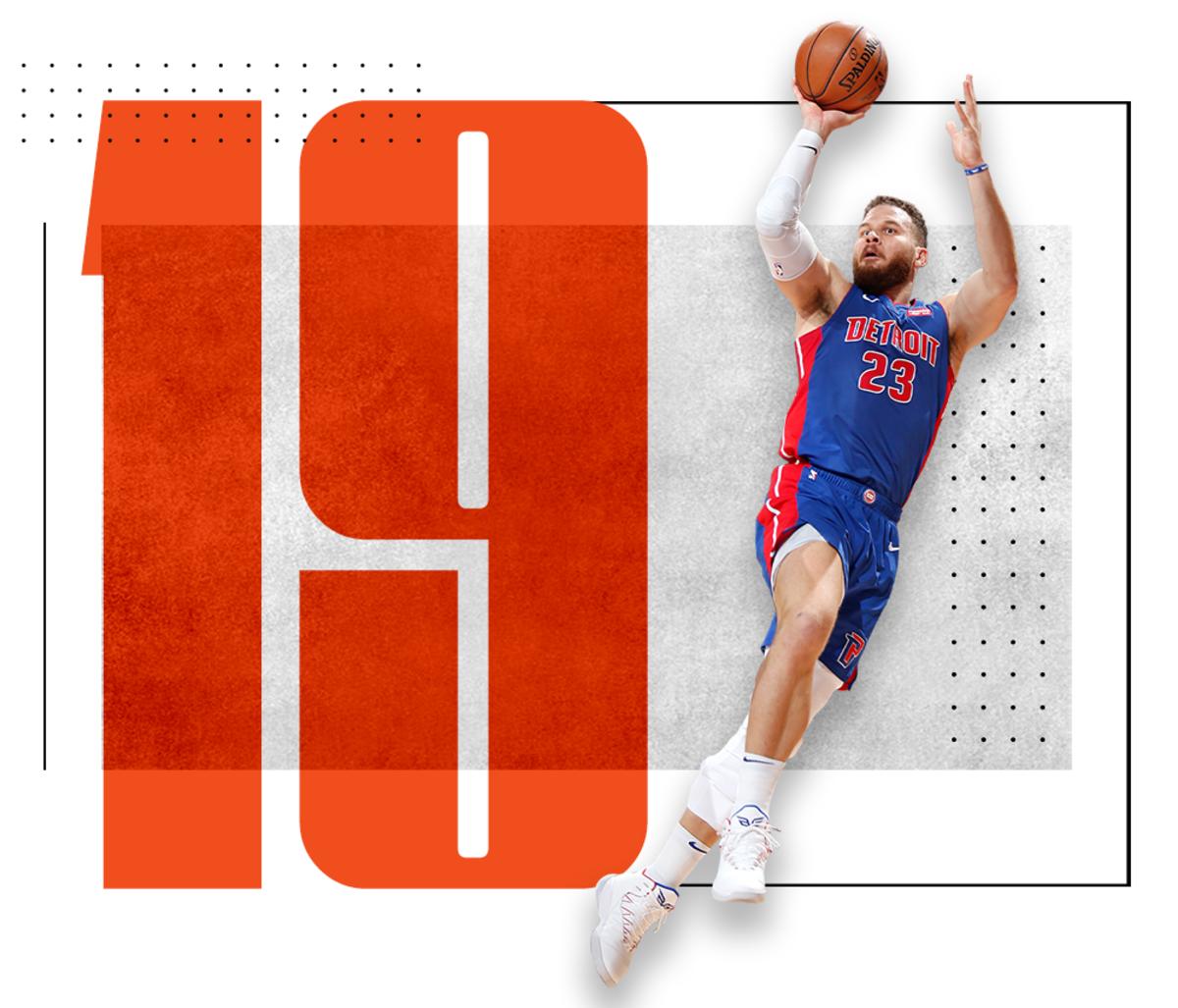
Blake Griffin
Detroit Pistons
Blake Griffin made more pull-up three-pointers on a better percentage last season than Kyrie Irving, CJ McCollum, and Devin Booker. Suffice to say his career will never be the same. After years of gradual development on his shot, Griffin emerged as a kind of player we had never seen before: a big who stretched the floor off the dribble, less a point forward than a 6’10” combo guard. Historically, big men don’t shoot 35.8% on pull-up three-pointers. They don’t have the handle, the feel, or the correct mechanics. Even those who shoot well from distance were trained off the catch from the start. That makes Griffin more than a bit revolutionary. The Curryfication of the pull-up three has changed the way that NBA offenses—and thus NBA defenses—operate. What could it mean if a power forward could apply that same pressure? What are the applications we haven’t even considered?
The modern game isn’t all about shooting, but living in it was for Griffin. When a big can already drive and make plays at an elite level, what other skills are there left to define? It would be helpful if Griffin were a steadier defender, but he does help his team by squaring up and taking charges. (Last season, only two players in the league drew more offensive fouls than Griffin.) In becoming more of a threat from the perimeter, Griffin also made it simpler to pair him with a shot-blocking center. There’s no concern for overlap when Griffin can live at 25 feet, torturing opposing bigs by running inverted pick-and-rolls. Griffin already had the handle and posted an assist rate on-par with Draymond Green. Three-point shooting was the last practical piece.
When a big can stretch the floor the way Griffin does, he can bring a deeply lacking Pistons team to break even. He can do more with less (it’s easier, for instance, to play more limited point guards when Griffin can share in the creative burden), but also more with more; imagine how lean Griffin’s game could be if his circumstances didn’t require him to do quite so much. Frankly, it might be better on his body. Griffin enjoyed one of his healthier seasons in years and still broke down in the end, when a knee injury cost Griffin two playoff games and ultimately demanded surgery. This has always been part of the story with Griffin, and it could play an even larger role now that he has has rounded into his 30s. Hopefully the new direction of his game can help to soften the impact of a long NBA season.
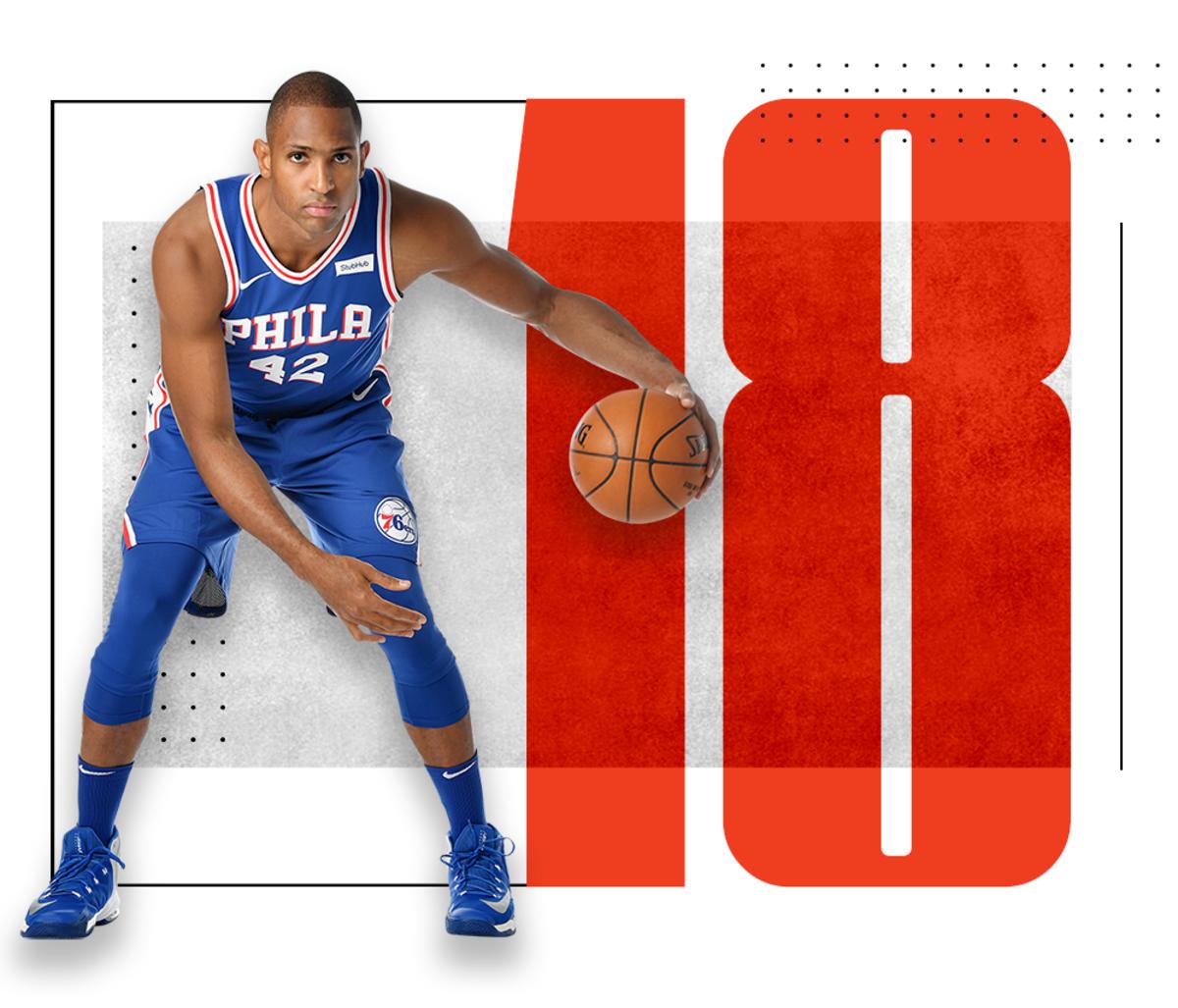
Al Horford
Philadelphia 76ers
When you run into Giannis Antetokounmpo or Joel Embiid or Anthony Davis, you need someone on your team who understands the mechanics of defense at a foundational level. You need a veteran who can internalize a scouting report and maintain a team concept. In short, you need Al Horford. In the games and matchups that really matter, Horford is one of the NBA’s most effective defenders. That’s the whole game, right there. High stakes, high leverage, high return. There are plenty of bigs who score more than Horford (13.6 PPG) does, but precious few who actually contribute more to a winning cause.
Everything about Horford is complementary. In a locker room, Horford is the kind of show-don’t-tell leader that keeps a team on track without them ever really knowing it. Teammates adore him. Coaches sing his praises. It’s very easy to like someone who does so much for the sake of the team and so little for himself. Out on the floor, Horford is the eyes of the offense and the mouthpiece of the defense. You could do worse than to literally run sets around Horford: put him in the high post, cycle cutters around the floor, and enjoy as Horford sets up an easy score just when the defense breaks. In a jam, that same playmaking becomes a team’s best way out of trouble. Reading the floor isn’t all that challenging for seasoned pros. Reading it quickly enough to keep an offense on the fly is a different bag—one that Horford has been carrying with ease his entire career.
Practical experience is part of the appeal. Of course, with it comes the aches and pains of relying on a 33-year-old with almost 30,000 minutes played over the course of his career. It’s best that he pace himself. These days, Horford is more of a perimeter player who picks his spots in the post. His move from Boston to Philadelphia was likely informed, on some level, by the toll of playing center full-time. So Horford takes a more cautious approach that’s lighter in raw production, all for the sake of being there for his team when it counts. A sensible plan, devoid of vanity—that’s about as Horford as it gets.
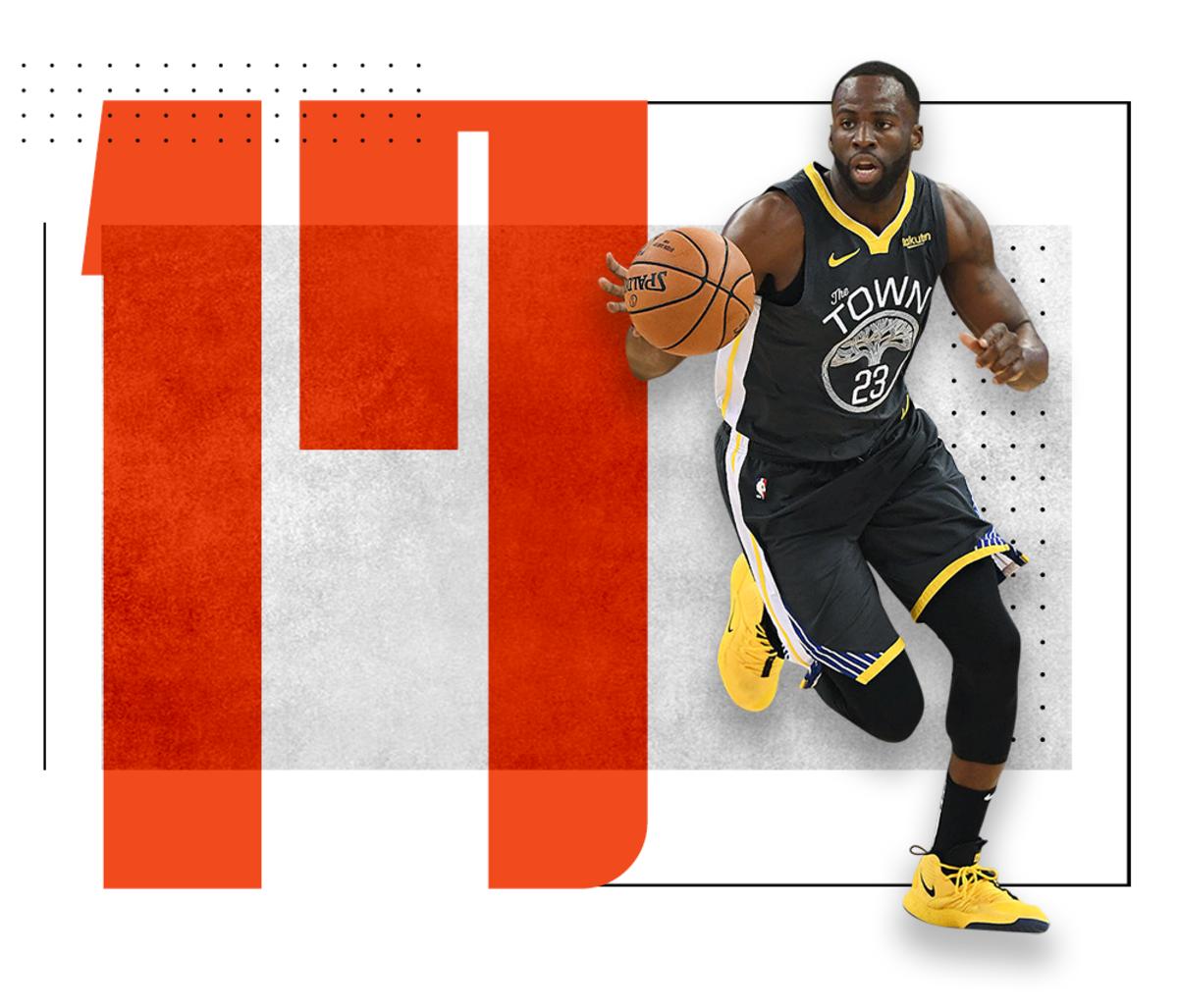
Draymond Green
Golden State Warriors
After a loss to Draymond Green and the Warriors in what would become a four-game sweep, Trail Blazers center Meyers Leonard stood in awe. “Watching him on defense, I mean, it's incredible,” Leonard said. “His reads, his communication, his weakside defense, blocking shots, steals…” Green had just blown the mind of a seven-year veteran. Considering the circumstances, that reaction was perfectly understandable. There are nights when Green seems not just perceptive, but clairvoyant—working in advance of developments that have yet to occur. Then, when they do, it becomes clear that Green knew where a possession was going all along. Some players just understand the way the game moves on such a fundamental level that they can manage to get ahead of it.
That literacy is what makes Green such an incredible playmaker. The notion that Green is some sort of system player—one of the most common criticisms levied against him—is laughable. What team doesn’t run pick-and-roll? What offense doesn’t need an intermediary? Who doesn’t need the kind of competitor who can raise his game for every playoffs? Playing with Stephen Curry and Klay Thompson is a great gig, but it’s not as if they’re the only way to unlock Green’s powers. This is one of the greatest defenders in the history of the sport and one of the best playmaking bigs of the modern era. Something tells me he’d get by just fine working in Sacramento, Orlando, or Indiana. All Green really needs is an offense that creates energy and enough scorers to give him cover.
But keep in mind: During the regular season, Green averaged just 7.4 PPG, because that’s how he prefers to play. He also gladly ignited the powder keg that burned Kevin Durant, which may or may not have played some part in his leaving the Warriors. Green is sharp, and often right. He’s also abrasive enough to deliver his messages as he sees fit, no matter the fallout. It comes with the territory. If Draymond is on your team, you’ll have an edge in processing power in most any playoff series. You also might have an on-court blowout in the middle of a game when Green’s honesty gets the better of him.
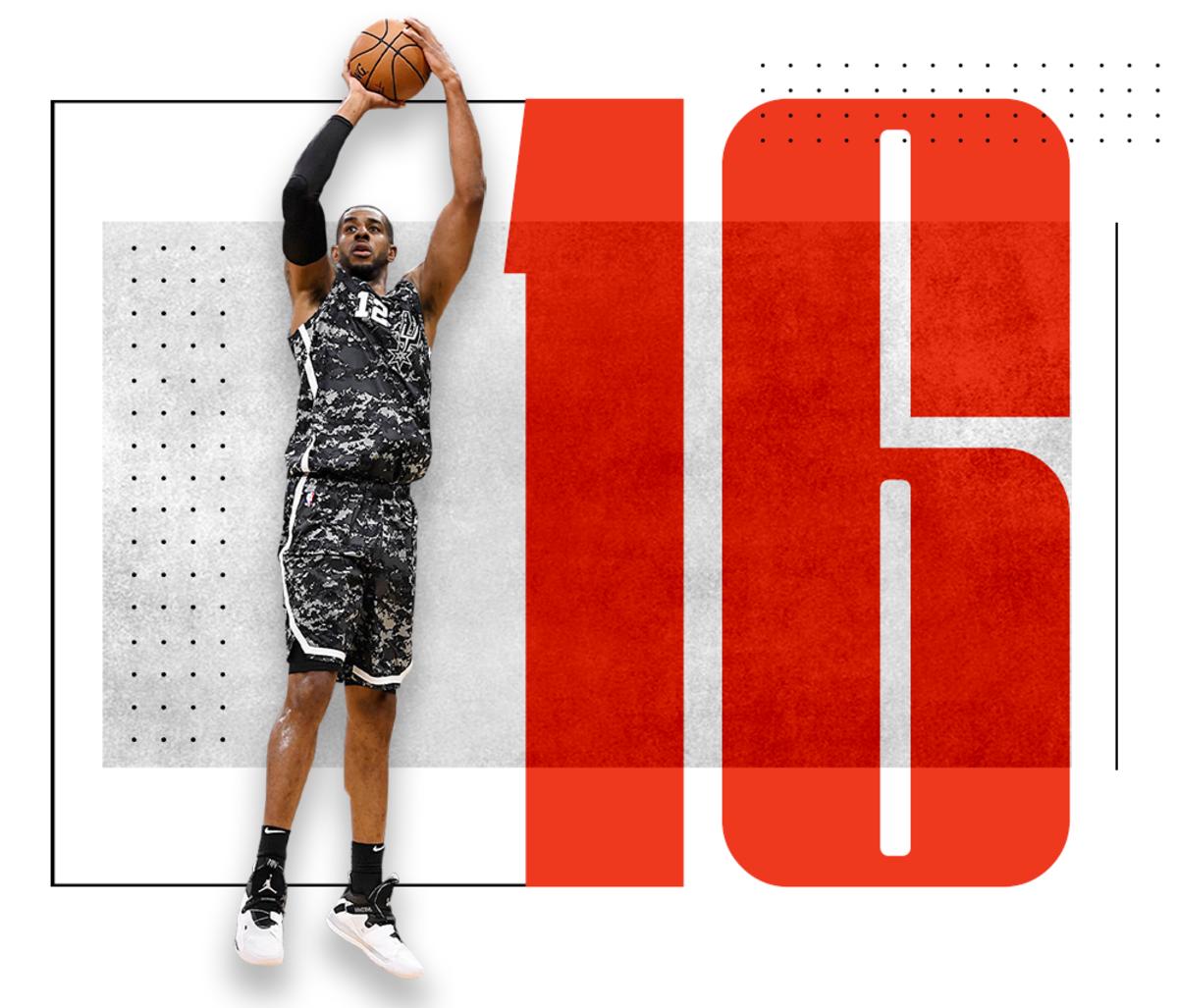
LaMarcus Aldridge
San Antonio Spurs
As safe as bigs come. Over the past six years, every team LaMarcus Aldridge has played for has won at least 47 games; whatever reservations you may have about his game, it remains a reliable way toward stable, successful basketball. So few possessions are wasted when you can run the offense through Aldridge. Post entry and basic pick-and-roll action protect Aldridge’s point guard from overstretching their game. Then, when the ball does get to Aldridge, it stays safe in the hands of one of the lowest-turnover creators working. San Antonio lost its starting point guard before the season and still finished the year with the best turnover rate as a team. That doesn’t happen without Aldridge sopping up possessions, and in the process giving his team as many actual shots at the basket as possible.
It’s an admirable profile: stick to what you do well, and in doing so, learn to do those things very well. Yet in playing such a low-risk game, a team styled around Aldridge imposes a cap on what it can achieve. Aldridge may only be a few degrees short of superstardom, but those degrees are meaningful. The difference between being an effective pick-and-pop player and an elite pick-and-pop player could swing a playoff series. If Aldridge were even slightly more dynamic, he might be able to elevate a team rather than carry one. That just isn’t his game. Pairing Aldridge with an even better player (not unlike what San Antonio had done with Kawhi Leonard, until a Zaza Pachulia undercut said otherwise) can put his team into a contending category. Anything less and Aldridge will take a team as far as steady hands alone can go.
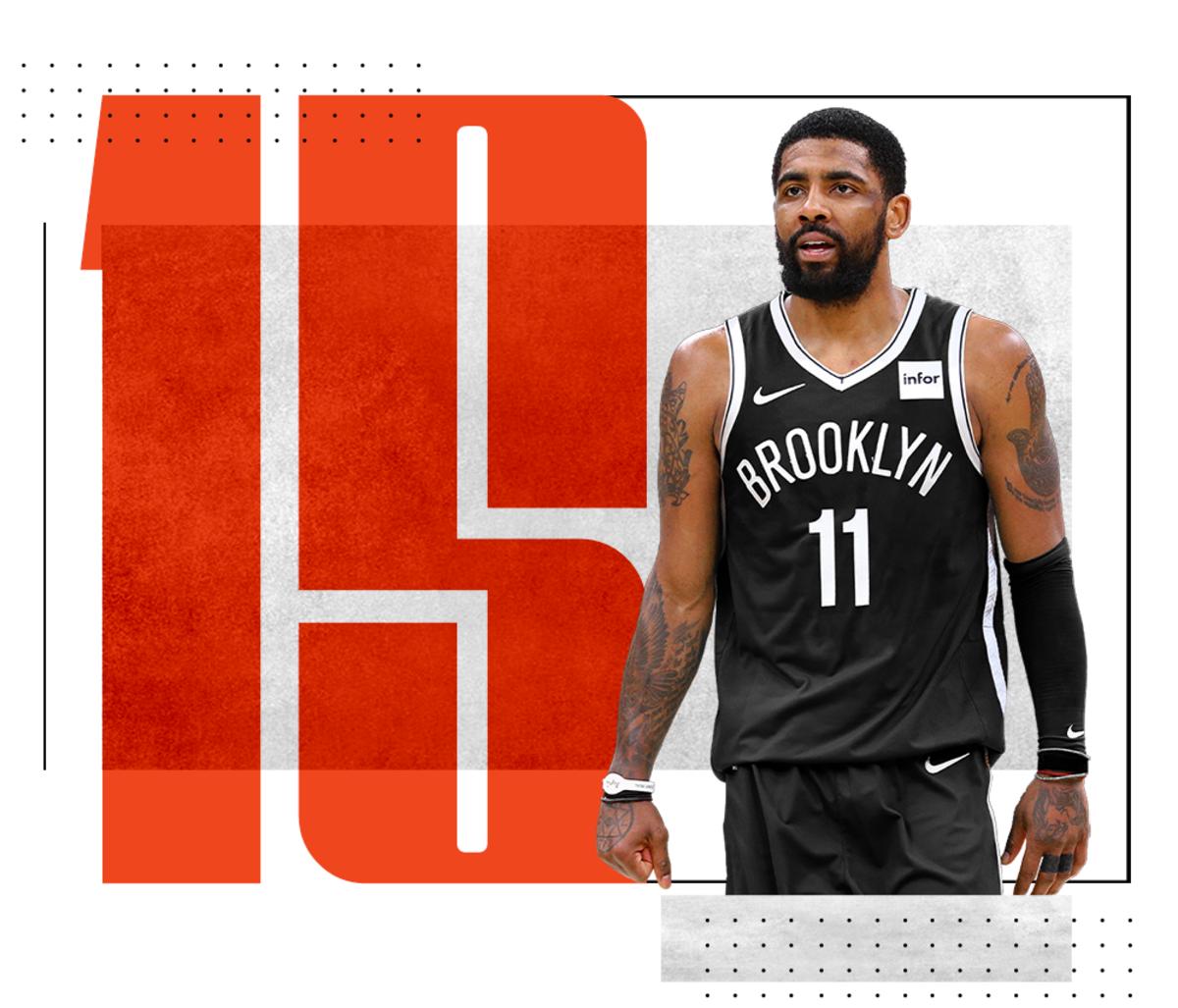
Kyrie Irving
Brooklyn Nets
It seems hard to know where you stand when you work with Kyrie Irving, which might be worse than knowing for certain that he’s unhappy. That’s not poor leadership. That’s being a bad teammate. Every team has its frictions, and most competitive ones have truly incendiary moments. Professionals communicate clearly in those moments, hear out the other side, and try to move on. Irving tried something else with the Celtics last season. Boston, shockingly, played disjointed basketball to the bitter end. It was Irving who led their descent into dysfunction with the season on the line, forcing up shots against a tough Bucks defense and calling for audibles that served no one. It was a fitting end to a season in which Irving demanded leadership of a team and then chafed at its practical, interpersonal realities.
It’s just not easy to work with people like Irving. It is, however, exceedingly easy to understand why a team would invest in him anyway. Amid everything that happened in Boston last season, Irving played the most complete regular season of his career. His dazzling creative talents were on full display. He defended more consistently and passed more willingly than ever before. It was close to a best-case scenario for Irving’s individual performance on the court, even as problems swirled off of it. There are only a handful of players in the world—at most—who can do what Irving does with the ball in his hands. It’s unfortunately the rest of the time that might make you reconsider.
Every franchise and locker room will have its own tolerance for extracurricular drama, which makes ranking Irving a challenge. But any player below him on this list presents their own issues. Some are injured or in decline. Others raise question of fit, or attitude, or playoff viability. There’s always a catch. Irving’s talent is just overwhelming enough to make you believe he could be worth it.
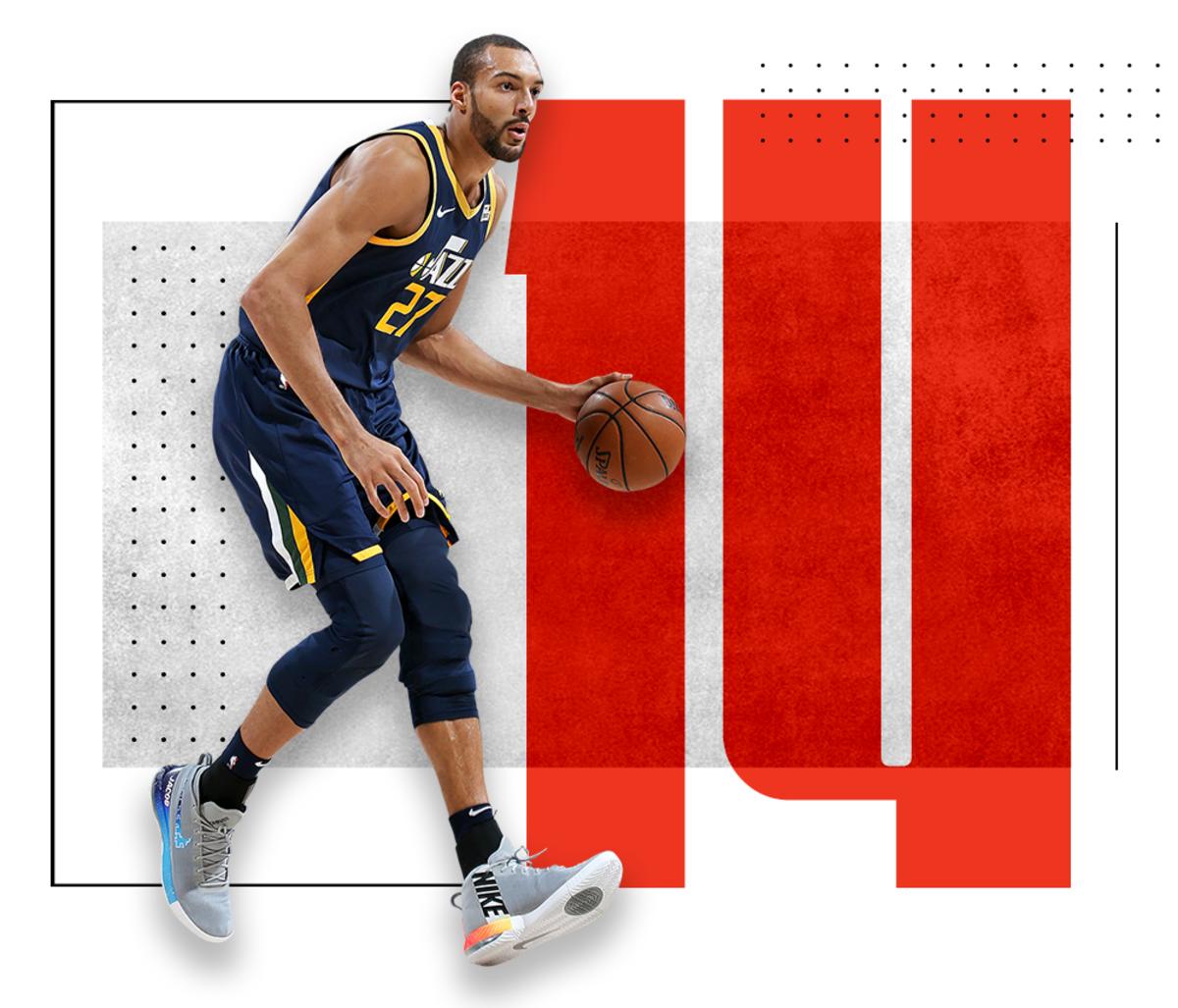
Rudy Gobert
Utah Jazz
For a second straight season, the Rockets punked the Jazz in a playoff series and buried Rudy Gobert in the process. There’s no way around it. But there is some room for nuance; the relationship between more traditional centers and their small-ball opponents tends to be discussed broadly, when every team and player involved has their own unique basketball character. Houston is a uniquely challenging opponent, oriented around one of the most anomalous creators in NBA history. And Gobert isn’t some run-of-the-mill plodder, but a back-to-back Defensive Player of the Year caught at a particular stylistic disadvantage. Just because the Rockets were able to neutralize Gobert does not mean other teams could. There are levels to this—and to the efforts of any player to make their impact on a series.
It takes more than a little space to string out the game’s best rim protector. Even in the rare instances where Gobert switched out to a perimeter player last season, he largely held his own. Opposing guards would turn to exaggerated step-backs to loft the ball over his 9’7’’ reach. Some resorted to tough angles that never had much chance. Even if you beat Gobert with some initial move, it’s hard to fire up a shot freely when a giant is set to float back into frame at any moment. Getting the best of him really requires a singular talent. Russell Westbrook couldn’t manage it when the Jazz ended the Thunder’s season in 2018. Countless others have tried and failed in the regular season. There will always be pressure on Gobert to adapt to the needs of a series, but no big this smart and this competitive goes quietly.
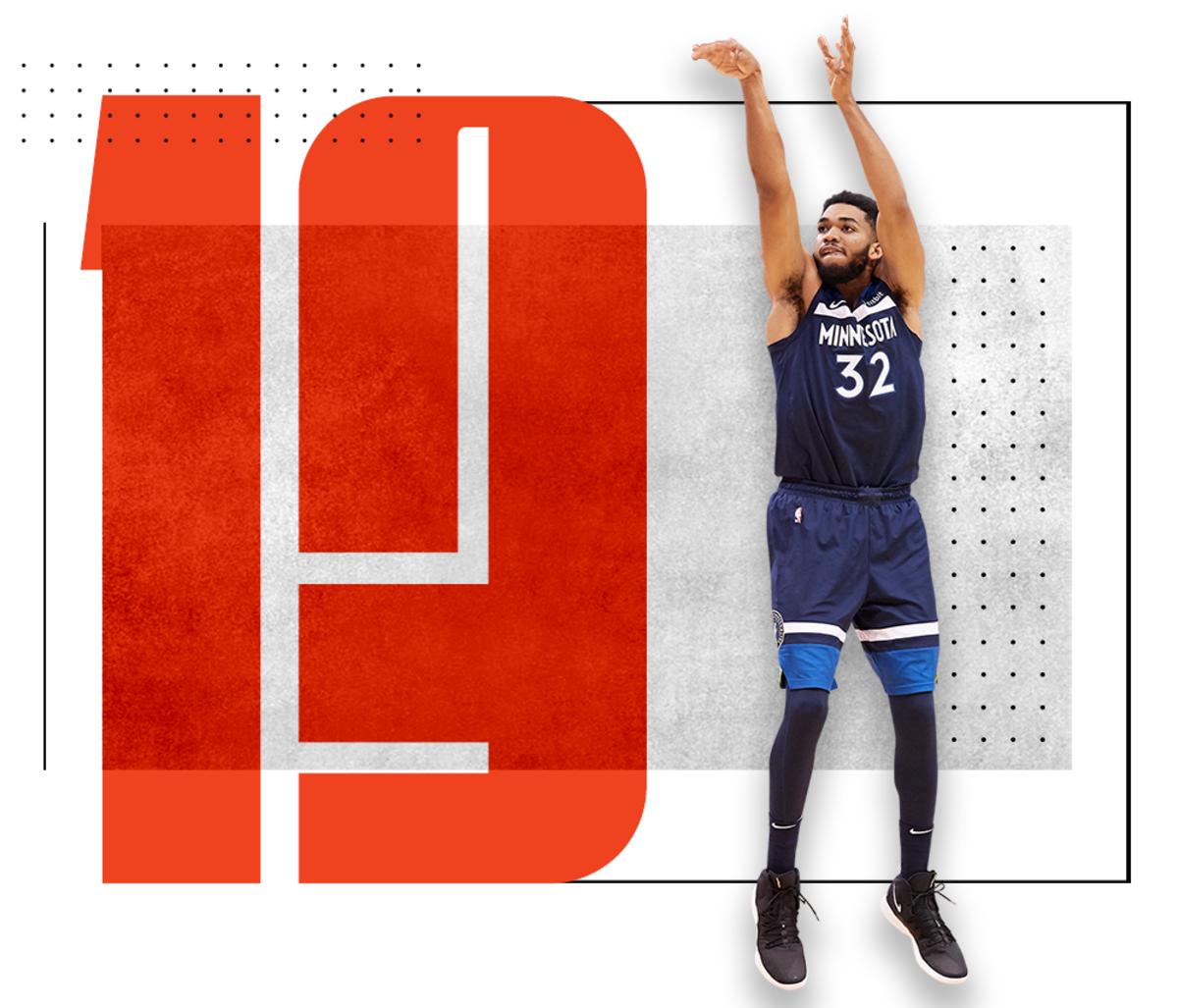
Karl-Anthony Towns
Minnesota Timberwolves
Before you pin Minnesota’s underwhelming play on Karl-Anthony Towns, keep in mind that the Wolves—flawed as they are—were a winning team during his minutes on the floor. There were obvious, fundamental things that Towns could have done better last season, but it’s not as if all was lost. Jimmy Butler hit the eject button, the Wolves fired Tom Thibodeau, Robert Covington missed half the season, and still Towns was dominant enough in the aggregate to keep his team in the black. If allowed even a neutral working environment, Towns might be able to accomplish that much more.
Which is saying something for a center who averaged 24.4 PPG, 12.4 RPG, and 3.4 APG while shooting 52% from the field and 40% from three. At 23 years old, Towns is already the most complete offensive big in the NBA. There’s just the matter of translating those skills, stabilizing his defense, and learning to work through the challenges that come his way. Being a franchise player requires a fair amount of grit. Even if Towns doesn’t have that in him now, he shouldn’t be expected to. No player is a finished product by his fifth season. The timeline just feels more rushed with Towns because his actual skills are so far ahead of the curve. When a big can produce like a superstar, you expect him to think like one. Towns deserves time. It’s on him to clean up his defensive footwork. Even when it’s frustrating, Towns will have to get comfortable with imposing himself more as a scorer. The work of leading a team is hard. Once Towns learns to embrace that, every possibility goes on the table.
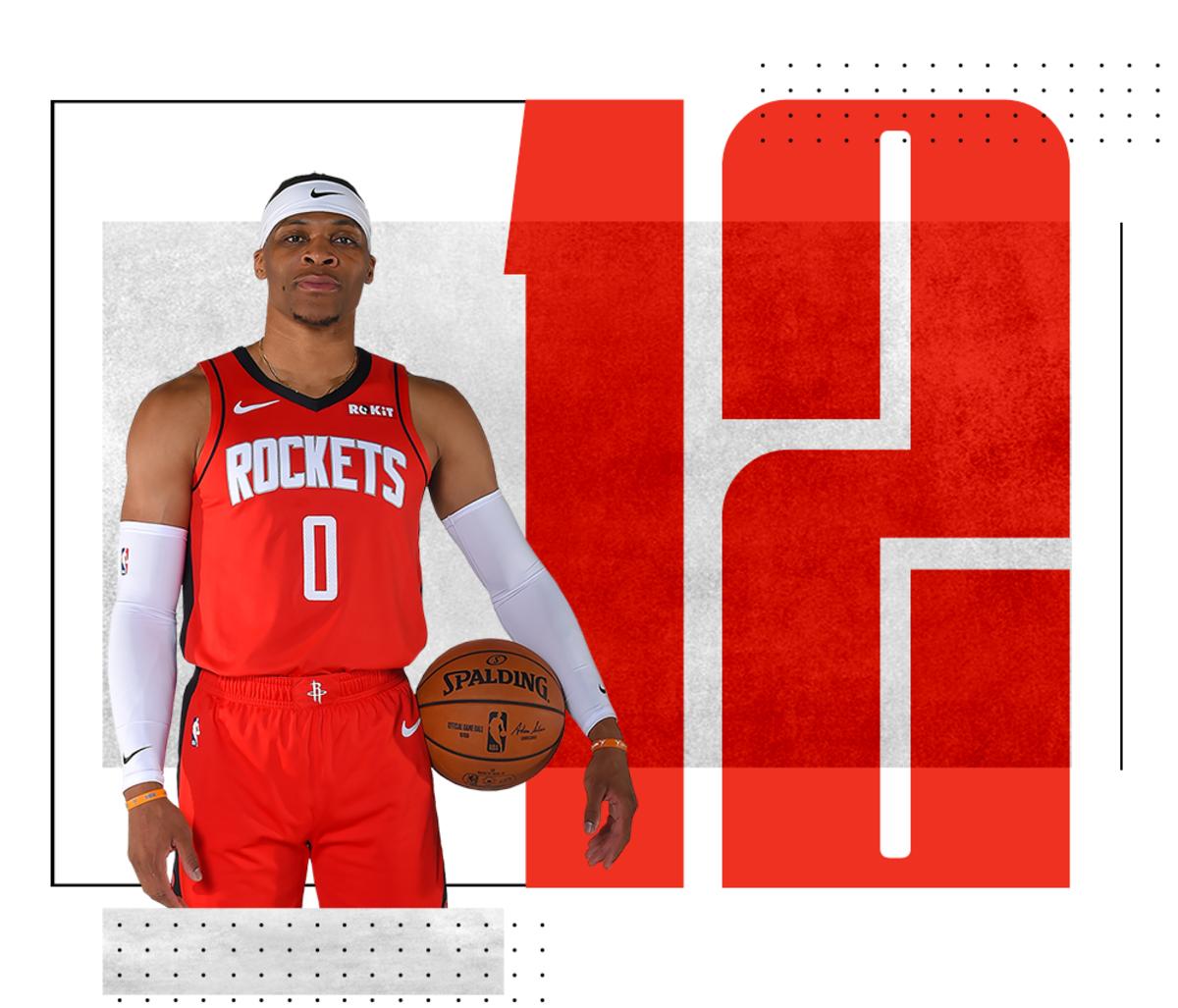
Russell Westbrook
Houston Rockets
The pure force of Russell Westbrook is difficult to measure. We could start with the fact that he just averaged a triple-double (22.0 PPG, 10.7 APG, 11.1 RPG) for a third straight season. We could note that the Thunder were 8.4 points better offensively when their All-NBA point guard was on the floor last season, or that Westbrook himself was responsible for 49.4 points per game by way of score and assist—a figure second only to James Harden. We could mention that when Westbrook was in the game, the Thunder got out in transition 5% more often, which was one of the highest margins in the league. Yet none of it quite captures the effect Westbrook has on the approach and psyche of an opponent. Some matchups feel like a chess game. Playing against Westbrook is more like standing in a high-hazard surf, attempting to withstand body-crushing wave after body-crushing wave.
Of course, what Westbrook does with that force is a more complicated matter. His drives have leaned towards frantic. Last season, they finally tipped over. When Westbrook tried to defer to Paul George, he wound up settling for shots he shouldn’t. When he was resolved to make his mark, he drove headlong into traffic and often came up with nothing. Too many runners went wild and jumpers went haywire. Getting to the basket isn’t a problem for players as explosive as Westbrook. But on the shots he took outside of three feet, Westbrook shot a hideous 30% from the field. His long-range game was a point of historical concern. And that’s how a recent MVP winds up with his worst shooting percentage since 2010, setting off alarms around the league.
Let’s not get too hasty in our search for conclusions. Westbrook’s recent inefficiency is inarguable. Yet it’s easy to forget that one of the most aggressive drivers in the sport has rarely played in space, which is perhaps the single factor most critical to driving success. Houston can offer that—and, to varying degrees, so can the dozen or so teams with better perimeter shooting than Oklahoma City has had. The Thunder was a good ecosystem for Westbrook in many ways (particularly on defense, where teammates always cleaned up after his gambles), though not in the most obvious ones. Good spacing makes every driver look better. The same should hold true for Westbrook in a vacuum, with his percentages trending up accordingly.
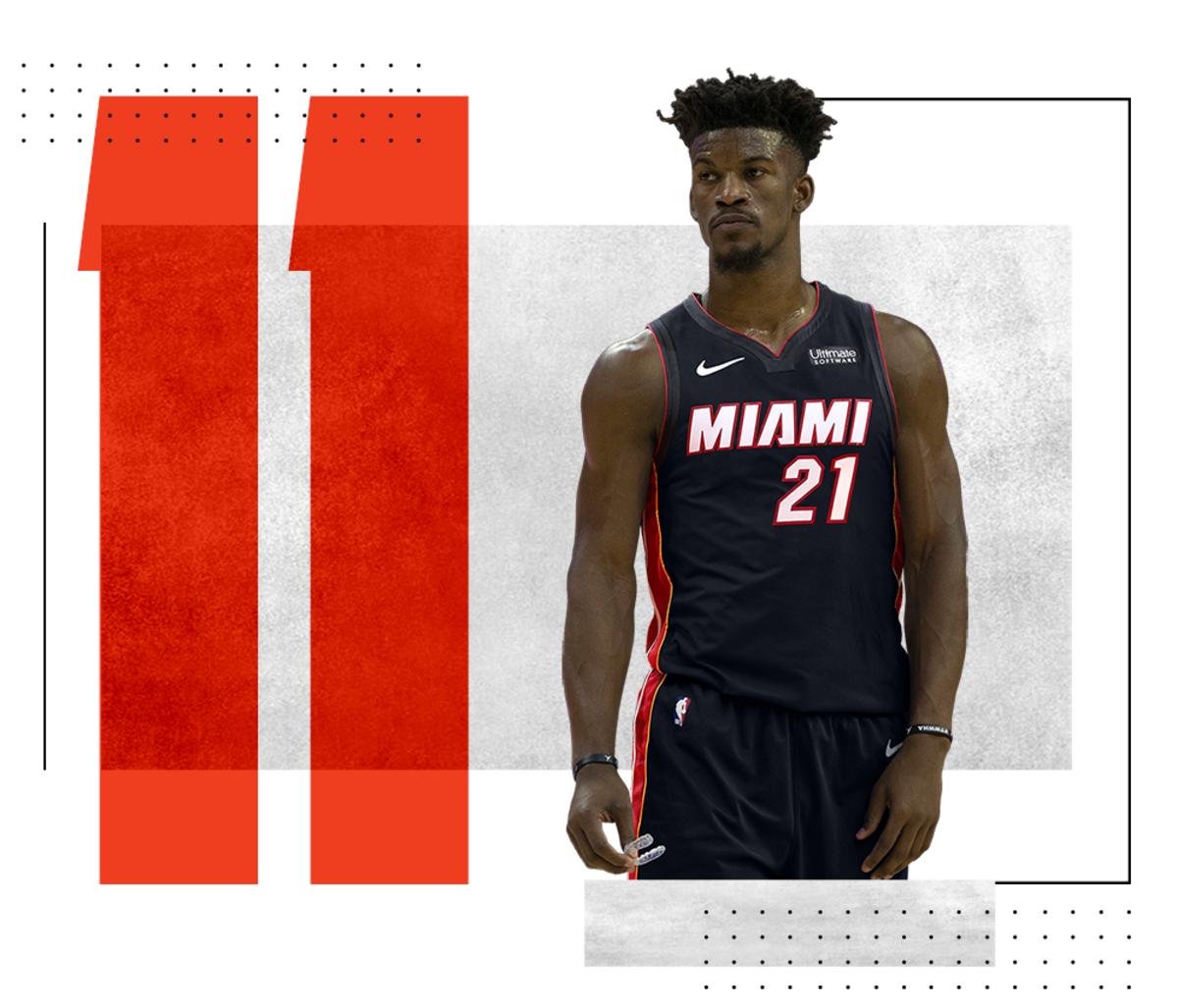
Jimmy Butler
Miami Heat
Part of relying on Jimmy Butler is accepting that he’s a man of certain contradictions. He clearly cares about winning, so much so that his game reflects it even at a granular level. There’s no messing around with Butler. He comes to work focused, he commits himself to process, and he hustles with an abandon uncommon among superstars. However, if he feels that the people around him aren’t quite up to his competitive standards, Butler will light into them just as he did with teammates in Chicago and Minnesota. “Everybody has to have winning as their number one priority,” Butler told ESPN’s Rachel Nichols, just after turning the Timberwolves’ practice facility to scorched earth.
Superstars can get away with a lot of things, but not this. Butler’s frustrations are understandable. Still, they concerned a 47-win team that cracked the Western Conference playoffs with one of the most promising young bigs in the game. Every player has the right to advocate for themselves, but if we’re assessing the value of those players from the position of building a team, extreme volatility makes for a considerable handicap. There is nothing in the NBA more destabilizing than a great player forcing his way out. Butler pulled the pin anyway.
And in a single season, he detonated one team and bailed out another. The Sixers needed Butler—perhaps more than they knew at the time they traded for him. Whenever the offense chafed against the holes in Ben Simmons’ game, Philly called on Butler to initiate the offense. He has that in him: enough point guard-y skills to help run the show, all while scoring in bursts and keeping his turnover numbers exceptionally low. It’s still fair to wonder if Butler is quite good enough to carry a high-level team as its best player, though simply having him around opens up a wide variety of adjustments. If an opposing player is heating up, you can hand the assignment off to Butler, who does incredible work pressuring the ball while maintaining sound position. When the game gets tight in crunch time, you can rely on Butler’s well-rounded game to turn up a decent look. When a player like Butler does so many things so well, you become reliant on his versatility. Then you just hope you can keep him satisfied.
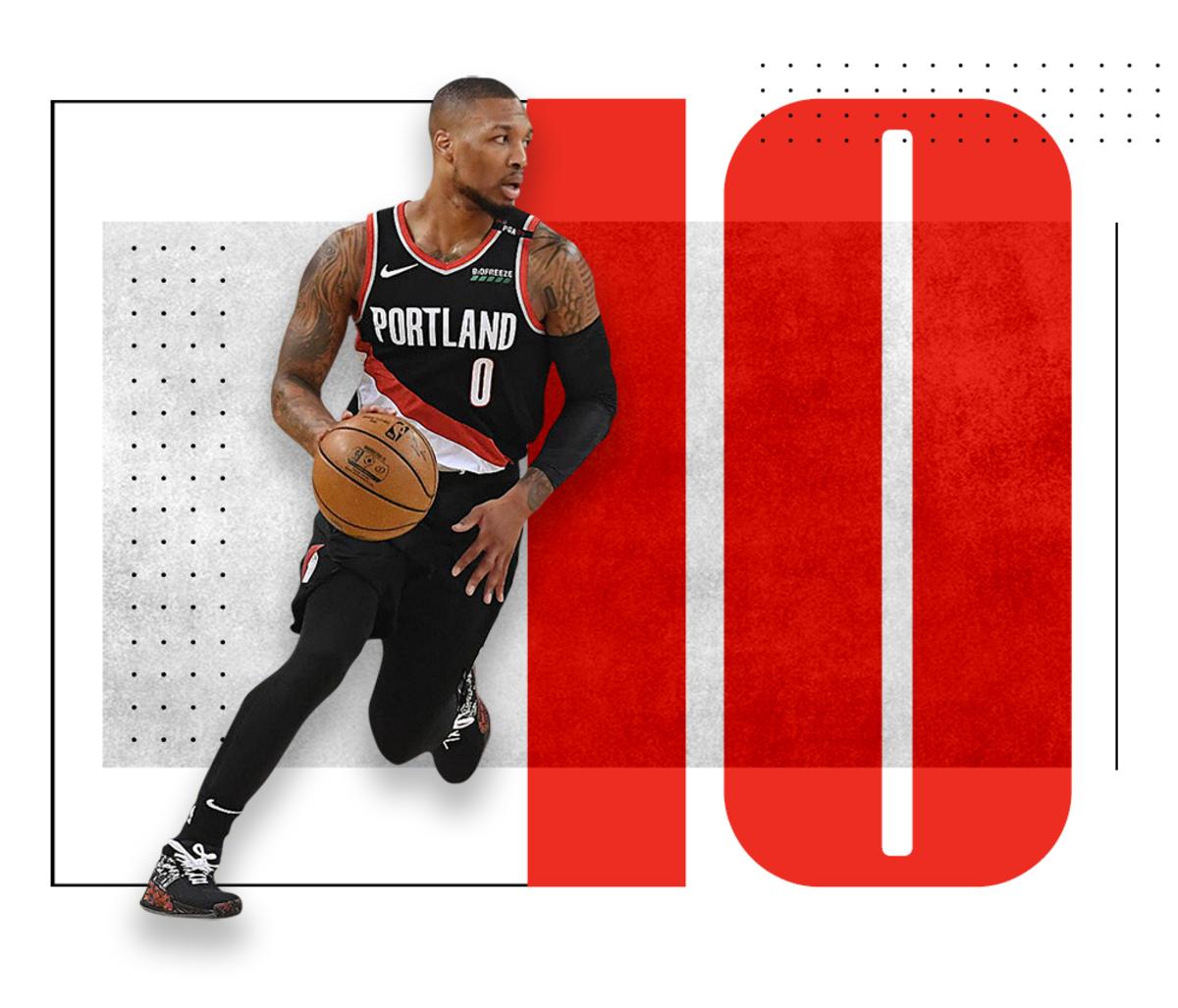
Damian Lillard
Portland Trail Blazers
There is a delicate balance to being both a point guard and a volume scorer, in the sense that the person responsible for running an offense must also choose when to commandeer it. The dynamic is just different for star scorers who bring the ball up and call their own number. If a guard has even an ounce of self-awareness, he’ll begin to wonder if he’s doing too much; if he’s playing the position selfishly; if his teammates feel involved. Many of the best scorers want to move into a headspace where they’re barely thinking at all. Those in charge of initiating sets and doling out shots don’t exactly have that luxury.
Damian Lillard walks that line as well as anyone in the league. When Lillard gets hot, his game burns brightest. There are few propositions more terrifying for a defense than the Blazers guard bounding around a high screen after making a few shots in a row. Only James Harden and Stephen Curry connected on more long three-pointers last season, which pulls defenders up beyond the safety of a team structure. It almost doesn’t matter who guards him at that distance. If Lillard can sidestep and knock down a series-ending 37-footer over Paul George, what hope does anyone else have of stopping him?
Yet the same player who takes those shots and comes up big in crunch time makes it a point to be mindful. It’s impossible to separate Lillard as a player from Lillard as a leader because the two are informed by the same qualities. The fact that Lillard is such a strong advocate for the development of his teammates (Jusuf Nurkić being a prime example) informs the way he navigates a half-court offense. The way that Lillard genuinely welcomes help sets up CJ McCollum to play a more active role in Portland’s operations. It takes incredible skill for Lillard to score as he does, and genius levels of IQ and EQ to fully embrace balance instead. Sometimes you don’t make the pass to the corner for the shot that follows, but as an expression of confidence in the next shot. Sometimes being a great player means embracing the game for its humanity.
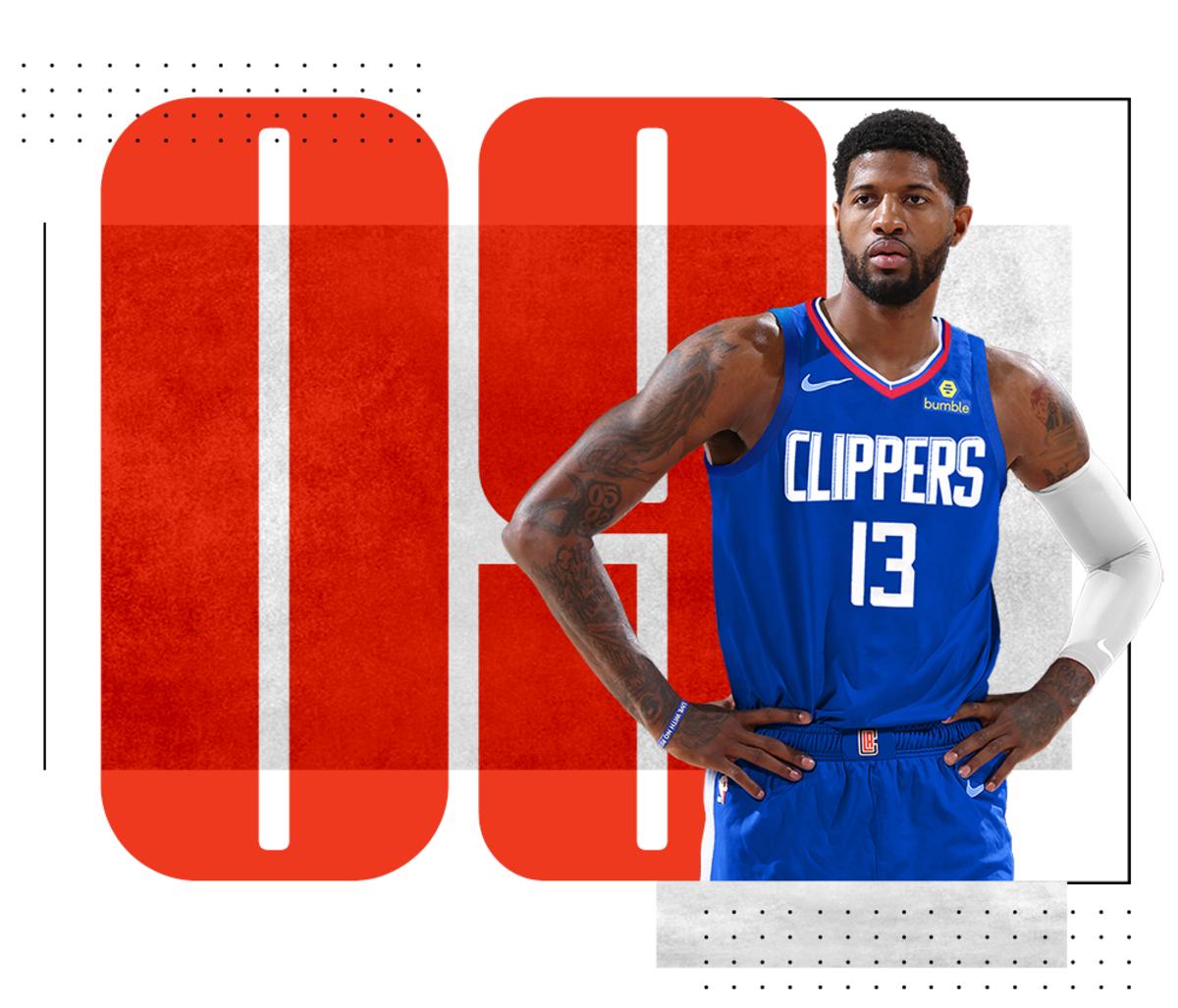
Paul George
Los Angeles Clippers
It says a lot about the health of the league that a player like Paul George, who has no real holes in his game on either side of the ball, could rank as its ninth-best player. This is a first-team, all-league defender who averaged 28 PPG. A go-to stopper who is also, in terms of style and production, the closest working analogue to Kevin Durant. How could a player like that—a player who finished third in MVP voting—rank as low as ninth?
The answer, unfortunately, starts with George undergoing offseason surgery on both a torn labrum in his right shoulder and a torn rotator cuff in his left shoulder. Addressing those injuries should be a long-term positive for George, but this ranking isn’t a long-term exercise. The scope of the Top 100 is solely the 2019-20 season. As of last reporting, George won’t be ready for the start of training camp. It’s possible he won’t be ready for the start of the season. It’s certain that he’ll need time to round back into form. We know going into next season that George isn’t set up to be his best self. Expecting otherwise would require disregarding the magnitude of undergoing multiple offseason shoulder surgeries.
It’s a tribute to George’s game that he ranks in the top 10 regardless, firmly in superstar territory. You can run an offense through George or around him. You can put him on the ball defensively or let him hunt in the passing lanes. Every coach in the world could run their preferred systems and slot in George as a high-impact player. What a luxury. It’s not always easy playing alongside Russell Westbrook, but George jumped at the chance and played the best basketball of his career. Even in doomed playoff series, George was often the best thing the Thunder had going—just as he had been with the Pacers. It helps that, at his core, George is such a dynamic long-range player. Last season, he made 40% of his threes off the catch and 37% of his threes off the dribble—a compelling case that this do-it-all wing quietly doubles as one of the best shooters in the world. A player like that will spoil a team.
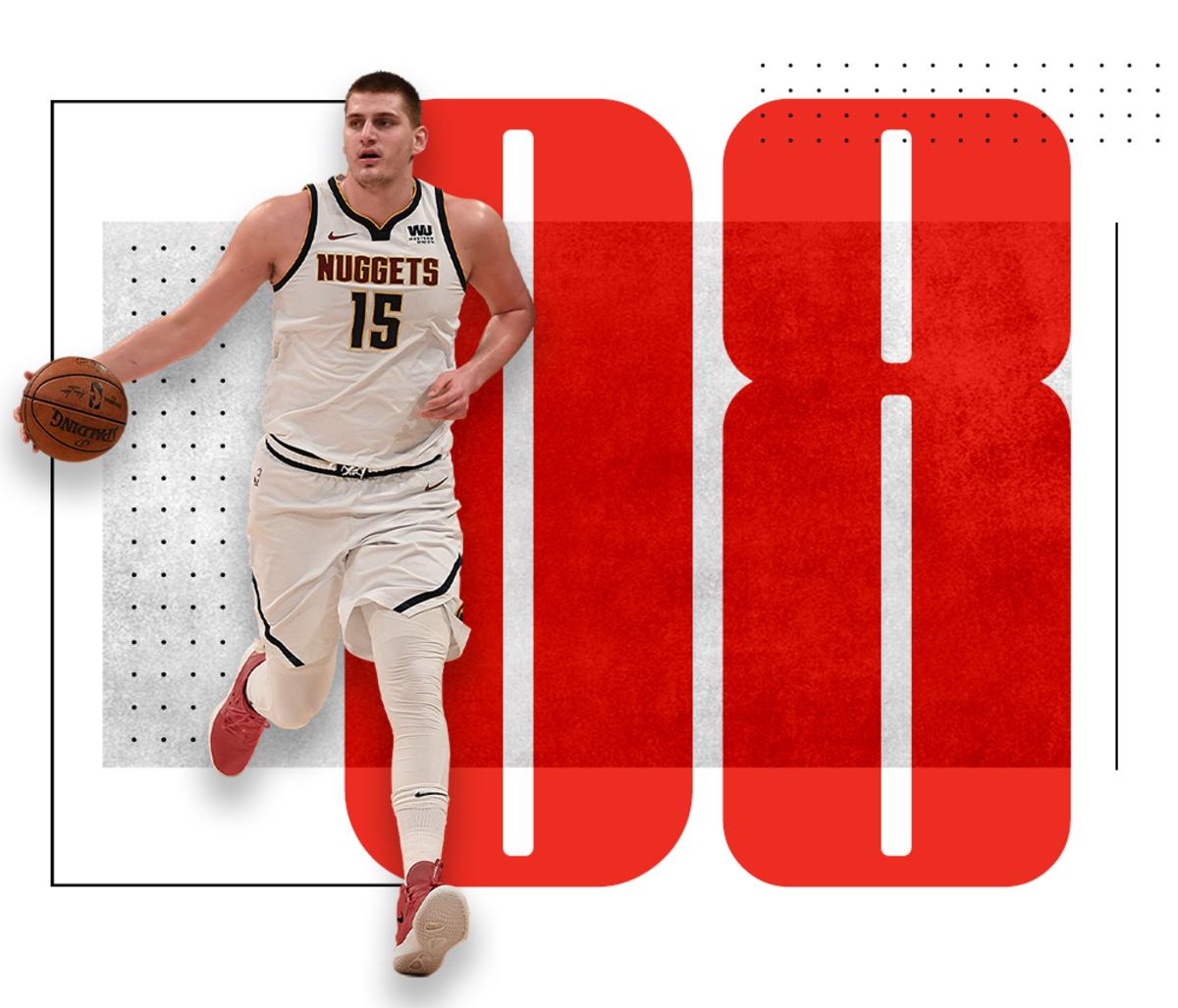
Nikola Jokić
Denver Nuggets
What a relief it is that in his first playoff appearance, Nikola Jokić was kind enough to dismiss the most prominent concerns around his game. Were you concerned about his defense? Denver’s team defense held up through two long series, and rarely was Jokić’s foot speed any kind of significant problem. Did you wonder if he was up for the rigors of postseason play? Jokić logged big minutes, defended hard, and led his team within a shot of the Western Conference finals. Maybe you doubted his style of play would hold up under postseason scrutiny? Jokić could not have refuted the idea more emphatically, as he turned in one of the three best performances (averaging 25.1 PPG, 13 RPG, and 8.4 APG) of any player this postseason.
This is what the real deal looks like. Jokić is effective from the arc, from the elbows, from the post, and everywhere in between. The scope of his game works as a stress test for opposing bigs. Most players are comfortable defending in some spaces and out of their depth in others. A creator like Jokić has the power to drown them in their weaknesses. Then, just when other defenders come to their rescue, Jokić will whip a perfect, cross-court pass to the open man in the weakside corner. Passing like this demands vision beyond vision. Even calling Jokić the best-passing center in NBA history somehow seems unfair to him.
If there is any margin at all between Jokić and Joel Embiid (who ranks just above him on this list), it’s likely bridged by preference. The two giants are similarly focal and similarly efficient. Some teams might prefer a seven-foot playmaker who can dissect a playoff series. Others might lean toward a first-class defender in Embiid, especially when considering the importance of anchoring a defense to the center position, specifically. Jokić would be the safer choice in terms of health and injury history, but Embiid could have the higher two-way ceiling. There’s no fault in either option. Embiid gets the nod here on the balance of the above, along with the pure volume of his scoring over the course of a full season.
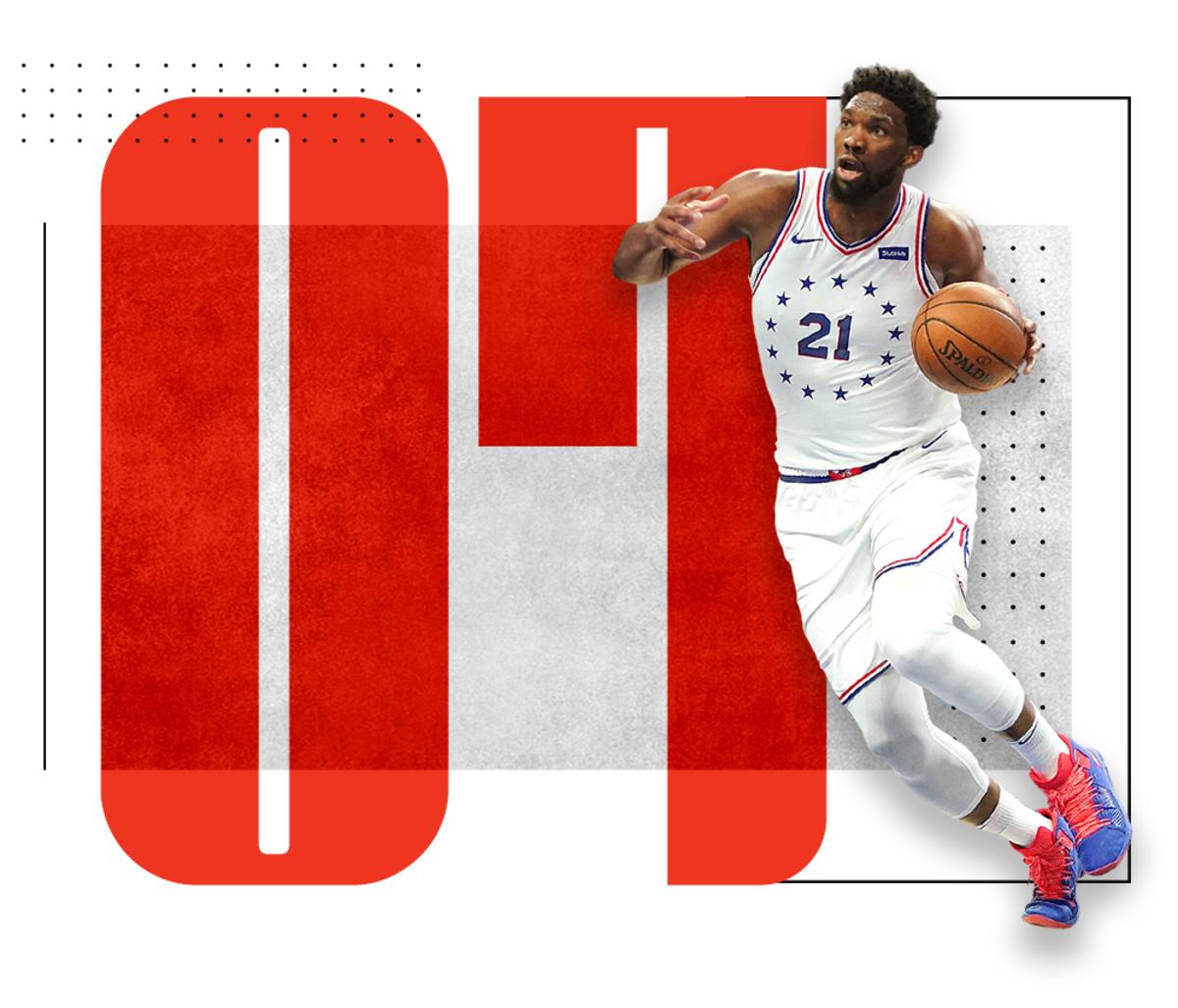
Joel Embiid
Philadelphia 76ers
The very act of putting Joel Embiid on the floor is a strategic advance. Opponents then have two options: they can trot out their biggest, strongest defenders to try to stand in Embiid’s way; or they try to skirt by with small ball, knowing full well that whatever big masquerades as a center will likely be pulverized. It’s a dynamic that openly urges opponents to play what are often lesser lineups. It makes size a primary consideration, because without it, Embiid is just too big and too insistent to let a mismatch slide.
Operating in the post at 7-feet tall means that most defenders will try to overcompensate in some way: they’ll leave their feet, they’ll swipe at the ball, or they’ll bump Embiid back. What makes Embiid such a challenge is that he knows when he’s got you, and will bait out the contact he knows is coming. No player drew more free throws per minute last season than Embiid, and on a macro level, no player had a bigger impact on their team’s free throw rate. All those freebies round out Embiid’s line, subsidizing for his more ambitious attempts. You have to admire his creativity; Embiid is constantly test-driving post moves just to see if he can pull them off, firing up jumpers he probably shouldn’t, and attempting passes that are a bit beyond him. And why wouldn’t he? Embiid went from not playing basketball at all to the No. 3 pick in the draft in a few years, and from the No. 3 pick to one of the most dominant players in the sport a few years later. Basketball has rewarded him at every turn for his ambition. It only makes sense to test the limits of what could be.
At 25, Embiid can already dominate a game, a season, a series. What happens when he takes the next step in his development? When his turnovers come down or his bolder attempts start to fall? What horrors might unfold when he starts to take his fitness seriously? There’s still so many little things that can be cleaned up in Embiid’s game, which means there’s so much room for him to grow into the best possible version of himself. This season should be another step forward.
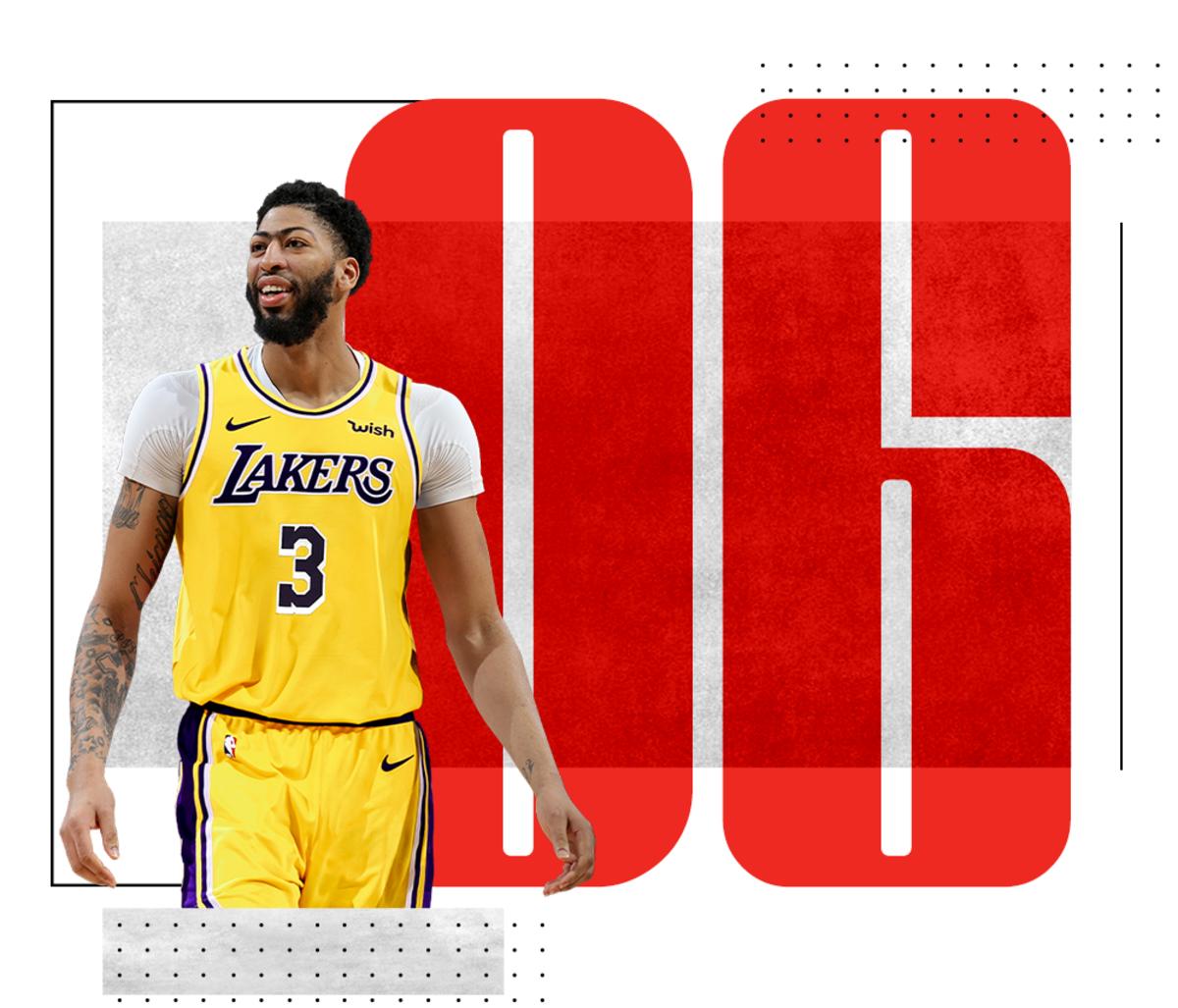
Anthony Davis
Los Angeles Lakers
Anthony Davis got exactly what he wanted, and all he had to do to get it was hold his team hostage. Expressions of player empowerment are essentially expressions of value. If you’re as great a player as Davis, you can wield your power as you see fit and still reach a largely positive outcome. Yet in doing so, he upended the Pelicans’ entire season. Everything New Orleans did from that point was framed around Davis: the telegraphed pressure to trade him by the deadline and the Pelicans’ decision not to; New Orleans attempts to sit Davis and the league mandating his participation; the Pelicans’ attempts to move on and the cloud Davis cast over the entire franchise. Part of understanding the value of a player like Davis comes from grasping, fully, the damage he’s done.
It would be difficult for any player that destructive to crack the top five. But it’s also tough to move Davis any lower than sixth, seeing as he remains one of the most talented two-way players alive. It’s not inconceivable that Davis could be both the league’s best defensive player and best offensive player in a given year, if everything broke just right. Working at that high a level on both sides of the ball is worthy of a different kind of consideration, and perhaps even different allowances. The range of what the right team could do with Davis is dizzying. There just aren’t many limits when the best pick-and-roll big in basketball also might be the best face-up big, the best transition big, and maybe even the best mid-range-shooting big.
Yet because of the position he plays, Davis is bound in certain respects to the quality of his teammates. It could be his greatest limitation. If Davis doesn’t play with the right kind of playmakers, it becomes slightly more difficult for him to access the best parts of his game consistently. You can force feed Davis if you have to, but it might not go quite as well as it would with the players ranked above him. This is at least part of the reason why Davis has played for just two winning teams in seven years. It wasn’t Davis who sunk the team in six of those seasons, but he also wasn’t quite equipped to take them over the top. He’s closer now than he’s ever been—assuming, of course, that he’s on a team he actually wants to be a part of.
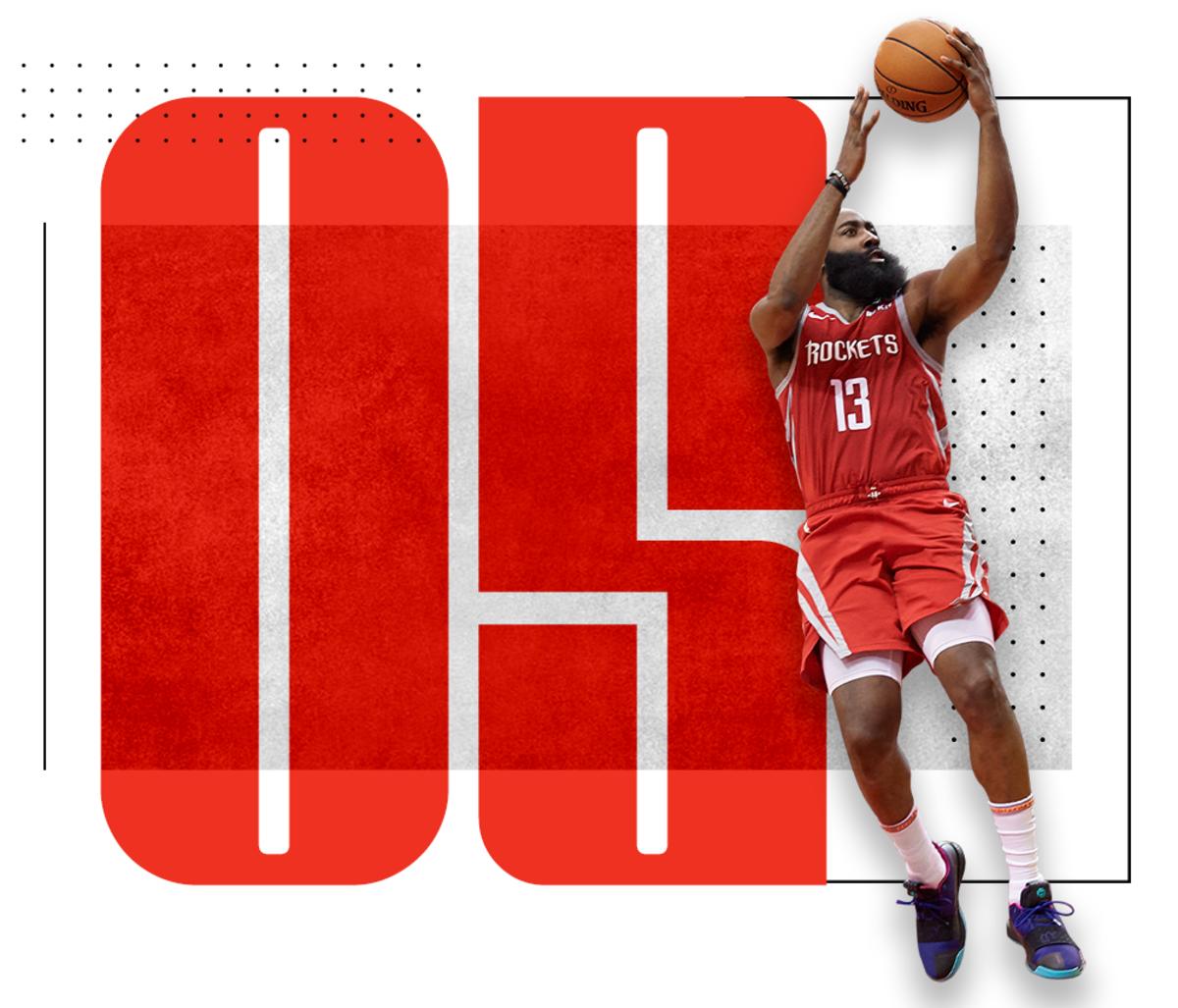
James Harden
Houston Rockets
To carry a league-high usage rate while playing the second-most minutes in the league is a preposterous kind of workload. James Harden shouldered it impossibly well, producing (36.1 PPG, 7.5 APG, 6.6 RPG) in a way that no other player in the league could. Capacity is its own kind of skill. Only certain skill sets can scale up effectively, and only one like Harden’s could function at this ridiculous extreme.
No player on this list could do more for an offense with less help. Where players like Giannis Antetokounmpo rely on the spacing created by others, Harden makes his own with a game-breaking step-back. Through that, Harden took more threes off the dribble last season than the next two highest-volume shooters combined, and hit an impressive 36% of those highly difficult shots. Where even Stephen Curry and LeBron James lean on their bigs as pick-and-roll partners, Harden can always fall back on the fact that he is literally the most dominant isolation player in the world. Basketball is a game of all sorts of complicated codependencies. Harden can choose to participate in them (as in a pick-and-roll with Clint Capela), but he doesn’t have to. Staring down a defender in a one-on-one situation at the top of the floor has become, in this specific instance, a perfectly viable system.
Yet every system has its complications. Playing alongside Harden is technically quite easy but mentally a bit challenging. All you have to do as a role player is defend hard, crash the glass, and knock down the shots Harden creates. But all you get to do as a role player is defend hard, crash the glass, and knock down the shots Harden creates. Some players (like P.J. Tucker) are suited brilliantly for this. Others have fallen to passivity or grated under the framework. There will always be limits to what one player can do in those five. When a game starts to slip away, it can be hard not to dwell on those limits. It’s an odd dynamic. Harden can create an incredible amount of offense for his teammates, though in doing so, he deprives them of a certain authorship. So long as you’re contending—and Harden alone gets you close—maybe it doesn’t matter.
But all this comes into play when evaluating Harden against Stephen Curry, specifically. It’s a matter of usage vs. ubiquity. Running an offense through Harden means allowing him to dominate the ball. Running an offense through Curry, on the other hand, means playing in the space he provides. Every second that Curry is on the floor, he is exacting a toll on the defense. That gives him a slightly wider sphere of influence than even Harden, and a game perfectly suited to playing alongside other superstars. In a league where aligning multiple star players is the clearest way to a title, having a game that allows for that kind of accommodation can mean everything.
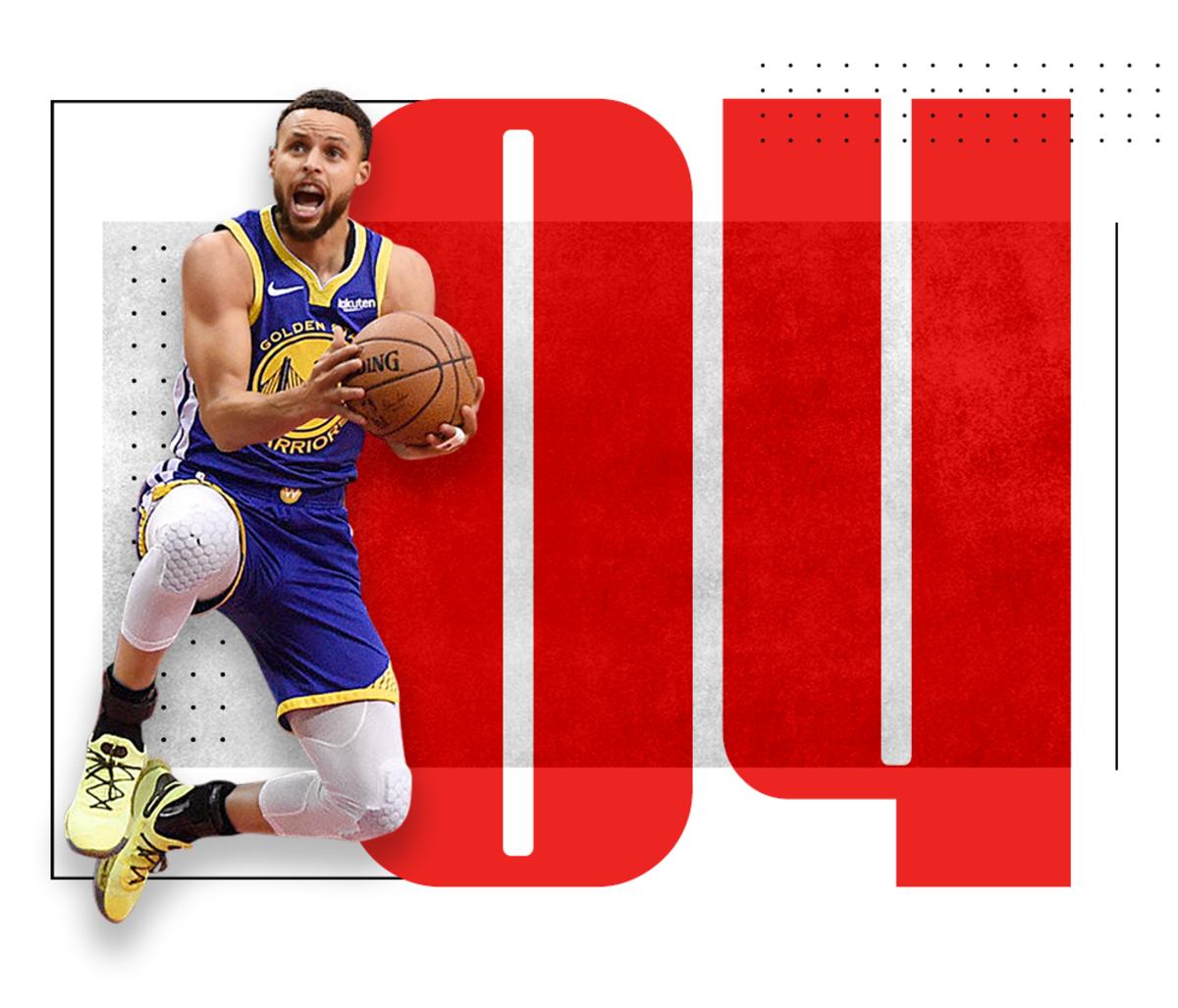
Stephen Curry
Golden State Warriors
Everything about Stephen Curry is suited for collaboration. The mere thought of his shooting—and its effect on a defense—allows him to dominate a game without dominating the ball. All the better for a co–star to get their touches, and to have the most efficient seasons of their career. Curry genuinely seems to welcome the help. There’s no jockeying for control of the team; the strangest thing about Curry is how unimposing he seems, considering the height of his fame and the extent of his accomplishments. A champion and two-time MVP flew out to the Hamptons to tell Kevin Durant in person that he wanted to play together. Then, when Durant left the Warriors three years later, Curry flew to New York and wished him well.
This isn’t just narrative fluff. Curry is the perfect superstar for the superteam era—a great player accommodating of other great players. In some sense, that’s the whole ballgame. If a superstar can’t (or won’t) play well with others, they cost their team opportunities to contend. Someone like Curry, on the other hand, expands what could be possible. It’s because of him that the Warriors could daydream about replacing Harrison Barnes with a future Hall of Famer, and then go out and do it. And then, when that future Hall of Famer exits a playoff series with a major injury, Curry can turn in an all-time gut-check performance to win a competitive series before giving his team an honest shot at the title.
The postseason served as a reminder that Curry, who averaged 27.3 PPG and 5.2 APG during the regular season, still had the capacity to do more. A role like James Harden’s might grind Curry to dust. Something a bit more oblique, however, would allow Curry to weave around the floor in a fashion that’s even more difficult to counter. That can’t be measured in his production alone; when Curry was on the floor last season, the Warriors—a team with another MVP and two other stars, not to mention Andre Iguodala and DeMarcus Cousins—raised their combined effective field goal percentage by 5.6%. Harden, while incredible and irreplaceable in his own right, produced an effect only half as potent (+2.8%). Most every quantitative measure that attempts to capture the effect a player has on an offense would suggest that Curry is one of the most powerful forces in the league.
It’s all an exponent of how Curry himself scores. Only on six other occasions has an NBA player approximated the levels of usage (30.4%) and efficiency (64.1% true shooting) that Curry balanced last season. Two of them were peak LeBron James. One is the player at the top of this list. Of the other three, two more belong to Curry, and the last to Kevin Durant while playing with Curry. When two defenders both jump out to Curry as he clears an off-ball screen, it might seem like an overreaction. But maybe they’re just reacting properly to the thought of leaving a game-breaking shooter alone at the arc, even for a moment.
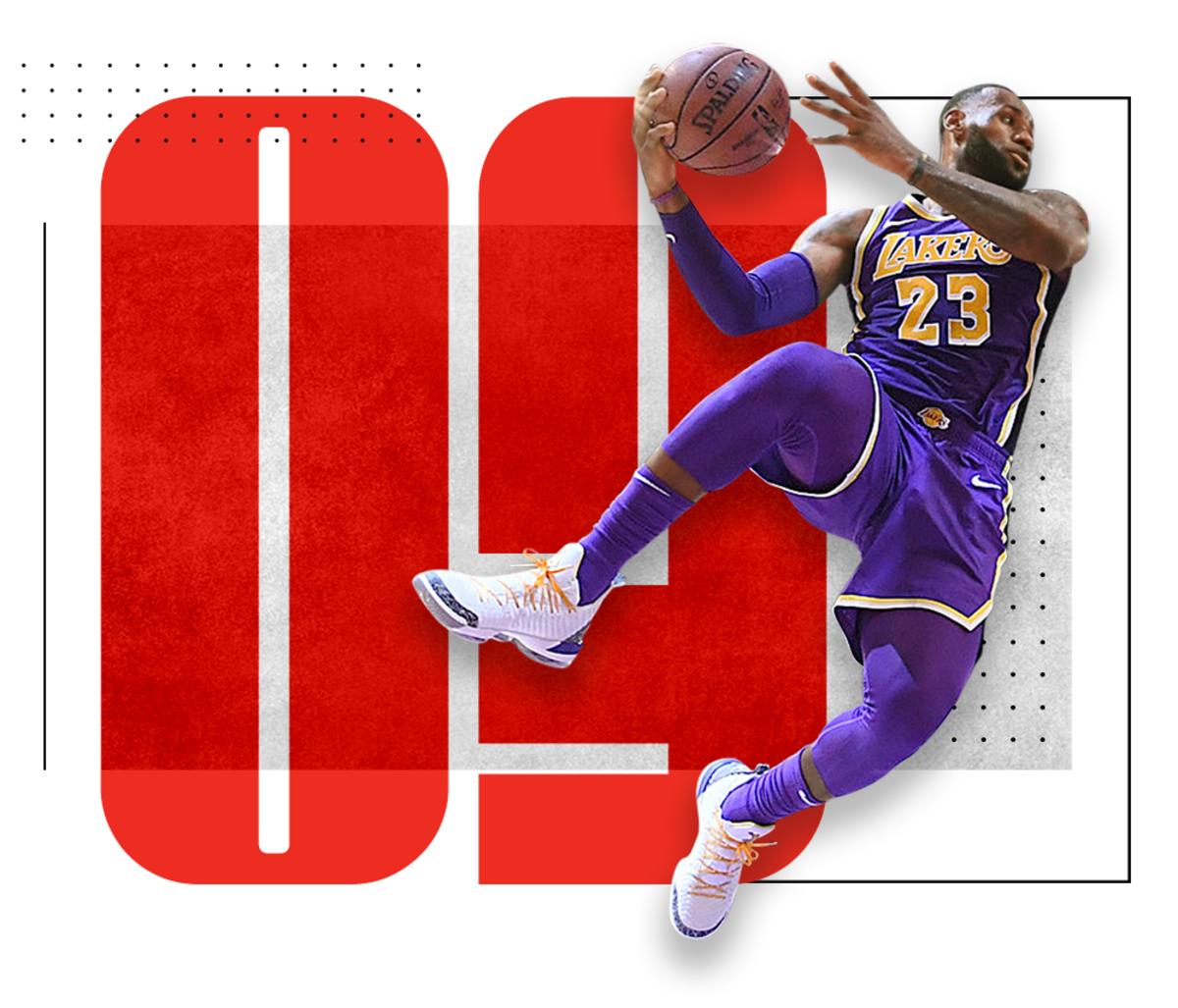
LeBron James
Los Angeles Lakers
Budging LeBron James from the top of this ranking—a spot he has occupied since the inception of SI’s Top 100 in 2013—required a confluence of factors. One of them is the unprecedented sum of minutes James has accrued in regular season, playoff, and international basketball, and the toll that takes on the 34-year-old’s body. Another is the rise of a new class of stars, led by Giannis Antetokounmpo. There’s also a penalty in the fact that James disregarded one side of the ball for the bulk of last season. And somewhere in all of this, we have to account for the reality that James played at least some role in the dissolution of his team and the alienation of the people who were his teammates.
Even while grappling with all of that, it’s hard to refute the idea that LeBron is still the best player alive when the games really matter. In a complex matchup, there’s no one you’d trust more than James to tease out a winning strategy. If the season came down to it, no one player could do more to turn the outcome of a game. If only it could all be so simple. How LeBron plays at the highest levels of competition is a vital part of his evaluation. It just can’t be the only part. All the pieces matter. The lack of defensive effort, the half-speed regular season, the collateral damage. The complete picture of LeBron’s season reiterated the costs that come with running a franchise around him, at a time when his game wasn’t paying off in the holistic way we’ve come to expect.
Which isn’t to say that James isn’t a great player, or won’t be this season. Two others are simply in a position to offer more in the final calculus—or, at the very least, to offer something comparable with fewer complications. What gave LeBron claim to the top spot for so long was his completely unimpeachable case; it was all there, from production, impact, and efficiency all the way to health, leadership, and postseason success. Most of that case remains perfectly intact, though it’s begun to show some vulnerabilities. This was inevitable...right? James had defied the laws of nature for long enough to put himself in an exceptional category, but at some point he would have to pace himself even more carefully and need a bit more help than he did previously. At almost 35 years old, it doesn’t make sense for James to try to be the best player in the world every night. Perhaps it’s time we accept that he isn’t.
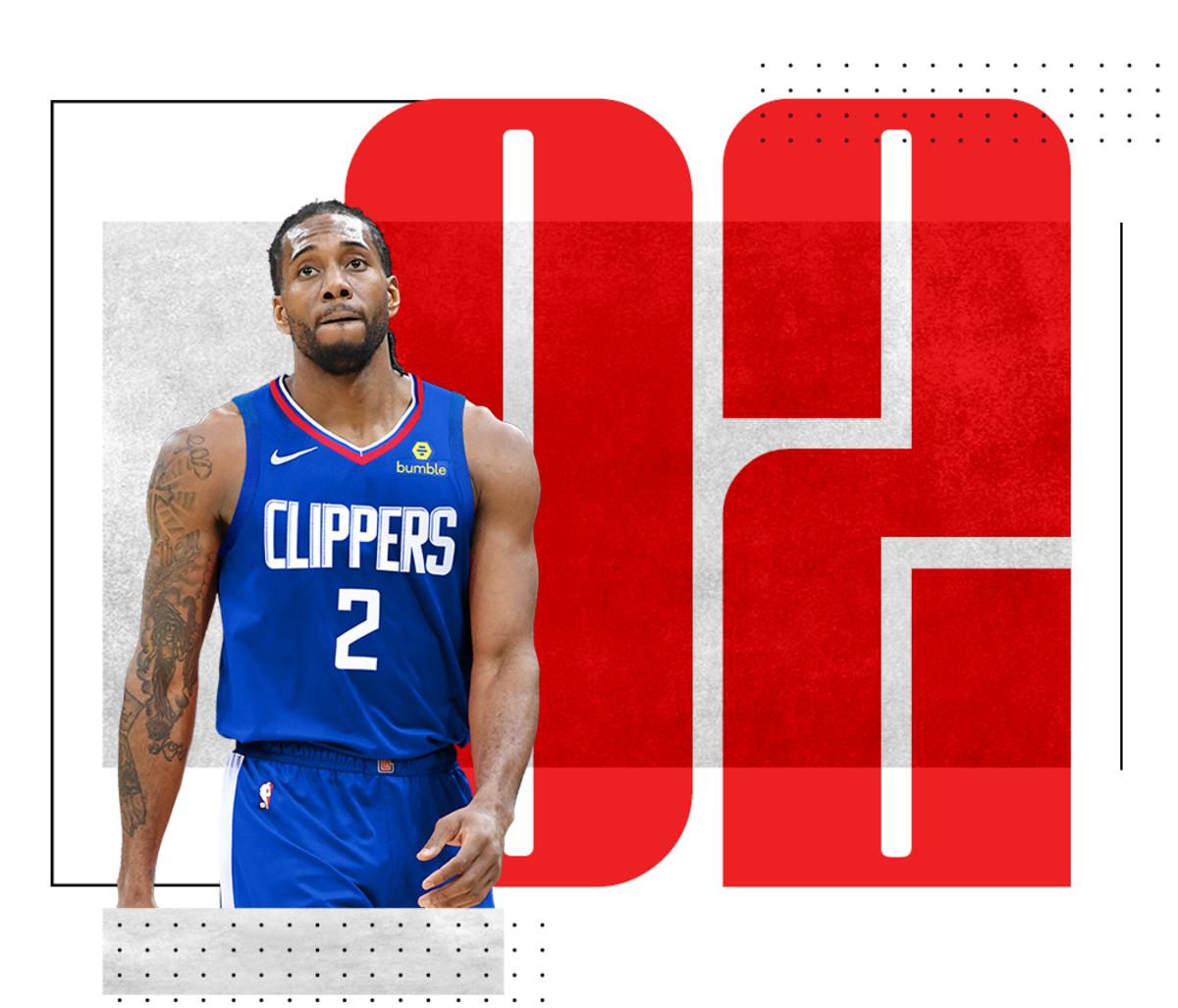
Kawhi Leonard
Los Angeles Clippers
Even after an all-time playoff run, a championship win over the Warriors, and a Finals MVP, the conversation around Kawhi Leonard still comes back to load management. The fundamental question is this: Can a player really be the best in the league if he elects to miss a quarter of his team’s regular-season games? It was smart for Leonard to be proactive given his injury and circumstances. But what worked for the Raptors might not work for many other teams; not every roster is equipped to handle its best player bouncing in and out of the lineup, much less for that same player to miss significant time in the aggregate. If this is going to be the way Leonard operates for the foreseeable future, it would at the very least complicate his case as the game’s best player.
But can we even assume that Leonard will maintain the same approach? When he was first introduced as a Clipper, Leonard was asked about his intentions for controlling his workload in the coming season. He clarified then that his maintenance will be more of a “day-to-day” determination going forward, as opposed to the prescheduled rest he took last year. “The goal right now is to play the season,” he said. “So we'll see what happens.”
It would be perfectly fair to take Leonard at face value. It probably makes more sense to wait and see; the process that got Leonard through the 2018-19 season was validated in every way possible, and the incentives to protect himself and his career haven’t really changed. Maybe he really will try to play the full season. Or maybe Leonard will find, in that day-to-day flow, just as many occasions to rest his body. This ranking is not a judgment but an acknowledgement. Leonard is an amazing two-way player, great in the very ways that the playoffs demand. This ranking, however, values a totality of work. It’s reassuring to have Leonard on your team to close out a series. It just means something different to have Giannis Antetokounmpo maxing out every possession of every game.
There’s still a strong case for Leonard as best in class. His game lends itself to pretty much any playing style, in part because it’s so lean and brutally effective. It’s not enough to guard Leonard with a great wing defender. That defender has to be strong enough not to get walloped, and long enough to make any contest at all. Otherwise, Leonard is tenacious enough to drive wherever he wants. There are star defenders with a broader impact (the number one player on this list among them), but none capable of making one opponent so deeply uncomfortable. The track record speaks for itself. On the way to his latest title, Leonard went up against Joel Embiid, Giannis Antetokounmpo, and Stephen Curry, outlasting them all.
So think of this ranking as a hedge. Against a fairly extensive injury history; against the probability of load management; against his opacity, and the questions it stirs within a team. But mostly, consider it a hedge against the fact that the concerns surrounding Leonard don’t really apply to our top player at all.
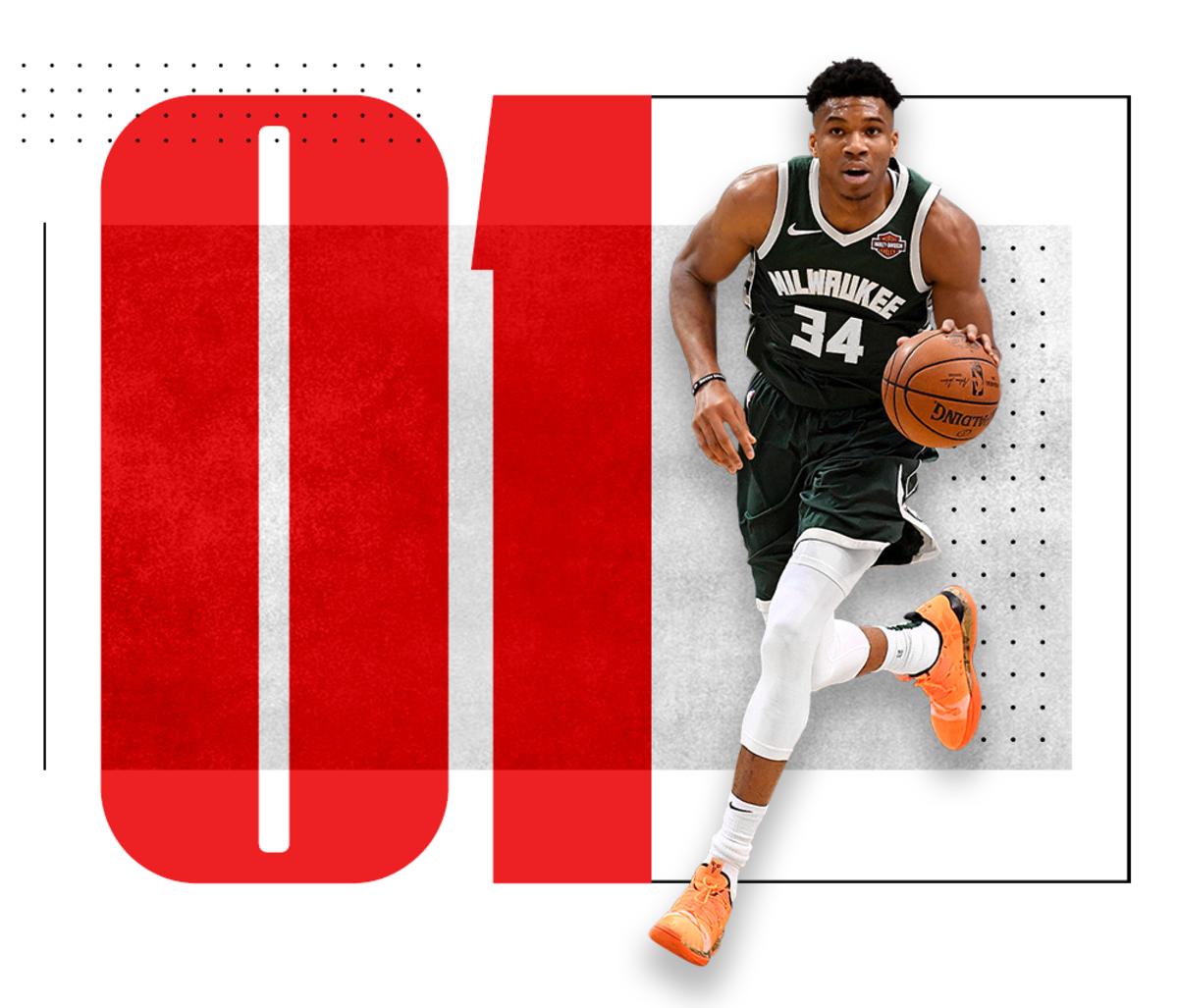
Giannis Antetokounmpo
Milwaukee Bucks
No star player invests more into every possession than Giannis Antetokounmpo, which goes a long way for an unreasonably athletic 7-footer with real ingenuity. His give-a-shit quotient is just off the charts. It’s what makes him the game’s most dangerous transition threat and, by extension, one of its most powerful defensive rebounders; there’s just no consistent answer for a player who can pull down a board over an opposing center, outrace most of the opposing team down the floor, and dunk off a stride from just inside the three-point line. If there’s a form of defense to wall off the basket, Antetokounmpo has seen it. Most of the time he just muscles through it, eurosteps around it, or if he’s feeling particularly feisty, dunks all over it.
There’s really nothing like a consistent engine for interior offense. By force of will, Antetokounmpo made 567 shots at the rim last season, which was not only the highest mark in the league but the highest mark by over 100 makes. Putting the ball in his hands is one of the clearest paths to an easy shot. Antetokounmpo doesn’t yet have a jumper he can trust, but because he can handle the ball and read the floor, he can captain one of the most prolific three-point-shooting offenses anyway. Just by playing within himself, Giannis directly created 3.4 threes per game. He just happened to create them for other people.
The conversation around shooting is so often oversimplified. Antetokounmpo would be that much more difficult to guard if he could score from range, but the magnitude of his driving game makes him overwhelming regardless. Under his leadership, the Bucks ranked second in effective field goal percentage during the regular season and third in the playoffs. Giannis himself averaged 27.7 PPG in the regular season and 25.5 PPG in the playoffs, both to sterling efficiency. What more could you really want? I ask in part because you may get it; there’s not a question as to whether Antetokounmpo will get better but how. Most of the other top players in the game are relatively finished products. Antetokounmpo is a 24-year-old MVP still learning to puzzle out the action in real time. Every instance in which you can see him thinking through a possession is a terrifying hint that this can all get faster and cleaner and better.
What a thought. Antetokounmpo is already coming off of career bests in scoring, rebounds (12.5 per game), assist (5.9), and true shooting (64.4%). A worker of his resolve won’t go a whole year without finding some new edge, and when you’re operating at this level, every advantage compounds. Adding one more counter makes every other move stronger. Picking up on the opposing team’s action more quickly makes the best defensive player in basketball seem even faster. Antetokounmpo already has so many points of entry to a given possession on both sides of the ball. To an offense, he’s a first-class initiator, roll man, cutter, and second-chance opportunist. To a defense, he can guard expertly in space, in help, in switches, or in the most dangerous matchups, before sealing every stop with a rebound. There are so many ways that Antetokounmpo can change the course of a game, and thus so many areas for marginal improvement to become meaningful.
This is the future. This is Giannis’s world.
